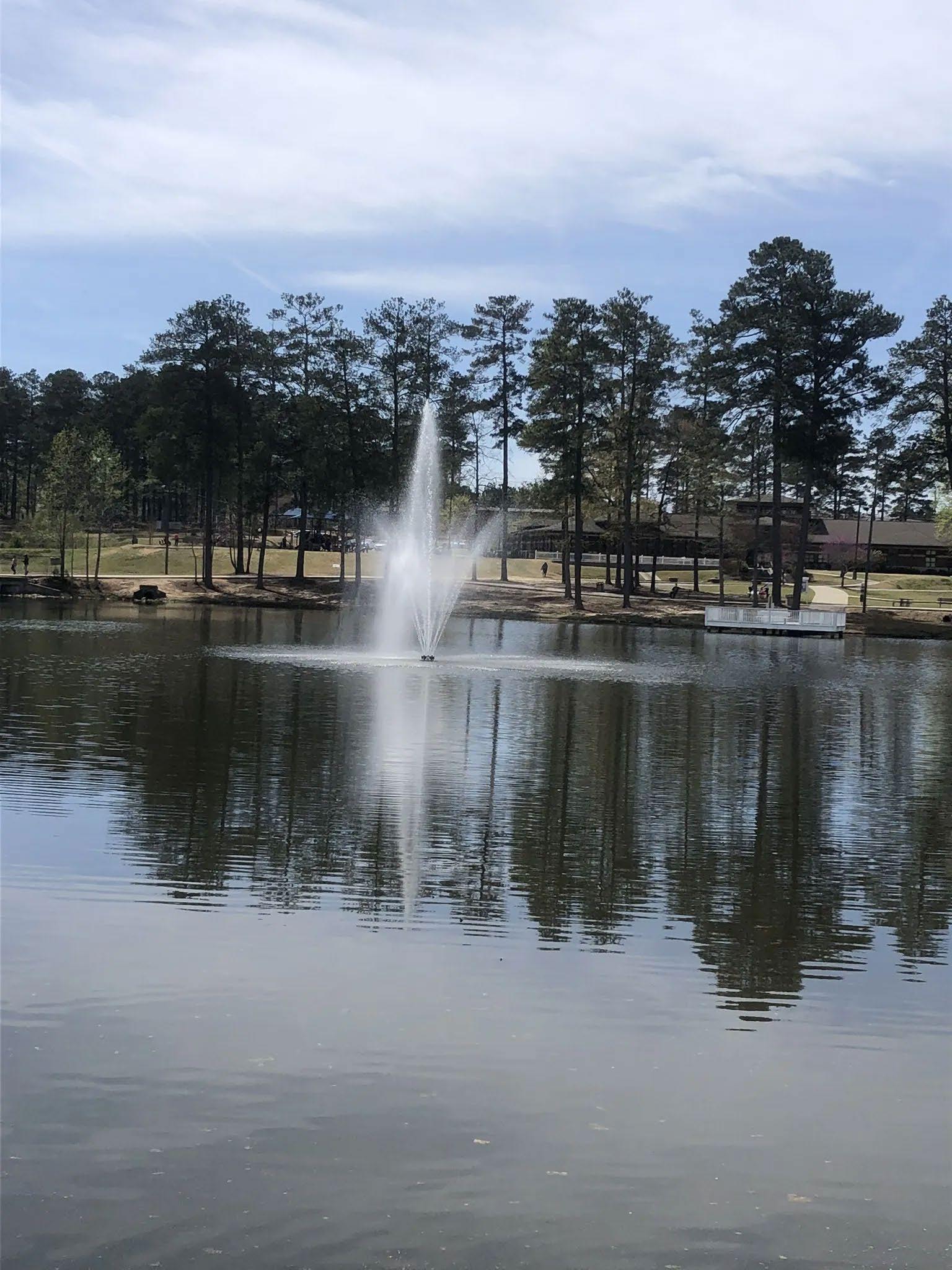

2025 - 2035
City of Douglasville
PARKS AND RECREATION MASTER PLAN
Prepared by: Lose Design
THIS PAGE INTENTIONALLY LEFT BLANK

Special ACKNOWLEDGEMENTS

City of Douglasville Mayor and City Council
Rochelle Robinson, Mayor
Terry S. Miller, Mayor Pro-Tem, Ward 1
Nycole N. Miller, Ward 2, Post 1
Elena Hudson, Ward 2, Post 2
Dr. LaShun Burr Danley, Ward 3, Post 1
Sam Davis, Ward 3, Post 2
Chris “Coach” Watts Ward 4
Howard Estes Ward 5
Marcia Hampton, City Manager
City of Douglasville Parks and Recreation
Lose would like to acknowledge Parks and Recreation Director Chris Bass, Assistant Director Shajra Thrasher, Assistant Director John Penn, Recreation Program Manager Dantez Bennamon, Park Maintenance Manager Andy Acker, Golf Pro Chris Cartwright and the Douglasville Parks and Recreation Department staff for their participation in this plan.
Special THANKS
Lose Design would like to thank all the elected officials, staff, and citizens who participated in the development of this master plan. Through your commitment and dedication to parks and recreation, the planning team was able to develop this plan to guide the delivery of recreation services to the citizens of Douglasville.
cover photo: Hunter Memorial Park Lake by Kelly Cole


Executive Summary
INTRODUCTION
The purpose of this master plan is to evaluate the City of Douglasville Parks and Recreation Department and submit recommendations designed to improve and enhance the level of service across the community. The City of Douglasville Parks and Recreation Department provides their community with quality programs, events, parks and facilities with park & recreation staff who are committed to serving the whole community.
The City completed and implemented approximately 90% of the recommendations from the 2018 Master Plan. The level of commitment and dedication from elected officials and staff to implement a majority of that plan to date is highly commendable and has elevated this department to a 2024 National Gold Medal Winning Department due to the increased level of service. As with the 2018 plan, this master plan provides recommendations regarding parks and recreation facilities, operations, programming and administration in the community from present to 2035
This document serves elected and appointed officials and City staff as both a strategic plan and an action plan. The plan provides the City of Douglasville with guidelines and strategies for future program and activity expansion efforts and planning of major capital improvement projects. The plan also serves City residents as a benchmark of current recreational offerings and future recreational goals to be implemented over the next 10 years.

COMMUNITY PROFILE
The City of Douglasville, Georgia, the largest city in Douglas County, is located 20 miles west of Atlanta, Georgia. Located in the north-central portion of the city, Interstate 20 passes south of downtown leading east. The total city population is rapidly increasing making Douglasville the 26th fastest growing city in the state of Georgia. The highest density population centers are generally located in the northern portions of the community.
The City's largest age segment is 35-54, representing 30% of the community. City of Douglasville percentage of households with children is higher than rates for the State of Georgia and the United States. The city’s median household income has increased by 53% since 2010, marginally higher than the state average, and 3% lower than the national average. Both the city's median household income and median value of owner-occupied housing is higher than the state average and slightly lower than the national average. Rates for persons below poverty level (11%) are within 1% of both state and national averages. Owner-occupied housing rates are lower at 49% vs. 65% respectively. The composite assessment of these community elements helped to inform the recommendations for this master plan.
PUBLIC ENGAGEMENT
The City of Douglasville Parks and Recreation Master Plan involved several information-gathering approaches to develop recommendations and plan implementation. These processes incorporated Research, Community Engagement, Needs Assessment, Data and Best Practice Analysis and National Benchmarking. The purpose is to assess existing facilities and services and guide the city toward a comprehensive plan to meet the desired recreational needs of Douglasville residents.
The public engagement effort revealed broad support for the City of Douglasville Parks and Recreation Department including improvement of existing park facilities, and the addition of new program offerings and new facilities. There is some level of support for dedicated funding for these improvements. Identified facility priorities for the community indicated the need for an indoor aquatic facility to support family/leisure swim, trails/greenways, outdoor water park and splash pad, driving range, outdoor skating rink, playgrounds (various ages and abilities), indoor walking track, track and field, open green space, gymnastics and a performing arts center. Programming to support swim lessons and water fitness, performing arts, visual arts, adult athletic leagues, senior fitness, run/walk groups and special events/festivals were identified as priorities as well as additional programming for all ages. The community identified the need for and supports improvements to existing parks and facilities as well as additional parks in the Arbor Station and Tributary service gap areas to support additional recreational opportunities for the community.
FACILITY ASSESSMENT AND SERVICE ANALYSIS
Individual assessments of existing facilities were also performed to gauge their age and function. While most of the department's facilities remain functional, specific components such as surfacing, site furnishings, additional parking, and the renovation of interior areas of the community centers to support ADA, program expansion and additional users are necessary. Reviewers noted a lack of consistent maintenance practices throughout the department. ADA renovations and life safety upgrades are needed throughout the system.
The majority of Douglasville Parks and Recreation facilities are located within 2 miles of the downtown area with the exception of Fowler Field, located 3.3 miles southeast. Because the majority of park facilities are centrally located within close proximity of the downtown area, service gap areas to the south, southwest and east of the city exist. As a result, it is important for the city to look at new facilities to fill those gaps. Using national benchmarks for recreation agencies of a comparable size, an analysis of the specific types of facilities was also performed to determine any surpluses or deficits. While significant deficits were identified using only city facilities, addressing facility deficiencies should be weighed against the specific needs of the community. Using this information, the planning team developed recommendations for both expansions to existing city parks and the development of new city facilities to address deficiencies for the Department's service gap areas and facility deficits.
Specific examples of such recommendations include the development of mini parks, 3 neighborhood parks, 1 community park, and 1 special use park and an Indoor Aquatic Center.
STAFFING ASSESSMENT
Additional Staffing recommendations are based on the Operations Assessment and the new facilities opening at Jesse Davis Park along with an opportunity to expand programming to all ages. This creates a shift in operations to not only streamline department operations, but to align staff into categories to better support the programs and events, both existing and future, and care for the facilities. The list of initial recommendations for the Tier 1 phase includes new and reclassified strategic positions to grow the team to meet the current needs of the department. Additional tiers and positions are recommended as the use and reinvestment of existing facilities change and/or expand and investment in new facilities are brought online. Total department staff will grow from 70 full-time equivalent positions (FTE) to 113.5 full-time equivalent positions (FTE) over the next 10 years.
Existing Staff Reclassifications:
• Reclassify Marketing & Event Coordinator to Marketing Coordinator
• Reclassify Operations Coordinator to Administrative Operations Coordinator
• Reclassify Rec Assistant (Front Desk) to Service Assistant
• Reclassify Parks Division to Parks and Facilities Division with Added Facilities Section
• Reclassify Rec Assistant (Facility Support) to Facilities Assistant
• Reclassify Rec Assistant (Athletic Support) to Athletic Assistant
• Reclassify Rec Assistant (Front Desk Support) to Service Assistant
• Decrease Rec Assistant Positions - PT by three staff
• Transfer Customer Specialist Position to Operations Division
• Reclassify Maintenance Supervisor to Facilities Supervisor
• Reclassify Park Maintenance Workers 2 & 3 (West Pines) to Golf Course Maintenance Workers 2 & 3
• Reclassify Park Maintenance Worker 1 to Facilities Maintenance Worker 1 (various locations)
Tier 1
• 6 FT Parks Maintenance Worker 1
• 7 PT Parks Maintenance Worker 1
• 1 FT Turf Specialist
• 1 FT Therapeutic Recreation Supervisor
• 2 PT Athletics Coordinator
• 1 PT Athletic Assistant
• 1 PT Youth Specialist
Tier 2
• 1 FT Parks Irrigation/Chemical Tech
• 1 FT Equipment Operator/Maintenance/Construction (Jesse Davis)
• 1 FT Parks Maintenance Worker 1
• 5 PT Parks Maintenance Worker 1
• 1 PT Therapeutic Recreation Specialist
• 1 FT Aquatics Supervisor
• 1 FT Aquatics Maintenance Technician
• 1 PT Aquatics Pool Manager
• 2 PT Aquatics Assistant Pool Manager
• 1 PT Aquatics Pool Operations Coordinator
• 21 PT Lifeguards
Tier 3
• 1 FT Indoor Aquatic Center Coordinator
• 4 PT Indoor Aquatic Center Operations/Programs/Lessons
• 5 PT Aquatic Service Desk
• 10 PT Lifeguards
• 1 FT Aquatics/Facility Maintenance
FUTURE FACILITY STAFFING
With the addition of an Indoor Aquatic Center, future staffing is considered separately. The new natatorium is placed in a Future Category in the Strategic and Capital Plans outside of the Tiers to allow for flexibility for Future Development and Operational Funds. City staff and officials could aim to bring this facility online sooner than later, especially as the community and the demand for an Indoor Aquatic Facility, programs and services continues to grow.
PROGRAMMING REVIEW
Currently, DPRD has the ability with the hiring of additional staff to prioritize new programs and services to meet the communities needs and desires for programs outside of athletics. While there can be some programming limitations due to space limitations, the utilization of and reinvestment in existing facilities will create new spaces for the implementation of general and therapeutic programs in a wide array of categories for ages 18 months to 100 years and beyond. Investment in new facilities will further enhance programming opportunities that are in high demand such as aquatics.
The addition of marketing staff and a marketing plan will create a foundation for success for all the programs and services DPRD will be offering in the near future. Information is powerful and creates enthusiasm through transparency and understanding. The marketing plan will ensure expansion of program usage, increased revenues, and lead to a healthier, more active community as it continues to grow.

BUDGET AND FUNDING ANALYSIS

Douglasville Parks and Recreation Department is well-funded with opportunity for operational expansion and shifts as the department continues to move forward with the new Jesse Davis Park facilities ready to open. Douglasville spends 17% less on operating expenses than typical park and recreation agencies and 48% more than communities with the same population base. When examining our comparison of the three benchmark communities to Douglasville, it was clear that DPRD expends an average of 20% less operationally. DPRD Annual Operating Expenditures are 20% less than the average of comparison cities and 17% lower than typical agencies. With future growth in mind and new programs developed internally, Douglasville has a strong foundation to be able to move forward with the continued success it experiences today.
CAPITAL IMPROVEMENT PLAN
A 10-year capital improvement plan serves as a guiding document for department staff and elected officials to strategically implement the recommended improvements in this plan. A tiered prioritization schedule was developed to identify immediate needs and long-terms goals. Immediate needs identified in Tier 1 (0-2 years) include addressing deferred maintenance issues for existing parks and facilities, low-impact expansions to existing parks, and planning efforts for larger projects in subsequent years. These Tier 1 recommendations also include renovations to address ADA, security/ safety and maintenance issues in the parks that will provide an immediate improvement to the overall quality and enjoyment of these facilities.
The total value of the recommendations in this plan is $64,050,000.00 over the next ten years. Tier 1 projects have a total value of $31,650,000.00.
A SUMMARY LIST OF TIER 1 PROJECT IS AS FOLLOWS:
• Americans with Disabilities Act - address ADA concerns at all parks. Installation of ramps, ADA access to all portions of parks, as well as providing renovations to existing ADA amenities.
• Fowler Field - add LED Lighting to fields, renovate concessions/restroom building, regrade/raise level of fields, add safety fencing
• Hunter Memorial Park Amenities - Repair and replace asphalt along walking trail and trail to dock, railway trail surfacing, walking trails LED lighting, secure picnic tables and branded trash/recycle receptacles
• Hunter Memorial Park Baseball Complex - Championship field Grandstand & Terraced Seating, ADA & Stair connection from lower fields, add LED lighting, renovate dugout Layouts
• Hunter Memorial Park Tennis Complex - Drainage inlets on outsides of tennis courts, bleachers, secured, branded garbage/recycling receptacles
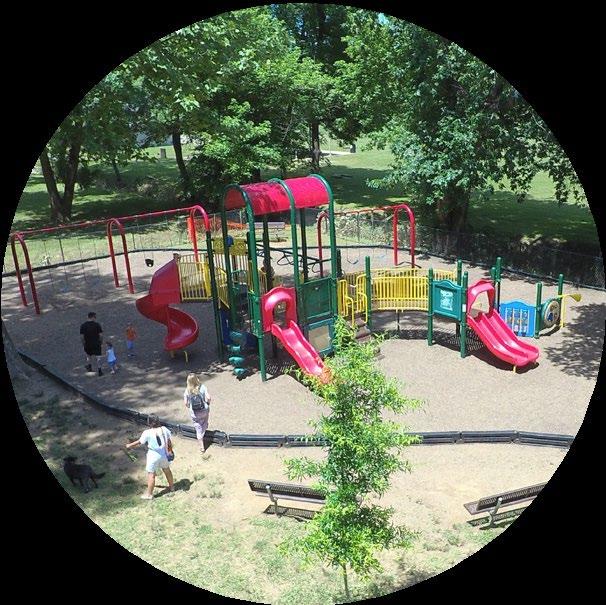

• Hunter Memorial Playground/Community Center Entrance/Parking - Clean/repair steps leading to 2nd level parking, repave/restripe parking lots/spaces, add native plantings to front of the community center & parking lot islands, secure picnic tables, secure branded garbage/ recycling receptacles, fence Utility Boxes near playgrounds
• Hunter Memorial Park Maintenance/Disc Golf/Other - Add: Maintenance/Admin Building & Electricity to the Maintenance Building, Fence Gas tanks for vehicles/machinery, Add drains to Honor Guard Memorial to correct standing water issue, Fence existing storm drain behind Ike Owings - safety, repair cracked retaining wall near open drain, add stone tops to brick wall
• Ike Owings Community Center - Admin Office updates, ADA updates: lobby, reception, restrooms, LED Lighting, update Multipurpose Rooms/Kitchens
• Jesse Davis Park/Alice J Hawthorne Community Center - Property, ADA: reception, required facility signage: Exit Routes and room numbers (required OSHA)
• Mill Village Park - Additional playground amenities, relocation of Rocks, In-ground grill/coal container, stationery, branded trash/recycle near pavilion, add parking including ADA spaces on street
• Town Green Park - Replace splash pad boulders with commercial splash pad water features, smooth out
walkways and transitions, utilize ADA materials.
• West Pines Golf Course - Repair/resurface golf cart paths, repair/re-establish fairway slopes, restoration of creek stream bank, replace wooden bridges
• Willing Workers Community Club Park - Pave the natural walking trail for ADA and senior access and help with drainage issues, Add working power outlets on pavilions, ADA Updates: curb cut from parking lot to Pavilion #1, add signage to ADA table Pavilion #3, Reroute/level protruding pipe in grass or fence, move Boulders away from the playground or consider playground boulders, develop Bio Retention pond
• Worthan Park - Add walking track, repair Historic Lights, turn benches inward, add picnic tables
NEW PARKS TIER 1
• Arbor Parkway Park- Outdoor Walking Trail, Dog Park, Passive Garden Area Seating
• Arbor Station HOA Park- Walking trail loop, Dog Park, Playground
• Slater Hill Park - Playground, Tennis Courts, Restroom Buildings, Multi-Use Fields, Pavilions, Off-street parking, Walking Trail
• Summerlin Parkway Park - Four Tennis Courts, ADA Playground, Pavilions, Restroom Building, Walking Trails
• Tributary Area Park - Little League Baseball/Softball Fields, ADA Playground/Specialized Playground, Pavilions, Restroom Building, Dog Park

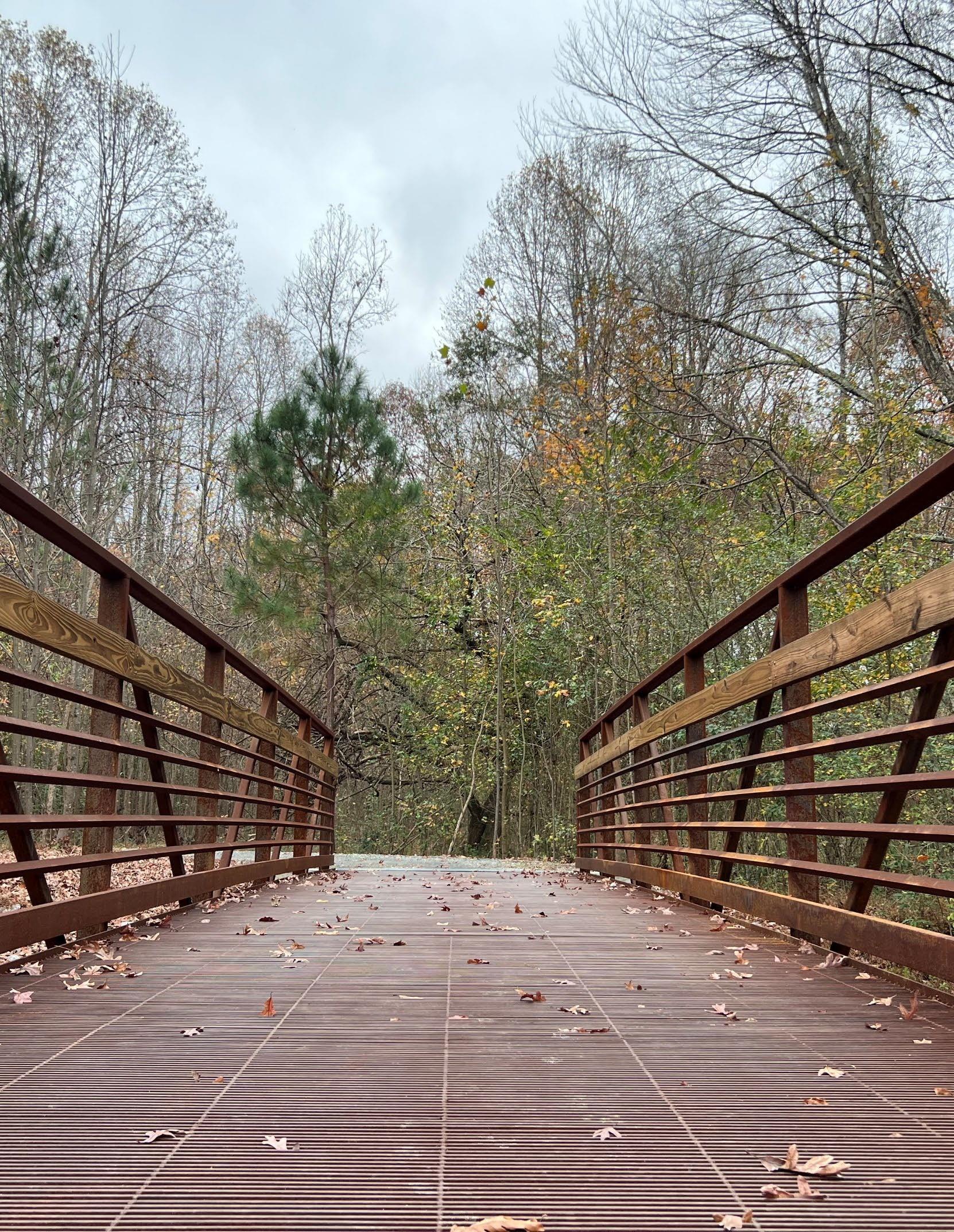
Chapter one INTRODUCTION
THIS PAGE INTENTIONALLY LEFT BLANK
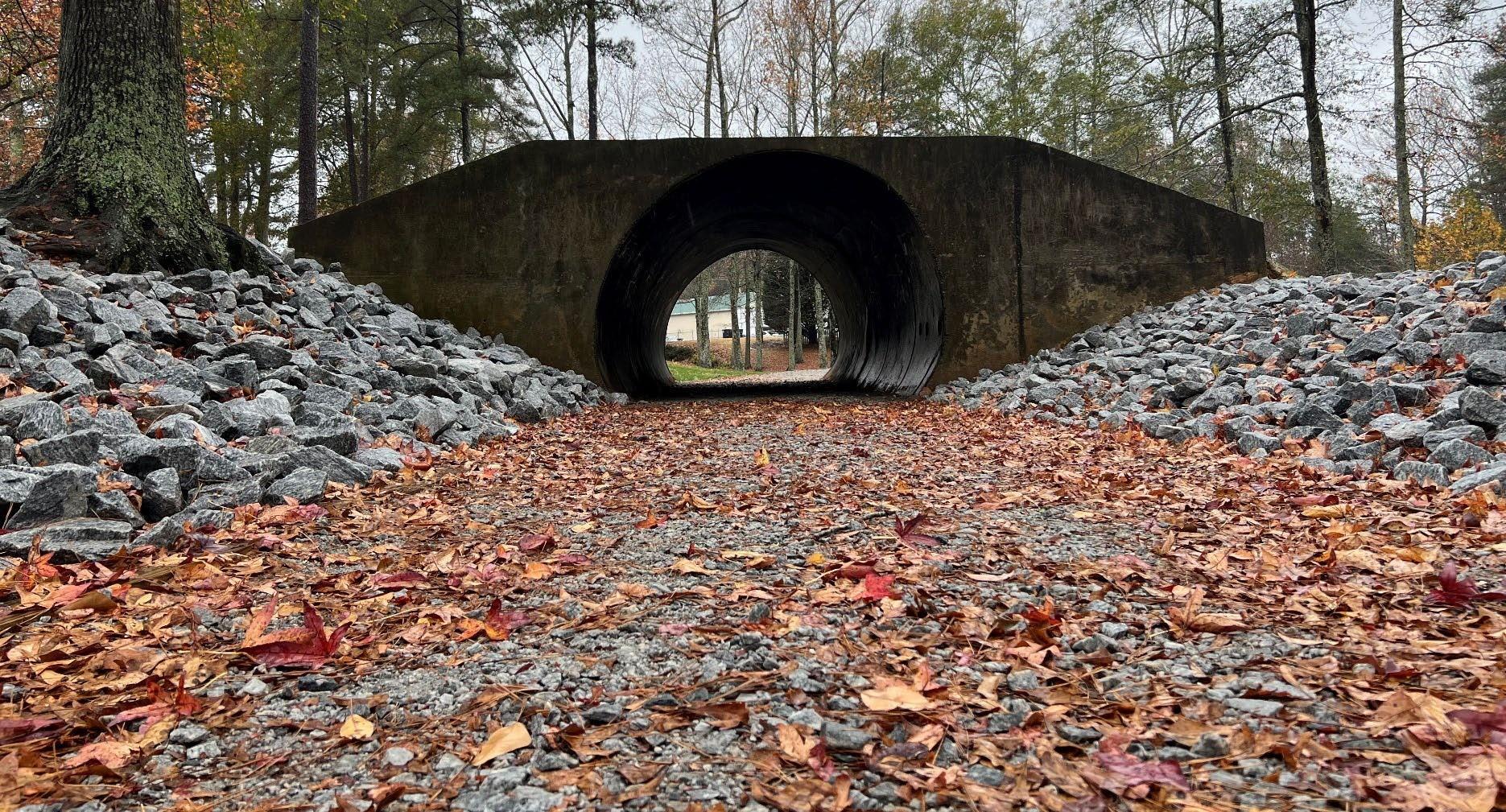
INTRODUCTION
The function of this needs assessment and master plan is to assess the City of Douglasville’s public parks and recreation system and provide recommendations to enhance services across the community over the next decade. This Parks and Recreation needs assessment, and master plan provides recommendations for existing parks and recreation facilities, programming, and administration in the community with the goal of maximizing and improving the efficiency of service delivery. The window for implementation is from 2025 through 2035. This master plan is a working and flexible document that provides guidance by establishing a clear vision for the future as well as goals and objectives regarding Douglasville’s park system. This will serve as a strategic action plan to help guide future programs, parks, and recreational capital improvement projects.
The planning team, coordinated by Lose Design, a multi- disciplinary firm specializing in park and recreation planning, included the City of Douglasville Parks and Recreation Department, Recreation Advisory and Partner Committees, Focus Groups consisting of diverse, local stakeholders and officials that have insight into parks and recreation facilities, programming, and community engagement. Development of this report included researching demographics, assessing current facilities, engaging focus groups on thematic topics, and conducting public input meetings.
HISTORY
The City of Douglasville is the City seat of and largest city in Douglas County, Georgia, United States. Separate parcels of developed land makes up the 22.5 square miles of this unique, historic city.
Douglasville is located 20 miles west of Atlanta, Georgia. It is located in north-central Douglas County. Interstate 20 passes south of downtown leading east. Interstates 78 and 92 provide access within the city limits. The Chattahoochee River partially boarders the southeast section.

Located at a natural rise in the topography, Douglasville was originally known as Skint Chestnut. The name derived from a large tree used by Native Americans as a landmark. The chestnut tree stood close to the intersection of two Indian trails. Natives had stripped the tree of its bark to make it more identifiable and later white settlers would begin to call the location Skint Chestnut and use the tree as a geographical landmark as well. Beginning before recorded history a variety of peoples called this area home, including the Mississippian, Woodland, Creek, and Cherokee Native Americans. In 1734, General Oglethorpe took Creek Native Americans to London as a publicity stunt for the new colony of Georgia. By 1800 the area was primarily settled by Lower Creek and Cherokee: the two groups' continued hostilities caused the U.S. Government to draw a boundary line separating them with the Cherokee on the north and the Creek on the south. It crossed the future railroad approximately one mile east of mid-town Douglasville.

In 1828, Campbell County was created, with the seat of government being Campbellton on the Chattahoochee River. To reduce the size of the County (a trip to the county seat could take 2 days), the Legislature created Douglas County out of parts of Cobb, Campbell, and Carroll Counties in 1870. An election was held to choose officials and select the new county seat. Although the largest group of voters chose a location at the center of the county, the newly elected leaders had their own view of the vote, and chose Skint Chestnut near the railroad right-of-way..
The Patch
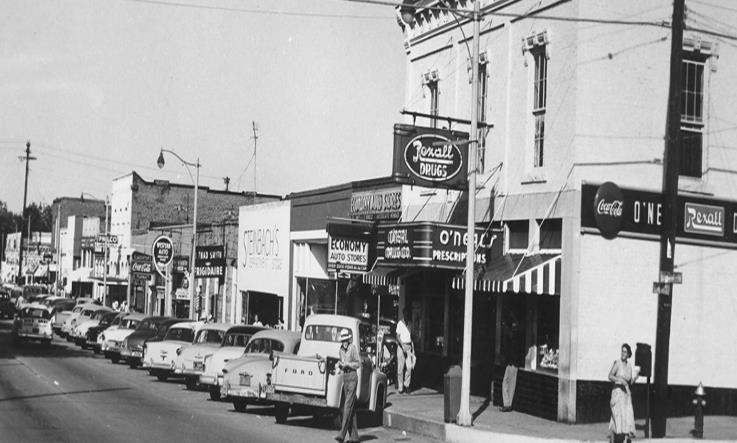
Skint Chestnut was the winner following the second election and the name was changed to Douglasville when the Georgia General Assembly formally established the town on February 25, 1875. The boundaries were as follows: the center shall be a point directly opposite the courthouse in said town, on the Georgia Western Railroad, thence running along the center of said road each way three-fourths of a mile and extending one half mile each way from the center of said road, the form of said territory to be an oblong square.
The formal formation of Douglasville coincided with the period when New South ideals were gaining momentum across the South, so business and political leaders had a unique opportunity to set up each facet of the town to fit the image and philosophy, which reshaped villages into railroad towns. In the case of Douglasville, the town’s leaders had the opportunity to build the town from the ground up and they worked diligently to include all the ingredients necessary for a thriving New South town, the railroad, a cotton mill, a hotel, bank, and a commercial district.
An election was held on the first Saturday in March 1875, and a mayor, treasurer, records (secretary), and marshal were chosen. Thus began the official history of Douglasville, today one of the most attractive, historic parts of the Atlanta metro area. The Georgia Western Railroad had purchased and surveyed their right-of-way from Atlanta to Birmingham by 1860. The outbreak of war halted construction, and after bankruptcy and several ownership changes, the newly named Georgia Pacific Railway Company finally began construction in 1881. Regular service to Atlanta began May 15, 1882, and the road to Birmingham was completed in November 1883.
The core area of downtown Douglasville is listed on the National Register of Historic Places as an historic district; an outstanding example of a turn-of-the-century southern railroad town. The majority of the buildings are one- and two-story brick structures dating from the mid-19th century into the early to mid-20th century. The dominant landscape feature is the railroad right-of-way running east-to-west through downtown.
Douglasville continues to grow in the 21st Century maintaining its unique blend of Southern charm, a thriving business community, and diverse opportunities for exploration. According to the US Census Bureau, the population of Douglasville, Georgia has steadily increased during this time from 20,065 in 2000 to 35,252 in 2022. With the opening of the Douglasville Town Green and plans for additional mixed-use spaces, the downtown area will evolve into the cultural, civic and entertainment center of Douglas County.
Source: City of Douglasville; Lisa Land Cooper, Every Now & Then; Josh Green, Urbanize; The Patch, Douglasville
Douglasville, CVB
METHODOLOGY
This master plan document is based on a review of reports and data, best practices analysis, and interviews with stakeholders, elected officials, department staff, and the citizens of Douglasville, Georgia. An inventory of existing facilities, programs, policies, and services related to parks and recreation was developed. The National Recreation and Park Association’s (NRPA) Parks Metrics were reviewed for a high-level benchmarking comparison of City of Douglasville facility inventories to comparable communities. Finally, interviews with stakeholders provided a snapshot of the level of utilization and individual perception of the Department and the park system. This information is key when determining the needs of residents and for the prioritization of physical, programmatic, and operational improvements.
Recommendations designed to increase the level-of-service across the city over the next 10 years are provided as part of the master plan. This plan provides recommendations regarding City of Douglasville Parks and Recreation Department facilities, programming, and administration from 2025 to 2035. Recommendations for future growth are based on demographics, assessing current facilities, public input, and interviews with elected officials, appointed officials, and City staff.
This document serves elected officials and department staff as both a master plan and an action plan. The plan provides the City of Douglasville with guidelines and recommendations for decision making and future investment. This master plan also identifies current recreational offerings and future recreation goals to be implemented as the population grows and changes. The plan will answer the following questions:










Successful park and recreation master plans are based on a commitment to implementation. Changes in elected officials and staff may jeopardize plan success; however, in many instances, an informed public that is engaged and involved can help a plan succeed.
Short-term and long-term goals will be identified in this master plan. These goals are prioritized based on complexity, cost, need, and public input of residents. A Capital Improvement Program (CIP) is the best tool to ensure implementation of physical improvements recommended in the plan. A 10-year CIP is provided as part of this document.

OUTREACH, ANALYSIS,and
Assessments were performed that targeted different aspects of a parks andrecreation system. These assessments included:
• Community Profile
• Public Input (Needs Assessment)
• Facility and Program Assessment (Community Inventory)
• Recreation & Leisure Trends Analysis
• Level of Service Standards
• Staffing Assessment
• Budget and Funding Analysis
• Capital Improvement Plan
Upon completion of the above referenced tasks and assessments, determinations regarding the parks and recreation system were made. Based on information obtained, additions or changes to programs and activities offered by the Department will be made to better accommodate community needs. Physical improvements to infrastructure within the parks and recreation system will be based on gaps identified in the Facility Assessment. Estimated costs and proposed locations will be included in this master plan. An all-inclusive, wideranging analysis with recommendations for the Department system will be provided.
PHASING PLAN
A timeline for implementing the recommendations is provided. Recommendations are prioritized with associated cost estimates. This phasing plan is intended to be a tool to assist in the budget process over the timeframe of the 10-year plan.
Park facilities and programs should serve all residents, all ages, with a variety of interests. This requires a diversification of services based on research, demographic data, and market conditions. Shrinking open space, increased property values, and residents with busy schedules have collectively placed a demand for welldesigned and efficient facilities, park space, and recreational opportunities that serve the wide and varied needs of Douglasville citizens. Park facilities have become social gathering spaces, opportunities for improving health, and benchmarks for the quality of life within a community. The master plan will serve as a tool to guide decisions by City officials, prioritize maintenance, identify new projects and programs, and ensure the delivery of recreational services to meet the needs of a socially diverse community with a growing population.
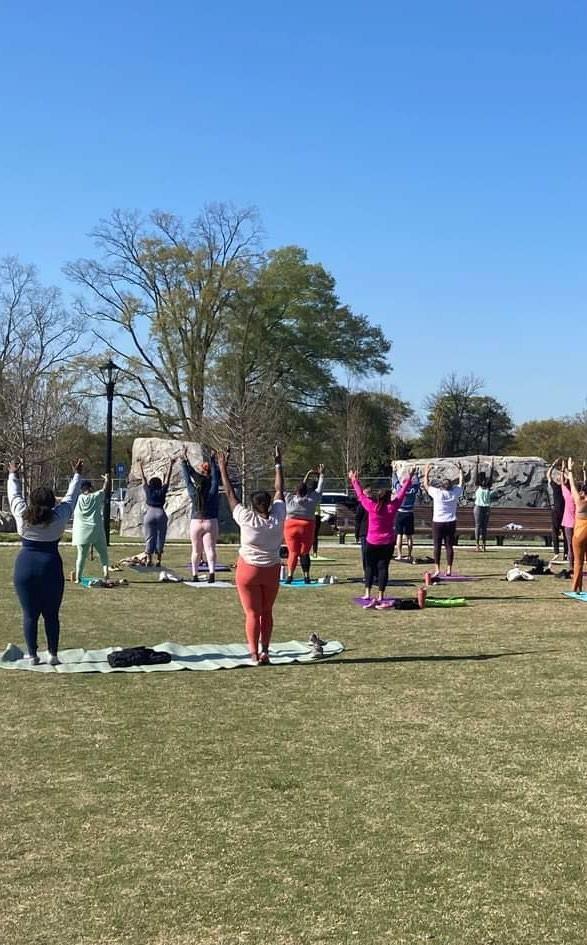
Yoga on The Green
THIS PAGE INTENTIONALLY LEFT BLANK

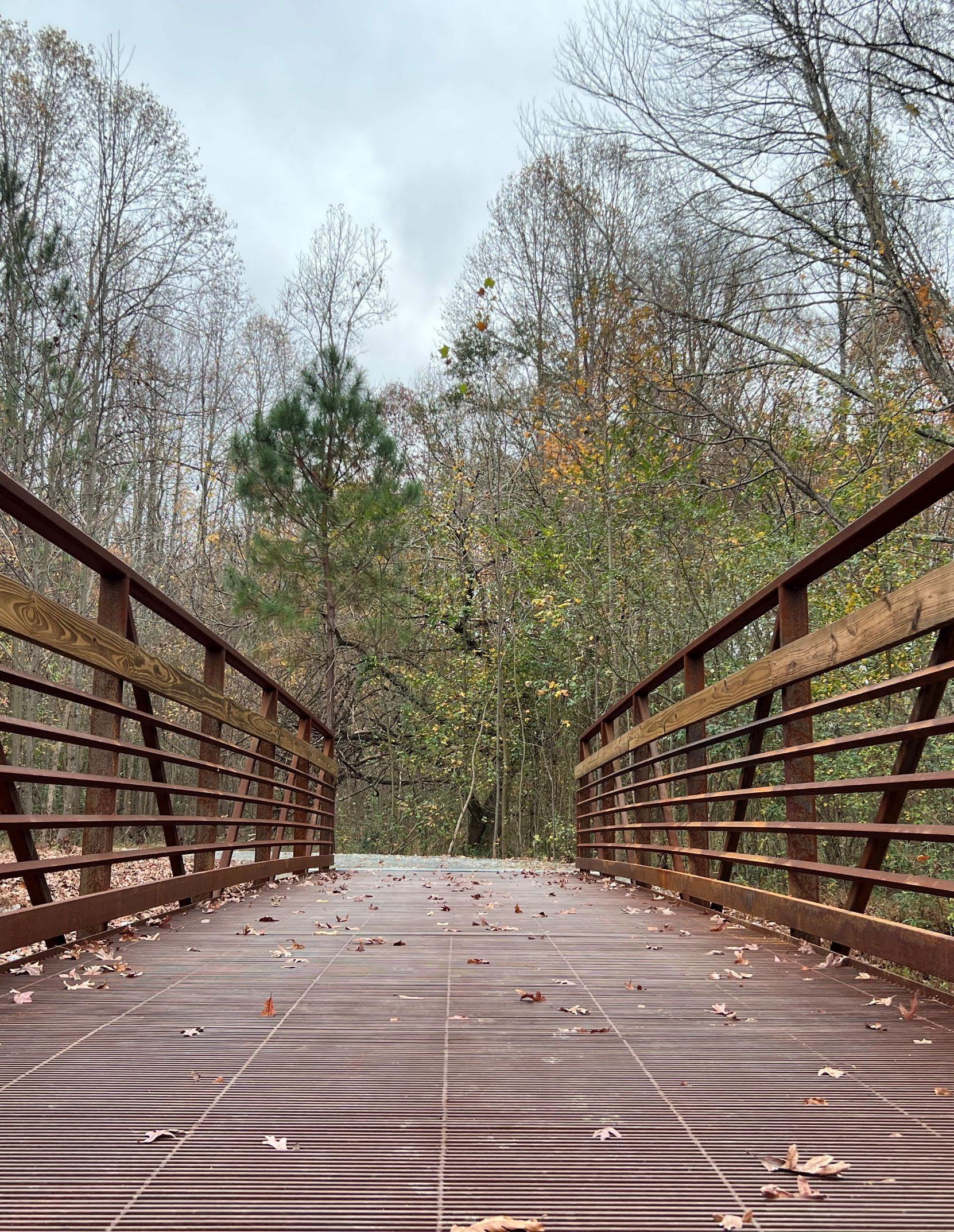
Chapter two AGENCY MISSION

INTRODUCTION
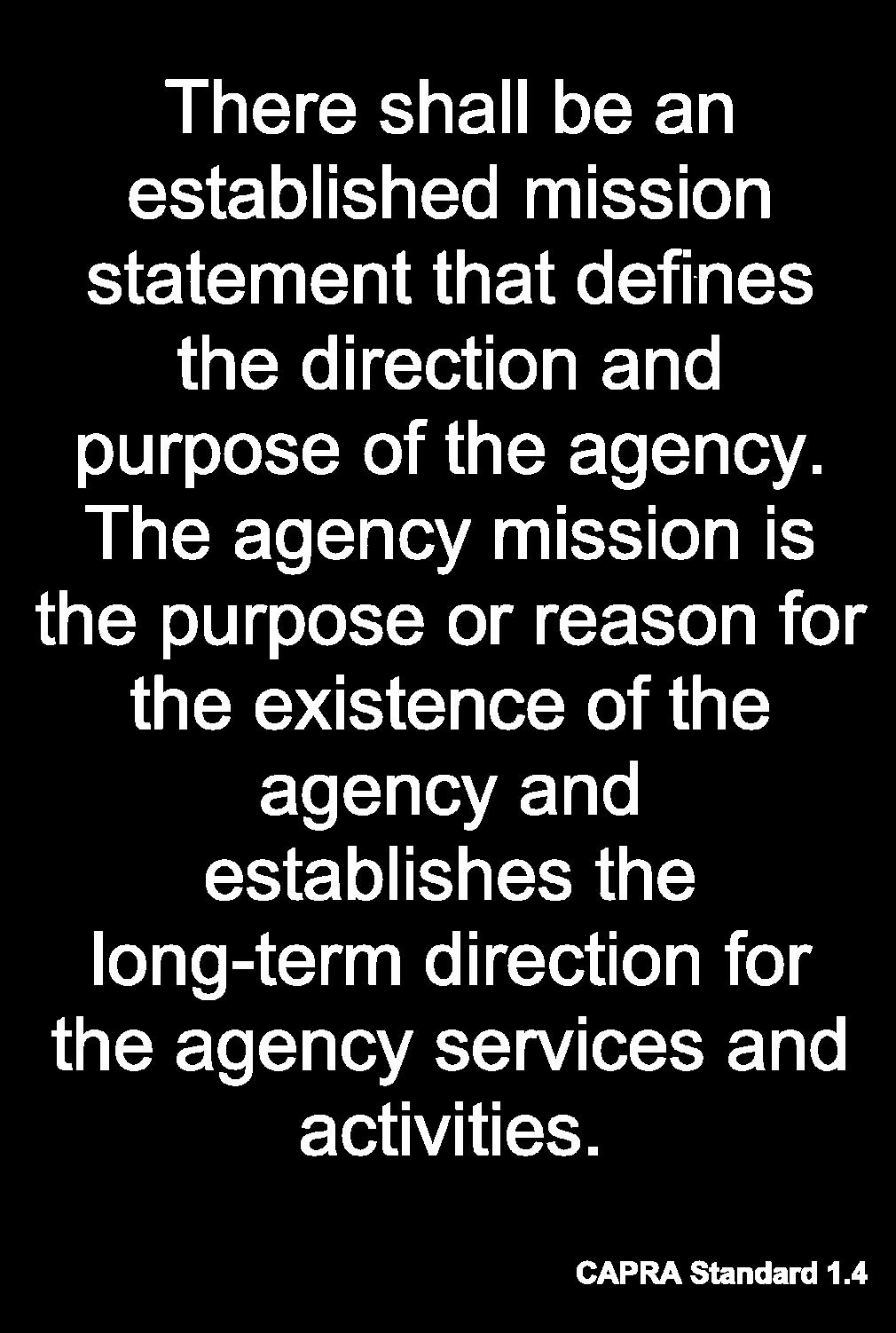
There shall be an established mission statement that defines the direction and purpose of the agency. The agency mission is the purpose or reason for the existence of the agency and establishes the long-term direction for the agency services and activities.
CAPRA Standard 1.4
A parks and recreation organization’s mission statement is important because it clearly communicates the organization's purpose, goals, and values to the public, its elected officials and its staff. It serves as a guide to ensure that all programs, services, and initiatives align with the core vision and priorities of the organization. A mission statement speaks to who we are as an organization, who we serve and what our intended purpose is. It provides a clear, concise explanation of why the organization exists and what it seeks to accomplish and helps to set a focused direction for its activities.
A strong mission statement can inspire staff, volunteers, and community members to work towards common goals. It helps everyone involved understand their role in fulfilling the broader vision. With a mission statement in place, leaders can make decisions that are consistent with the organization’s values and vision, ensuring all programs and projects are aligned with its purpose now and into the future
A mission statement makes it easier for the community to understand the organization's goals and how its services benefit them, which can encourage involvement and support. It acts as a benchmark for evaluating the organization's progress and success, helping to keep it accountable to its stakeholders and the community it serves. In short, a mission statement keeps everyone focused on the big picture and ensures that all efforts contribute to creating a positive impact in the community.
The City of Douglasville’s Parks and Recreation Department Mission and Vision Statements are as follows:
Mission
To enhance the quality of life in our community and all who interact with our park system, programs and services.
Vision
To provide optimum recreational facilities and quality programs to ensure the standard of excellence for all.
Both the Mission and Vision will serve as a framework for the long-term use and development of parks and recreation needs over the span of 10 years. The master planning process identifies the recreation needs of a community, predicts future demand, and recommends operational improvements pertaining to budget, staffing, and programmatic concerns of the Department. This plan was developed through a combination of public input, insight from Douglasville staff and elected officials, and professional analysis.
The function of this needs assessment and master plan is to assess the City of Douglasville’s public parks and recreation system and provide recommendations to enhance services across the community over the next decade. This Parks and Recreation needs assessment, and master plan provides recommendations for existing parks and recreation facilities, programming, and administration in the community with the goal of maximizing and improving the efficiency of service delivery. The window for implementation is from 2025 through 2035. This master plan is a working and flexible document that provides guidance by establishing a clear vision for the future as well as goals and objectives regarding Douglasville’s park system. This will serve as a strategic action plan to help guide future programs, parks, and recreational capital improvement projects.
THIS PAGE INTENTIONALLY LEFT BLANK


Chapter three AGENCY OBJECTIVES

INTRODUCTION

During the development of the Douglasville Parks and Recreation Master Plan, strategic goals and objectives were established to guide the department’s strategic direction. These goals are reviewed on an as-needed basis and are influenced by the annual Mayor and Council retreat held at the beginning of the year. Following the adoption of departmental goals and objectives, division managers develop divisional goals and objectives that align with the overarching departmental strategy.
Objectives and goals are vital for a park and recreation department as they provide a clear framework for success by providing direction and focus, hence a roadmap for the organization They assist staff, elected officials, and stakeholders with an understanding of organization priorities, desired outcomes, and the actions needed to achieve them. This will ensure efforts and resources are focused on initiatives that align with the mission and community needs. Goals create measurable targets, allowing an organization to track progress and evaluate whether it is on the right path. Regular assessment of objectives helps identify areas where improvements are needed, ensuring that the organization stays on track to fulfill its mission.
Clear objectives also help organizations allocate resources (time, budget, personnel) effectively. When an organization knows its priorities, it can direct resources to areas that will have the greatest impact. When objectives are well-defined, decision-making becomes easier because choices can be made based on how well they align with the organization’s goals. Having clear goals also cultivates a sense of purpose for employees and volunteers, motivating them to work towards common objectives. Specific goals provide accountability in an organization. Objectives and goals ultimately increase efficiency, improve outcomes, and contribute to overall organizational success.
The City of Douglasville Parks and Recreation Agency Objectives are as follows:
Enhance Organizational Excellence: strengthen internal processes, policies, and systems to ensure efficient and effective operations
Promote Financial Sustainability: optimize financial resources to support both current operations and long-term initiatives.
Foster Environmental Stewardship: protect and enhance natural resources while promoting sustainable practices throughout the agency.
Maintain Safe and WellMaintained Facilities: ensure that all parks, facilities, and equipment are safe, clean, and properly maintained.
Ensure Access and Inclusion: provide equitable access to programs, services, and facilities for all community members.
Deliver Quality Programs and Services: offer diverse, innovative, and high-quality recreational opportunities that address the evolving needs of the community.
Engage Community and Stakeholders: foster meaningful engagement with residents, stakeholders, and partners to strengthen community ties and support.
Strengthen Emergency Preparedness and Risk Management: develop and implement comprehensive plans to address safety, emergencies, and potential risks.
Support Staff Development: invest in professional development and training to maintain a skilled and motivated workforce.
Advance Strategic Planning: establish and evaluate long-term plans that align with the agency’s vision, mission, and community priorities.
These objectives serve as a framework for guiding the department’s efforts to achieve excellence in parks and recreation services and ensure alignment with community needs and expectations. The department will continue to update its strategic plan, objectives and goals throughout the next 10 years utilizing this document as a map to streamline operations and services as staff and officials look toward 2035 and beyond, the city’s expected population growth, and the shifts in community needs and priorities.
THIS PAGE INTENTIONALLY LEFT BLANK
Chapter four


COMMUNITY PROFILE
THIS PAGE INTENTIONALLY LEFT BLANK

INTRODUCTION
The recreation needs and trends of a community are dependent on the preferences and way of life of its residents. Desired programs and recreation needs are dependent on age, gender, education, and socio-economic status. Public desires can be anticipated by reviewing demographic data and public input. Activities that will likely be popular as the community’s demographic profile changes can also be predicted by reviewing demographic data.
Douglasville Parks & Recreation
Although accurate data is available every 10 years from the U.S. Census, demographic factors, such as age, are constantly changing. Age is a major factor in determining recreation trends. For example, a child who is ten years old when a plan is developed may be interested in team sports like baseball or soccer; however, at the end of the plan’s timeframe, that interest may have shifted to individual recreation activities such as running or cycling. Knowledge of age and its predicted changes are useful when a large percentage of the population will soon reach an age at which their recreation preferences are likely to change. Demographics are the population characteristics of an area. The American Community Survey gathers information on social, economic and health data. Long-term demographic studies help local elected officials identify trends and show how a population is changing. A clear understanding of these trends is necessary to understand the City of Douglasville’s needs. The current and projected population establishes the type of facilities and services needed in the future.
To gain a better understanding of the park and recreational needs of Douglasville, a community profile has been developed. The demographic factors in this section include:
• Population Trends
• Economic Trends
• Health Trends
Making long-term decisions guided by city demographics and population projections will result in a well-planned and effectively managed parks and recreation system.

photo by GameTime Canada
TRENDS
To fully understand the local interests and the park and recreational needs in Douglasville, an updated community profile has been prepared. As part of this profile, population data was used to determine and evaluate subsets within the population. Historic population data was gathered from the U.S. Census Bureau. Future population projections were taken from the Governor's Office of Planning and Budget.
Total Population

Source: U.S. Census Bureau, Governor's Office of Planning and Budget
The population of the City of Douglasville has increased approximately 20% over the past decade. In 2010, the population was 29,373. The population continued to grow over the next 10 years to an estimated 35,252 people in 2022. The population is anticipated to increase to almost 57,000 in 2030. By extracting data from the Governor's Office of Planning and Budget, it is estimated Douglas County population will reach approximately 159,286 residents by the year 2030. This increase results in a projected growth rate of 7%. For comparison, the State of Georgia has a projected growth rate of about 8% for the same 8-year period. With 22.5 square miles, Douglasville has a population density of 1566.76 (persons per sq. mile) which is 29% higher than the benchmark community with the lowest
density and 43% lower than the than the benchmark community with the highest density.
Source:
Figure 2.1: Douglasville
Figure 2.2: Douglasville Total Population
Douglasville is the largest city in Douglas County with an estimated population of 35,252. Understanding the age distribution of residents living in the City of Douglasville is a critical element to understanding types of programs and facilities that would be beneficial to a community. The largest population within Douglasville is the 35-54 age group population comprised of 30.2% of the total residents with the second largest population, ages 0-19 years, making up 27.8% of the total residents. The city of Douglasville’s largest age group population increases from 2010 to 2022 were active adults and seniors (65-74 years and 75 years +). These populations combined, 11.9% of the total residents, increased by an average of 125%. The overall median age for the City of Douglasville is 36.5 years. A lower median age points to upwardly mobile professionals and families with young children who are top users of aquatic facilities, bike and walking trails, cultural arts, and indoor recreation amenities.
2.3: City of Douglasville Population By Age



Douglasville Population by Age













YOUTH 0-19 YRS
YOUNG ADULT 20-24 YRS
ADULT 35-54 YRS
ACTIVE SENIOR 55-74 YRS
SENIOR 75 + YRS
Source: U.S. Census Bureau, American Community Survey 5-Year Estimates
Over the next 10 years, the active adult and senior populations will continue to have the highest percentage of growth with increased recreational needs. The youth and adult populations are also expected to increase significantly. Programs, facilities, and services for these age segments will also need to increase.

The median age of Douglasville residents in 2022 was 36.5 years old
Figure

Source: U.S. Census Bureau
POPULATION BY GENDER
The gender ratio of the City of Douglasville residents is estimated to be 47% male and 53% female. This ratio is comparable to State of Georgia and national ratios and has remained relatively consistent over the last decade. The data from the Governor's Office of Planning and Budget indicates that this ratio is anticipated to remain consistent in Douglas County through 2030. With the increasing number of older residents, it is important to note that the number of females typically exceed males in older age groups.
The current gender ratio of the City of Douglasville residents is estimated to be 47% male and 53% female. From 2010-2022, the City of Douglasville had an 18% (2,886) increase in female residents, and a 22% (2,993) increase in male residents

Figure


POPULATION BY RACE AND ETHNICITY
2010-2022 Population by Race
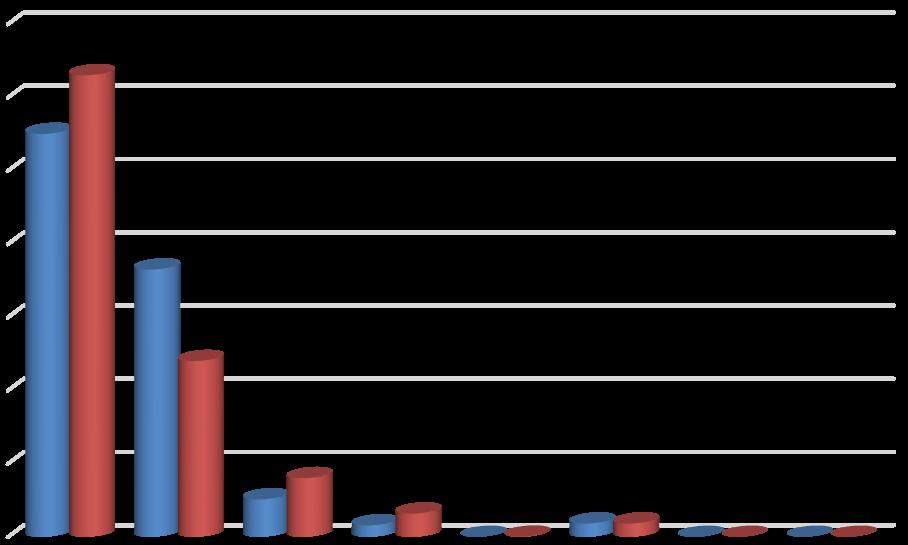



Source: U.S. Census Bureau
The analysis of the City of Douglasville’s race and ethnicity shows that the city is becoming more culturally diverse. The population is predominantly African American. The U.S. Census Bureau estimates that the city's population in 2022 was 63% Black, 24% White, and 8% Hispanic with the balance of the population being other minorities at 5%. In comparison, the State of Georgia had a population of 33% Black and 60% White. Since 2010, the African American population has increased by 36% within the City of Douglasville to 22,043 residents. Also, since 2010, the city’s White population has decreased by 20% to a current 8,516 residents. The Hispanic population has experienced the largest increase by 88%. The population of the Hispanic community currently sits at 2,855 residents. While preferences for park facilities and programs can be similar among all races and ethnicities, the Department should increase outreach to minorities if participation in recreation programs does not reflect the racial diversity observed within the community.
Figure 2.5: Douglasville 2022 Population by Race and Ethnicity
Figure 2.6: Douglasville Population by Race and Ethnicity (2010-2022)
HOUSEHOLDS WITH CHILDREN
Understanding the levels of households with children is a key metric for effective facility and program planning. Estimates for 2022 indicate that nearly 36% of total households in the City of Douglasville had children residing in them. This is lower than rates for the State of Georgia and the nation (57% and 52%, respectively). From 2010 to 2022 the number of Households nationwide increased by 12% while the overall number of households within the City of Douglasville grew by 23.8% (14% with children). Recreation service providers should continue to monitor program participation rates for children and waiting list numbers to ensure that the volume of programs and relevant, agerelated programs are being offered for the community compared to the number of homes with children.

Douglasville Households with Children

Total Number of Households w/ Children
Total Number of Households
Source: U.S. Census Bureau
photo
Figure 2.5: Douglasville Households with Children 2010-2020
PEOPLE WITH DISABILITIES
Per the US Census and American Community Survey, 10.4% of the city’s residents reported some level of disability. This is lower than the State of Georgia at 13% reported disability. Inclusion, Therapeutic Recreation programs and programs for various abilities (ADA) are vital to each individual’s level of participation and success in a program and the overall well-being of individuals with limited abilities in any capacity. The American Community Survey lists tracked disability type data into the six following categories: *Hearing difficulty, *Vision, *Cognitive difficulty, *Ambulatory difficulty, *Self-care difficulty, *Independent living. Residents reporting as “a person with an impairment” in these listed categories is considered to have a disability.
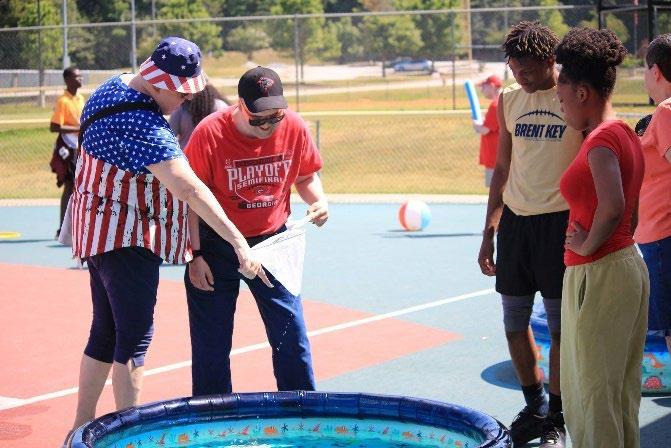

Source: U.S. Census Bureau, American Community Survey
COMMUNITY HEALTH
People are generally less active than in the past and tend to lead sedentary lifestyles. This inactivity has led to an obesity epidemic, which continues to grow in many parts of the United States. The most dramatic increases in obesity are in the southern United States. This affects life expectancy and has economic impacts related to medical spending and productivity in the workplace. According to the Center for Disease Control (CDC), approximately $283 billion will be spent on obesity-related direct health costs in 2023, rising to $526.5 billion by 2033. U.S. dollars. In 2023, the extra medical costs for people who are obese were $5,155 per person.
Physical activity not only helps maintain a healthy weight but also benefits mental health. According to a 2024 article from the CDC, exercise improves:



CHILDREN
Academic Performance
Brain Health
Muscular Fitness
Heart and Lung Health
Cardiometabolic Health
Long-term Health -Type 2
Diabetes & Obesity
Bone Strength
Healthy Weight
ADULTS & SENIORS
Sleep Reduced Anxiety
Blood Pressure
Brain Health
Heart Health-Type 2 Diabetes
Cancer Prevention
Healthy Weight
Bone Strength
Balance & Coordination
Source: Physical Activity Guidelines for Americans, 2nd edition
According to County Health Rankings and Roadmaps, the adult obesity rate (BMI ≥ 30) in Douglas County is 37%. This rate is higher than the state of Georgia’s rate of 34% and higher than the top U.S. performers or 25%. The county's physical inactivity rate (28%) is also higher than the state of Georgia (25%) and the top U.S. performers (17%). Approximately 76% of Douglas County residents have access to exercise options, two percent higher than the state of Georgia (75%) but lower than the top U.S. performers (84%).
Individuals who live closer to sidewalks, parks, and gyms are more likely to exercise. Improved parks, recreation amenities, sidewalks, bicycle lanes and greenways can help support residents’ overall physical and mental health. Continued strategic investment in parks and recreation should be a priority in an effort to improve health outcomes.

Figure 2.7: Douglas County Health Rankings
ECONOMIC TRENDS
Median Household Income, Owner-Occupied Housing Rate, Median Value of Occupied Housing Units, and Persons Below Poverty Level were all reviewed for the City of Douglasville’s economic profile. These numbers are important to compare to state and national averages to understand where the city falls in terms of these economic trends.
INCOME AND HOUSING CHARACTERISTICS
When comparing Income and Household Characteristics of the city, Douglasville has a very comparable Median Household Income, which is slightly lower than both the state and national averages.
The Median Household income is $72,753, is $84 less than the State of Georgia and $2,002 less than the United States.
The Median Value of OwnerOccupied Housing Units depicts the City’s home value average to be $28,000 higher than the State of Georgia and only $7,400 lower than the national average.
More people rent (50.8%) in the City of Douglasville than the national and state averages.
The city has less residents below the poverty level (11.9%) than Georgia and is comparable to the national average.


Source: U.S. Census Bureau

Income levels are notable because they relate to a resident’s ability to pay for participation fees and other costs related to recreation programs. In communities with low-income levels, local governments typically play a leading role in meeting residents needs by providing funding to subsidize recreation programs. This information may inform decisions regarding fee structure, which should be set at levels that do not limit participation. Reduced program fees may, in turn, impact revenue recovery efforts if alternate sources of revenue are not identified. Understanding household income can inform pricing strategies for recreation programs.
Figure 2.8: Income and Housing Characteristics
SUMMARY
The City of Douglasville is a growing community with many strengths, including high population density and low median age. However, there are also potential challenges in the areas of community health and access to exercise that will need to be considered going forward. This data indicates that more access to Douglasville parks and recreation facilities and programs should be a focus of future expenditures. Another option is to ensure park facilities are located close to areas of dense residential development. The demographic data described in the preceding text was used to formulate recommendations contained in this document.
THIS PAGE INTENTIONALLY LEFT BLANK

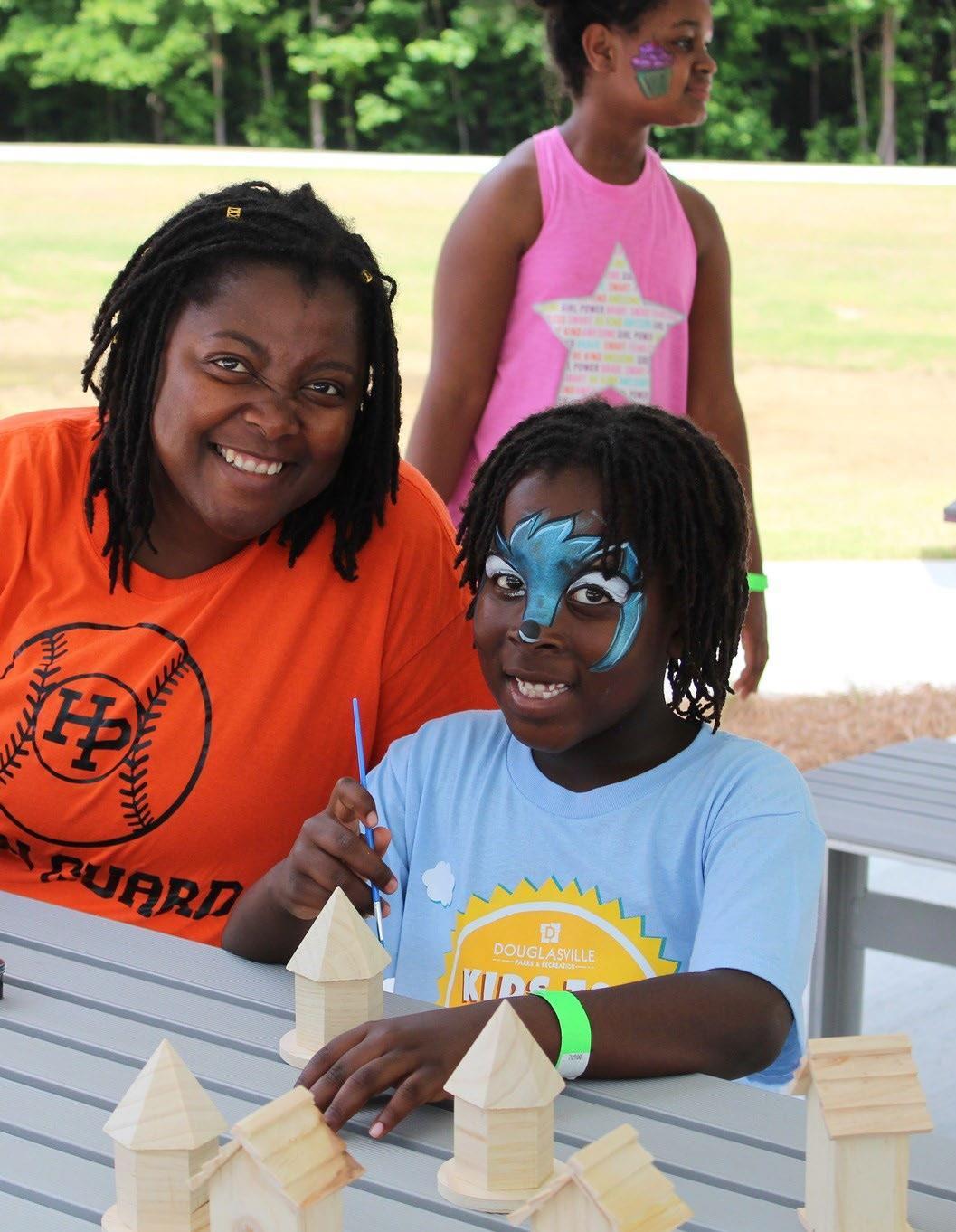
Chapter five NEEDS ASSESSMENT
THIS PAGE INTENTIONALLY LEFT BLANK
INTRODUCTION
Public input is a critical component in developing acomprehensive parks and recreation master plan. Assessing the needs of the community provides accurate feedback on community attitudes, opinions, and perceptions of the agency’s resources to provide data to guide planning. The citizens of the City of Douglasville played a significant role in the development of the master plan as the primary users of the park system facilities and programs. For the master plan to be effective in improving services, the plan must accurately reflect the facilities and programs most desired by Douglasville residents. Recommendations provided were informed by public input gathered through a diverse public engagement opportunities and interactions including:
•Advertised Public Meetings
Interactive Engagement and Input Activities
•Focus Group Meetings
Advisory Committee, Diverse Stakeholders, Park Users, Community Partners & Organizations
•S.W.O.T. (Strengths, Weaknesses, Opportunities, Threats) Analysis Process
An Online Survey through the Social Pinpoint website enabled public input access for all Douglasville Residents to engage in the process. These activities allowed for spontaneous and casual conversations about park and recreation needs in a variety of settings throughout the community.
The public input process started with interviews that included meetings with the City of Douglasville Parks and Recreation Department leadership and staff, other city employees and elected officials.
These interviews provided an overview of how the Department functions. The interviews also highlighted issues that exist within the city government and within the Department itself. Interviews with elected officials provided an overview of how Department staff interact with elected officials and how the Department fits into the City of Douglasville’s long-term vision.

INTERVIEWS
The public input process started with interviews that included meetings with the City of Douglasville Parks and Recreation Department Director, Parks Staff, Municipal Employees, and Elected Officials. These interviews provided an overview of how the Department functions. The interviews also highlighted issues that exist within the City of Douglasville and within the Department itself. Interviews with elected officials provided an overview of how Department staff interact with elected officials and how the Department fits into Douglasville's long-term vision.
POP-UP ENGAGEMENTS
There were two pop-up engagements where residents were able to share comments and provide input in person. Each event was hosted at two unique locations in 2023. Those locations were: the Fall Harvest Festival on October 28, 2023, and the Ike Owings Community Center at Hunter Park on December 7, 2023. Participants were asked to sign-in and list where they were from. The recorded attendances were 187 (Fall Festival) and 23 (Ike Owings) respectively with a total of 210 responses. The events included several engagement activities:







SPENDING BUCKETS PARKS MAPPING OPEN
COMMENTS


Activities included open comments on a parks mapping of the City of Douglasville and surrounding areas. Sticker voting at another station allowed residents to vote for what they considered were the top concerns. The categories of concern were based on existing parks and included lighting, ADA accessibility, diversity of facilities and several others. Sticker voting was also available for the community’s most favored recreation programs and facilities. Attendees were given eight stickers to vote for each category. In the spending bucket exercise, attendants had the opportunity to allocate a mock budget toward resources they think the Department should prioritize financially.
Finally, attendees provide open-ended suggestions or concerns on comment cards at the last station. The insight provided at the first pop-up engagement was useful in quantifying the community’s priorities for programs and facilities. The sticker voting activity provided information on which tangible outcomes are most important to the community. The voting activity offered 51 PROGRAM options and 58 FACILITIES options. This allowed the community to direct their attention to what is important to them from a more focused point of view while providing realistic tangibles. Participants also wrote in new ideas, some of which received additional votes from other participants. The planning team collected the voting results from the two pop-up events and analyzed the collective results.
The top five Recreation Programs included Family Leisure Swim/Play (95 votes); Dance/Theatre Classes (84 votes); Cooking Classes (81 votes); Swim Lessons/Education (76 votes); Summer Camps (75 votes).
The top five Park and Recreation Facilities included Outdoor Water Park (90 votes); Trails/Greenways (88 votes); Splash Pad (76 votes); Playgrounds (76 votes); Indoor Walking Track (69 votes). Complete results are provided in the rankings chart found in the Appendix.

Top 5 Recreation Programs
Top 5 Parks and Recreation Facilities


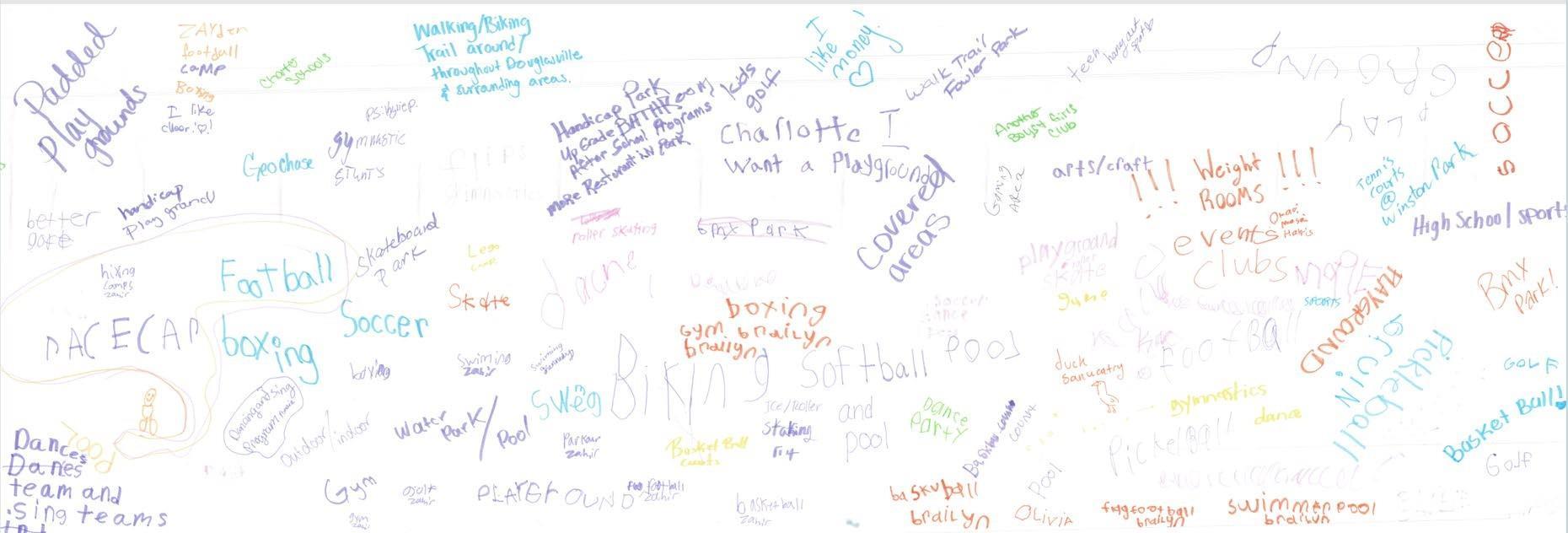
VOTING STATION
Public input event attendees used stickers to identify programs and facilities that they either currently use and support or wish to have included in the department's portfolio of services going forward. Limited stickers were provided to each participant to encourage them to focus on prioritizing their needs. They were permitted to distribute their stickers as they deemed fit. Options for the various programs and facilities were organized onto boards by categories. Each board also provided the opportunity for write-in options for any needs that may not have been represented. The overall categories of programs and facilities that were offered included:
• Water Recreation
• Court Sports
• Indoor Recreation
• Field Sports
• Passive Recreation
• Adventure/Outdoor Recreation
• Education/ Arts
Throughout the input event process, votes for various programs and facilities were widely distributed across each of the category classifications. In terms of facilities, some of the more desired options included Indoor Water Park, Open Space, Trails and Greenways, Adventure/Outdoor Recreation and Indoor Recreation and Education/Arts facilities and Day Care facilities. Interestingly, the Indoor Water Park ranked highest (54.2%) followed by Driving Range (37.5%) and Outdoor Skating Rink (31.3%). This indicates participants have interests in new and varied amenities, both active and passive.
Analysis of the programs identified needs for Court Sports, Adult Sports, Ninja Cross and Outdoor/Adventure programs ranking Volleyball League (50%), Archery (41.7%) and Tennis League (40%) as the top three programs. Youth Football, Gardening, and Rock Climbing were also highly ranked. Other favored programs included run/walk groups, silver sneakers, gymnastics, swim lessons, water fitness, S.T.E.M, programs and additional special events and festivals.
(The full results are shown in the Appendix of this report.)
WATER RECREATION
FACILITIES




EDUCATION/ARTS
PROGRAMS










SPENDING BUCKET STATION
In addition to providing input on desired programs and facilities, participants at the events were asked to engage in an exercise that would allow the planning team to better understand the prioritization of implementation for enhancing parks and recreation services in the City of Douglasville. To do this, participants were given five tokens representing the city's budget for improvements. Participants were then invited to distribute their tokens across ten spending categories, represented by buckets. These categories included:
Park Features/Programs:
• After School Youth Program
• Beginner Golf
• Dog Park
• Skate Park
• Soccer Complex
• Walking/Biking Trails Connecting Parks
Park Updates:
• Fowler Park Walking Trail
• Pickleball/Tennis Courts
New Parks:
• Arbor Station Area
• Tributary Area

The results of this exercise revealed that spending to address Walking Trails / Fowler Park Walking Trail and After-School Youth Programs are priorities for the community. Other top priorities included dog park, skate park and a new park at Arbor Station Area. Additional information on the distribution of these results is shown in the charts below.
Spending Priorities





16.4%




14.2%
PARK was the TOP PARK FEATURE SPENDING PRIORITY
12.6%
PARK WALKING TRAIL was the TOP PARK UPDATES SPENDING PRIORITY
10.1%
MAPPING STATION
Feedback from the mapping station produced a wide variety of insights and recommendations from the community. While some specific recommendations were provided, the majority of the information collected was more of a general nature. Examples of the input received at this station include:
1. Hunter Park: pool, splash pad, skateboard/BMX park, swim lessons, community garden, paddle boats, increased security.
2. WestPines GolfCourse:additional restrooms on the course, putting green at Tee #1, event space, restaurant.
3. Worthan Park: community garden.
5. Willing Workers Community Club Park: soccer field, splash pad.
7. Fowler Field: seating/benches, picnic tables, drainage, additional play features, shaded areas, fence playground. NewParkTributary:passive/walking,pickleball,skateboard. Parks:outdoorcamping,largerplaygrounds,opengreenspace, agricultural farm/research park, fenced playgrounds, trails connecting parks, outdoor fitness equipment, mini parks.
FOCUS GROUPS

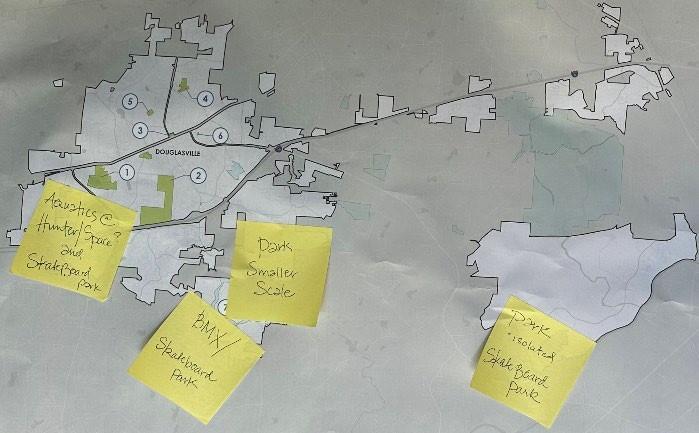
The planning process included two focus group meetings with a SWOT exercise. The goal is to understand the members reactions and perceptions through interactive discussions based on shared knowledge of the department and specific topics. Focus group meetings were held with the Douglasville Parks and Recreation Advisory Committee, a volunteer board that meets monthly with the Park and Recreation Department Executive Team and a Partner Committee comprised of local organizations, stakeholders, residents and community partners. Combined input from both committees brought forward the following input in three main categories:
• PROGRAMS AND
FEES
The members of these committees are dedicated residents, partners and stakeholders who hold the City of Douglasville Parks and Recreation Department, its director and staff in high regard. They are supportive of the department and the city, and the services provided to the residents. While they acknowledge there are quality programs currently offered, especially the Adaptive programs and the Youth Sports, they see a need to expand into a larger offering of general programming categories for children ages 4-6, youth and teens. They recommend the development of programs for Adults 20-64 years of age. They encourage partnering with Douglas County Senior Services for programs. With income levels rising in Douglasville, fees, subsidization levels and cost recovery should be reviewed.
• MARKETING
Committee members experienced difficulties when searching for information on programs, events and services provided. Various ages were represented on each committee. The committee mentioned a disconnect for people 60 yrs. and older with social media and marketing. However, residents and families find it difficult to locate program and event information as well. Marketing to the adaptive community is paramount. In partnership with the city, the department’s marketing efforts should equal the output of the department to ensure all residents are able to take advantage of the quality programs, facilities and services being offered to the community.
• FACILITIES
Committee members recognize the community support for the department. Members discussed safety issues, lighting, fencing and closer/expanded parking that would make a difference and expand use of park amenities. They also observe there is support for continued growth and expansion of facilities to accommodate the growing, diverse population. Support for continued enhancement of the park system will be vital moving forward, thus developing expanded partnerships, programs and connections today will help garner support for tomorrow when looking at revitalization and renovation of existing parks and facilities, additional facilities and new parks. Popular
park amenities include walking trails, sports fields and courts. Park connectivity is also an important consideration and could be improved as the city looks to implement a comprehensive trail system that should include current and future parks via sidewalks or multi-use trails.
ONLINE PUBLIC ENGAGEMENT
INTRODUCTION
ONLINE PUBLIC ENGAGEMENT INTRODUCTION As part of the City of Douglasville Parks and Recreation Master Plan, an online community survey, hosted by Social Pinpoint, was used to foster discussion, and collect ideas and recommendations for the parks and recreation system. Social Pinpoint is “a leading digital engagement tool that enables Community Planning Professionals to build hybrid participation strategies that drive greater reach, diversity, consultation and collaboration on a wide range of projects.” The community survey was part of the overall public engagement process to determine if residents use City of Douglasville parks and why, and their opinion of the quality, accessibility, and importance of the parks system. The webpage also allowed participants to provide comments in the format of an online forum. The community survey and opportunities to comment were available on the online webpage from November 22, 2024, through February 18, 2024. Answers to the community survey questions and comments will inform decision makers in Douglasville regarding the growth and expansion of park services and how best to serve residents’ needs.
A total of 249 individuals provided input through the project website. This information, coupled with in person public outreach at pop-up events and the collection of one-on-one input, provides a robust picture of residents’ perception and desires for the parks and recreation system.
COMMUNITY SURVEY
Department staff made unique efforts to solicit input from various community members by advertising a survey QR code and offering incentives for online participation. The responses from the survey were collected anonymously and results were analyzed on an aggregate basis. There were no discrepancies between Douglasville population demographics and the demographics of survey respondents. Overall, survey participants reflected the population makeup of Douglasville (shown in Chapter 2 of this report). Forty-nine (49) percent of participants live inside the city limits. Thirty-five (35) percent of respondents marked themselves as residents of Douglas County. Responses from races/ethnicities were also representative of the City’s population demographics.
Sixty-eight (68) percent of survey participants rated Douglasville’s parks or facilities as either “very high quality” or “high quality”. Twenty-six (26) percent of survey participants rated the condition of City’s park facilities as average quality (neither high nor low).

Input from respondents regarding the quality of city parks and recreation are somewhat reflective of those parks. The survey results indicate the community’s overall satisfaction yet also displays opportunities for improvement by the Department.
More than half of respondents are willing to walk or bike to parks if it is safe to do so. Approximately 58% stated they would walk at least a mile to access park facilities; 57.8% reported they would bike at least a mile. It should play a vital role in budgetary considerations for the Department regarding expansion of facility and program offerings. 49% of the respondents also stated they would support a cost of up to $15 a month per household to improve City of Douglasville park systems, while 38% indicated support for even higher monthly amounts. This survey data demonstrates how important parks and recreation is to the community.
Sixty (60) percent of respondents reported they travel outside of Douglasville city limits to utilize parks and recreation. Douglas County, Commercial Facilities, Facilities offered by Other Governments, and Facilities maintained by Neighborhood Associations were the most common locations respondents traveled to as an alternative provider to meet their recreational needs. Those participants stated that the primary reasons for using other providers are:
• Douglasville does not offer or have the programs or facilities respondents want/need
• Others offer better quality facilities
One survey question showed respondents’ top five facility priorities were: outdoor water park, trails/greenways, splash pad, playgrounds, indoor walking track. Another survey question showed the five most important programs to respondents were: family leisure swim/play, dance/theatre classes, cooking classes, swim lessons/education, summer camps. The online survey revealed an opportunity for the city to meet more of the community’s park and recreational needs during planning and development over the next ten years.
TOP 5 ONLINE SURVEY FACILITY PRIORITES
1.Outdoor Water Park
2. Trails/Greenway
3. Splash Pad
4. Playgrounds
5. Indoor Walking Track
TOP 5
ONLINE
SURVEY PROGRAM PRIORITES
1. Family Leisure Swim / Play
2. Dance / Theatre classes
3. Cooking classes
4. Swim Lessons / Education 5. Summer Camps
The survey also asked about why residents may choose not to visit Douglasville Parks and Recreation facilities or participate in its programs. Thirty-two (32) percent of all responses indicated a lack of awareness of facilities and programs as the primary reason preventing them from using the facilities, parks or trails.
Survey questions are included in the Appendix of this report. A full summary of the community survey, with responses, is included in the Appendix as well. The survey summary includes graphs and tables, and detailed information regarding demographics of the participants of the survey.
43% 32%
LACK OF AWARENESS
of facilities or programs is the primary reason for seeking activities and facilities outside of the city.
ACTIVITIES & FACILITIES
do not equal community need/want are other primary reasons for seeking activities and facilities outside of the city.
• 60% of respondents travel outside of Douglasville for recreation needs
• 52% of respondents would support spending more to improve parks and recreation
SUMMARY
Various public engagement activities were used to foster public involvement to identify potential parks and recreation needs and priorities for the City of Douglasville. Efforts included interviews, focus group meetings, an online community survey, a mapping exercise and two public pop-up events pursue planned recommendations. Overall, participation from the city was strong.
While there were a variety of specific needs and desires that were mentioned, these key topics were highlighted:
• Hunter Park, Ike Owings Community Center and Fowler Park Fields and Trails are the most utilized facilities.
• 68% of survey participants responded that the City’s parks and facilities are high quality.
• 60% of surveyrespondents travel outsidethe City of Douglasvilleto use parks and recreation facilities.
• Top Programs from combined input included:
*Family Leisure Swim/Play *Swim Lessons/Education *Summer Camps
*Youth After-School *Performing Arts *Cooking * Beginning Golf
*Adult Programming *Court Sports *Beginning Golf * Sports Leagues *Exercise/Fitness
*Outdoor Programming *Festivals and Events
• Top Facilities from combined input included:
Facilities - *Dog Park *Indoor Pool *Indoor Track *Open Space *Outdoor Pool *Outdoor Skating Rink *Performing Arts *Skateboard/BMX
*Multi-use Trails and Greenways
Fowler Park Updates - *Walking Trails *Playground Equipment *Seating *Flooding
Hunter Park Updates - *Baseball Fields *HP Updates = Jesse Davis Park *Lighted Lake Trails *Indoor Gymnasium * Splash Pad
New Parks - *Arbor Station *Tributary Areas
Playgrounds – all ages/abilities throughout the system
West Bend Golf Course - *Driving Range * Event Space *Sit-down Dining
Comments andfeedbackwere offered in a cooperative and constructive spirit andshould be received in that manner. Ideas shared in the public engagement sessions were instrumental in forming the recommendations contained in this master plan.
Chapter six


COMMUNITY INVENTORY
THIS PAGE INTENTIONALLY LEFT BLANK
INTRODUCTION
Effective service delivery is a critical component tothe success of park and recreation providers. Understanding where services are available and how to best facilitate public access allows providers to efficiently deliver recreation opportunities in an equitable manner for the community’s benefit. To perform an assessment of a park system’s service, several tools are used to determine the status of the overall system and how to improve the system going forward. Categorizing facilities into park typologies allows the planning team to assess the overall diversity and distribution of facilities throughout the community. Effective delivery of current programs is also a critical component for success. Collecting and analyzing statistics for evaluation will guide future programming and other services. Benchmark comparisons against national standards allows the planning team to identify surpluses or deficiencies in facility types and programs options and establishes a point of reference for decision makers. The National Park and Recreation Association (NRPA) collects and maintains a database of standards for park improvements and infrastructure. Next, a gap analysis is performed to determine if there are any areas in the community that are lacking in service coverage. This collective information allows the planning team to develop strategies for enhancing the current service delivery system and address any deficiencies identified.

PARK CLASSIFICATIONS
In 1995, the National Recreation and Parks Association (NRPA) published Park, Recreation, Open Space and Greenway Guidelines by James D. Mertes, Ph.D., CLP and James R. Hall, CLP. The book outlined a template for typical park classifications, number of acres that a park system should have, and recommended service levels based on population size. Strictly intended as a guideline, the book does not consider the unique character of a place. Local trends and popularity of some activities often dictate a greater need for specific facilities. The guidelines outlined in Park, Recreation, Open Space and Greenway Guidelines serve as a good baseline for determining a minimum standard for a parks system. These guidelines, along with individual park assessments, and community input were used to develop service standards for Douglasville.
Critical to the service delivery of any recreation system is the identification of the four basic park categories:
• Mini park
• Neighborhood park
• Community park
• Regional park
Beyond these four basic park types are:
• Special-Use park
• Sports park/complex
• Natural area/preserve
• Greenway
• School park
• Private park/facility
Each park is classified based on types of amenities, size, service area, and facility access.
Table 4.1 shows a description of NRPA park classifications along with information on desirable size and service area criteria.

PARK CLASSIFICATIONS
MINI PARK NEIGHBORHOOD PARK COMMUNITY PARK REGIONAL PARK SPECIAL-USE PARK

Table
4.1: NRPA Park Classifications with Service Area Criteria
Mini Park
Neighborhood Park
Small parks with limited activity that should provide seating, landscape and possibly a playground, community garden or other passive recreation activities
Area for more intense recreational activities, such as playing fields, larger playgrounds, shelters, trails, swimming pools, restroom, etc.
Community Park
All-inclusive facility that provides a mix of active and passive activities and attracts users of all ages, from sports fields to a community center
Regional Park
Special-Use Park
Unique outdoor recreation area with various amenities, which may include boating, fishing, swimming, camping, but may also include a water park, etc.
Special-use parks are designed to meet the needs of a specific user group, such as an aquatic center, golf course, zoo or a museum
SportsPark/ Complex Parks that are dominatedby athletic facilities
NaturalArea/ Preserve Land with natural resources, historic landscapes, visual beauty, biodiversity, etc.
Greenway Linear corridors that loop and/or link to other amenities
School Park
Typically found at middle and high schools with youth athletic fields that support team sports
Source: Table adapted from Mertes, J.D. and J.R. Hall. Park, Recreation, Open Space, and Greenway Guidelines. Alexandria, VA: National Recreation and Park Association, 1995
The following gives descriptions of the different park and facility types common to a park system.
MINI PARK
The smallest type of park, a mini park, is typically less than five acres. These parks are designed primarily to attract residents who live within a quarter of a mile from the park. Vehicle parking facilities are typically limited or not provided. Mini park service levels range from 0.25 to 0.50 acres per 1,000 residents. Size normally prescribes these parks to be passive, limited-activity facilities. Common elements include benches, playgrounds, and tables in an attractively landscaped setting. The parks are sometimes themed to blend in with the surrounding neighborhood. Designs sometimes match the existing homes, fencing, sidewalk pavers, etc. A park of this size is not developed with fields for league play or community-wide events.
NEIGHBORHOOD PARK
Neighborhood parks are found in most City and city systems. These parks normally include two to ten acres and typically serve a population living within a half-mile of the park. Neighborhood parks concentrate higher volume recreation activities and facilities into a limited amount of space. Facilities typical for this park classification include:
• Parking facilities
• Playgrounds
• Playing fields
• Restrooms/Concessions
• Shelters
• Swimming pool
• Walking paths
Vehicular parking is necessary for this park classification due to its scope of activities and size. The standard for parking is a minimum of seven spaces for the first 10 acres and one additional space for each acre over 10. This may vary based on intended activities and program appeal. If team sport facilities or distinctive features (such as aswimming pool) are included, 40+ parking spaces per field will be needed.
The scope of people served by a neighborhood park can vary based on densities and the number of other parks available. Typically, one neighborhoodpark shouldserve between 10,000 and 20,000 residents, or one to two acres per 1,000 people. Many neighborhood parks are less than five acres and typically do not include athletic fields.
COMMUNITY PARK
Communityparks are needed within a system toensure that the recreational needs and interests of all users are met. This type of park expands beyond a local neighborhood and may include several neighborhoods. The concept for community parks is to include a “onestop-shop” for all recreation users. A community park should include a mix of active and passive activities and attract users of all ages. From sports fields to a community center, the park should provide as many recreation and support services as possible. A park of this size and scope commonly includes 30 to 50 acres. Community parks have both day and night activities. Large facilities, such as an indoor fitness/recreation center or multi-field sports complex, can be placed in such a facility because of the amount of space available and ability to buffer from the surrounding community. The service area for such a park can vary based on the size and scope of activities offered. However, a community park may serve anywhere from 50,000 to 80,000 people or five to eight acres per 1,000 people. User analyses are often based upon a service radius, while other analyses inmore urban areasmay be based upon drive times.
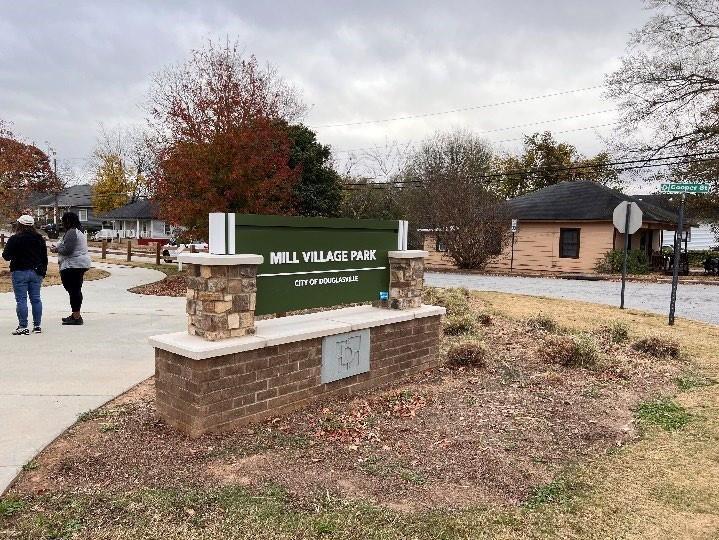
REGIONAL PARK
A regional park is typically the largest park within a system. These parks are normally found in the park systems of major urban cities, highly populated communities, or communities with pockets of high populations. The size of these parks varies from a minimum of 50 to 75 acres up to several hundred acres, depending on the type of activities and the amount of use. The service radius for this park classification is related to the facilities provided in the park andthe overall community composition. In many large urban systems where multiple regional parks exist, each park will serve a fivemile or 15-minute to 30-minute drive time for core recreation services. Each regional park may also serve an entire community if a unique or one-of-a-kind facility is being provided. Competitive regional sports teams are often hosted at regional parks.
SPECIAL-USE PARK
Special-use parks are designed to meet the needs of specific user groups. Examples include golf courses, zoos, and museums. Special-use parks are often good revenue generators. If maintained and properly staffed, these parks can provide a substantial cash flow for the designated entity. These facilities can vary in size according to the demand and type of layout. For example, a regulation size golf course (par 72) needs at least 140 acres, while an executive style layout (par 60) requires only 100 to 120 acres based on amenities such as driving ranges and practice facilities.
SPORTS PARK/COMPLEX
Sports parks/Complexes are parks that are dominated by athletic facilities. Most of these types of parks will also include a small amount of support facilities (e.g., walking tracks, playgrounds, and picnic facilities), but the primary function of the park is to facilitate organized sporting activities. Sports parks/Complexes vary in size, depending on the types of facilities being programmed. Rectangular
fields can range between 1 to 2.5 acres while individual tennis courts are not even a tenth of an acre. Once the programming needs of a sports park/complex are determined, a more accurate area requirement can be calculated.


NATURAL RESOURCE AREA/PRESERVE
According to the NRPA, natural resource areas are defined as “lands set aside for preservation of significant natural resources, remnant landscapes, open space, and visual aesthetics/buffering.” These lands consist of:
• Individual sites exhibiting natural resources.
• Lands unsuitable for development but offering natural resource potential (e.g., parcels with steep slopes and natural vegetation, drainageways and ravines, surface water management areas, and utility easements).
• Protected land, such aswetlands, lowlands, and shorelines along waterways, lakes, and ponds.
Acquisition of natural resource areas/preserves serves to enhance the quality of the community by maintaining a portion of its natural amenities.
GREENWAY
Greenways have become one of the most popular family recreation activities across the country. The value of greenways in terms of recreation, education, and resource protection is invaluable. Greenwaysserve as links between cities, parks, schools, commercial areas, and neighborhoods. They provide a safe mode of transportation that preserves the environment.
Typically, greenways vary between 10 to 14 feet wide of paved or natural surfaces. When developing a greenway system, corridors should be identified where people will access the area easily. Greenways connect elements within the community and incorporate all the characteristics of natural resource areas. Greenway corridors should be no less than 50 feet wide (except in neighborhoods, where 25 feet may be acceptable). In his article published in 1995, Julius Fabos, a former professor of Landscape Architecture at the University of Massachusetts, divides greenways into three categories – ecological, recreational, and cultural. While each group maintains its own definition, many greenways share characteristics of each.
• Ecological greenways are typically located along natural environments such as rivers,
ridgelines, and coastal areas. These trails provide connections to nature, protect and maintain biodiversity, minimize development, and provide for wildlife migration across natural and human- made boundaries.
• Recreational greenways commonly link elements that have diverse and significant landscapes. Many connect rural areas to more urban locales and range from local trails to larger systems. Most are paved trails that accommodate pedestrians, skaters, and bicycles.
• Cultural greenways connect areas of significant historic value and culture. Economic benefits from these types of trails may be significant if linkages can be directed toward areas of commerce to provide an infrastructure for commuting.
SCHOOL PARK
School park sites are an excellent way to combine resources and provide accessible recreation

amenities to the community. Depending on the school type, elementary, middle, or high school, the size of the park will be dictated by the available land adjacent to the school. Typically, middle and high schools are constructed with youth athletic fields to support team sports. School parks provide the basis for developing a community park or at the very least, youth athletic fields for recreation programs. The selection of school sites is determined by the school district, as well as the Citywide or Countywide distribution of students. The school site selection
criteria may or may not meet the needs for parkland distribution. When school park development is possible, guidelines for neighborhood and community parks should be followed to meet the needs of residents. When joint developments occur, features common to other parks in the City and surrounding cities (e.g., signs) should be used to identify the property as a public facility.
PRIVATE PARK/RECREATION FACILITY
As described by the NRPA, private parks/recreational facilities meet one of the two following characteristics:
“Private Parks, such as swimming pools, tennis courts, and party houses, are generally within a residential area developed for the exclusive use of residents and are maintained through a neighborhood association. They are not, however, a complete substitute for public recreation space. Private Recreation Facilities that are for-profit enterprises include health and fitness clubs, golf courses, water parks, amusement parks and sports facilities. Not-forprofit private providers include the YMCA, churches, and private schools and colleges that offer sports and recreation facilities.”
INDIVIDUAL PARK ASSESSMENTS
While these new park recommendations help to address the overall service area deficiencies for the city, facility deficits exist that must be addressed. In order to evenly distribute new facilities throughout the city, the planning team reviewed the park and facility inventories and provided recommendations to enhance facility diversity and remedy key facility deficits as in the examples provided below. Detailed recommendations for new or expanded facilities at existing city parks are provided in the individual park assessments below:

Park and recreation agencies continuously striveto provide safe, accessible, andenjoyable recreation opportunities to enhance their community’s overall quality of life. To ensure that this goal is being met, facility assessments are regularly performed to determine if a park is functioning as intended and what, if any, renovations are needed to improve the park user experience.
Facility assessments are performed in the field to review general park conditions in terms of facility age, overall safety, maintenance practices, and compliance with requirements of the Americans with Disabilities Act (ADA). This information is used by the planning team to develop recommendations for repairs and renovations, as well as establishing guiding principles to improve park quality.
CLUB DRIVE ADMINISTRATIVE OFFICE AND MAINTENANCE OPS
Address: 8578 Club Drive, Douglasville, GA 30134
Classification: Administrative Offices and Maintenance Operations
Acreage: 3 acres
Description:
Club Drive was once utilized as a water treatment plant. It was turned into office space that currently houses some of the administrative staff including the Assistant Director and Parks Maintenance Manager. Maintenance operations and vehicles, equipment and chemical storage are all housed onsite. There are concerns with consistent mildew smell throughout the facility. Office space is limited. This is prime cityowned property.
Observations: There is a mildew smell throughout the facility. Office space is limited. This is a prime city-owned property. Golf course maintenance equipment and chemicals are stored at this location causing inefficient use of staff time.
Recommendations: Recommendations to consider for this park include:
• Move all West Pines Golf Course Chemicals, Equipment and Staff to the Golf Course.
• Relocate Administrative Staff outside of Club Drive to temporary offices until a new Administrative Building can be built.
• Relocate maintenance equipment to Hunter Park.
FOWLER FIELD PARK

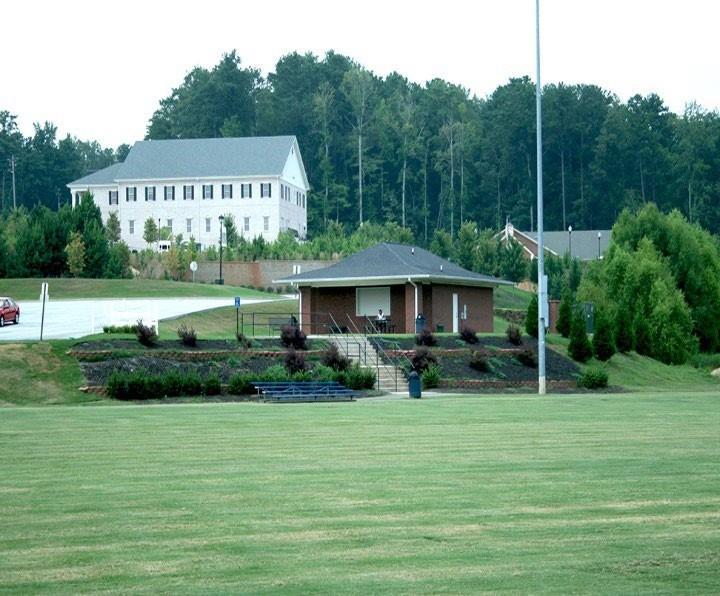
Address: 3270 Chapel Hill Road, Douglasville, GA 30135
Classification: Neighborhood Park
Acreage: 17 acres
Description: Fowler Field is a sports park The park includes three multipurpose rectangle grass fields. There is a new playground, a quarter-mile walking path and a concession stand building with restrooms and picnic tables.
Observations: The park was built in a floodway and 100year flood zone that borders Anneewakee Creek. The park experiences flooding during weather events which can disrupt usage for park users, program and rentals at this location. Two fields have limited lighting, while one field is not lit at this time. Adding LED lighting to all three fields would enable expanded hours of usage throughout the year. The concession stand building roof is leaking above the electrical panel which is a safety hazard. The walking path is not ADA accessible and has an uneven, cracked surface. ADA parking spaces are located farthest away from the playground. There is no ADA-sloped path to the restrooms from all the field and the walking track. Park users must either utilize the 2 levels of stairs or walk to the far end of the park and its current path to reach the upper-level restrooms and concessions. The fields are beautiful and meticulously maintained.
Recommendations: Recommendations for this park include:
• Add LED lighting to all three Fields.
• Add 10-foot ADA concrete walking path from parking lot into the park and around the fields.
• Develop an ADA-sloped path utilizing the berm in front of the restrooms near Fields 2 & 3.
• Renovate Concession/Restroom Building.
• Raise the Multipurpose fields to flood levels with subservice investigations for drainage installation.
• Consider synthetic turf field with storm water subsurface storage capacity.
• Fence electrical and utility boxes near concession/restroom building.
HUNTER MEMORIAL PARK BASEBALL COMPLEX
Address: 8830 Gurley Road, Douglasville, GA 30134
Classification: Community Park
Acreage: 81.4 acres
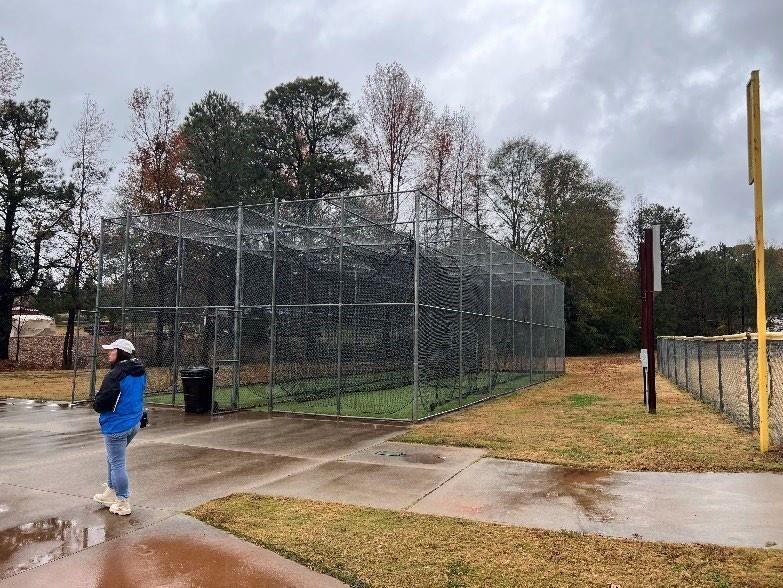

Description: Hunter Memorial Park has served as the flagship park in Douglasville for years. The Baseball Complex section of the park includes: 10 multipurpose ball fields, an adaptive field, 12 batting cages, concession stand with restrooms and a scorekeeper booth with restrooms. The setting is beautiful, and the park is well maintained. There are both individual seats and bleachers for spectators.
Observations: Fields 1 & 2 are experiencing soil erosion with drainage issues due to flooding between the fields during weather events. There is also flooding with standing water on Fields 7 & 8 when there is rain. Chandler Field current slope is causing flooding toward the infield at home plate. There is patchy grass on fields due to drainage/flooding issues. There is some standing water on warning tracks. The Adaptive Field has an uneven surface with standing water that is not draining. The batting cages have good drainage. They do not have electricity for extended practice times. The fencing on all fields is bent or damaged. Dugouts need upgrading. A particular concern is Webb Field dugout. It is not ADA accessible. It can only be accessed by steps. The storage building near Fields 7 & 8 is not being utilized to capacity due to flooding. The retention wall erosion near fields 7 & 8 is prevalent with extensive hill erosion next to the storage building. The baseball restrooms are in need of updates. The concession stand is not well maintained and is need of updates. The scorekeeper booth was renovated for athletic staff offices and is not utilized for play.
HUNTER MEMORIAL PARK BASEBALL COMPLEX
Recommendations: Recommendations to consider for this park include:
• Replace grass fields with turf
• Chandler Field needs to be regraded with a corrected slope to the sides
• Fields 1 & 2:
• Add planting to hillside near Fields 1 & 2 to stop/reduce erosion.
• Add Storm Water Inlets around Fields and Plaza to reduce flooding.
• Fields 7 & 8:
• Add Storm Water Inlets around Fields
• Add Retaining Wall behind Fields 7 & 8 to stop hillside erosion
• Consider renovation of storage at Fields 7 & 8 for additional storage/concessions
• Grade and resurface Adaptive Field for proper drainage and even surface
• Grade warning tracks with standing water.
• Skin Infields with grass surfaces
• Upgrade Ball Field lighting to LED
• Add Lights to Batting Cages for Tournaments, Rentals
• Replace bent and damaged fencing around all fields
• Replace/repair field irrigation controllers.
• Develop an ADA-sloped walking path to Webb Field Dugout
• Replace dugout posts, roofs, resurface pads, new benches, paint
• Renovate/upgrade baseball restrooms
• Renovate baseball concessions
• Add secured, branded garbage and recycling receptacles throughout park
• Scorebox - renovated for Athletic Staff - can house entire Athletic Staff team:
• Move two cubicle desks facing out to outside wall
• Add divider wall to create two cubicles.
• Consider temporary walls with doors to enclose office space.
• Extend electricity and internet connection.


HUNTER MEMORIAL PARK LAKE, WALKING TRAILS, WEDDING
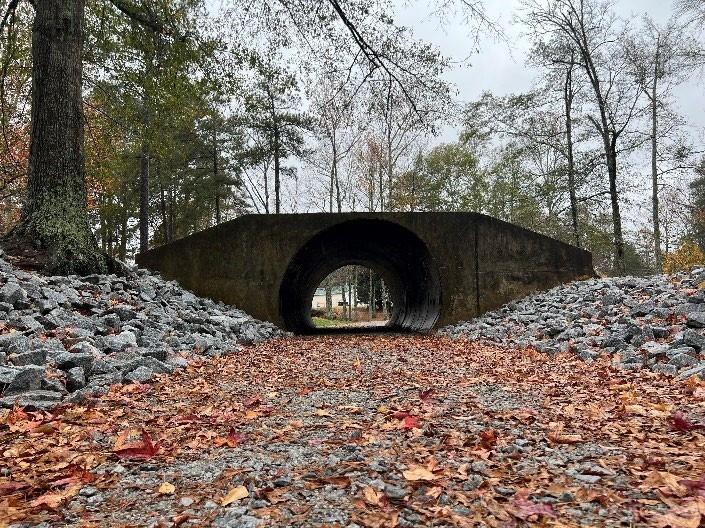
Address: 8830 Gurley Road, Douglasville, GA 30134
Classification: Community Park
Acreage: 81.4 acres
Description: Hunter Memorial Park is a beautiful community destination with a 5-acre lake located behind the community center with a walking trail with bridges. A second trail was created utilizing the old train tracks. There are two docks residents use to fish from. Near the lake is a picnic pavilion and a large smoker. A wedding pavilion is also located nearby offering a beautiful, serene lake backdrop.
Observations: .5-mile asphalt walking trail around lake as well as the asphalt walkway to the dock are in poor condition with cracks and uneven surfaces creating a trip hazard. A second walking trail was just recently created with Crush & Run and 57 Stone. The large stones are surfacing to the top creating an uneven surface for running/walking with potential injuries. The trails are not lit, which creates safety concerns and limited use year-round. The dock railings are in poor condition and all the bridges are in need of repair. The wedding pavilion and pad should be renovated and/or replaced. Heavy, unsecured picnic tables are strewn throughout the park. Transportable Trash Receptacles on wheels, commonly used for large events, festivals and concerts, are being used in the park rather than stationary outdoor trash and recycling receptacles. The Picnic Pavilion is in good condition.
Recommendations: Recommendations to consider for this park include:
• Repair and repave asphalt or resurface the .5-mile walking trail with concrete
• Repair and repave the asphalt walkway to the dock or consider resurfacing with concrete extending from the sidewalks
• Remove the Crush & Run/57 Stone mix on the 2nd trail (old train track) and replace with solely Crush & Run to avoid uneven rocks and potential injuries to users
• Add LED lighting to the trails for user safety and extended use into the evenings throughout the year
• Replace the dock railings and rail caps with prefabricated materials
• Renovate and update all bridges with prefabricated materials
• Renovate and paint or replace wedding pavilion and pad
• Secure all picnic tables.
• Replace transportable trash receptacles with secured, branded stationary trash and recycle receptacles throughout park and system.
HUNTER MEMORIAL PARK TENNIS COURTS, BOYS & GIRLS CLUB
Address: 8830 Gurley Road, Douglasville, GA 30134
Classification: Community Park
Acreage: 81.4 acres
Description: The Tennis Complex includes seven Tennis Courts in excellent condition with a pavilion/restroom building. The courts are lighted and USTA certified. Directly above the Tennis Center at the top of the hill is a community building with a gymnasium, indoor restrooms and classrooms utilized by the Boys and Girls club in partnership with the City of Douglasville. Adjacent to the facility is an outdoor basketball court for teens and pickleball courts utilized by adults and seniors on the same pad.
Observations: The Tennis Complex and pavilion restroom facilities are in great condition. There is standing water outside the tennis facility after rain. Transportable trash receptacles on wheels are present. To access the Boys and Girls Club and the outdoor courts one must walk up a steep graded, gravel hill. There are no restrooms accessible from the outside when the center is closed. Facility users must walk down the hill to access the tennis restrooms. Teen basketball and adult pickleball play side-by-side may pose some concerns if there are heated conflicts among the teens, creating the perception of an unsafe space for the pickleball players.
Recommendations: Recommendations to consider for this park include:
TENNIS COMPLEX:
• USTA certification does not allow pickleball striping
• Relocate the pickleball courts in the park, making them accessible
• Drainage inlets on outsides of tennis courts
• Add bleachers to each side of the court complex
• Secured, branded garbage and recycling receptacles throughout park
BOYS & GIRLS CLUB with adjacent Courts:
• Add a restroom addition for the outdoor courts after hours and during weekends.
• Consider the addition of a roller-skating facility in place of the pickleball courts.
• Repair and pave the gravel road up the hill to the Boys & Girls club.
Address: 8830 Gurley Road, Douglasville, GA 30134
Classification: Community Park
Acreage: 81.4 acres
Description:
Upon entering Hunter Memorial Park, residents are welcomed by the Ike Owings Community Center with two levels of parking and surrounding acreage including two colorful playgrounds in excellent shape. Playground #1 and Playground #2 which is ADA.
Observations: The front of Ike Owings Community Center lacks beautification as do the parking lot islands. The concrete steps leading to the second level parking area are chipped. Parking lots are in poor shape. There are drainage issues around both playgrounds. Playground #1 has limited walkways and seating areas. Playground #2 has standing water on the playground and grass surface. The picnic area holds water creating a washout and mud. The flat open grassy area adjacent to this playground slopes to one drain. There is a retention pond also adjacent to this playground that never fills higher than 6-8 inches deep. It is fenced and an eyesore. Heavy, unsecured picnic tables are strewn around both playgrounds in random places.
Recommendations: Recommendations to consider for this park include:
FRONT ENTRANCE, PARKING OF IKE OWINGS:
• Clean and repair the steps leading to 2nd level parking.
• Repave and restripe parking lots and spaces
• Add native plantings to the front of the community center and parking lot islands
PLAYGROUND AREAS:
• Add drain inlets to both playgrounds.
• Add additional walkway and seating areas to Playground #1
• Playground #2:
• Re-slope and add drainage surrounding Playground #2 to eliminate flooding on and in grass area next to the playground
• Consider open play area or Additional Play equipment.
• Add plantings on side of hill
• Fence in grassy area from playground for expanded play
• Create a bio retention pond offering a natural ecosystem and nature-based education facility at retention area near Playground #2
• All picnic tables should be secured.
• Add secured, branded garbage and recycling receptacles
• Utility Boxes should be fenced to secure access from playground users
HUNTER MEMORIAL PARK MAINTENANCE, DISC GOLF, OTHER: PARK
Address: 8830 Gurley Road, Douglasville, GA 30134
Classification: Community Park
Acreage: 81.4 acres
Description: There is a maintenance building onsite at the park allowing for convenient access to equipment necessary to maintain the parks. There are gas tanks onsite near the maintenance building. There is an Honor Guard Memorial onsite in good shape. The park also has a horseshoe pit, and an 18-Hole Disc Golf Course interweaved throughout the entire property. There is a large storm drain behind the community center and a short brick wall with stone tops.
Observations: The maintenance building has no electricity, limiting the workday of the maintenance staff to “daylight hours” only. The Gas Tanks are not fenced in. When it rains, there is flooding behind the memorial that could eventually damage its foundation. The storm drain behind the community center holds water and is accessible by anyone in the park, adults and children alike, which is a safety issue. Children can drown in as little as 1-inch of water. This was reported immediately to staff. The retaining wall is cracked near the open drain. Brick wall Stone tops are missing. The Horseshoe Pit is in poor condition. The Disc Golf Course has the following issues: Hole #2 is inches from entrance road curb, Hole #3 has been removed due to construction, Hole #4 is missing due to construction, Hole #17 must play through people walking directly through the player’s “shot” or disc throw, which can cause injury to those unaware or aware. The Back 9 Holes are very spread out.
Recommendations: Recommendations to consider for this park include:
MAINTENANCE AREA:
• Add electricity to the Maintenance Building
• Gas Tanks for vehicles and machinery need to be fenced.
HONOR GUARD MEMORIAL:
• Add drains to correct standing water issue STORM DRAIN:
• Accessible open water safety concern
• Fence the drain immediately
• Repair Cracked retaining wall near open drain. BRICK WALL:
• Add stone tops - can be glued down HORSESHOE PIT:
• Needs to be replaced DISC GOLF COURSE:
• Refurbish Disc Golf Course:

• Move Hole #2 Tee forward into the park away from the curb
• Hole #3 - down due to construction of DCSS Arena
• Hole #4 Missing - down due to construction of DCSS Arena.
• Consider relocating Hole #17 Tee.
• Consider full redesign or back 9-Hole redesign with condensed spacing.
IKE OWINGS COMMUNITY CENTER – Lobby, Restrooms, FF&E
Address: 8830 Gurley Road, Douglasville, GA 30134
Classification: Community Park
Acreage: 81.4 acres
Description: The Ike Owings Community Center is a 16,000 square foot facility located in Hunter Memorial Park and is in good shape. There have been some interior renovations over the past several years. It includes a 100-person ballroom with an adjacent kitchen, meeting rooms with AV Equipment, one classroom, an arts & craft room, new fitness room and a dance studio with original wood flooring.
Observations: Building hallways, lobby tile floors and restrooms are in good condition. Restroom counters/sinks are not ADA nor are the soap or hand dryer systems. Front and back doors in the lobby are upgraded toADA with automatic entries. The side doors need to be upgraded. The reception desk is not ADA accessible. An acrylic barrier added during Covid affects registration communications of both registrants and staff. Several canned lights were not working. New paint is needed throughout the facility. Ceiling light fixtures including canned lights are not all working and are not LED. Staff is confirming the age of the HVAC system.
Recommendations: Recommendations to consider for this park include:
• Repaint Community Center
• Upgrade Side Facility Doors
• Upgrade Lobby furniture to be more inviting for parents, families
• InstallADA accessible counters, water/soap system and hand dryers in the restrooms
• Rework the reception counter with an ADA level counter and remove/revise the plexiglass barriers for more effective communications.
• Change lights to LED lighting.
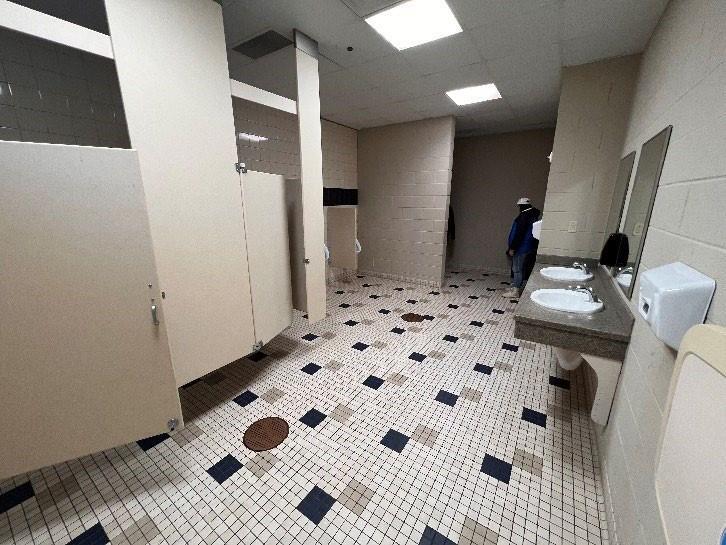

IKE OWINGS COMMUNITY CENTER – Multipurpose & Classrooms
Address: 8830 Gurley Road, Douglasville, GA 30134
Classification: Community Park
Acreage: 81.4 acres
Description: The Ike Owings Community Center is a 16,000 square foot facility located in Hunter Memorial Park and is in good shape. There have been some interior renovations over the past several years. It includes a 100-person ballroom with an adjacent kitchen, meeting rooms with AV Equipment, one classroom, an arts & craft room, new fitness room and a dance studio with original wood flooring.
Observations: The walls in all the rooms and throughout the facility are in need of new paint. The AV equipment is in good condition.
ROOM 111 CLASSROOM – Small kitchen area with older sink with minimal counterspace and cabinets. ROOM 112 CLASSROOM – In good shape except for paint.
ROOM 113ART & CRAFTS – Water-stained ceiling tiles from HVAC leaks.
ROOM 118 DANCE ROOM – A great facility used for various programs. The front wall is mirrored. The mirror is currently cracked in various locations with tape on it. The wood flooring is in good condition. There is a wall of wooden cubbies, and a storage closet door made from wood. They have been “dinged” by usage over the years. There are shelves on the back wall sticking out at head/body level of dancers or other users of the facility.
ROOM 202 KITCHEN ADJACENT TO BALLROOM – This facility was renovated in 2012. It is highly utilized with rentals, programs, and summer camps. The cabinets are not in the best shape and are not conducive for area. There is a refrigerator and warm oven available for use.
ROOM 203 BALLROOM – The original wall divider to create two rooms is in poor condition. There is good storage space. The serving counter from the kitchen does not match this area. There is water leaking from the bottom of the outside patio door.
ROOM 208 MEETING ROOM - Room lacks storage and has an original sink with minimal counter space that includes upper and lower cabinets.
NEW WEIGHT ROOM – This room includes new free weights, cardio equipment and fitness flooring.
Recommendations: Recommendations to consider for this park include:
ROOM 111 CLASSROOM
• Complete kitchen upgrade
ROOM 112 CLASSROOM
• Repaint
ROOM 113 ART & CRAFTS
• Confirm leaks from HVAC System are repaired
ROOM 118 DANCE ROOM
• Replace cracked Mirror
• Remove shelves on back wall for safety of dancers / other users
• Consider painting cubbies. Repair and paint or replace closet door
ROOM 202 KITCHEN ADJACENT TO BALLROOM
• Consider complete renovation and upgrade to the commercial kitchen
ROOM 203 BALLROOM
• Replace serving counter to match upgrades to Kitchen
• Repair or weathership door to patio
• Replace Wall Divider
ROOM 208 MEETING ROOM
• Repaint Walls and door
• Upgrade to Single Sink, Counter, Shelves
NEW WEIGHT ROOM
• Consider Ceiling Fan Addition
IKE OWINGS COMMUNITY CENTER – Administrative
Address: 8830 Gurley Road, Douglasville, GA 30134
Classification: Community Park
Acreage: 81.4 acres
Description: The administrative offices are unable to accommodate the proper office, work and break spaces for current staff and will be unable to accommodate future staff growth.
Observations: STAFF OFFICES - Office space is very limited at Ike Owings Community Center. There is a make-shift small break area for staff that currently exists. There is no break room. The recreation manager is in a large office (102). The workroom (103) currently houses a copier, shelving and cabinets. There is no room for additional staff as the team grows. Athletic staff is being housed in the baseball complex scorekeeper booth. The administrative team is split into different locations with the remaining staff offices house at Club Drive.
Recommendations: Recommendations to consider for this park include:
STAFF OFFICES
• New administrative building is needed at Hunter Park.
• Suggest moving Recreation Manager to office 105.
• Suggest creating 2 cubicle spaces in office 102
• Suggest creating a new workroom space in current the makeshift breakroom location.
• Suggest creating a staff Breakroom in 103.
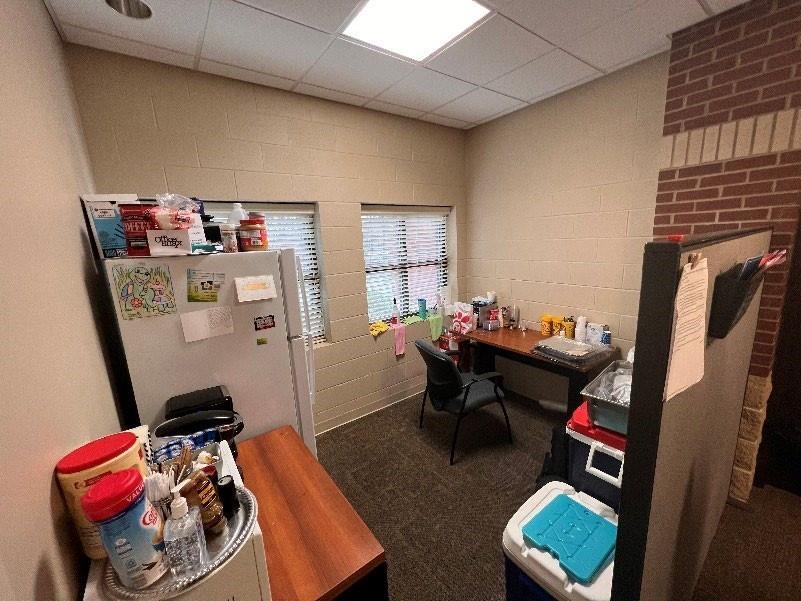

JESSE DAVIS PARK and ALICE J. HAWTHORNE COMMUNITY CENTER
Address: 7775 Malone Street, Douglasville, GA 30134
Classification: Community Park
Acreage: 25 acres
Description: Jesse Davis Park has just been completely renovated into a crown jewel of Douglasville. This park includes a new turf multipurpose field, playgrounds and pavilions, three new facilities: a gymnasium with a fitness center and track, a senior center and a new outdoor aquatic facility and splash pad.
The Alice J. Hawthorne Community Center is approximately 16,000 square feet built in 2002 and features a gymnasium, meeting rooms and a warming kitchen.
Observations:
Jesse Davis Park Is currently under construction. The outdoor basketball courts are in good condition. The upper road to the Alice J. Hawthorne community center dead ends into a gravel road with no signage to indicate the property is not a continuation of the park. It currently gives the perception to visitors it is a trail. There is also nothing there to block traffic, as it is wide enough for a car to drive through. The berm between the upper and lower portions of the park blocks sight lines to the lower field.
Alice J. Hawthorn Community Center has experienced roof leaks. The lobby has low lighting, and the reception desk is placed so the staff is not facing front to greet visitors. There is also a barrier between registration staff and visitors making communication difficult, especially for seniors or people with disabilities. There are no room numbers/names on the interior doors and no emergency exit plans posted in the facility or the rooms. Staff office space is limited.
Recommendations: Recommendations to consider for this park include:
Jesse Davis Park:
• Block through traffic on the upper road with large boulders allowing walkers from adjacent neighborhoods to access the park.
• Place signage across back of property identifying it as private property.
• Remove brush and trees from the upper berm to open sightlines to the field and activity below.
• Reduce the berm height. This allows better sightlines for safety reasons and for families who are utilizing several areas of the park at once.
Alice J. Hawthorn Community Center:
• Leaks to the Community Center Roof will be repaired.
• Staff offices will be resolved with new facilities
• Add lighting options to the lobby to make it brighter for all users and all abilities.
• Reception staff/desk should be front facing to allow for better supervision and site lines to all areas.
• Create a larger opening or remove the barrier to registration to allow for better communication for visitors of all abilities and a higher level of customer service. All receptions desks should be ADA accessible.
• Add required signage throughout the facility.
MILL VILLAGE PARK
Address: 8320 Grady Street, Douglasville, GA 30134
Classification: Mini Park
Acreage: .9 acre
Description: Mill Village Park, a dynamic mini park, has been recently renovated within the past 5 years. This park is walkable from the adjacent neighborhood.
Observations: The park offers a wonderful ADA accessible concrete walking trail with positive messaging for families and benches. This unique feature is a special one. The playground area has large shade structures but minimal play features. There is a covered pavilion with picnic tables. The pavilion can be rented by groups. There is not a garbage can at the pavilion. There is no parking lot.
Recommendations: Recommendations to consider for this park include:
• Add playground amenities for all ages and abilities: swings, slides and climbing features.
• Rocks on the side of the playground for beautification have sharppoints. Consider replacing them with playground rocks.
• Add a waterless restroom for group rentals and park users.
• Add In-ground Grill and Hot Coal Container for Rentals.
• Add Stationary, Branded Garbage and Recycling Bins near pavilion.
• Add street parking spaces to include ADA


TOWN GREEN PARK
Address: 6840 Church Street, Douglasville, GA 30134
Classification: Special Use Park
Acreage: 2 acres
Description: Town Green Park, host to many events, concerts and exercise programs is a new beautiful, state-of-the-art concert venue with a 3700-person amphitheater and green space with benches, walkways and park amenities including a splash pad and playground equipment in the heart of downtown Douglasville.
L
u
m
Observations: Walkways are made of different materials (concrete, wood, stone) for aesthetics purposes creating an uneven surface, particularly the placed stone. The splash pad was developed with small boulders which presents a safety hazard for all users when the surface is wet and slippery.
Recommendations: Recommendations to consider for this park include:
• Remove Splash Pad Boulders and replace them with safe water elements for all ages. Because the splash pad is open to the community with no fencing or staff monitoring it, no one is present to tell children to “not climb” onto the rocks or “do not run” on wet surface (standard rules). Kids run around and if they slip and fall, they could be accidentally injured.
• Walkways through the venue can make access and movement throughout the venue a concern for seniors, residents with balance issues or people with physical disabilities. Smooth out the walkway surfaces for safety, ADA and user focus rather than for aesthetics. Suggest review of materials used to consider needed changes.
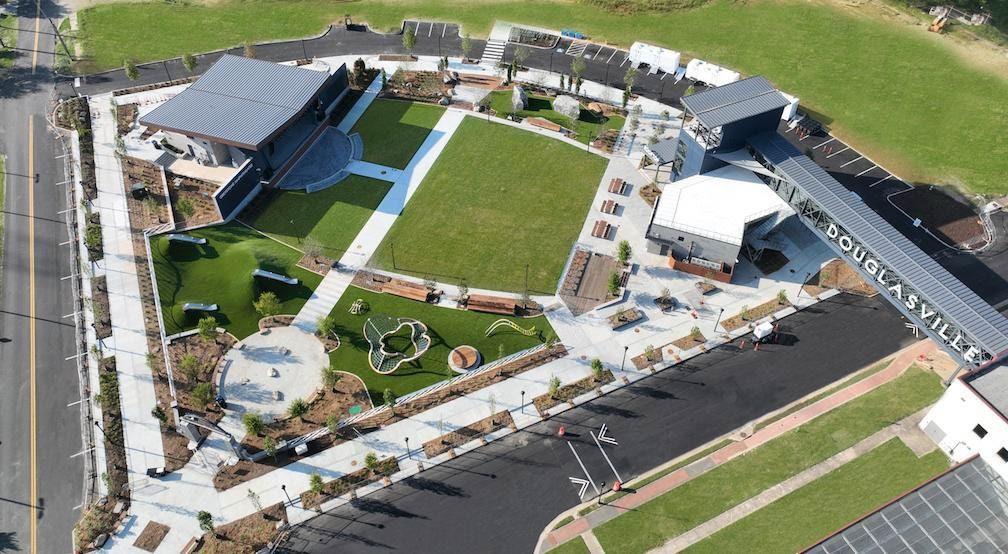
WEST PINES GOLF COURSE
Address: 9090 Rose Avenue, Douglasville, GA 30134
Classification: Special Use Park
Acreage: 164.3 acres
Description: Douglasville has another crown jewel in West Pines Golf Course. It is meticulously maintained 18-Hole course with paved cart paths, sand bunkers, a driving range, a training facility, a pump house that supplies irrigation from the lake to the course, a clubhouse with minimal food service, restrooms and a pro shop, a beautiful cart barn, a large maintenance building and a smaller storage building with excellent yard space and a new privacy fence for storing equipment. There is also a restroom on Hole #9. This course is up to par with many private courses nationwide.
Observations:
Course and Greens
• Cart Paths are uneven and cracked due to age and tree roots
• Greens are overtaken by grass by 2-5 feet.
• There are currently 4 Tee Box lengths on the course, the green tee being the shortest.
• Drainage issues creating washout in fairways, near cart paths throughout
• Uneven terrain with flooding on some holes.
• Stream Bank Erosion.
• There is erosion across the course
• Bridges have settled and cracked - safety issue:
• Deteriorating Beams and Planks
• Bridge Base is broken and falling apart on Hole #12
• Visibility off the driving the range is almost non-existent. Players cannot see balls land.
• One restroom on course at Hole #9 needs updating.
• Electrical Lines in 2 Fairways (10 & #12)
• New cart barn – beautiful
• Beautiful clubhouse restrooms, building with commercial kitchen, covered outdoor seating area
• Club House office and indoor lounge space are limited Irrigation System
• The irrigation system is functioning at 25%
• Pump Station and pumps need replacement - repurposed from 1986:
• Small pump is broken adding more pressure to the system
• The pump house is falling apart with leaks
• Irrigation Ponds are full of silt
• Airport jet fuel pipeline electrical system vibration disrupts the golf course irrigation system Maintenance
• New Machine Shed/Maintenance Building with Large Privacy Fencing enclosing a large area:
• Two makeshift offices with desks are set up in the building.
• Large open patio space.
• No Break Room Area.
• Old brick building in proximity with no electricity.
• Chemical Storage Facility is in bad shape with flooding inside electrical areas.
WEST PINES GOLF COURSE
Recommendations: Recommendations to consider for this golf course include:
Course and Greens
• Repair and Resurface Golf Cart Paths.
• Reclaim shrunken greens with varying types of grass to eliminate “creep”.
• Enhance course beautification with native plants.
• Add a youth tee box as younger players take to the course through new programming.
• Repair and re-establish slopes where needed in fairways.
• Stream bank restoration on creek.
• Replace wooden bridges with prefabricated bridges.
• Driving Range re-design/repairs should include irrigation expansion to that area, Toptracer technology, new fairways and targets. Covered area with seating, climate controlled for events and higher revenue stream.
• Add putting green near Hole #1.
• Update the restroom on Hole #9 and add a shelter/pavilion onto the building.
• Partner with the Utility Company to bury the utility lines on Holes #10 and #12.
• Consider clubhouse expansion for additional staff offices and indoor lounge areas.
• Parking redesign for additional spaces with better flow.
• Consider environmental education location that would not interfere with golf play. Irrigation System
• Suggest replacement of pump station ASAP:
• Replace pump house
• Dredge pond
• Replace Irrigation System.
• Jet Fuel pipeline sends 50v of electricity - repeater station ground zero negatively affects the irrigation’s electrical:
• Once/week flyover, good communication from vendor.
• Suggest irrigation/electrical vendor to review Maintenance
• The makeshift staff office space in Maintenance Shed is not conducive without HVAC as temperatures fluctuate seasonally.
• Expand new maintenance shed in the back with overhang and fencing:
• Create storage space for all equipment from Club Drive
• Transition all equipment and chemicals from Club Drive to fenced in maintenance area.
• Repair/Replace Chemical Storage Facility.
• Repair and update the chemical building.
• Add chemical room addition with water access to the new maintenance shed by enclosing the patio area.
• Add Sustainable Equipment Wash Rack.
• Consider upgrading the old brick storage building into much needed training center and staff office space to accommodate all staff onsite:
• Add air-conditioning, offices, meeting and break room
• Move staff to golf course, and makeshift maintenance offices to brick building
• Electrical, Water, Plumbing is currently available at the site.
• Remove/repair the maintenance bridge access at hole #9 and consider a new access point to course from maintenance area; add a new bridge (less slope) to eliminate play interference.
WILLING WORKERS COMMUNITY CLUB PARK
Address: 8085 Thompson Street, Douglasville, GA 30134
Classification: Neighborhood Park
Acreage: 5 acres
Description: Willing Workers Park underwent renovation in 2022 with new playground equipment, basketball court, three picnic pavilions, a walking path, a nature trail, memorial garden (Keith Garden) and parking.
Observations: There are limited playground amenities for children of all ages. The pavilions are wired with power but currently have no working outlets. The nature trail has a high level of erosion due to stormwater runoff. The bridge is too narrow to get a bobcat over it There is some erosion on the hillside. There is a raised stormwater pipe in the grass near the memorial garden. The storm water “pond’ is an eyesore. Pavilion #1 has no ADA access or table. Restrooms and structures are in great condition.
Recommendations: Recommendations to consider for this park include:
• Pave the natural walking trail for ADA and senior access and help with drainage issues.
• Add additional playground amenities, swings, slides, etc. for all ages.
• Add working power outlets on pavilions
▪ Pavilion #3 users have to plug into an outlet across the walking path causing a trip hazard.
• AddADA curb cut from parking lot to Pavilion #1. There is currently none.
• ADA table located in Pavilion #3 needs signage.
• Replace bridge to nature trail (future trailhead). Too small for a bobcat hindering much trail work needed.
• Level Nature Trail to make it more accessible and safer.
• Divert storm water runoff affecting nature trail.
• Reroute protruding pipe away from the middle of the grass to eliminate a trip hazard or “fence”.
• Move Beautification Boulders away from the playground. They are a safety hazard as they are pointed and sharp. Consider playground boulders.
• Develop a bio retention pond from the storm water pond creating a natural ecosystem and nature-based education facility.

WORTHAN PARK
Address: 6601 Parker Street
Classification: Mini Park
Acreage: 2 acres
Description: Worthan park is a 3-acre park located within walking distance to downtown Douglasville. It is adjacent to the railroad tracks and a neighborhood and provides a unique opportunity for a passive greenspace with great potential tor activation. The park has a wooden gazebo, historic lights, a large open grassy area, a UGA Extension butterfly garden, benches and a parking lot.
Observations: The historic lights are in need of electrical updates. The wooden gazebo is in poor shape. The UGA Extension Butterfly Garden is separated by the park by the power station and tower on the street side. The benches near the edge of the park are facing outward away from the park. There are questions regarding ownership of the park property. The city maintains the park. The signage for this park does not match any others in the system.
Recommendations: Recommendations to consider for this park include:
• Move Butterfly Garden into park as a feature.
• Add large swabs of plantings in its place with additional vegetation for visual barrier to power station.
• Add walking track around the perimeter.
• Renovate or replace existing gazebo.
• Repair Historic Lights with new timers, electrical, bulbs.
• Turn outward facing benches inward- add more seating.
• Add Picnic Tables - close proximity to downtown food establishments.

GENERAL FINDINGS AND RECOMMENDATIONS
The facility assessment findings identified some general trends throughout the system. Overall, the facilities are in good condition. It is evident that Department staff has identified ways to address park maintenance concerns. However, the planning team noted that there appears to be a relatively large scale of deferred maintenance within all of the facilities that continues to diminish the quality and function of these facilities as time progresses.
The planning team noted that these parks have a broad range in age, maintenance levels, design standards, and compliance with safety and ADA codes, which is not uncommon for a park system of this size. The Department regularly undertakes renovation projects to rehabilitate old or non-functional park facilities to current standards and improve the overall quality of the system. Although specific needs vary between parks, several issues were found to be consistent throughout the city, including stormwater issues, the need for general maintenance, and ADA accessibility issues. The following summary recommendations should be evaluated by Department staff and implemented where feasible:
A large issue facing both public and private recreation providers is the ability to enhance access for disabled patrons. Park and recreation departments are not exempt from this requirement, and legislation dictates that primary park amenities be barrier-free. Primary access routes as described in the Recommendations for Accessibility Guidelines: Recreation Facilities and Outdoor Developed Areas, by the U.S. Architectural and Transportation Barriers Compliance Board (ATBCB), are defined in the following manner:
Outdoor recreation access routes are the paths that connect the primary developed spaces and elements that are basic to the recreation experience being offered at the site. For example, the outdoor recreation access routes at a picnic ground are the paths linking the parking area, restrooms, picnic units, and water hydrants. While many of these elements – parking area, restroom, and water hydrant – are not the primary reason for a person to visit the site, they are basic developed elements that serve all visitors.
Designers and managers, in consultation with users, must determine which of the developed activities and elements at a recreation site are basic to the recreation experience being offered. Further, theymust ensure that there is a comprehensive system of outdoor recreation access routes that connect all primary elements and spaces with each other and with accessible parking spaces and facility entrances. This determination should be based upon visitor expectations as well as the level of development at the site.”
The ADA regulations were updated in July of 2010, when President Obama signed the legislation that governs the design standards. The new standards offer more governance and specifics than the previous standards but still leave room for interpretation for some park facilities; however, the standards are very specific in their requirements for all playgrounds, hard courts, pathways, spectator areas, fishing piers, water play features, restrooms, and programming spaces to be accessible. The guidelines provide specifics on maximum vertical and horizontal slopes that can be used along access routes if they are to be compliant. (ADA Standards for Accessible Design - routes within a Site §206.2.15.)
The park system recommendations address how best to ensure compliance with accessibility requirements of the Americans with Disabilities Act (ADA). These system-wide recommendations address existing conditions, use patterns, and the potential for redevelopment and expansion. Equitable access should be prioritized to reduce the limitations of service. There are facilities in the city's park inventory, some that still contain original design elements that are not in compliance with current accessibility codes. The planning team observed instances of non-compliant parking spaces and pedestrian routes to primary use areas such as restrooms and registration desks. Some athletic facilities did not have accessible routes to team and spectator areas. Re-evaluation of the total system on a recurring basis is recommended to continue to monitor park conditions for code compliance.
PLAYGROUND SAFETY STANDARDS
Another prominent issue within some park systems is the non-compliance of playground equipment to safety standards by organizations such as the American Society for Testing and Materials (ASTM), the U.S. Consumer Product Safety Commission (CPSC), and the International Play Equipment Manufacturers’ Association (IPEMA). The standards proposed by these organizations are meant to serve as a guideline to help create atmospheres that are safe and pose a minimal threat of injury. Studies show that many injuries sustained on public playgrounds are to the head a result of falls from the play structure to the ground. For this reason, consideration has been given as to what the critical fall height would be in which a fatal head injury might occur. Guidelines have been established measuring the impact performance of various materials. As with ADA issues, alternatives should be studied, and a standard established for implementation of safe play environments throughout the parks system.
Safety surfaces should be under specific consideration, with options lying under two main categories:
• unitary materials (mats, tiles, poured-in-place rubber surfacing, etc.) or
• loose-fill surfacing materials (engineered wood fiber, rubber mulch, pea gravel).
The use of the latter is common in many park systems, but it should be noted that these materials require much higher maintenance to maintain safety ratings. Newer poured-in-place rubber surfaces are becoming more cost effective, as they involve a higher initial cost but eliminate the need for annual maintenance and material. costs. As playgrounds are added to the system and older equipment continues to be updated, this type of surfacing should be examined as an alternative. The planning team recommends that at least one Department staff person maintain a playground safety certification (Certified Playground Safety Inspector, CPSI) to monitor and report playground conditions and limit liability. The certified staff person should minimally hold a supervisory position for oversight and delegation of safety-related tasks and maintenance. This is a standard practice in public park agencies across the country.
FACILITY DESIGN STANDARDS
Facility design standards create an overall unified look that can be achieved through standard site furnishings and architectural materials. A standard building and site furnishings palette would create a consistent look and ease maintenance coordination. A unified site furnishings package, including commercial-grade trash receptacles, tables and benches, standardized fencing materials, water fountains, street and security light fixtures, and other common site equipment, should be established. The basis for creating a strong park facility image is the utilization of design guidelines and standards that allow a visitor to identify a park immediately by the elements that are present.
It is recommended that a wayfinding and information signage system be developed, and consistent signage be installed at all of the city’s facilities. A signage program that is attractive, coordinated in design, and incorporates the parks branding and pertinent information canraise the community’s awareness of Douglasville’s parks and facilities and attract visitors. These signs also serve to convey important information to park visitors.
After accessing facilities in the city of Douglasville’s parks system, the planning team has developed a series of recommendations for improving access to facilities and programs desired by the community. The planning team identified six areas where parks or recreation facilities are needed based on spatial analysis and public consensus. The planning team also identified needs to expand on current facility inventories to meet level of service standards consistent with similar recreation providers across the nation. These additional facilities also consider the ongoing increases in demand for services as the community's population continues to grow over the next decade.
Recommendations for improvements and renovations to existing facilities were also substantiated based on field observations of all of the City's parks. Issues related to facility age, condition, and code compliance varied between facilities but were generally determined to be fair. While these facilities remain functional and able to facilitate department programming and general recreation, considerable investments will be needed to address deferred maintenance issues that have accrued over the years. Furthermore, the recommended improvements will enhance the overall quality of the city's parks and facilities, which will help the department meet the community's desire for quality recreation opportunities.
TRAILS AND GREENWAYS
Trails and greenways are an incredibly critical component of the community park system. They are also highly valued by the community as described in the Needs Assessment section of this report. Trails and greenways were the second highest requested facilities from the public input collected for this plan. There is a desire to expand the trail system, particularly paved trails, to new parts of the community while also connecting parks. In doing so, the community will begin to connect like never before throughout Douglasville Such connections contributestothe overallrecreational opportunitiesforresidents and visitors. Trails and Greenways not only promote users to get out and into the parks, but they allow community members the opportunity to connect with neighbors. Additionally, trails and green space can have a great impact on community health and physical inactivity.
Trails will continue to improve the quality of life in Douglasville by providing opportunities for walking, jogging, and biking while they enhance activities such as bird watching and photography to name a few. Maintaining, improving, and developing a trail system will strengthen connectivity between parks, community services, businesses, and nature which in turn can stimulate future development, and offer new spaces programs, activities and events. Trails development remains one of the best methods to add natural resources to the park system. Trails provide a recreational amenity for a community, as well as an alternative form of transportation.
Multi-use trails are pathways used by pedestrians, runners, bicyclists, wheelchair users, and other non-motorized users. Pathway surface materials should be provided to enable year-round use of the trail corridor and minimize maintenance needs. A hard, all weather, flood resistant smooth surface is recommended. The usable width, horizontal clearance, horizontal alignment, and grade required for a multi-use path are dependent on the volume and mix of users. The minimum paved width for a two-directional shared-use path is 10 feet. Typically, widths range from 10 to 14 feet. Secondary/minor pathways would be 6-8 feet wide.
CONNECTIVITY ANALYSIS
The National Recreation and Parks Association (NRPA) has established the “three pillars,” which are guiding principles for creating a better life for everyone to build strong, healthy, and resilient communities. One of these pillars, equity, establishes the principle of ensuring all people have fair and just access to the benefits of high- quality, local parks and recreation. One way that parks and recreation providers strive to provide equitable service is to enhance the overall connectivity between public spaces, schools, places of business, and residential areas. Over the last few decades, community planners across the nation have begun a shift in mindset to facilitate this access through safe pedestrian corridors, rather than vehicular infrastructure.
The current trail planning initiatives that are being undertaken by the city consider the need to connect the community through these pedestrian corridors. New facility recommendations were provided in locations where these future corridors are intended to extend. Any future park and recreation planning should also consider providing access to this overall network once the master plan is completed.
The Trail Network proposed on the following Trails Map includes:
• Combination of cross-country pedestrian trail networks as well as roadside connections through corridors
• Connections to existing and proposed properties.
• Connection made crossing the existing railroad, which would connect the North and South portions of the city that have been historically divided.
• A pedestrian bridge or underground connection would need to be made to cross the existing railroad.

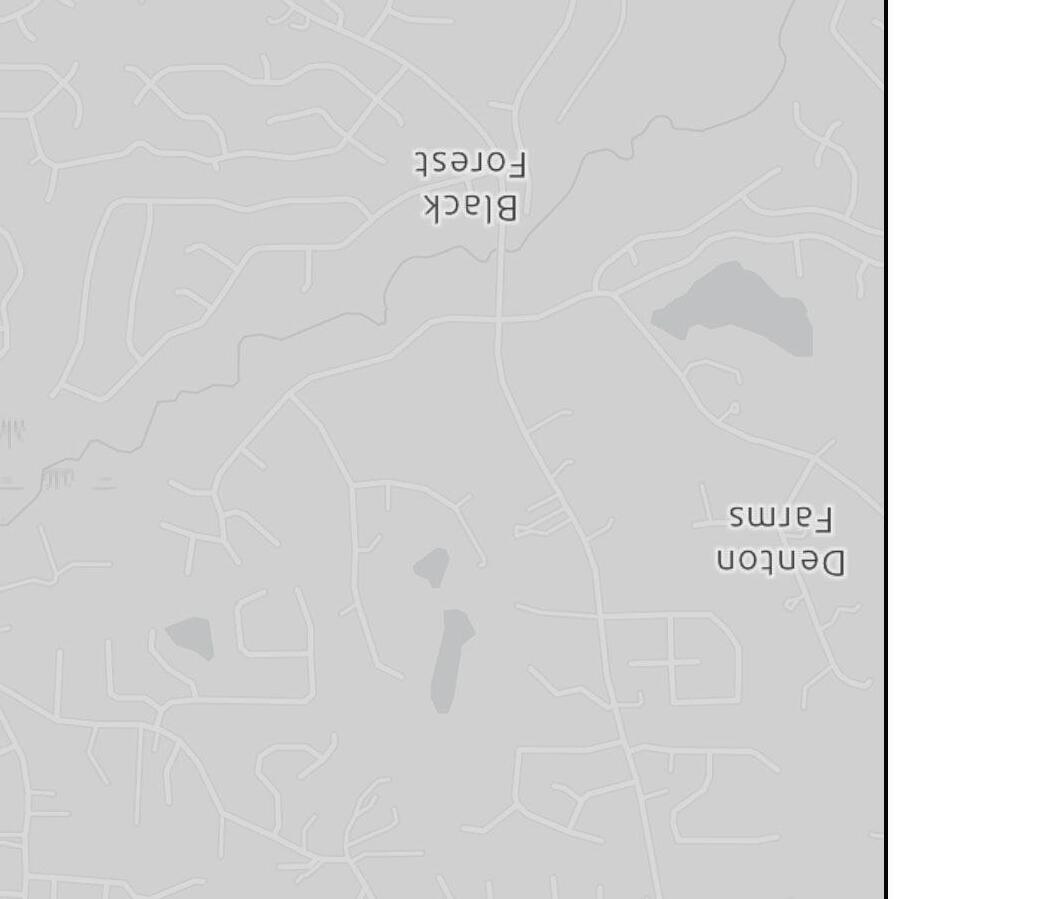
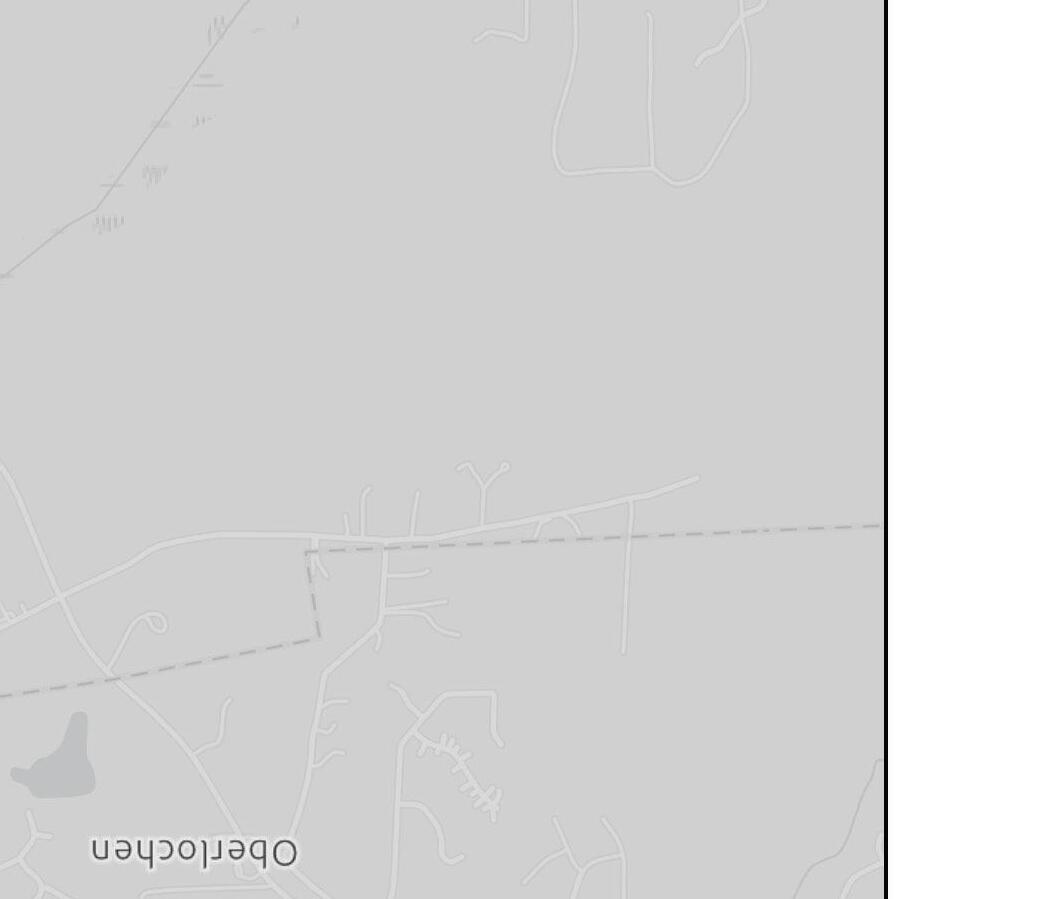

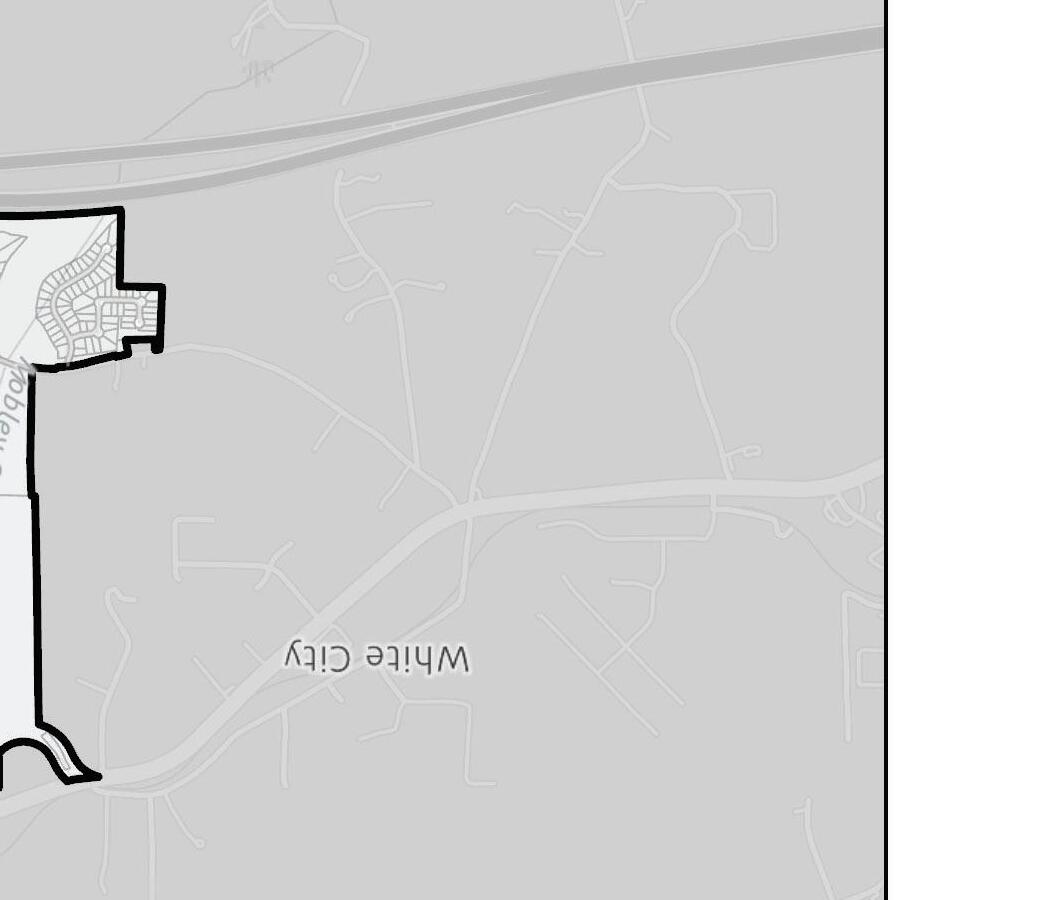



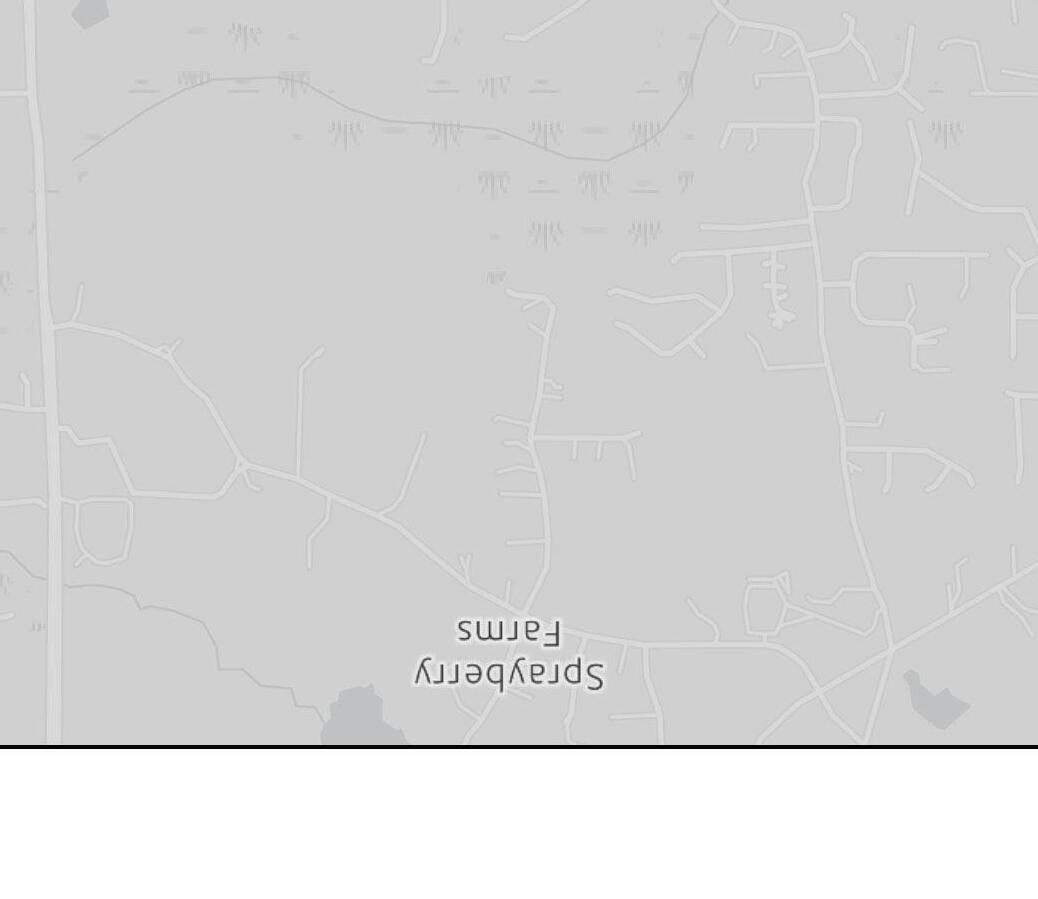

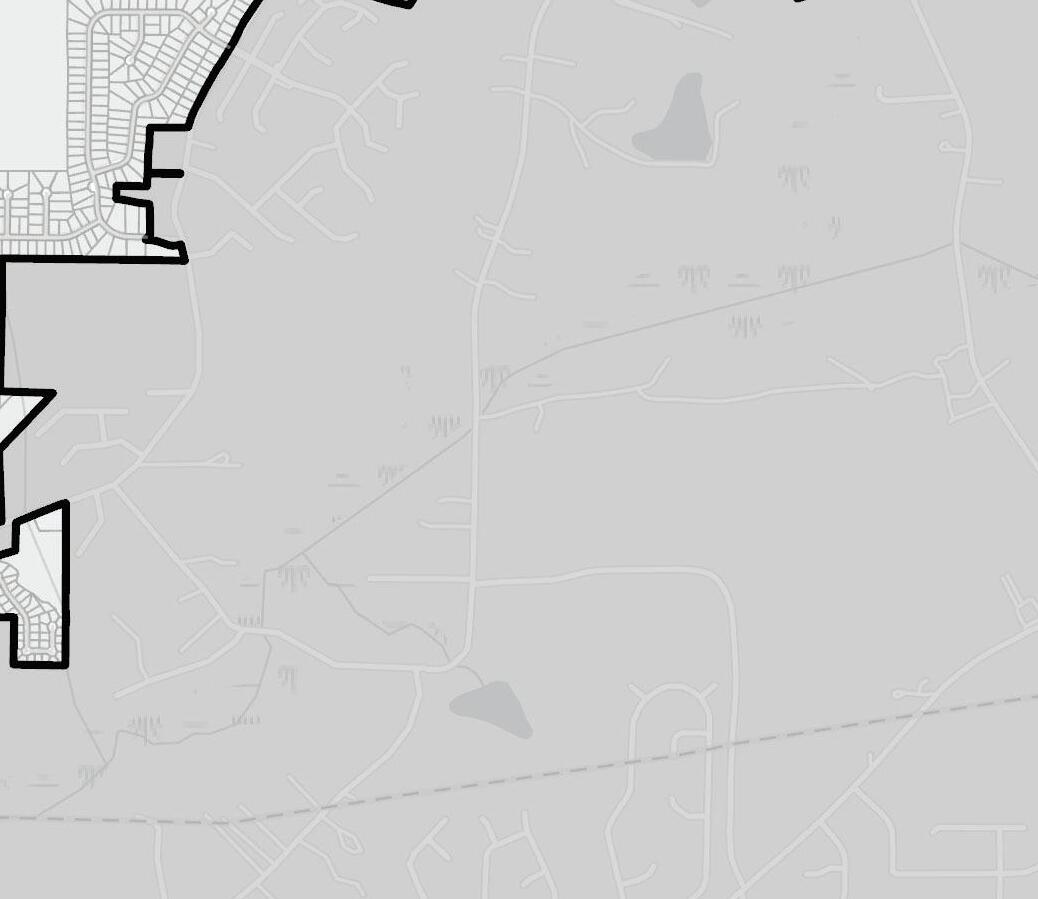

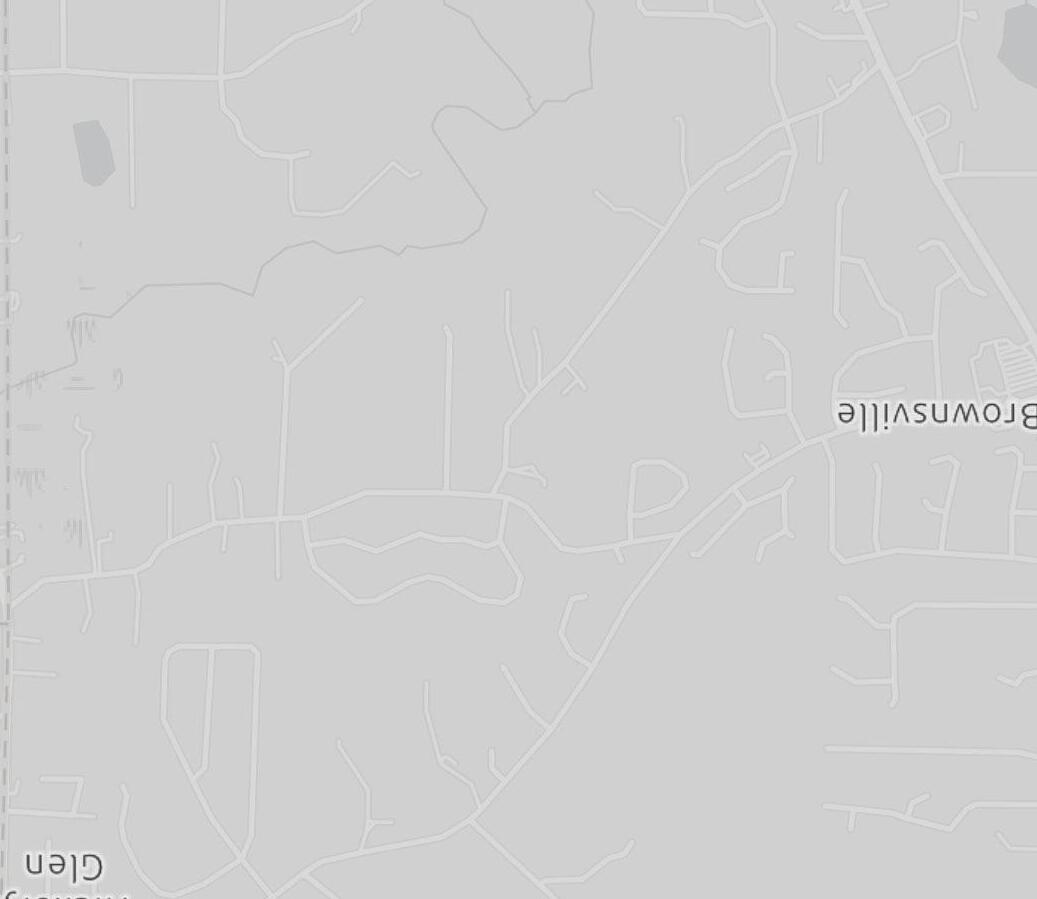


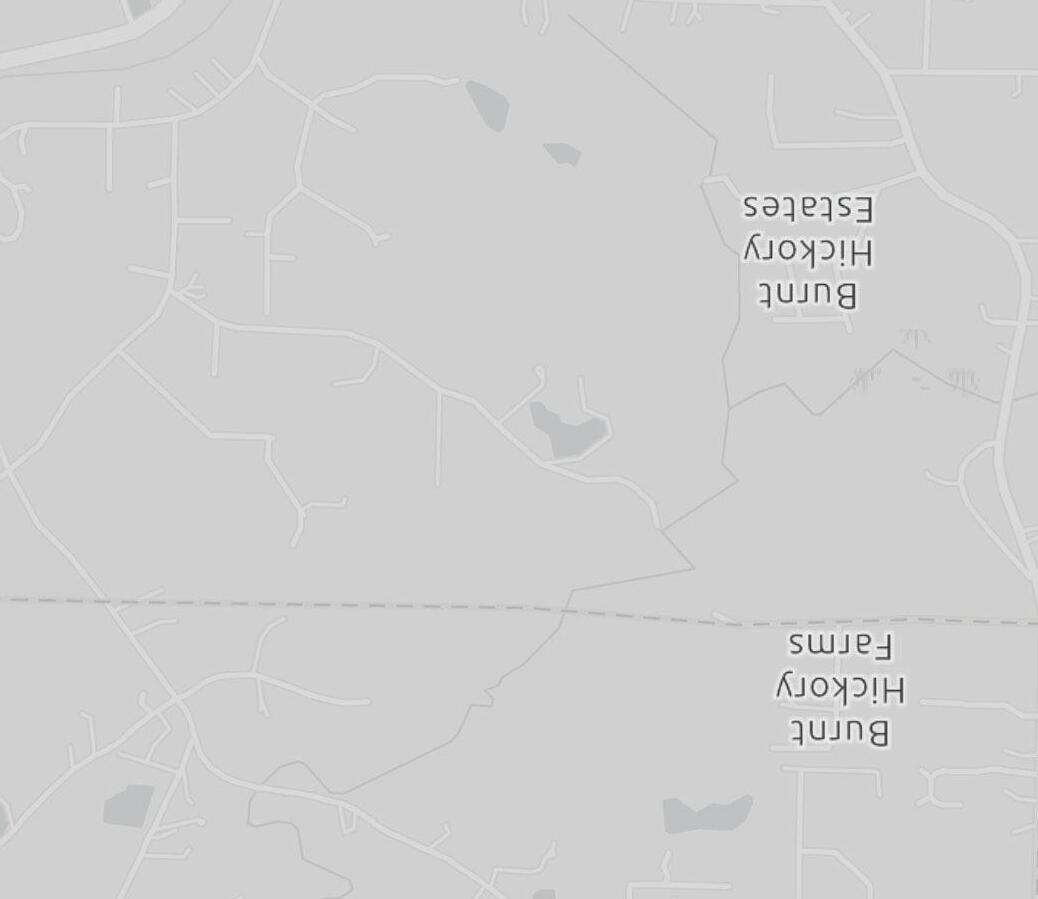

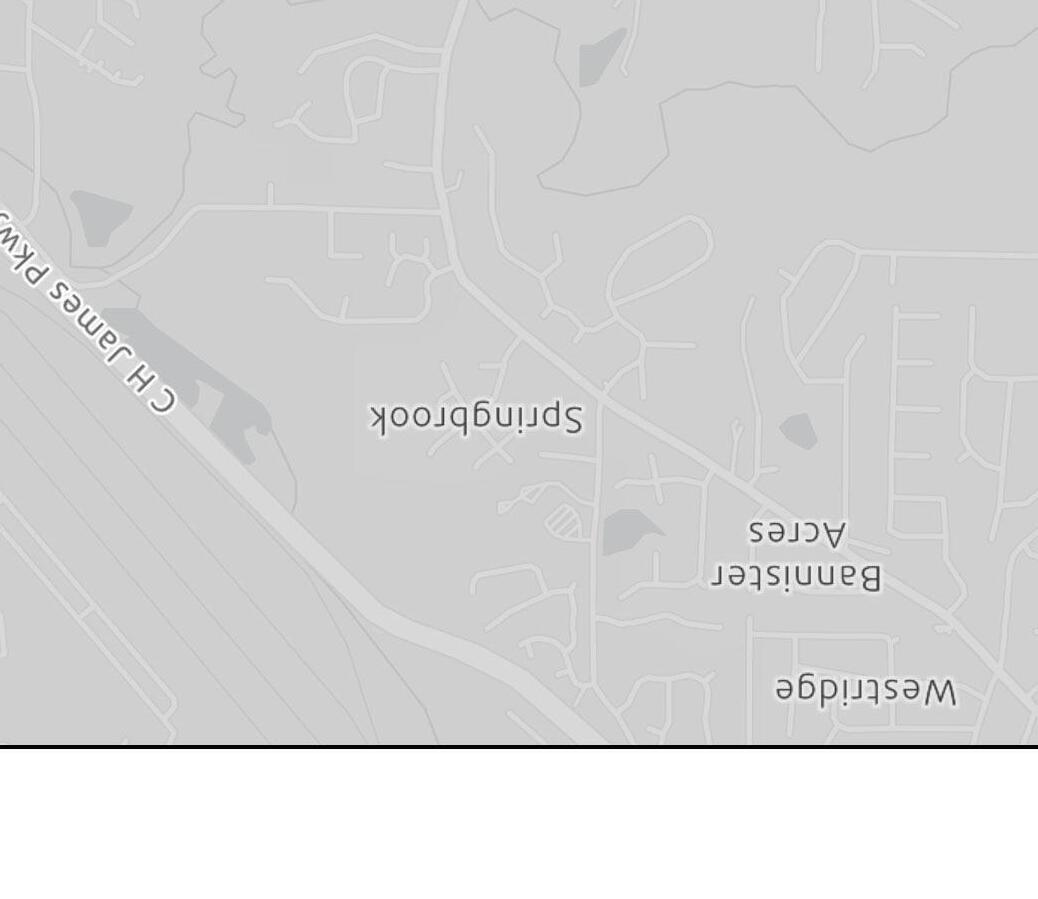



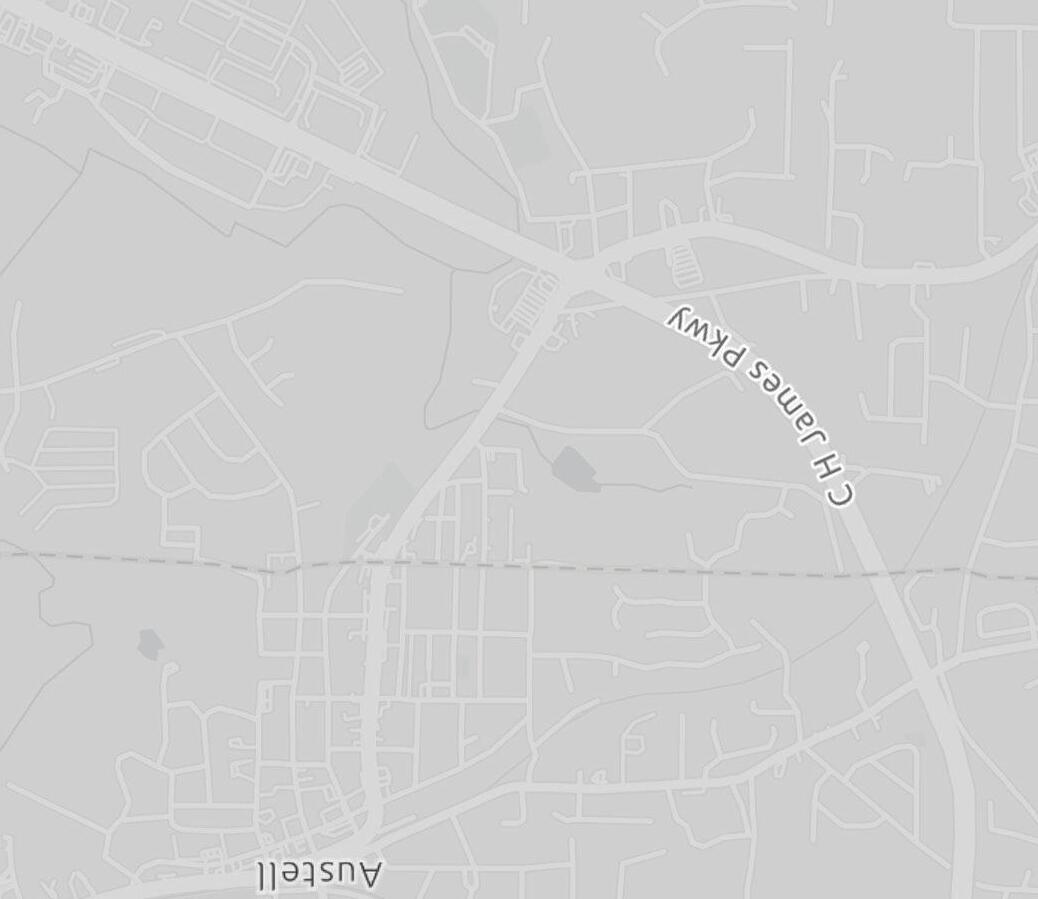



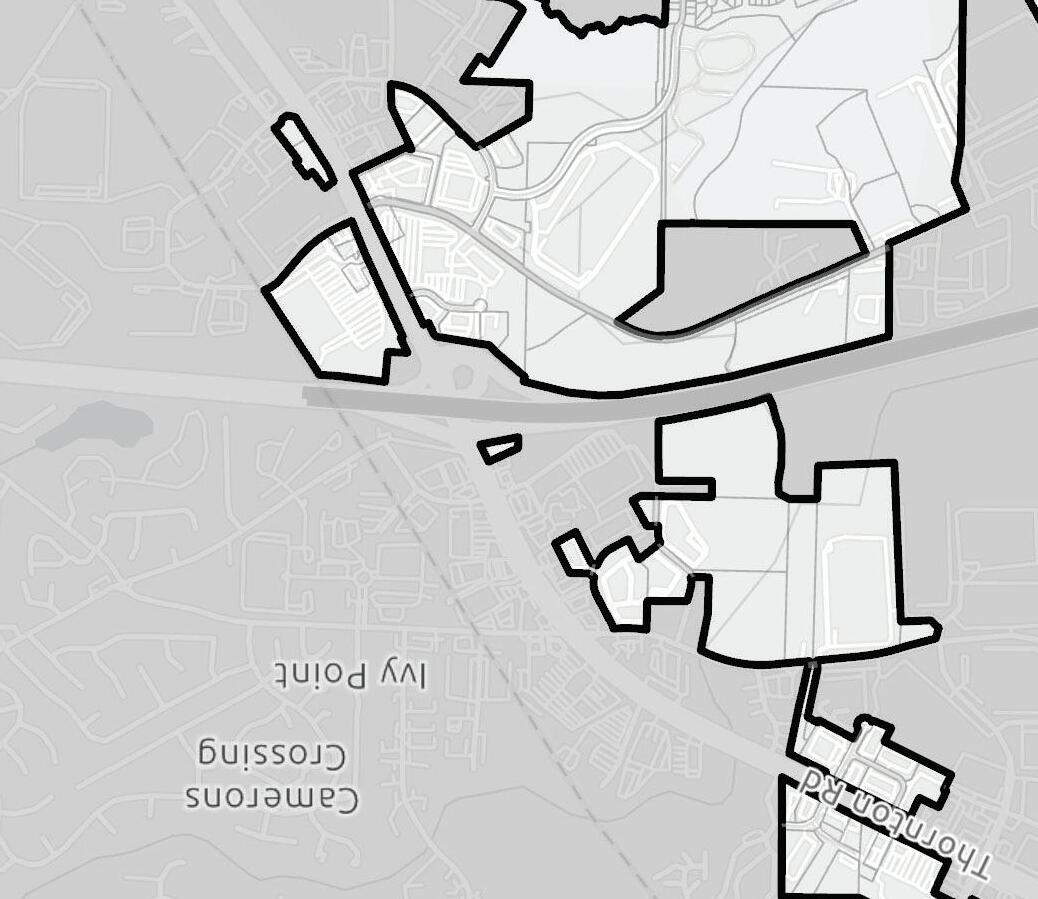


















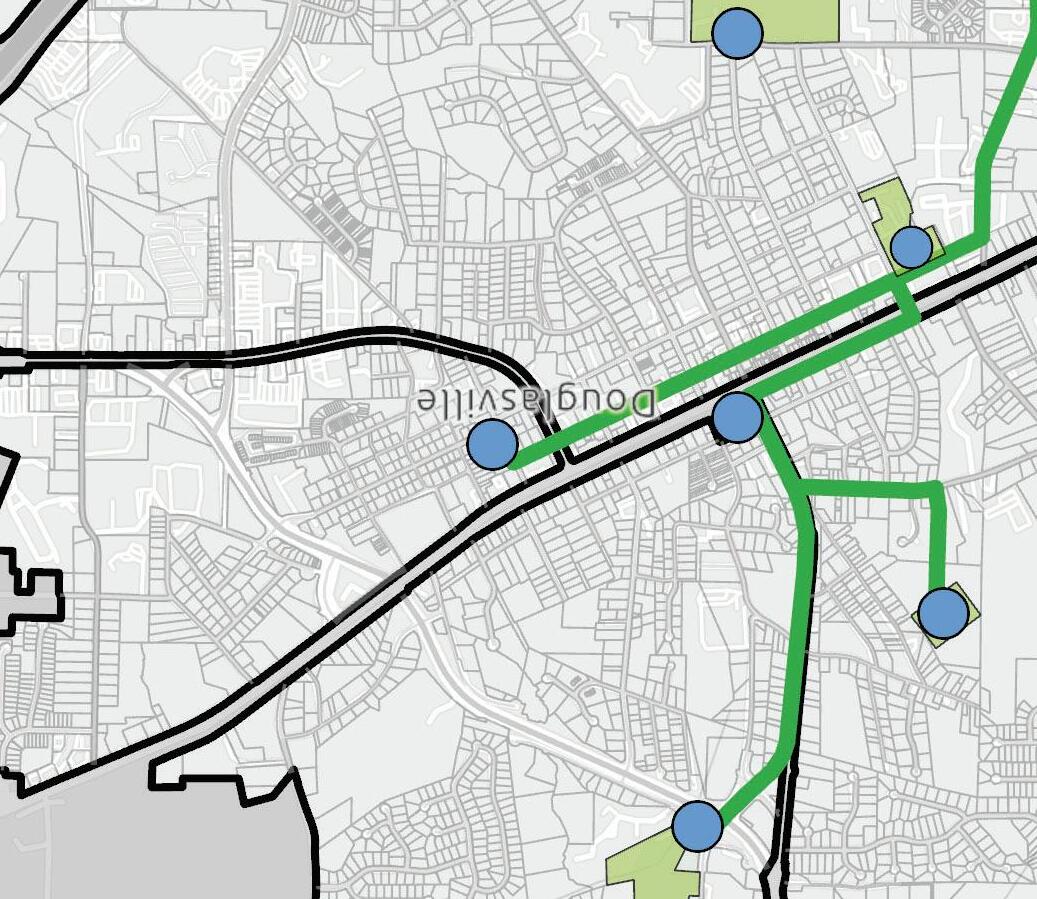

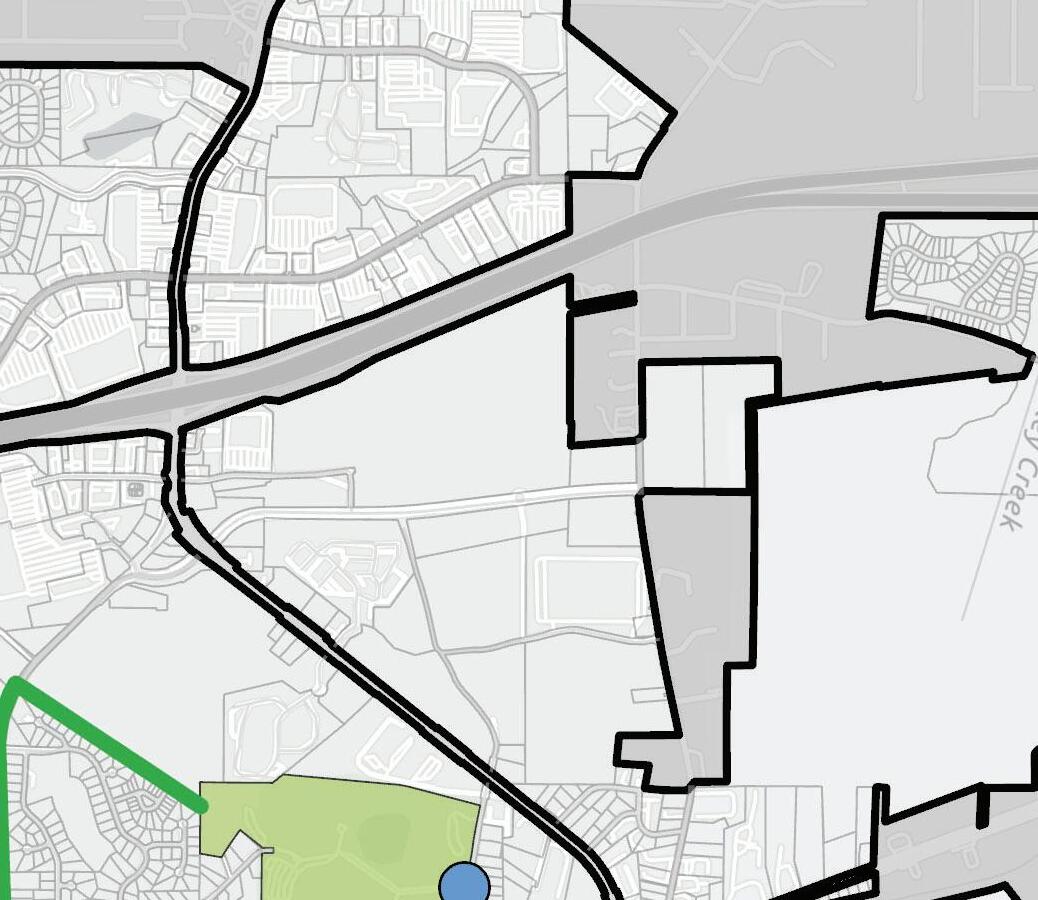
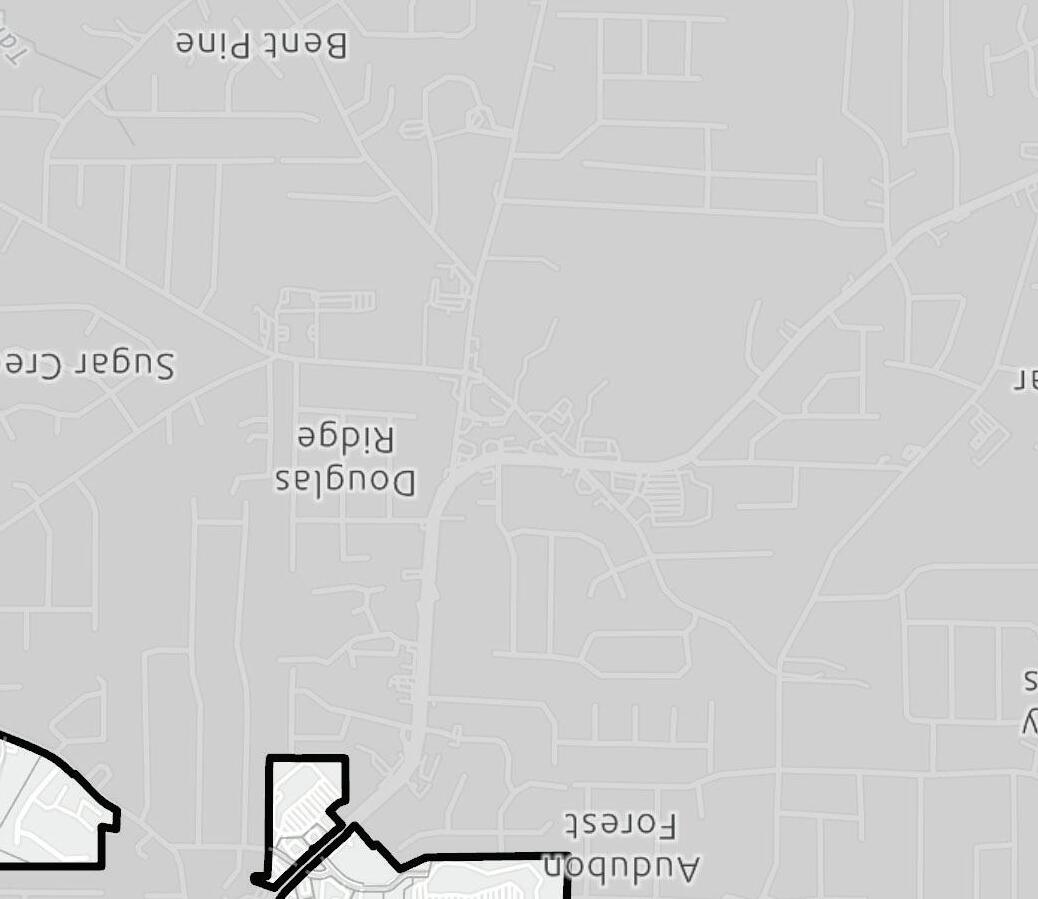








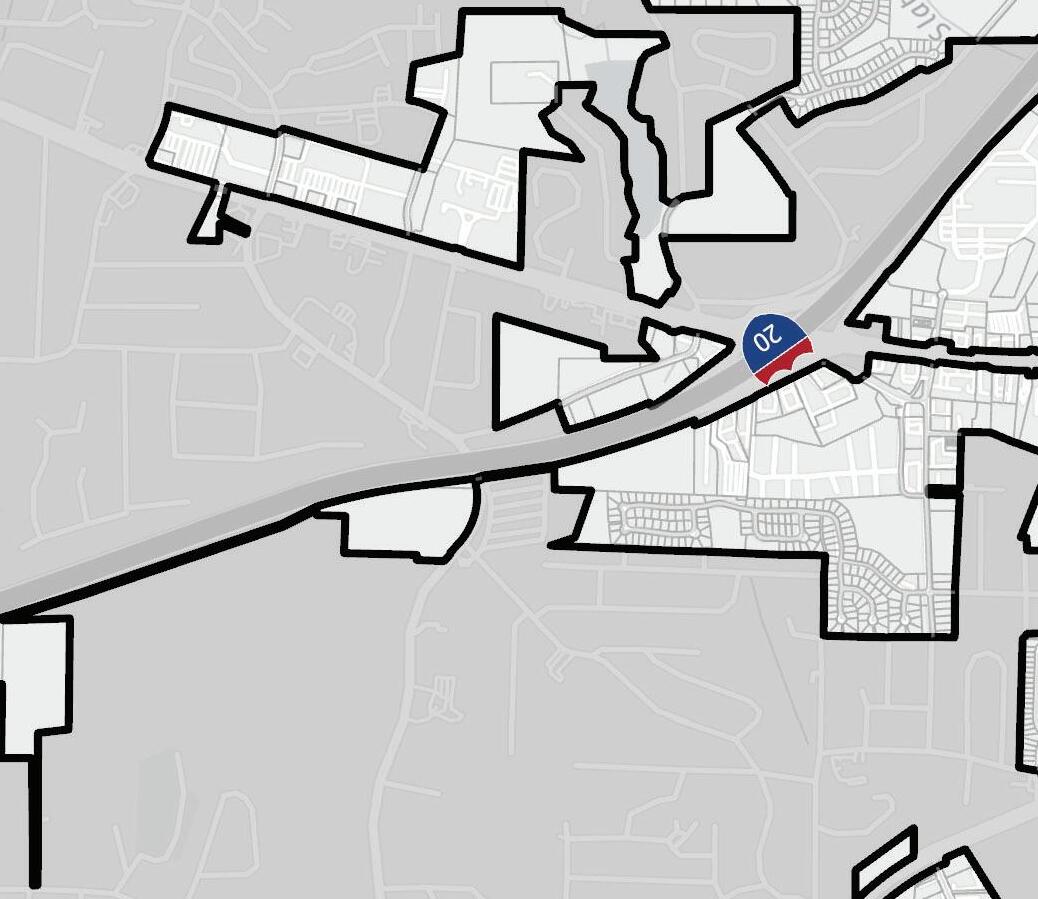
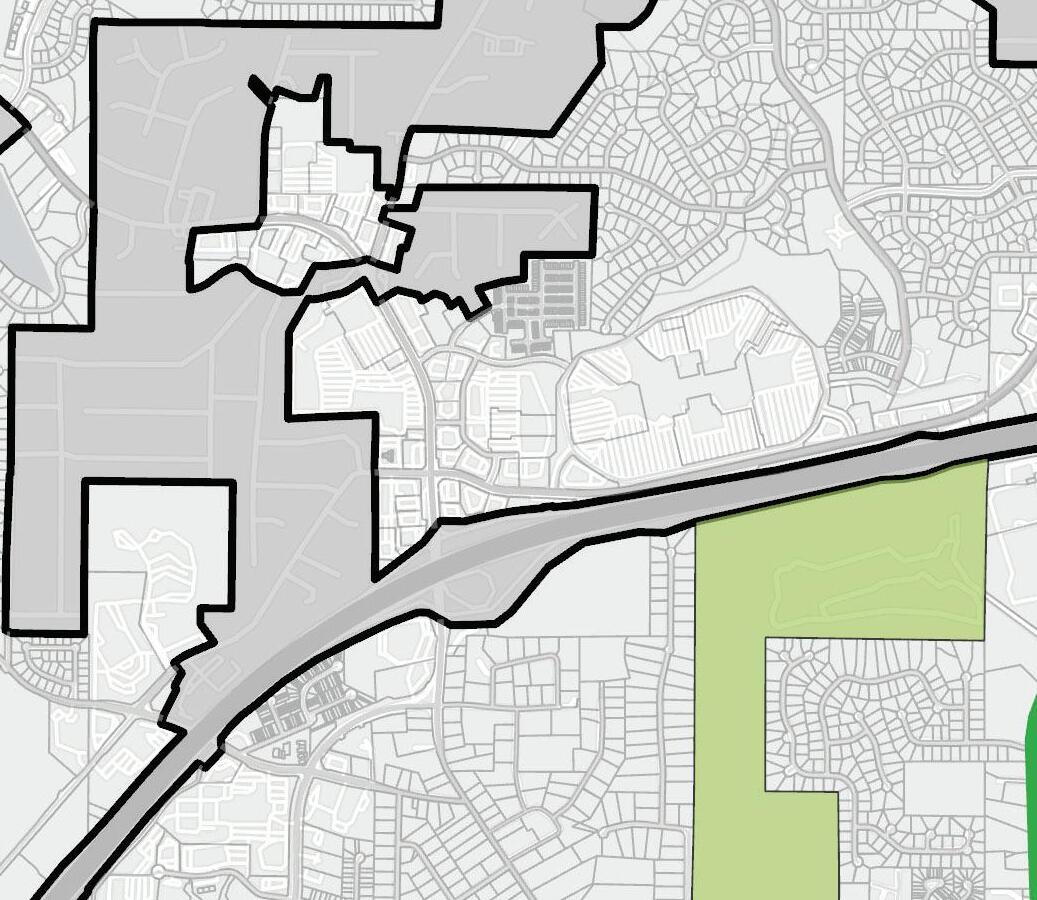

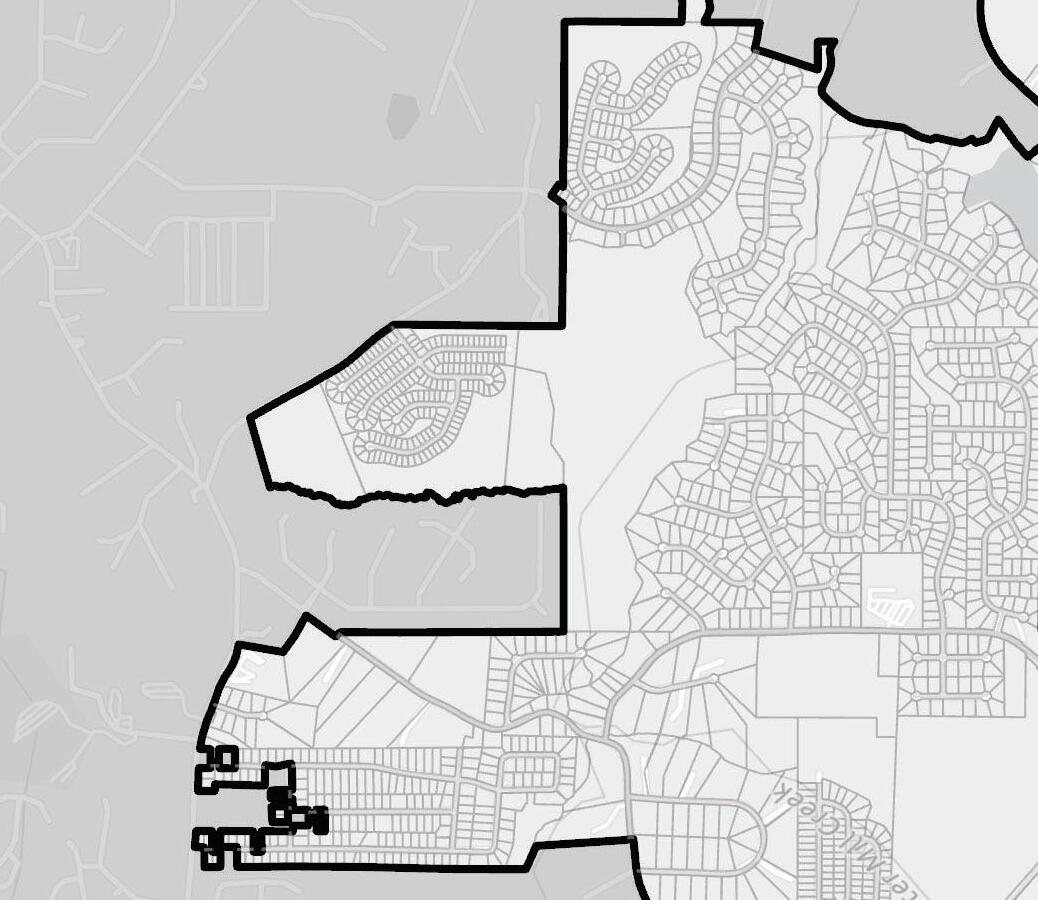











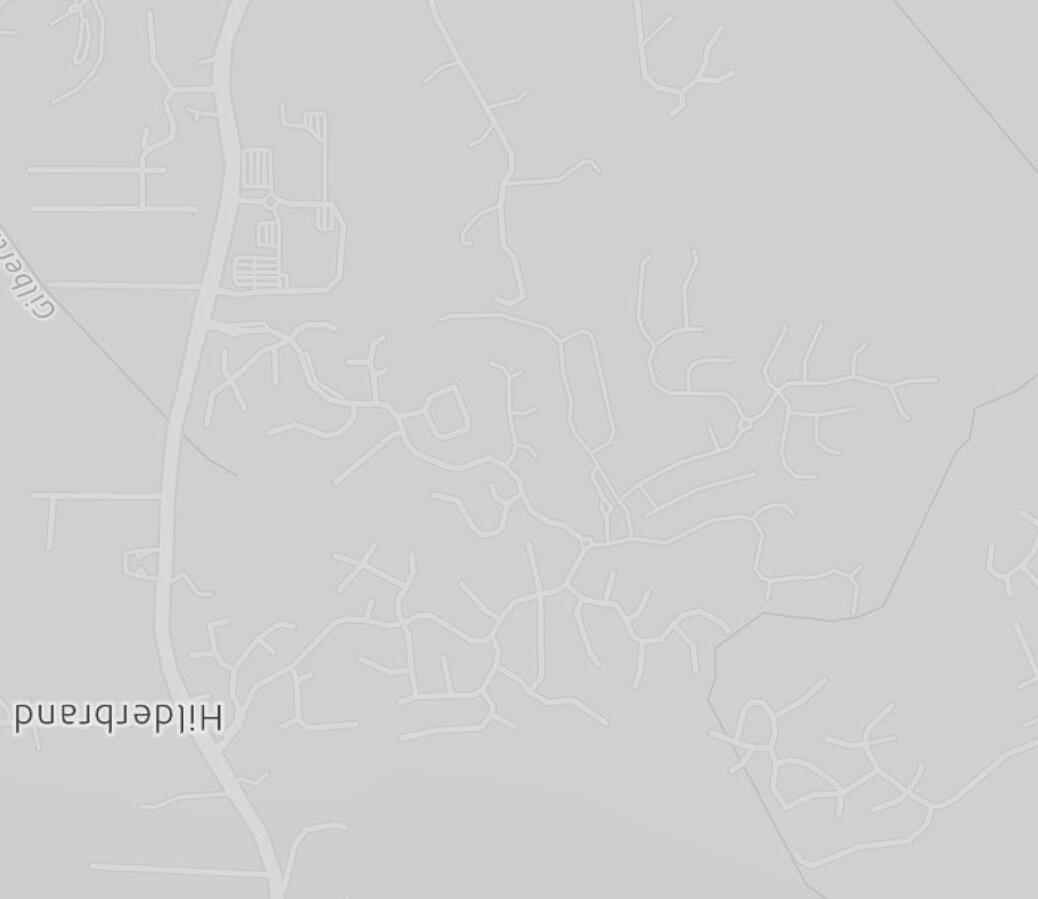



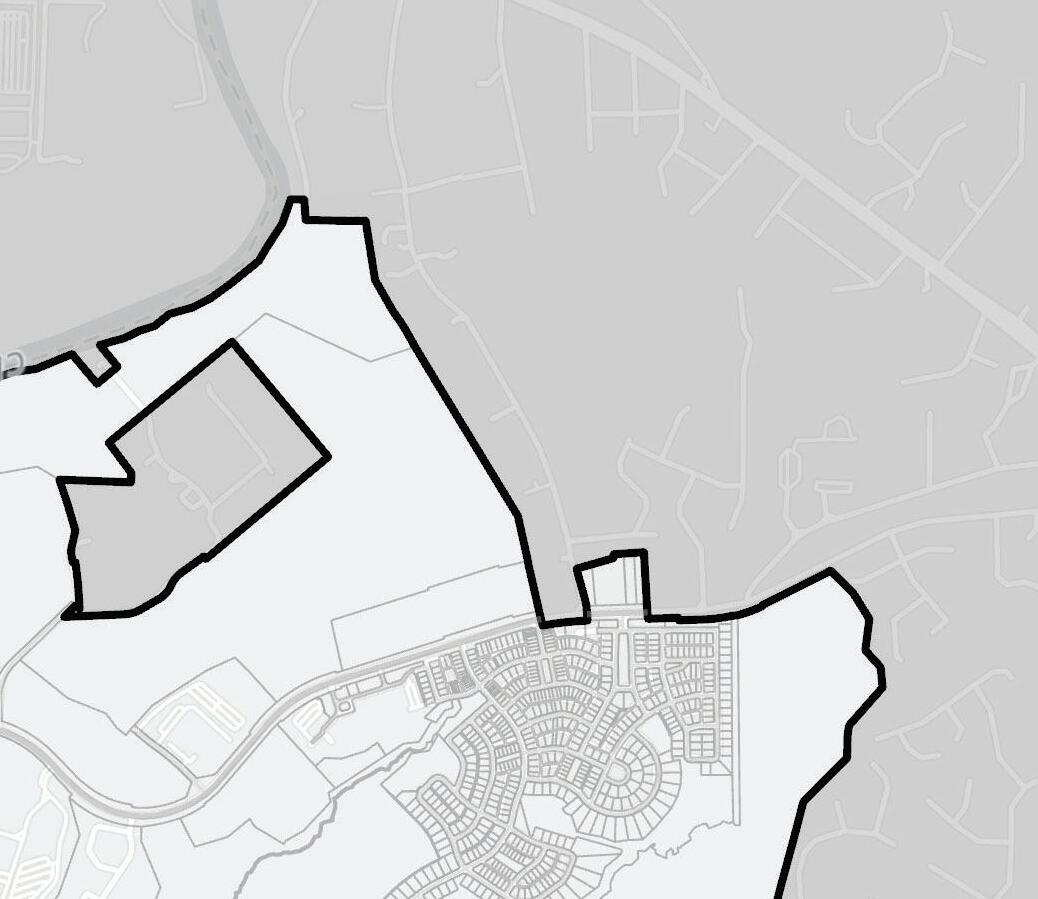




































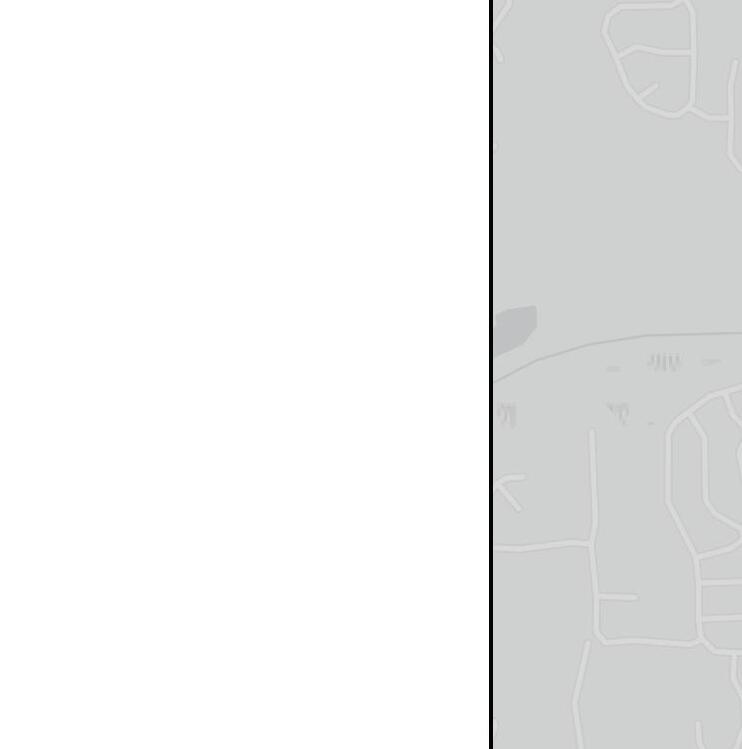



















HUNTER MEMORIAL PARK
WEST PINES GOLF CLUB WORTHAN PARK JESSIE DAVIS PARK
DOUGLASVILLE
The Core Program Areas provided by the Douglasville Parks and Recreation Department currently meets some of the needs of the Douglasville community. The program mix should be evaluated on a regular and reoccurring basis to ensure program offerings align with changing demographics, leisure trends and the needs of residents. Based on the assessment of the existing recreation programs in the City of Douglasville, the Department is delivering quality programs, services and events. However, it has an opportunity for improvement and expansion of these services to ensure there are core programs offered to meet the needs of all residents.

17 community & adaptive special events offered throughout the year.



DPRD CORE PROGRAMS
Department staff are responsible for the management and implementation of recreation programs, special communitywide events, and the operation of multiple facilities. DPRD offers 17 community-wide and adaptive special events throughout the year.
Community Special Events 2024
- Black History Program - February
- Sweetheart Dance (TR) - February
- Brown Bag Lunch Concerts – Seasonal
- R&B Recreation-N-Brunch - Seasonal
- Pop Up at the Park - Seasonal
- Breakfast withtheBunny – Marchor April
- Breakfast withtheBunny(TR) - March or April
- CommunityBlockParty- May
- Splash N Play- June
- Georgia Games Fishing Derby – June
- Field Play Day (TR) - June
- Screen on the Green - Seasonal
- America’s Independence - 4th of July Event
- Labor Day Parade, BBQ & Fireworks -September
- Hunter’s Harvest Fall Festival – October
- Halloween Screen and Treat - October
- Breakfast with Santa -December



DOUGLASVILLE PARKS AND
PROGRAMS
DouglasvilleParks andRecreation
4
DRPD programs showed consistent growth from 2021-2023 with a 49% increase in unique program options from 2021-2022. A unique program offerings example: Douglasville offered 7 weeks of Camp FUNtastic this past summer. There were 4 registration options based on different ages (5-6 yrs, 7-8 yrs, 9-10 yrs, 11-12 yrs). Thus, there were 28 registration options for Camp FUNtastic, the department’s full-day Day Camp. In 2023 there was another increase in unique program offerings of 29%. This increased the unique program offerings to 217.
There was a significant decrease in programs from 2023-2024 by -42%. In reviewing the programs, the department streamlined the offerings, decreased multiple unique offerings based on registration numbers and brought the 27% program cancellation average down to 8%.
Program registrations were at their highest in 2021 with 4013 registered participants in classes. As programs increased by 49% in 2022 from 113 to 168 registration options, the actual registration numbers dropped by 16% (from 4013 to 3361) with a program cancellation rate of 29% or 49 programs. With a 29% growth in unique program offerings in 2023, the registration numbers only grew by 1.4% to 3409 registered participants.
With the almost 50% cut in program offerings in 2024, program registration number remained consistent with a slight decrease in registration of 2.5% or 3362 registered participants. The strong registration numbers exemplify the work staff did in choosing to keep the programs the community was registering for, while ending other program offerings or decreasing the number of sessions offered for one program. The community input from this master plan will help to guide the department’s staff, pinpointing community interests using Douglasville’s community capital to guide the direction of interest and desire across the various demographics and psychographics including age, interests, families, values, gender, attitudes, lifestyle, income and ethnicity to name a few.
Below is the list of program categories that have been offered to the community over the past 4 years. In 2021, twenty-five program categories encompassed 113 unique program offerings. Programs expanded to 36 program categories in 2022 with 168 unique program offerings. With a 29% growth to 217 unique programs in 2023, the number of program categories grew to 50. In 2024, programs decreased by -42% to forty program categories and 126 unique program options. Although special events are listed separately on the program chart, they are included in the yearly figures.


An Average of 66.25% of program registration options available to the community came from an average of 7.75 yearly CORE program categories offered each year. With the expansion and elimination of program offerings, the result remained consistent with the largest registration numbers coming from Summer Day and Athletic Camps. There were multiple sessions and registration options in the ‘other summer camps’ youth general, teen, adult and senior categories within the ‘same programs’ over a period of years including STEAM Generation Camp, Youth Dance, College Exploration, Adult Social Dance and Medicare 101 to name a few, affecting registration outcomes with too many options, spreading the interest by the community out to various days, weeks, times, etc. causing cancellations. It will be important moving forward to align the number of programs that equal the interest and needs of the community vs. the quantity offered.

• The majority of programs are offered through partner organizations.
• Camp FUNtastic Full-Day camp has averaged 18 participants per session per summer for the past 3 years.
• The addition of the Teen Camp Club Y2K in 2023 served an average of 17 teens/yr in 7 camps the past two summers.
• Youth General Programs are limited to mostly summer programs and camps.
• Seven Youth General programs offered year-round include: Taekwondo, Stay on Pointe Dance, STEM, a new preschool aged sports program, Agape Art/Drama (minimal enrollments), and an afterschool program with the highest enrollment. They account for up to 33% of the Youth program enrollment. Youth Athletics are 2% of the overall youth programs for 2024 while summer camp programs combined account for 66% of the youth involvement throughout the year.
• There have been minimal programs offered year-round for
- Youth Athletic programs (Basketball, Volleyball, Girls Softball, Fall/Spring Baseball) are the main programs during the school year, with a large program focus on summer athletic camps.
- Teens: there are no 3-season programs offered and only 3 weeks of summer camp.
- Adult 3-season general and athletic programs include Basketball, COED Volleyball, COED Softball, Pickleball, Yoga and Dance.
- Senior programs include six 1-day 50Plus programs, an educational seminar and card tournament
YEARLY PROGRAMS BY




29 programs with multiple sessions totaling 62 registration options were offered between Fall 2023 - May 2024 for citizens ages 4-100+ yrs.
CITY OF DOUGLASVILLE PROGRAMS OF IMPORTANCE
Two opportunities for citizens to provide input across the city were held as well as focus group meetings with the Advisory and Partner Committees and an online survey. Participant input generated an outcome of a diverse set of needed programs of importance. Programs were broken down into 7 categories. Participants could pick from lists of programs provided and add their individual program interests. There were opportunities to provide additional comments as well.
Survey and In-Person respondents - Programs of Importance
Survey respondents chose programs based on need and interest. The top 5 programs they sought include:
• Family Leisure Swim/Play
• Dance/Theatre Classes
• Cooking Classes
• Swim Lessons/Education
• Summer Camps
In-Person respondents chose different program based on need and interest. The top 5 programs they sought include:
• Volleyball League
• Archery Lessons
• Tennis League
• Ninja Cross
• Rock Climbing Lessons
Other top programs of importance from bothgroupsinclude Run/Walk Groups, Gymnastics, Special Events/Festivals, Silver Sneakers, Fitness Classes, Water Fitness, Nature Programs, Visual Arts/Pottery, S.T.E.M. Programs, Before/After School Programs, InclusivePlay., The complete list in order of importance is shown in the chart below:

DPRD shows an historic trend of offering mostly youth summer camp programs. Programs in other categories are offered but not to the level necessary to meet the needs and desires of the community. Staff should develop a program plan in order to implement new programs and categories based on the results of the public input meetings and the programs of importance. A program plan will need to include review of existing and new facilities and spaces, scheduling, instructors/ staffing to be hired, partnerships, marketing, sponsorships, grants, and a budget for each program area including new classifications and budget line items. This will enable the department to organize the successful development of these new program areas. Being prepared will help with the recruitment of quality instructors.
RESIDENTS SEEK PROGRAMS IN OUTSIDE COMMUNITIES
The most mentioned reasons Douglasville residents utilize outside city, City and other government parks and recreation programs, private facilities and services are for activities and facilities residents want or need not offered in Douglasville and for better quality facilities. While 32% percent of the respondents were not aware of programs being offered, 39% sought programs elsewhere due to facility/park conditions, safety and limited hours of operations.
When asked to rate Douglasville’s ability to meet the programming needs of the community, respondents indicated the following: approximately 40-52% stated their program needs were being met either Partially to Minimally in the categories of Adult Programs (52%), Senior Programs (44%), Community-wide Events (44%) and Youth Programs (40%). Additional comments included the addition of: adult fitness classes outside of work hours, general youth and adult classes, youth sports not currently offered, adult sports, lap swimming outside of work hours and water aerobics, adult evening/weekend programs, tennis and pickleball lessons & leagues, volleyball outdoors, kids golf, nature programs, outdoor adventure programs, additional senior programs, activities and trips.
Family Leisure Swim/Play was the highest rated program. 60% of the respondents stated indoor general recreation: visual and performing arts and fitness were programs of importance as were cooking classes, swimming lessons, computer classes, gymnastics, robotics, general youth camps and senior leisureprograms. 22% of respondents stated the need for outdoor recreation programs.
Rec N Roll: On the Go Learning!
Douglasville has an innovative operation for program outreach to children after school. Rec N Roll is a mobile trailer filled with educational activities and FUN! This new initiative brings the best of both programs together, offering dynamic, curriculum-based experiences for children in our community. The department merged with the afterschool program to create their on-the-go learning format. Expanding partnerships and establishing weekly schedules in schools and communities will be important to fill gaps in the community especially for those families who cannot travel to the parks. This program can be utilized with a rotating schedule to 1 park each day of the week during the summers to meet the needs of community families who are unable to attend the summer camps at the parks. The service includes: GA DOE standards tied into activities, games, arts and crafts and recreation-based programs.
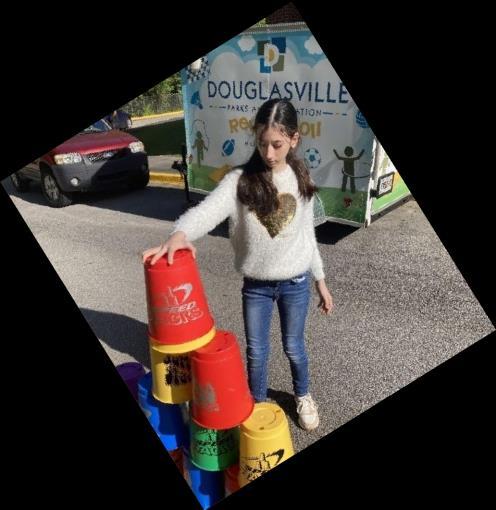
THIS PAGE INTENTIONALLY LEFT BLANK

Chapter seven RECREATION & LEISURE TRENDS ANALYSIS
THIS PAGE INTENTIONALLY LEFT BLANK
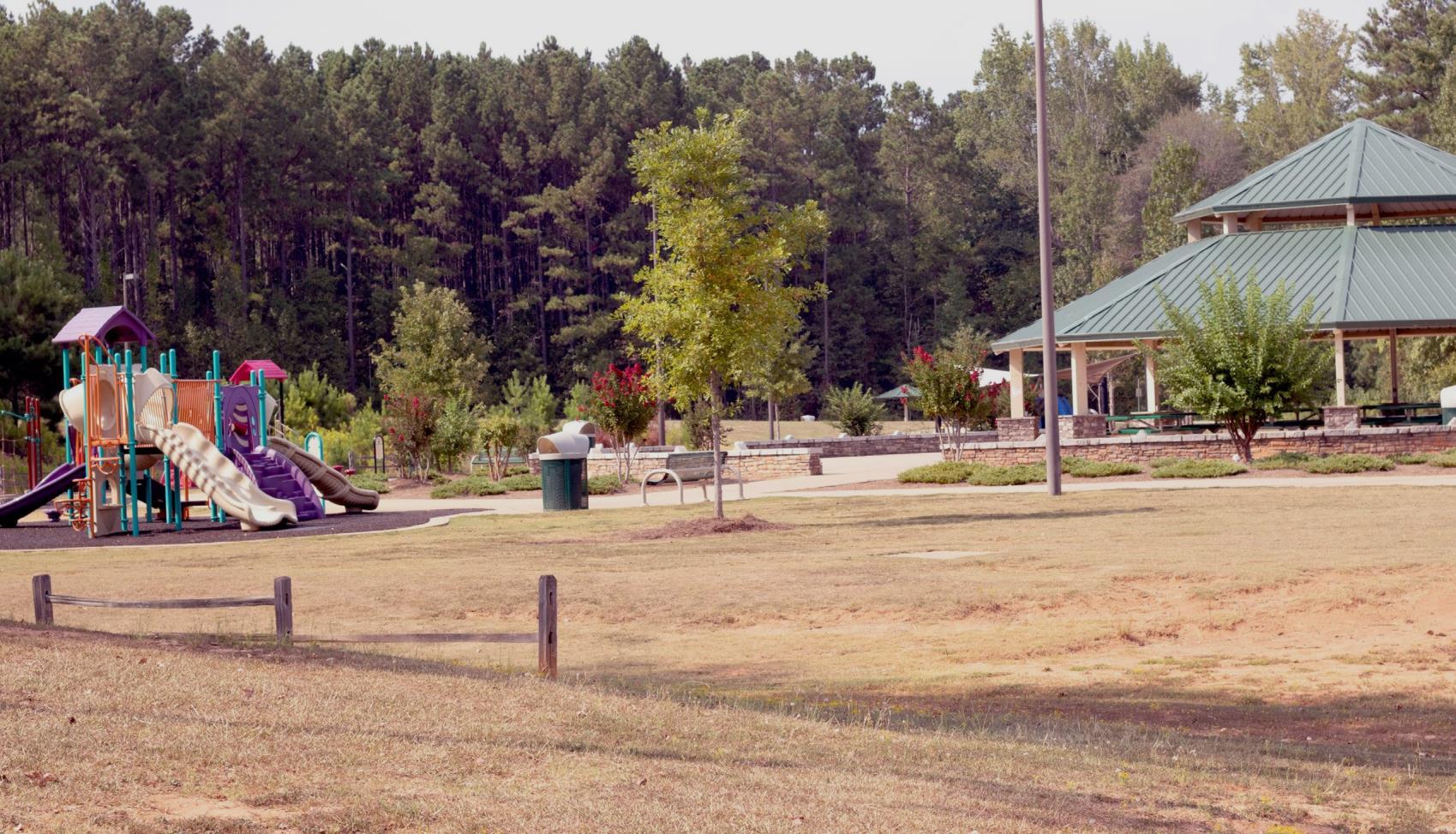
INTRODUCTION
Douglasville Parks and Recreation Department contributes to a healthy, active, and educated community; providing stewardship and management of parklands, trails, and civic facilities; and creating opportunities for all people to participate in a wide variety of recreational activities. This analysis provides insights into current program offerings, how they align with current trends in recreation, and how they apply specifically to the City of Douglasville.
THE BENEFITS OF PARKS AND RECREATION
Local parks and recreation programs are the gateways to healthy, prosperous and connected communities. On any day, someone is being positively affected through parks and recreation – whether they are walking on a trail, enjoying time with family in a park, participating in a fitness class at the recreation center, learning a new skill through one of our programs, or just reaping the benefits of clean air and water because of preserved open space. Parks and recreation programs connect communities to nature and help preserve open space, provide health and wellness opportunities and essential services, and connect all people, making Douglasville a more desirable destination and place to live.
NRPA Principles
For Parks and Recreation Professionals, the National Recreation and Parks Association(NRPA) guiding principles for creating a better life for everyone by building strong, healthy, and resilient communities are at theforefront of all we do. As the City of Douglasville officials and staff strive to make their community the best place to live, work and play, these pillars should be at the forefront of the decision-making process.
Parks and Recreation Is Essential Parks and recreation transforms our cities, towns and counties into vibrant, healthy and resilient communities of more than 10,000 agencies across the United States. Guiding each of these agencies are NRPA’s Three Pillars, which ensure that these agencies’ efforts enrich everymember of their communities.
The NRPA Three Pillars are:
• Conservation (Environmental Resilience)
Creating a nation of resilient and climate-ready communities through parks and recreation
• Equity
Striving for a future where everyone has fair and just access to quality parks and recreation
• Health and Wellness (Health and Well-Being) Advancing community health and well-being through parks and recreation
With the impending launch of NRPAs new 2025 Strategic Plan, NRPAs Three Pillars will be updated to include the following:
Equity
Quality parks and recreation accessible to and inclusive for all communities.
Environmental Resilience
• Sustainable parks and green spaces for future generations and climate-resilient communities. Health and Well-being
• Thriving communities where everyone experiences the health and wellness benefits of parks and recreation.
NRPA’s- Three Pillars
We seek a future where the full power of parks and recreation is widely recognized for creating a better life for everyone by building strong, healthy and resilient communities. We advance this vision by investing in and championing the profession as a catalyst of positive change for equity, climate readiness and overall well-being.
We seek a future where the full power of parks and recreation is widely recognized for creating a better life for everyone by building strong, healthy and resilient communities. We advance this vision by investing in and championing the profession as a catalyst of positive change for equity, climate readiness and overall well-being
The City of Douglasville Parks and Recreation Department (DPRD) aligns with the National Park and Recreation Association (NRPA) through its mission and vision:
The Mission of Douglasville Parks and Recreation is to enhance the quality of life in our community and all who interact with our park system, programs, and services. Our vision is to provide optimum recreational facilities and quality programs to ensure the standard of excellence for all.
DPRD will continue to expand as a department impacting the city through conservation, health and wellness, social equity programs and opportunities. People nationwide agree that NRPA’s Three Pillars represent what they want as the guiding principles for their local park and recreation agency.
Recreation programming is a core pillar of every park and recreation agency and must exist for health benefits and enhanced quality of life outcomes for the community. Diverse programs for all ages enhance the quality of life within a community, improve residents’ health (both physical and mental) with increased physical activity, creates social opportunities by bringing communities together, and allows for time to meet with family and friends.
Agencies also provide indispensable services through targeted programs for children, seniors and people with special needs. Nine in 10 U.S. adults agreethat parks and recreation is an important service provided bytheir local government. Proximity to high-quality parks and recreation opportunities is an important factor in people’s decision regarding where to live. Fifty-three (53) percent indicate having such access is “extremely” or “very” important to them. The City of Douglasville currently brands as a top Georgia community to live, work and play as mentioned in their Vision Statement. Parks and Recreation is an essential component.




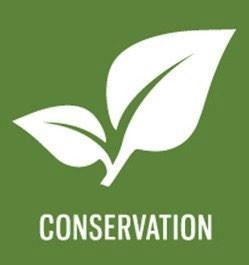
Successful parks and recreation departments in Georgia andthroughout the country deliver diverseand innovative programs across the demographic spectrum and geographic reaches of their community. The following National Recreation and Parks publication, “Park, Recreation, Open and Greenway Guidelines,” published in 1995, identified four categories of benefits that still hold true today:
• Personal Benefits that a comprehensive recreational delivery system include: a full and meaningful life, good health, stress management, self-esteem, positive self-image, a balanced life, achieving full potential, gaining life satisfaction, human development, positive lifestyle choices, and an improved quality of life.
• Economic Benefits Include: preventative health care, a productive work force, big economic returns on small investments, public education enhancements, business relocations and expansions.
• Social Benefits include building strong communities while reducing alienation, loneliness and antisocial behavior, promoting ethnic and cultural harmony, building strong families, increasing opportunity for community involvement, shared management, and ownership of resources, and providing a foundation for community pride.
• Environmental Benefits include environmental health, environmental protection and rehabilitation, environmental education, environmental investment increasing property values, and insurancefor a continuing healthy environmental future.
DOUGLAS COUNTY HEALTH
Park and recreation professionals are uniquely positioned to create, together with public health providers, the community wellness hubs needed to address chronic health concerns, increasing isolation and mental health disorders, and to rebuild a sense of community and connection. Developing community partnerships and programs to address community health and well-being concerns is essential to the City of Douglasville to build a strong community.
To combat the alarming increase in rates of childhood obesity, diabetes, and mental health issues, especially since the effects of the pandemic over the past few years, appropriate programming needs to exist. More than 25% of the American adult population is physically inactive, according to a joint survey bythe Centers for Disease Control and Prevention and state health departments.
Douglas County’s overall health should be a driver for the City’s use of resources on fitness and health and wellness programs and activities for the community.
The CDC and City Health Rankings rated counties across Georgia based onseveral health criteria. The counties are compared to health statistics for the state of Georgia. The comparison to Top U.S Performers measures the value for which only 10% of counties in the country are doing better, i.e., the 90th percentile or 10th percentile, depending on whether the measure is framed positively (e.g., high school graduation) or negatively (e.g., adult smoking). Four criteria are utilized to better understand the local population health challenges.
• The adult obesity rate (BMI ≥ 30) in Douglas County is 37%. The rate is higherthan the State of Georgia, which has an obesity rate of 34% and twelve percent higher than the top U.S. performers (25%).
• Twelve percent (12%) of adults in Douglas County have Diabetes. The rate is slightly higher than the State of Georgia’s average rate of 11%. It is four percent higher than the top U.S. performers rate of 8%.
• The City's physical inactivity rate (28%) isalso higher than the state of Georgia (25%)and eleven percent higher the top U.S. performers (17%).
• Approximately 76% of Douglas County residents have access to exercise options, which is eight percentlower than the top U.S. performers (84%) andjustslightlyhigherthanthestateof Georgia (75%).
Health Outcomes - tell us how long people live on average within a community, and how much physical and mental health people experience in a community while they are alive.
• Douglas County is faring worse than the average County in Georgia for Health Outcomes, and about the same as the average City in the nation.
• Health Outcomes include two sub-areas:
▪ Length of Life
▪ Quality of Life
Health Factors - many things influence how well and how long we live. Health Factors represent those things we can improve to live longer and healthier lives. They are indicators of the future health of our communities.
• Douglas County is faring about the same as the average County in Georgia for Health Factors, and about the same as the average County in the nation.
• Health Factors include four sub-areas:
▪ Health Behaviors
▪ Clinical Care
▪ Social and Economic Factors
▪ Physical Environment
Overall well-being involves more than just physical fitness; it also requires a focus on the social, emotional and mental aspects of health. Given the rise in mental health disorders and concerns surrounding social isolation exacerbated by the COVID-19 pandemic, a more intentional focus on supporting social, emotional and mental health is critical. Park andrecreation professionals and their agencies create opportunities for people to gather and connect with others, learn social emotional skills, and help reduce stress and anxiety.
For many youths and young adults, volunteer and community service programs fulfill school requirements, build character and provide an opportunity for them to serve their communities. Volunteer programs provide older adults with opportunities to serve their communities, socialize with people of all ages, and remain busy and connected. These options for community connection and ways to build a sense of purpose are integral in supporting mental health, especially as we continue to recover from the impacts of COVID-19. Per NRPA Park Pulse, four out of five people look to their local parks for family-friendly and community volunteer opportunities. 87% of Millennials are interested in helping to improve their parks.
Stress can have a tremendously harmful effect on one’s overall health. 4 out of 5 park and recreation agencies have added adult programs such as meditation, yoga and nature walks offering residents opportunities to un- wind and promote greater mental health.
Programming should specifically focus on nurturing children as it is essential in developing successful, well-rounded adults. Children need to spend time outdoors each day with unstructured play. Health benefits include reducing obesity, gang/crime prevention, and reconnecting children with the outdoors, according to the Trust for Public Land. Programs such as aerobic activity (bicycling, sports, swimming), yoga for kids and/or parents, creative play and art (encourages creative expression), and family walk or hikes offer residents opportunities to unwind and promote greater mental health.
Working towards creating a healthier community should be a major goal for any park agency. In partnership with local organizations, recreation providers, universities, private businesses, schools and churches, communities are making positive progress implementing programs for success in their own communities thus guiding their residents toward healthy lifestyles.

OBESITY increases the risk for health conditions such as:
• coronary heart disease
• type 2 diabetes
• cancer
• hypertension
• dyslipidemia
• stroke
• liver and gallbladder disease
• sleep apnea and respiratory problems (such as asthma)
• osteoarthritis
• poor health status
All people, regardless of age, race, education, socio-economic status, disability status, sexual orientation, and geo-graphic location should have access to safe and convenient opportunities to be physically active. Many people live in neighborhoods with poor sidewalk and street infrastructure or few safe spaces for physical activity. Where community opportunities for physical activities exist, they may not have been developed with all potential users in mind, such as older adults or persons with disabilities.
Park and recreation agencies work daily to ensure that the unique power of parks is a reality in every community across thecountry, especially our most vulnerable and underserved populations, including racial and ethnic minorities, that are disproportionately affected by health disparities and environmental hazards that impact quality of life.
A system-wide park plan for new services, programs and facilities to meet the needs of its residents, ensuring access for all City of Douglasville citizens is essential for the community. NRPA’s Social Equity Pillar emphasizes that recreation professionals must put equity at the center of all they do, from how they strengthen organizational culture to how they prepare the park and recreation field for the future. It requires that as they build up equity centered outcomes; they also work to dismantle the barriers to equity. Putting equity at the center of parks and recreation agency work means they are committed to constantly learning, creating supportive and co- beneficial partnerships, and sharing of failures and successes.
4 out of 5 people Look to their local parks for volunteer opportunities to help improve our parks
• Communitywell-beingalsorequiresafocusonsocial,emotionalandmentalaspectsofhealth
• IncreasedneedforprogramstosupporttheseaspectssinceCovid-19
• Volunteer/CommunityServiceprogramsofferoptionsforcommunitysocialization andconnectivity
Climate-Ready Parks
The City of Douglasville is a suburban city with a small-town feel, which by definition is set by standard measures, including population size, density and the number of impervious surfaces such as parking lots. The expected growth and developments coming to the city will have impacts on the environment. NRPAs continued emphasis on conservation, environmental education and sustainability work aims to create a nation of climate-ready parks and park and recreation professionals.
Workingside by side with their local communities, park and recreation professionals prepare them toadapt to a changing climate by: implementing green infrastructure solutions that improve water quality, reduce flood risk, lessen urban heat island effect and clean the air, creating habitats for pollinators and other wild- life, connecting children and adults with the outdoors, expanding access to local and fresh produce through farmers markets and community gardens, assessing and closing gaps in high-quality park and recreation access and reducing the environmental footprint of their facilities and operations.



• Programming can help alleviate stress, which has negative impacts on community health
• Programs such as creative play, art, yoga and aerobic activities promote lower stress levels
• Exposure to the outdoors and nature is also proventoreduce stresslevels
Community Profile
It is essential for effective programming to understand the City of Douglasville community profile. Section 2 of this report provides a comprehensive review of the demographic make-up and population trends for the city. One community profile of interest that the Executive Director and key management staff should consider as future programming decisions are made is the Population by Medium Age.
CITY OF DOUGLASVILLE AGE SEGMENTS
The City of Douglasville exhibits a slightly younger population with a median age of 36.5 years old compared to the U.S. median age of 38.5 years old.
• The 35-54 year old population is the largest age segment at 30.2%.
• The 0-19yearold population is the secondlargestage segment at 27.8%.
• The 20-34 year old age segment represents 19.7% of the population.
• The 55-64 year old population represents 10.4% of the population.
• The65-74 year old population, thefast-growingage segment at 131%, is 7.6% ofthetotal population.
• The 75 + year oldpopulation, growing at 119%, represents 4.3% of the population.
All people, regardless of age, race, education, socio-economic status, disability status, sexual orientation, and geographic location should have access to safe and convenient opportunities to be physically active.
Increase connectivity to facilitate enhanced access to parks and recreation
Diverse programming to support community interests and needs
Tiered fee schedules and scholarships/ grants to increase opportunity for program participation
Age groups of 55 years old and older have growth rates trending faster than the remaining population. Those ages segments combined represent 22.3% ofthe population while 77.7% is represented by the 0-44 year old combined age groups.
With a forecasted 62% growth in population by 2030, the 0-44 year old younger age segments will continue to represent over half of the total population. This largest grouped population includes 36% of households with children living in them and represents young adults, professionals, married adults or couples without children but within child-bearing years, and parents with children.
• Populations in these age segments are top user of Recreation Centers, Aquatic Centers, Outdoor Programming, Sport and Fitness Programs and Classes, Visual Arts, Performing Arts, Martial Arts, Education/STEM Programs, Summer Camps, Family Programming and Special Events.
With increased life expectancies, the 55+ year old population will continue to grow in the United States. Currently the standard for “senior” is anyone 50 years or age and older. However, the City of Douglasville will need to be mindful of what that designation means when planning future programs. The age range for people categorized as seniors is continually growing as people are living longer. There are activity differentials in people the same age who are healthy and very active to people living with various health conditions that decrease their physical abilities and activity levels.
• Programs should be developed by ability levels and interests. For example, DPRD could offer adult fitness programs open to all ages such as HIIT, Zumba, Aerobics, Pilates, and varying levels of Yoga. Yoga as an example, can be taught at many levels (from beginner to advanced) to accommodate adult and senior users at all abilities.
Recreational preferences amongst older adults trend toward more moderate physical activities such as Chair Yoga, Water Aerobics, Dancing, Strength Training, Tai Chi, Pilates, Walking, Cycling and Stretching.
Run/Walk Groups, Fitness Classes, Water Fitness, Senior Silver Sneakers and Weightlifting classes were among the Top 25 programs requested in the surveys.
ENVIRONMENTAL BENEFITS OF PARKS
• Improve water quality and reduce flood risk
• Trees to reduce air pollution and urban heat island effect
• Support habitats for wildlife & pollinators
• Expanded access to local and fresh produce through farmers markets and community gardens

Recreation Agencies should continue to emphasize on
conservation,environmental educationandsustainability tocreateanationofclimateready communities

Parks are key community stakeholderswhenitcomesto addressing the effects of climate change.
RECREATION PROGRAM TRENDS
Residents can interact with park and recreation amenities and programs throughout the year, resulting in thousands of contacts annually. “Contacts” include different types of interactions with a park and recreation agency such as visits to a playground, playing basketball, taking a dance class, or biking on a trail. Programming establishes a means for residents to use park and recreation facilities. When associated with registration fees, programs are the largest source of non-tax revenue for most agencies. The typical agency offers 200 programs each year, with 141 of those programs being fee-based.
Programming of park and recreation activities vary amongst agencies with many touching one or more of NRPA’s Three Pillars: Health and Wellness, Equity and Conservation. Programs offered by at least 70 percent of park and recreation agencies across the nation include Special Events, Social Events, Team Sports, Fitness Classes, Health/Wellness Education, Individual Sports and Racquet Sports and Safety Training to name a few. A more comprehensive list is shown in Figure 5.1 below.
Figure 5.1 Agency Program Offerings



• The typical agency offers 200 programs each year with 141 of those being fee-based
• Program registration fees are the LARGEST SOURCE of non-tax revenue for most agencies
Most agencies offer themed special events (89 percent), social recreation events (88 percent) team sports (86 percent), group fitness (82%) and health/wellness education (80%). Approximately three-quarters of agencies also offer other programming, such as individual sports, safety training and racquet sports. Other key programming activities offered by at least half of agencies nationwide include Aquatics, Natural & Cultural History, Cultural Crafts, Visual Arts, Trips and Tours, Performing Arts, Martial Arts, Running/Cycling Races
Eighty-three percent (83%) of park and recreation agencies offer summer camp programs for the children in their communities, while two-thirds deliver programs for teens and people with disabilities. Overfifty percentofagenciesofferSTEM(science,technology,engineeringand math)andafter school programs.
In addition, most park and recreation agencies offer specific programming for other segments of their communities focused on Children, Seniors and People with Disabilities. Agencies in communities with population jurisdictions similar to Douglasville (serving a population of 20,000–49,999) are most likely to offer focused programing for their communities. For example, 86% of park and recreation agencies offer Summer Camps. Severy-nine (79%) percent offer Senior programming. Nearly two-thirds of agencies offer programming for teens and people with disabilities.
Recreation Program Trends 2024
◊ Family Engagement Nights
◊ Seasonal Festivals / Programming
◊ Fitness Programming
◊ Holiday Karaoke
◊ “Eldertainment” Games & Activities
◊ Library Partnerships


DPRD MARKETING
DPRD’s program schedule includes multiple sessions of program offerings with a limited number of programs offered throughout Fall, Winter and Spring. In speaking with staff, some programs failed due to lack of enrollment. When reviewing cancellations for a 3-year period 2021-2023, an average of 27% of programs were cancelled. Marketing is a key element to the success of an agency’s program development and implementation.
An 8-page seasonal program guide insert is mailed and delivered to 42,000 homes through the Chapel Hill News and Views Magazine twice per year, with the program guide highlighted on the front page. The guide reaches 80- 90% of Douglasville (homes and some apartment complexes), Lithia Springs, Winston, FairPlay and South Paulding County. A printed program guide is the second most effective communication channel behind social media for park and recreation agencies, with government websites, email messages and newsletters also considered important. 77% of similar size agencies purchase Ads on Facebook to increase exposure to the agency’s postings. Park and Recreation agencies of similar size spend an average of 3% of their annual operating budgets on Marketing and Communications Activities with 45% of municipal agencies increasing those budgets over the past 5 years.
• The department has a great social media presence and does an exceptional job with its videos.
• Direct Marketing via newsletters and eblasts is distributed to residents who voluntarily register their email addresses and past and current program participants.
• Flyers are posted at the recreation facilities and parks where residents will see them if they visit those parks and facilities. Flyers are also distributed around the community.
REGISTRATION
The park and recreation registration webpage is an important marketing tool and the main registration hub for residents. It is difficult to navigate. Some past summer programs are still listed on the site.
• Open registration dates for programs are not consistent, which can be confusing to residents wanting to register for multiple programs. Some open registration windows only last 2 weeks to 1 month which can create missed opportunities for registrations.
➢ Recommend seasonal registration dates for ALL programs: Fall/Winter resident program registration open with non-resident registration beginning one-week later. Follow the same procedures for Spring/Summer registrations.
➢ Consistent registration dates for each season are important for program success.
• Scholarship windows for programs are also limited and not consistent with program registrations. Open dates for scholarship applications concurrently with open registration.
• Training for ALL staff at front desks taking registration or answering questions of patrons in person or on the phone.
➢ Staff at all recreation facilities where registration is available should have consistent knowledge of all programs (or where to find them) and information on all facilities especially with Jesse Davis coming online.
➢ Trained staff should also know which supervisors oversee program areas and be able to connect patrons directly to them.
Survey respondents stated their top reason for non-participation is “Lack of awareness”
TOP REASONS WHY RESIDEN FACILITES
DO NOT USE
TOP REASONS WHY RESIDENTS DO NOT USE DPRD PARKS, FACILITIES OR TRAILS
Lack of awareness of facilities or programs
Condition of the parks and recreational facilities
Location of Parks
Other/Don't Know
Concern about your personal safety at parks (i.e., crime, off-leash dogs, unsafe equipment)
Limited hours of operation
PARKS, OR TRAILS













• Resources and time spent in preparation of an event or program can take months and requires upfront costs. It is counterproductive to not support these efforts and funds with the proper marketing in order to attain registered participants, thus increasing revenues. Canceled programs or activities equate to a loss in the operating budget. The updated staffing plan included new recreation programming, athletics and a marketing/special events position for the department. A new Marketing Plan was developed in April 2024. This is perfect timing as the park facilities come into existence and new programs are developed.
• Utilize the plan to develop a comprehensive Marketing Strategy to include outreach to residents who are not utilizing the parks and programs
➢ Market segmentation and target marketing will guide focused promotions directly to the populations you want to reach.
➢ Promote events 6-8 weeks in advance on social media with multiple posts weekly.
• Develop a new logo and branding for the department.
• Create a marketing campaign with the new branding to re-introduce the department to the community and reach a higher percentage of residents.
• Update signage at all parks and facilities - every park entrance should have identical signage/logo that is recognizable as a City of Douglasville Park or Facility.
• Increase printed and registration information onprogramguidesto include fees and registration deadlines
• Once on the website, there should be 3 click maximum to get all the program information needed to register for a class or event.
• Partner with GIS to create an interactive map of each park with amenities.
• Develop procedures including timelines for marketing of specific programs and events.
• Utilize social media for targeted marketingcampaigns.
• Partner programs for promotion – schools (open houses and school newsletters), local businesses (community orgs with access to residents), libraries, non-profit organizations, health departments, faith-based organizations, public works department and tax billing statements, cross marketing with city/City organizations (cultural arts council, Douglas County).
• Evaluation tool to determine effectiveness of marketing promotions and campaigns.
DPRD’s program offering is focused mainly on youth summer camps. Yearly registrations support the fact that these programs are strong, and the participants and parents are happy with them. However, those programs represent a very small percentage of the community and children in the secondlargest age segment of the population. DPRD has an opportunity to expand its programming exponentially. With the expansion of Jesse Davis Park and the new facilities about to open as well as the existing centers at both Jesse Davis and Hunter Park, there is an opportunity for the department to begin to develop a strong program plan to meet the needs of Douglasville residents. The key to a successful start within 0-2 years will be to re-evaluate new and existing facilities (indoor and out) and create a comprehensive list of utilization options for all. This then needs to be compared with programs of importance from the community. This is also an opportunity for staff to think outside of the box and create new programming spaces within the existing parks. It will also be important for the recreation staff to develop programs internally and hire part-time instructors. Expanding registration for all programs/classes with and without fees will guide staff to better prepare to support programs with the right amount of resources and supplies, assisting with more efficient and cost-effective operations.
Working concurrently on deferred maintenance items within specific facilities, amenities and parks will be vital for programming success. Changes in operations supported by the onset of new maintenance staffing will also be important to not only programming success but also to expand opportunities for the City of Douglasville to fill the parks with community members of all ages and from all walks of life.
A majority of the current Douglasville Parks and Recreation program offerings are developed and instructed through outside contracted businesses or local organizations


Hunter Park/Ike Owings Community Center Recreation Center Programs
• Review community center open hours of operations. The facility should be open for programs. After-hour rentals would include paid staff by the renters.
• Consider revision of the facility schedule: Monday - Thursday: 8 a.m. - 8 p.m., Friday 8 a.m. - 6 p.m., Saturdays 9 a.m. - 5 p.m., Sundays Closed
• With the addition of the new fitness room, the ballroom and the outdoor trails, the community center schedule should accommodate potential new adult fitness programs for best success (early morning, mornings, and evenings) as they are implemented. It is understood that some of the active seniors would want to join those classes.
• Implement a Silvers Sneakers program within the Community Center. Silver Sneakers pays up to $30/month for a fitness/gym membership and all the fitness classes a participant would like to take. DPRD will need to balance user fees with Silver Sneakers income to ensure program costs are covered.
• Silver Sneakers Future Facilities: as the new facilities at Jesse Davis Park including the Outdoor Aquatic Center, Gym and Senior Center come online with additional classes and fitness amenities, each facility can become its own location if it has its own address. This is a strong continuous revenue stream for the department.
• Add Adult/Child Fitness programs. Adults include 16 years old and above.
• Outdoor fitness programs in the pavilion and on the trails. Combination of cardio/yoga/ walking/stretching.
• Hot Yoga is a popular trend - Yoga outdoors in the summer with use of the pavilion for inclement weather.
• Preschool Programs for children ages 2-3 year and 4-5 year olds during the day to include creative play, art, pre-K programs, tumbling/gymnastics, dance, nature and music.
• Youth/Teen programs for children ages 6-18 years old: visual and performing arts, private music lessons, fitness programs, afterschool programs, nature programs, tumbling/gymnastics, dance, culinary classes, Family workshops/holiday art, youth theatre.
• Homeschool programs: art, dance
• Adaptive programs for PreK-Highschool: dance, visual arts, culinary, nature, music, tennis, social & holiday events. Expand adaptive outdoor youth multisport programs on fields.
• Adult programs for adults 18 yrs and older (includes seniors): culinary classes, parent/child culinary classes, fitness programs, visual arts classes: oil, acrylic and watercolor painting, drawing/sketching, crafting, clay, sewing, photography classes and club, holiday art workshops, dance, social events, parent/child events.
• Expand adaptive programs to include Adults with Special Needs social program, classes, multisport use of the miracle field as well as events, and fitness programs.
• Partner with the local Douglas County Disc Golf organization to offer programs, classes, workshops and host tournaments.
• Expand tennis and pickleball programs, events and tournaments outdoors.
• Athletic Complex program expansion to include baseball and softball clinics, little league softball, Coed softball league, Coed kickball league, Men’s 45+ adult softball league.
• Expand Geocaching into the park.
• Holiday, school break and summer camps.
Jesse Davis Park - NEW
Currently, Jesse Davis Park with the Alice J. Hawthorne Community Center, is under a $25 million dollar renovation and expansion to include an Outdoor Aquatic Center, Gymnasium, and a Senior Center as well as a multisport turf field. The park will have 3 full-size gymnasiums, two community centers with and a senior center.
The department completed a proforma with BerryDunn on this park in April 2024. The document provided the following national and local recreation programming trends:

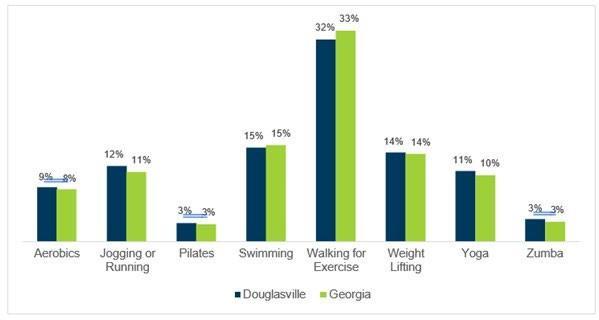

The trend charts above show Basketball, Free Weights and Tennis participation grew by 4 % over the past 5 years. While participation in Basketball and Golf trends higher in Douglasville while Tennis, Baseball and Soccer participation trends high with Football, Volleyball and Softball show slightly lower participation rates yet still strong. According to the National Federation of State High School Associations, the number of girls high school volleyball players in 2022-23 hit an all-time high of 470,488, second only to outdoor track and field (486,355), while boys volleyball participation grew to 85,255, nearly 8,000 more than last year. Over the past five years, boys high school volleyball has continued to be the fastest growing team sport in the country. Pickleball remains the fastest growing sport in the United States by 171.1% per the Sports & Fitness Industry Association (SFIA) Topline Participation 2023 report. The South Atlantic region (which includes Georgia) makes up the most pickleball players in the US at 1,087,000.


Figure 26: Local Participation in Fitness Activities
The SFIA 2023 report also listed the Top 10 most popular and fastest growing sports in America. Based on their 2022 Single Sport Report on Pickleball, ages 18-24 is the most popular demographic with an average age player of 38.1 years old.
New Facilities – Gymnasium, Community Center, Senior Center Programming
The new Jesse Davis complex will be able to house a plethora of fitness and sports programs for all ages and abilities, from older seniors to active adults to youth. Fitness programs were programs of importance to survey respondents. The three gymnasiums and walking tracks, both indoor and outdoor, and the large community center room provide spaces for yoga, Pilates, stretching, HIIT, Zumba and aerobic dance, tai chi, aerobic exercise, body and sculpt, boot camp, fitness games and fitness events. The gymnasiums will be able to host multigenerational programs and events at the same time, focusing on sport programs open gym basketball, adult sports, volleyball, pickleball, dodgeball, cornhole, indoor adult soccer leagues, adaptive basketball, adaptive sports, racquet programs for all ages, and walk/run clubs. Gymnasiums would be available for rentals outside of program schedules.
Senior Programs will have a new home in the Senior Center with the daytime use of the Community Center for large events such as monthly luncheons with speakers, seminars, senior holiday luncheon (Thanksgiving). with use of the new gymnasium with the walking track for the various aforementioned fitness programs. The utilization of all three facilities will allow for program growth of Senior Leisure programming and Silver Sneakers, both categories rated in the Top 25 preferred survey programs. Adult Adaptive programs such as an adaptive social club (18+yrs.) offered once a month could be held in the community center in the evenings with quarterly social events on a Friday night.
New leisure programs to consider: mixed-media art, painting, drawing, clay, sewing (knitting and quilting), arts & craft and holiday craft workshops, dance classes, self-directed activities (crafting, puzzles, chess, ping pong, scrabble), card games such as spades and bridge, performing arts, music, education programs, games such as bingo, cornhole league and mahjong. Other programs of interest to seniors include day trips, shopping trips, special outings, specialty parties and seminars, movie matinees, reading clubs, and senior performance programs including drama club and choral groups. Expand geocaching into the park. Rental of the Senior and Community Centers would be available outside of program schedules.
New fitness programs to consider as Silver Sneakers comes online at the facilities: walking programs (indoor and out), pickleball, senior-aged ½ court basketball, various levels of fitness programs in the gym mentioned above and adapted indoor fitness programs such as chair-based exercise classes, balance and flexibility, and strength training (for older seniors and persons with limited abilities) held in the community center during daytime hours.
The new multi-purpose turf field will enable athletic staff to program year-round activities for all ages including: football, soccer, lacrosse, field hockey, flag football (youth and adult), ultimate frisbee, spikeball (indoors as well), and men’s lacrosse.
Alice J. Hawthorne Community Center
The community center usage and focus should shift to youth and teens, two program areas with deficit programs and services as denoted by public input responses There are two multipurpose rooms that have been and can be utilized for additional youth and teen general programs such as arts, drop-in activities, table tennis, creating a “youth/teen center” environment (bean bag chairs) with the use of the gymnasium for youth open gym hours, teen league basketball program, tot sport programs, youth gymnastics & tumbling, yoga, tutoring, holidays, school break and summer camps including teen camps. Homeschool daytime programs: gym, fitness, sports, nature and art.

New Facilities – Outdoor Aquatic Center
The new state-of-the-art outdoor aquatic center features a 6-lane lap pool, a zero-depth entry with spray elements, changing areas/restrooms and deck space. This new facility offers water fun and fitness for every age group and demographic in Douglasville from open swim, to lap swimming and water fitness classes to swim lessons for all ages and abilities, there is something for everyone.
Both indoor and outdoor water parks were rated as the top facilities preferences from the public input meetings and online survey. Also from the online survey, Family Leisure Swim/Play was the highest rated program of importance with Swim Lessons/Education listed as the fourth highest rated program.

With the city operating the pool internally, the city could focus on a potentially positive budget from the operations and programs offered. The operations should include one ½ day of maintenance and deep cleaning, morning fitness programs and lap swim, summer camp weekly visits prior to opening daily, and swim lessons and lap swim schedules in between the daytime and evening open hours. Additional special events throughout the summer can make the season special.
Aquatic Center Programs would include lessons for: Parent-Tot (2-3 yr), Youth ages 3-10, Teens and Adults and Adaptive Swim Lessons. Adult Water Fitness programs: water aerobics, water fitness, water therapy, silver sneakers aquatic exercise, and adaptive water therapy. The viability of a swim team program should be discussed.

PROGRAMS AROUND THE PARKS
• Monday mornings would be used for deep cleaning the pool. Friday Nights can be utilized for Special Events for family events, dive-in movies, teen events, adaptive swim nights.
• Friday, Saturday and Sunday evenings not scheduled can be utilized for group rentals. Swim party packages including use of the pavilions could be set up with group rentals during open swim hours.
• There would be daily fees, seasonal swim passes, punch cards, silver sneakers and rental fees. All programs and lessons would be offered for a fee.
• Free Fitness in the Park series with drop-in for free to give residents a fun introduction to programs. This program can expand rotation from just Yoga at Town Green to various programs at different parks.
• Develop a schedule for the REC-N-ROLL mobile unit to visit all the parks with different programs and activities throughout the year. Utilize the unit during the summer to fill gap areas in the city where children are unable to attend summer camps. Bring the activities to the neighborhoods.
• Partner with Douglas County senior services ceramics to develop shared events, programs and marketing. Review programming gap areas and categories not offered by the City.
• Develop a summer stock program with theDouglasvilleCulturalArtsCouncilandDouglasvilleCommunity Theater partnership to include all ages (children and adults) culminating in free community performances at Town Green.
• Nature/Gardening Programs - partner with the UGA Extension, Douglas County and the Master Gardeners to develop garden plots including elevated plots. Gardening classes and nature programs were both in the Top 10 preferred programs from public input meetings and the survey. With so many organizations in Douglasville that are a part of the Agri-Trail in Douglasville including the Master Gardeners, Sweet Water Honey Farm, Accent Nursery & Landscaping, Local Farmers and the Alpaca Farms, there are many local resources to assist in the development of nature programs for all ages.
• Track/Running/Cross-Country programs can be offered at various park locations and in partnership with the local school district.
• Expand Therapeutic Recreation programs- Miracle League is one aspect of Therapeutic Recreation. Many cities and counties have large, comprehensive TR programs including visual arts (mixed media, nature, wood, canvas), theme nights, bowling league, game nights, movie nights, holiday events, lunches out, day trips, Disney trips, Wii bowling, taco night, Adaptive Yoga, Adaptive Soccer, Adaptive Tennis and more.
• Expand programming into general programs listed for adult 18+ years old with separate children’s programming by ages.
• Teen Volunteer Club.
SUMMER CAMPS
DPRD has the facilities to offer 10-weeks of Summer Camps at both Hunter and Jesse Davis Parks to accommodate a higher number of children in each location in order to meet the demands and needs of the community. Summer Camps was in the Top 5 Preferred Programs by survey respondents. Registration is typically full. Even with the Boys and Girls Club summer program at Hunter Park, there is still a demand for more spots in these camps.
Full Day Camps can be held at both parks.
• Specialty Camps both full-day and half-day optionscan be held throughout the system. With the outdoor pavilions, fields, courts, open field space and indoor options for inclement weather including Athletic Camps, Outdoor Sports Camps (archery, fishing, mountain biking), Balance Camp, Musical Theatre Camps, Kinder Dance and Drama Camp, STEM (Bricks for Kids) and Racquet Sports Camps
• Adventure Camp - Day Trips for youthages 11-13 years
• Youth Culinary Camps, Nature Camps, and Creative Arts Camps can be offered at both parks.
• Include Counselor-in-Training program.
SPECIAL EVENTS
DPRD offers yearly scheduled special events.
• Additional Suggested Events – Events should be developed around community interests:
• Cultural Festivals partnered with local organizations
• Daddy/Daughter Valentine’s Dance
• Expand Black History Month Events - Speakers, Music, Authors and Art Receptions. Partner with the city’s CVB, Advisory Council on Historic Preservation, local businesses, residents and historians.
• Flashlight Egg Hunt (evening event)
• Holiday 5k/10k Themed Events for serious runners and families
• Family Camping in the Park Spring/Summer/Fall
• Daughter Date Night
• Fun with your Son Night
• Grandparents Day Celebration for all ages
• Mom/Son Halloween Dance
• Dia De Los Muertos Celebration
• Senior Thanksgiving Luncheon with Music, Local Sponsorship
• CandyCaneHunt(eveningevent)
• Holly Jolly Fishing Derby with Santa
• Polar Express
• Pictures with Santa
• Athletic Tournaments Host and Partner (Lacrosse, Baseball, Softball, Volleyball)
• Adaptive events: fishing, super star dance, movie matinee, movie night, adult social events. Partner with local businesses and organizations, Douglas County, YMCA, hospitals and schools.
When developing new special events and schedule, ensure each one is unique and is developed to become a core event, one that would be offered yearly with an expected increase in participation, partnerships and sponsorships.
OTHER RECOMMENDATIONS TO SUPPORT PARK PROGRAMS AND USERS
Safety - Park Amenities (Lakes and Trails)
Personal safety was a top reason respondents did not take advantage of the parks, facilities or trails.
• Hunter Park Lake is a beautiful and unique amenity. Add Solar LED lighting to the trails around the lake, parking lot and in the park to provide a safer environment and longer hours of use for residents throughout the year.
• Add solar LED lights to all walking trails in the park system.
• Add solar LED lights to the parking lots in the park system, particularly Fowler Park
• Strategically placed solar Blue Light emergency phone beacons in the parks will provide the security park users are looking for in all parks.
• The addition of “park police” is important. The Security Company officers were Level 2 security with minimal authority in the parks and were not always respected.
Open, Clean Restrooms in Parks
When restrooms are not available at parks daily during open hours, it deters usage of parks. Parents need restrooms open for their children and themselves. Seniors need more frequent visits as do others with physical circumstances. Restrooms should be available during open park hours or longer for participants of scheduled programs or events.
Automated door locks can be installed across the system to unlock and lock restroom doors at set times.
• Current park maintenance schedules provide park and facility maintenance 7 days per week with limited hours on Saturday and Sunday. With the anticipated expansion of programs at both Hunter and Jesse Davis parks, along with additional maintenance staff, scheduling should be rotated with staff in the system through 2 p.m. on Saturday and Sundays.
• Part-time maintenance staff should also be rotated to evenings and weekends during late activities/games and events.
• Restrooms should be cleaned/stocked 3times per day (mornings, afternoons, and late afternoons) for parks that do not have scheduled activities/events during the weekdays.
• Restrooms at parks that are scheduled should be cleaned 3 times a day and have amanager or staff on duty to maintain/stock the facilities during practices/games/programs at their assigned parks in the evenings.
• Restrooms should be cleaned early in the mornings and afternoons on Saturdays and Sundays unless there are scheduled events, games, and rentals when they will need later attention.
• Restrooms and pavilions should be cleaned directly after a rental is completed with maintenance staff scheduled on duty as part of the rental.
• Parks with pavilions marketed as available for group rentals or utilized for events or programs should have a restroom available to park user groups. Mill Village Park should add a waterless toilet in the park if the pavilion is to be rented to the public.
Aclean, available restroom is an important amenity to participants of programs and users of the parks.
• Develop new in-house programming in all program categories and for all ages for both Hunter and Jesse Davis Parks with each facility identified for its specific purpose, program offerings and population demographic served including preschool, teen, adult and expanded senior programming.
• Expand Summer Camps and maximums to accommodate demand.
• Developacommunitygarden programatmultiple locations with focus onincreased access to fresh, local produce, nature and outdoor education programs.
• Develop new aquatic programs and expand fitness in the parks
• Expand Holiday Special Events, Cultural Events, Festivals, 5/10K Runs/Walks
• Develop new aquatic programs and expand fitness in the parks
•
•

• Developcomprehensiveevaluationofprogrammingcapacity forallfacilities (indoor and outdoor).
Considerrevisionoffacilityhours toaccommodaterecreationprogramschedules for the entire community. Advertise, staff and schedule rental hours “outside” of facility hours.
Revise parks staffing schedules inrotationtosupportweekendandeveningactivities.
PROGRAMMING
ming to include ages 18 months - Teens. Expand Youth Athletics.

• Develop new aquatic summer camp options for all camps. Consider bus once-a-week for campers at Hunter Park.
• Add new summer camps (both full-day and half-day) to include Teens for the 10-week summer period. Add counselor-in-training program.
ADULT PROGRAMMING
• Define Adult programming to include younger and active adults (18-54) and develop programs in the Adult General and Adult Sports categories.
• Implement a Silver Sneakers programwith differentaddresses for eachfacility the program can be utilized in: Ike Owings Community Center, Jesse Davis: Senior Center, Gymnasium, Community CenterandAquatic Center (Address A,B,C,Das example).
• Continue toevaluateandexpand onrecreationprograms foradults. Consider development of senior softball program.
THERAPEUTIC PROGRAMMING
• Continue to expand Miracle League program and utilize the field for alternate programs/events.
• Developnewtherapeuticrecreationprograms for pre-kthroughhigh-schoolage groups (arts, culinary, swim therapy and classes, yoga, dance, nature, music, tennis, social & holiday events, trips.) Expand adaptive outdoor youth multisport programs on fields.
• DevelopAdultTRprogramming Social Club to include monthly andquarterly events, dances, programming.
AQUATICS
Develop of a new community aquatics program to include swim lessons for all ages, events, fitness programs, adaptive programsanda potential futureswim team (ifviable).
Teen/Youth Focused Center Special Events Swim Lessons & Aquatic Programs

Senior Program Expansion
Expanded Athletics (all ages and abilities)
Exercise Programs
JESSE DAVIS PARK
New Summer Camps
Rentals
Adaptive Programming
Chapter eight


LEVEL OF SERVICE STANDARDS
THIS PAGE INTENTIONALLY LEFT BLANK
INTRODUCTION
It is important for a parks and recreation comprehensive master plan to include a Level of Service Assessment associated with equitable services, community needs, and service gaps. Categorizing facilities into park typologies allows the planning team to assess the overall diversity and distribution of facilities throughout the community. Benchmark comparisons against national standards allows the planning team to identify surpluses or deficiencies in facility types and establishes a point of reference for decision makers. The National Park and Recreation Association (NRPA) collects and maintains a database of standards for park improvements and infrastructure. Next, a gap analysis is performed to determine if there are any areas in the community that are lacking in service coverage. This collective information allows the planning team to develop strategies for enhancing the current service delivery system, address any deficiencies identified and make recommendations

LEVEL-OF-SERVICE
Evaluating the level-of-service of a parks and recreation system helps determine whether that system is meeting the needs of the population it serves. The analysis begins with a review of existing facilities (indoor and outdoor) and the level-of-service offered by the City of Douglasville Parks and Recreation Department. Table 4.2 summarizes the inventory of indoor and outdoor facilities locatedin theCity of Douglasville. Thefacilityinventoryincludes 8 park properties with a total acreage of approximately 297.6 acres that are currently being utilized by the city.
When considering level-of-service, it is also important forthe planning team to identify other recreation providers who are offering park and recreation services to the community in addition to the Department. In many communities, these other providers help to fill service areas by supplementing community recreation needs with their own programs and facilities. Facility inventories for these other service providers are also identified in Table 4.2 and include a mixture of Douglas County parks and facilities, and private businesses and partnership facilities in the city of Douglasville.


Table4.2: FacilityInventory
Once the existing facilities inventory was completed, the overall number and types of facilities were compared to national parks metrics data. NRPA collects park facility, programming, staffing, budget, and agency funding data from parks and recreation agencies across the United States. This data allows parks and recreation departments to compare facility, programming, staffing and budget information against peer agencies and can assist parks and recreation professionals in managing resources. In addition to nationwide comparisons, the data provided by NRPA allows agencies to perform comparisons to providers with similar sizes and functions The parks metrics analysis is not representative of specific standards. A single set of standards does not exist because different agencies serve different communities that have unique needs, desires and challenges. Recreation agencies can search for comparable agencies based on population size or agency type.

The comparison of the Department facilities to national parks metrics data revealed surpluses and deficits of City facilities as shown in Table 4.3. Douglasville falls below the NRPA median for park acres per capita or 11.2 acres per 1,000 residents. This illustrates a current 262-acre deficit of active and passive park land required to meet the national comparison of similar agencies. This deficit will increase to a shortage of 581.4 acres in the coming decade utilizing the metrics of 10.2 acres per 1000 with a projected population of 57,000 residents. Golf courses are typically not included in parks metrics calculations; thus, West Pines Golf Course (164.3 acres) was excluded from the park land total acreage. Douglasville currently manages 7 parks and one golf course.
The typical park and recreation agency has one park for every 2,386 residents. Douglasville’s population jurisdiction (20,000-49,999) averages 2,062 people per park. Currently, Douglasville serves 5,036 residents per park. Aligning to national standards would mean Douglasville would need an additional 10 parks to meet the current parks-to-population ratios. Looking to the future estimated population of 57,000 residents by 2034, the metrics change to 1 park per 2,346 residents or 24 parks (average). The number of parks, types and sizes would vary based on the goal of 581.4 acres of parkland to serve the population. Acquisition and development of additional parkland isone ofthemost important part of the plan's implementation. It will help mitigate future challenges as land continues to be developed for other purposes.
The Department has 7 playgrounds and 9 pavilions, whereas the average parks metric based on Douglasville’s population is at 12 playgrounds and 12 pavilions, respectively. Therefore, the Department has a current deficit of -5 playgrounds and -3 pavilions. Similar deficits were identified for athletic fields including multipurpose fields, youth and adult soccer fields, football fields and youth and adult softball fields. Youth baseball fields were the exception with a surplus of +4 fields. Outdoor basketball courts, pickleball and


tennis courts are also exceptions, each with a surplus in comparison to the national metrics for the current year population estimate. However, with the projected growth in population over the next ten years, these deficits become larger. For example, the current year deficit for playgrounds is -5 while the deficit for 2034 will increase to -8. While these standards provide guidance on the quantity of facilities, they should not be used indiscriminately or without understanding facility quality, location and consideration of public input. This facility assessment provides a starting point for further investigation. To determine demand, actual scheduling of facilities should be used as well. For example, if current sports fields are constantly programmed at full capacity, additional sports fields may need to be considered.
Addressing facility deficiencies should be weighed against the specific needs of the community. While national standards indicate a significant need for additional rectangle fields, the Department should evaluate program participation numbers to determine a more realistic facility need to support demand from the community. Furthermore, consideration should be given to develop facilities that are suited to facilitate multiple programs. For example, the development of multi-purpose fields can accommodate a wide range of sports programs, rather than investing capital funds into single-use fields like a football field. This approach will provide significant capital savings as compared to developing additional acreage to address community needs. The City of Douglasvillecurrently falls short of reported national averages of parkland acreage. With the anticipated renovation and upgrades of the baseball/softball complex at Hunter Park, consideration should be given to the level of current participation rates and the anticipated usage for additional programming, rentals, and state and regional tournaments. The Department should continue to monitor activity participation rates on a regular basis and reevaluate facility needs to align with demand.
BENCHMARKING
In addition to evaluating the City of Douglasville’s level of service to national parks metrics, the planning team identified benchmark communities to perform a similar analysis. Typically, these benchmark communities are nationally recognized for exceptional delivery of parks and recreation services, both in terms of programs and facilities. In selecting the benchmark communities for this report, the planning team coordinated with department staff to identify award-winning departments that service similar communities by assessing demographics such as population size, median age, median income and ethnic profiles. Through this process, the following benchmark communities were selected for comparison toDouglasville:
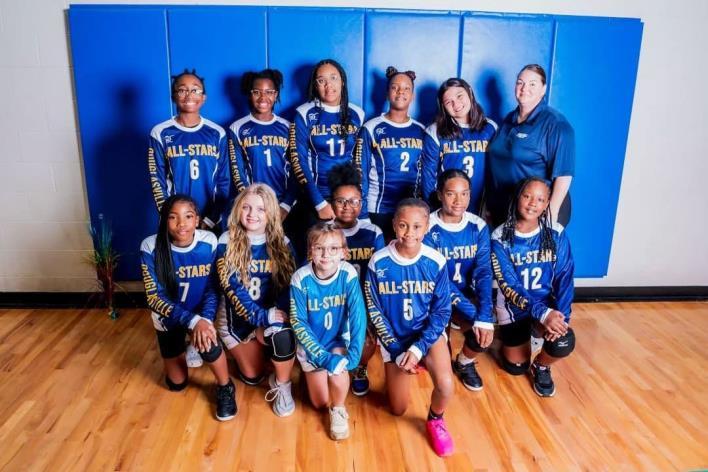

Comparisons were made between these communities and Douglasville in the areas of total number of facilities, total park acreage, and diversity of park classifications. As indicated earlier in this chapter, Douglasville’s department consists of 7 park properties and 1 golf course encompassing approximately 297.6 acres. These existing park properties make up 4 distinct park classifications: Community Park (2) Neighborhood Park (3), Mini Park (2) and Special Use Park (1). The data for the benchmark communities are as follows:
Based on these comparison points, the City of Douglasville has fewer parks, less park acreage and less facility diversity than the benchmark communities. Douglasville’s park types show a diverse range of facilities for the community. However, the facility diversity is still less. These benchmark comparisons, along with the national comparisons, indicate that Douglasville’s level of service should be improved through the development of more parks with varying classifications.
EXISTING PARK LOCATIONS
Currently, the Department owns and maintains 8 park sites throughout the city with the addition of the Town Green. In general, these facilities are centralized in and around the downtown Douglasville area. Existing park locations and park types are shown on Figure 4.2.
GAP ANALYSIS
A gap analysis is an assessment of the service areas related to parks and recreation facilities to determine if there are areas of a community that are under-served. The service area analysis begins by classifying existing parks using the park classifications previously discussed. All existing parks were classified based on NRPA definitions, park offerings, and size. Service areas for each category were assigned accordingly and population distribution was reviewed to determine if park locations are accessible to most residents
The following maps identify the gaps in the overall service standard for these park categories: mini parks, neighborhood parks, community parks, regional parks, natural resource parks, sports parks and special use parks.
This mapping exercise shows that there are small service gaps for Douglasville facilities in the northern, northwest, western and southwestern areas of the city. Amuch larger service gap is present in southeastern and far east portions of the community. It should be noted that West Pines Golf Club displays a large map service area. However, it is a membership-only facility and not a park, thus limiting general programming opportunities. For this reason, the planning team still considers these areas to be potentially underserved, despite apparent coverage. The service gap areas align with the Trust for Public Land ParkServe analysis showing those areas of the city having a medium to very high population densities. The analysis also reports only 26% of Douglasville residents live within a 10-minute walk to a park. Providing additional park facilities in these areas will enhance access to recreation opportunities and offer a more consistent level of service across the community.

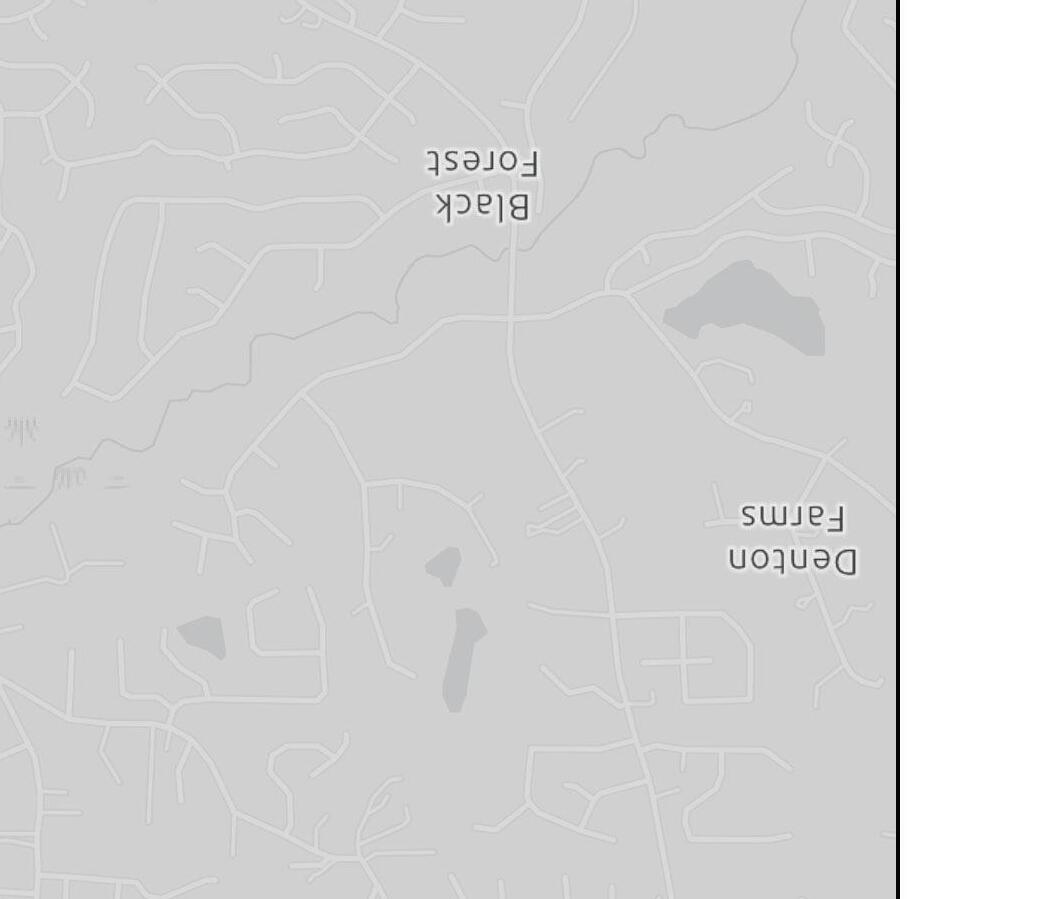





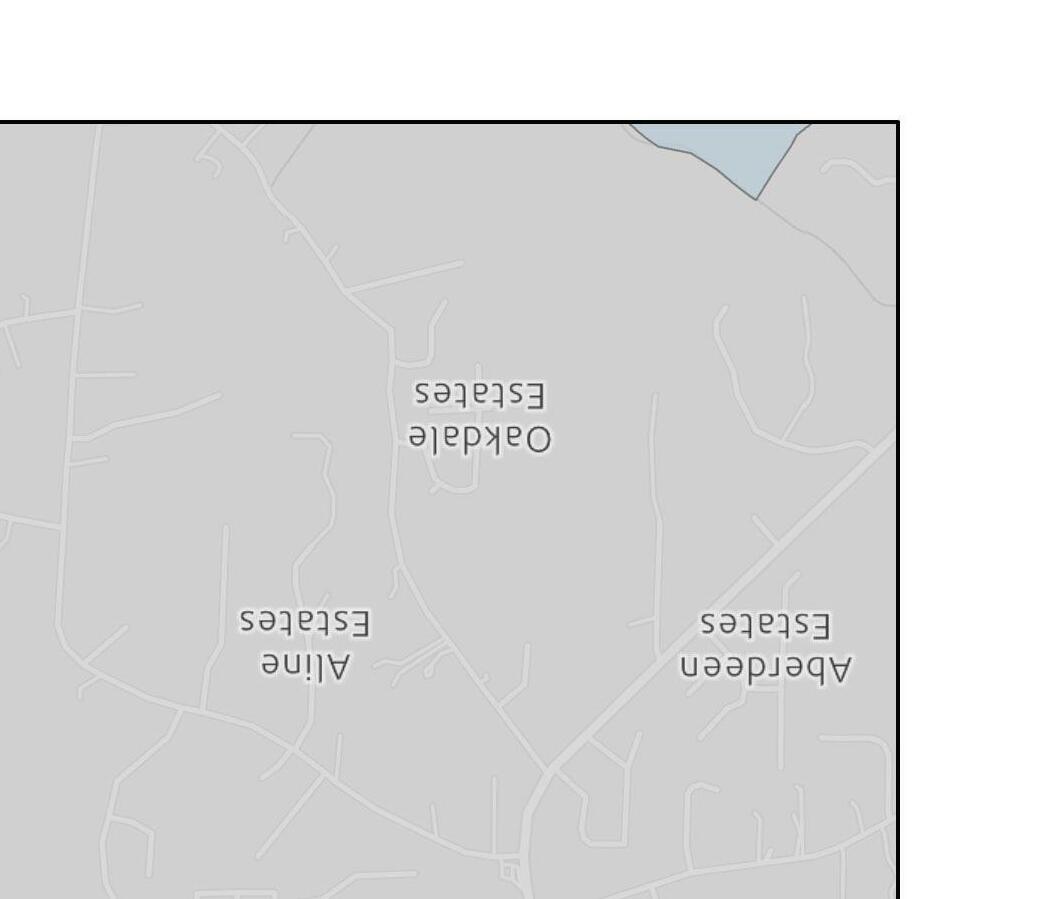
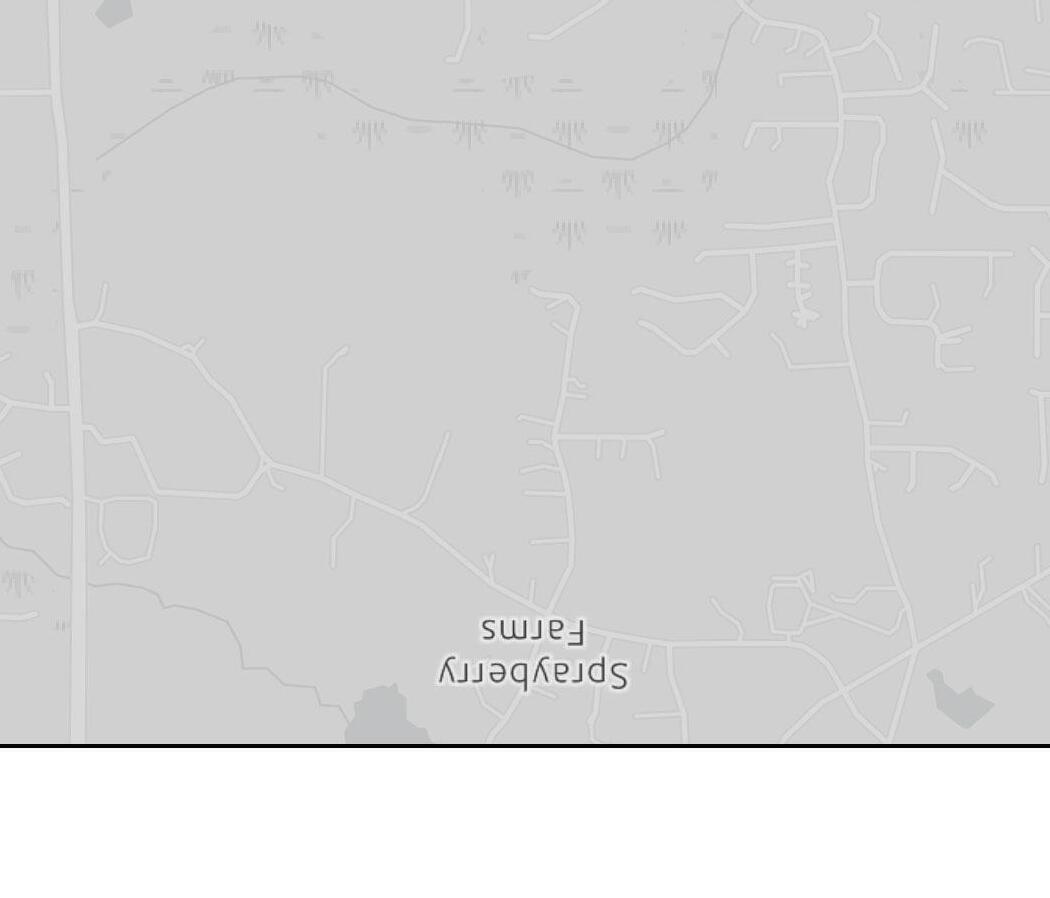







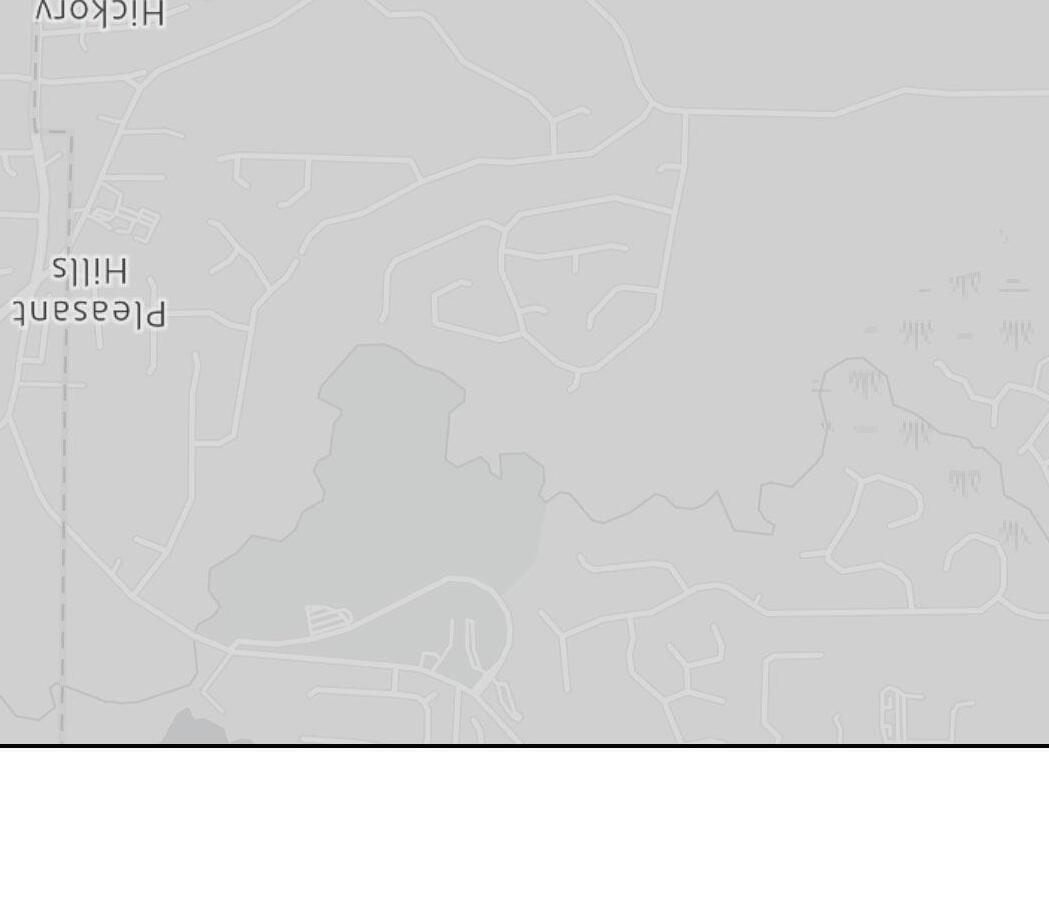
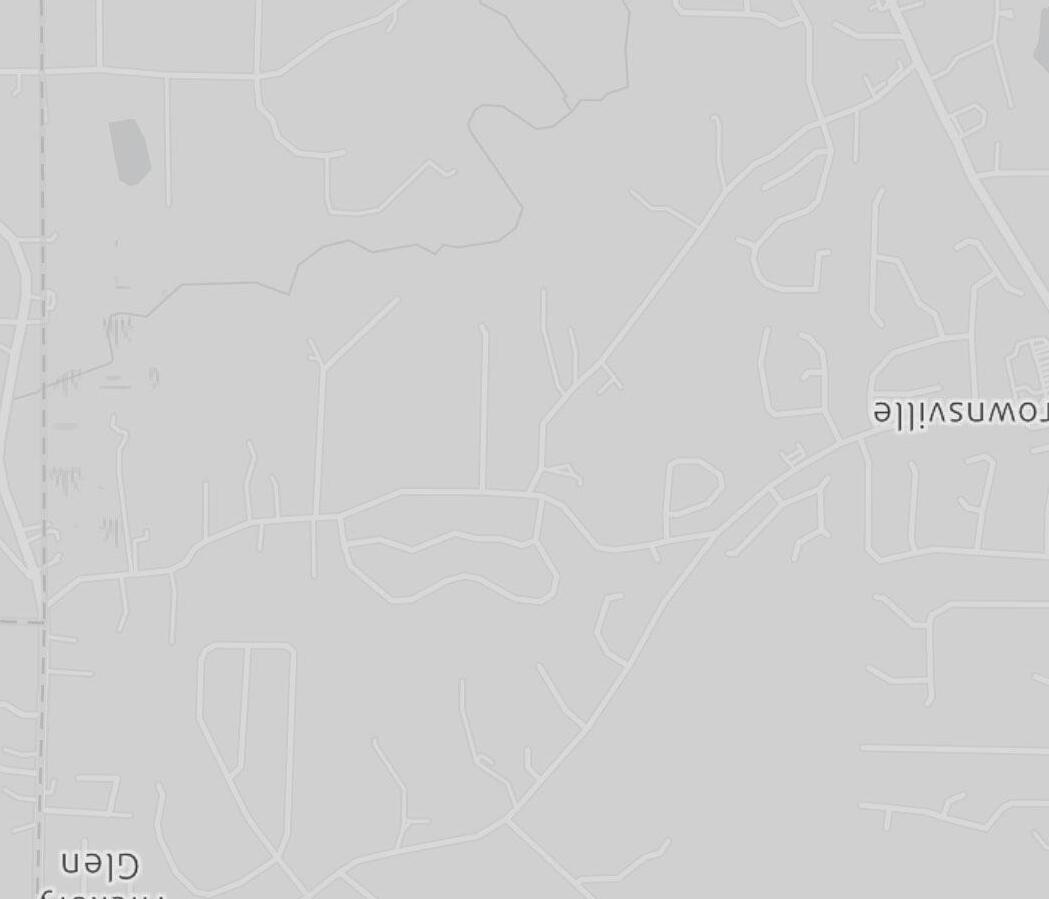
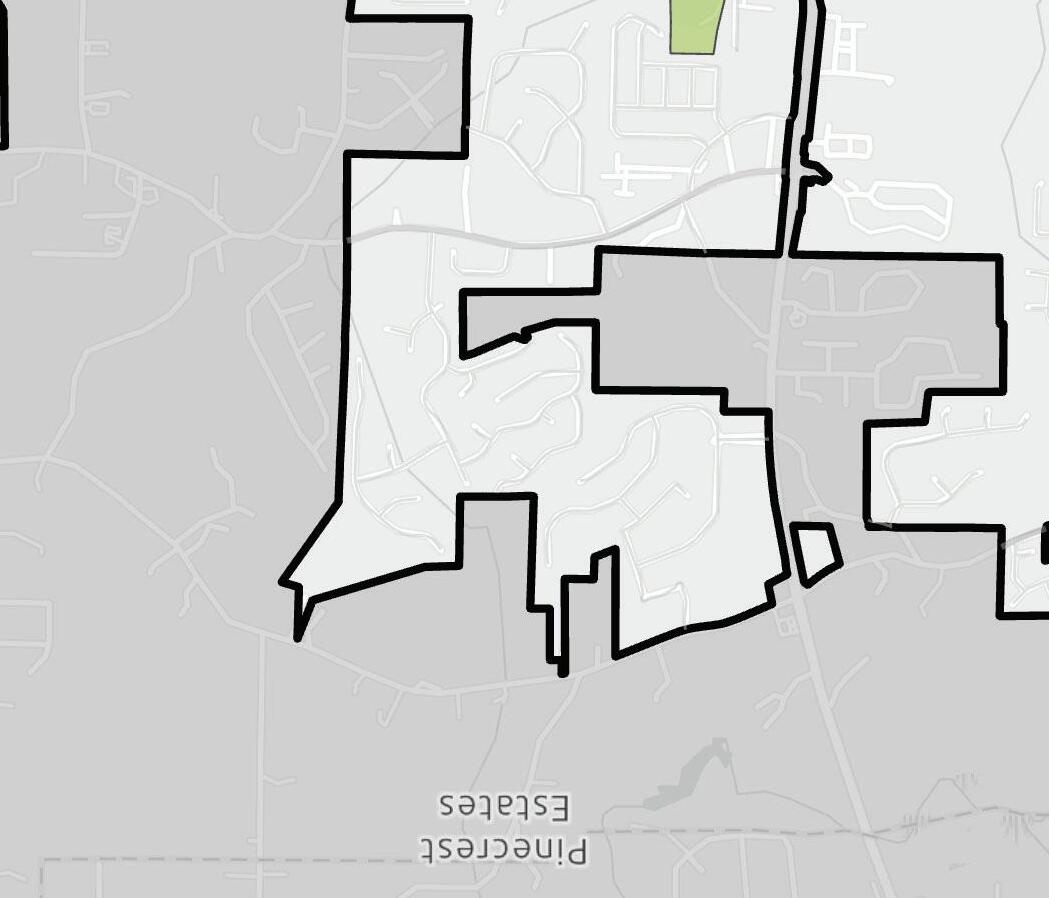

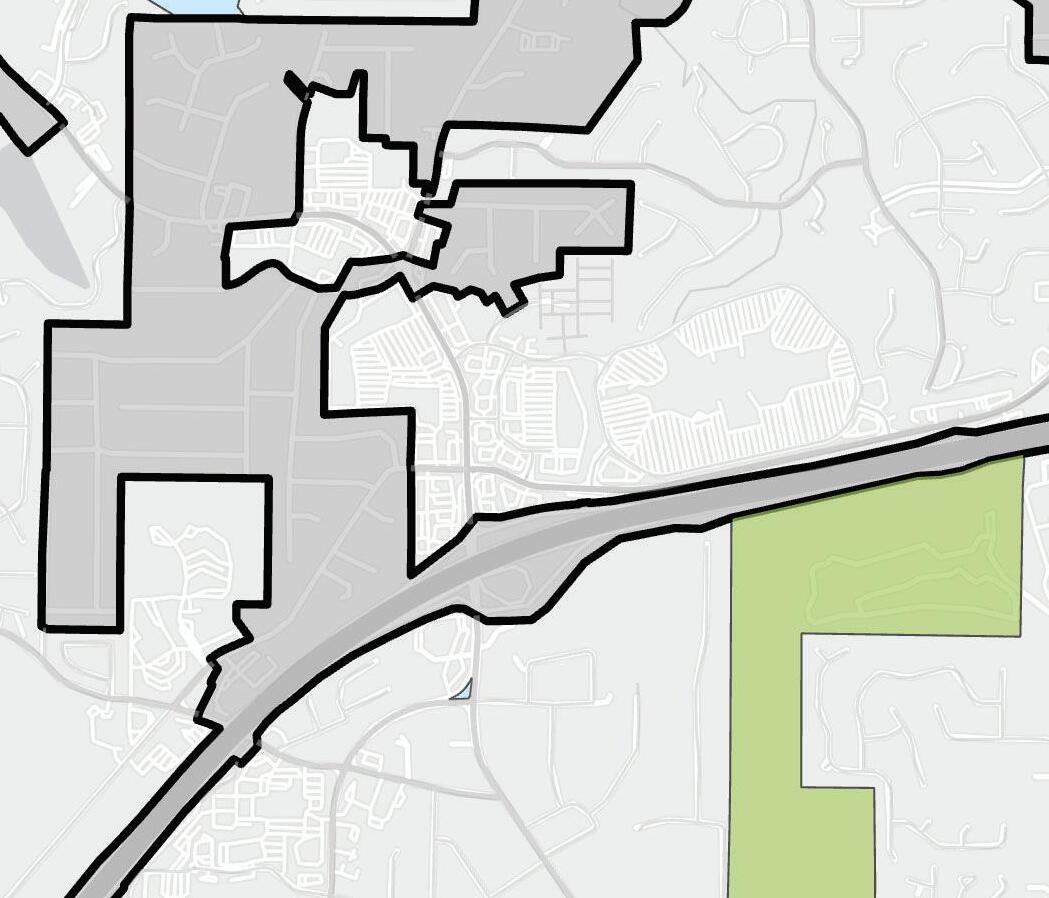
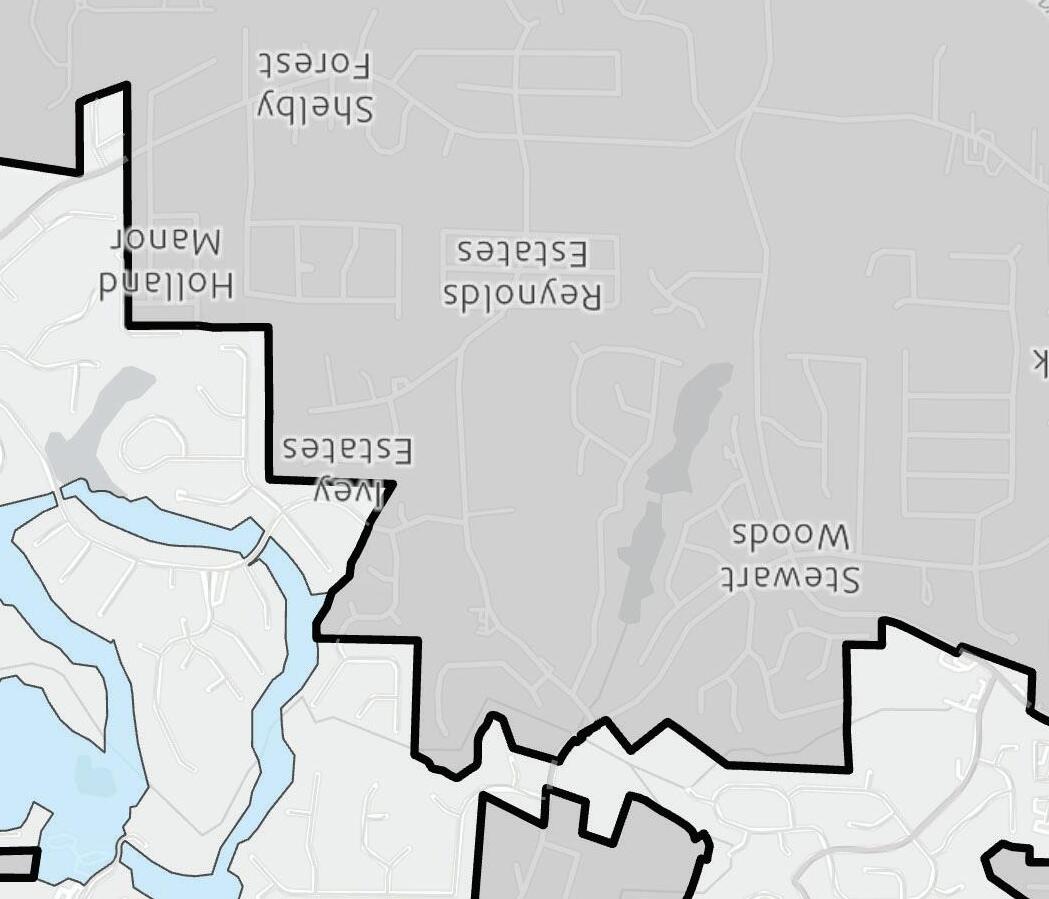



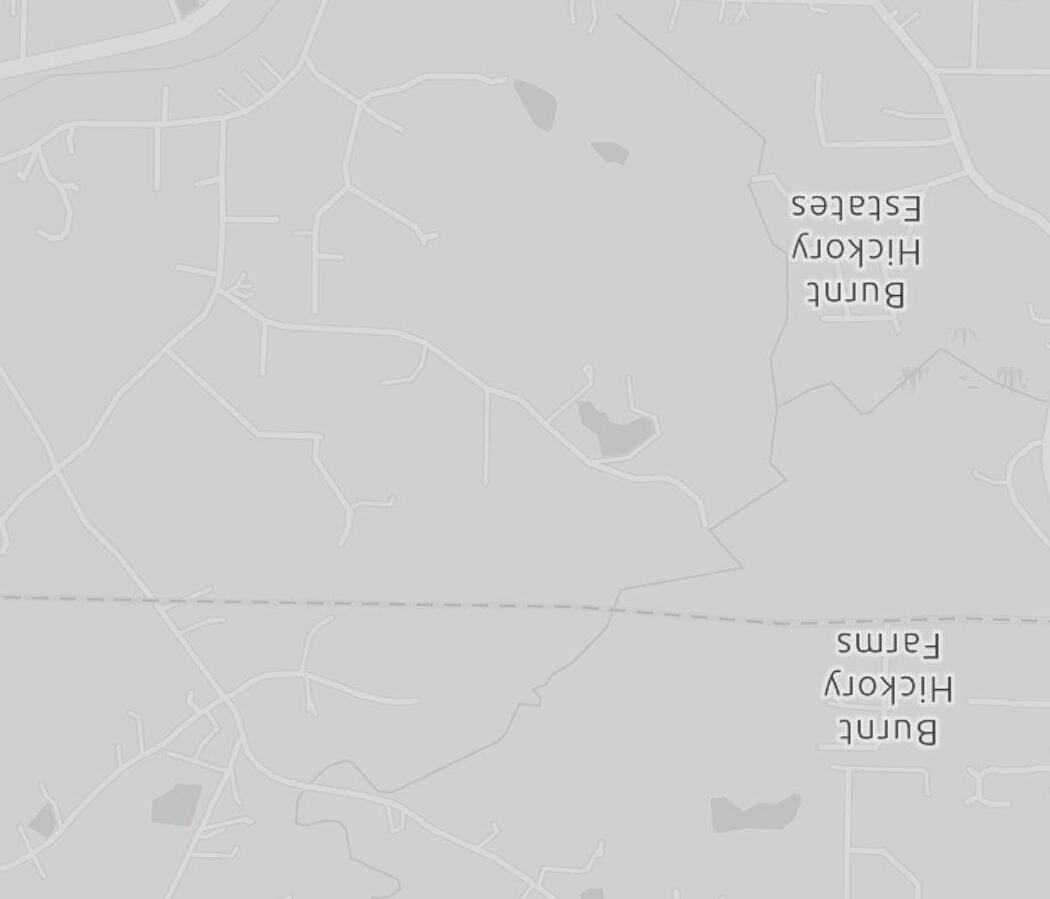
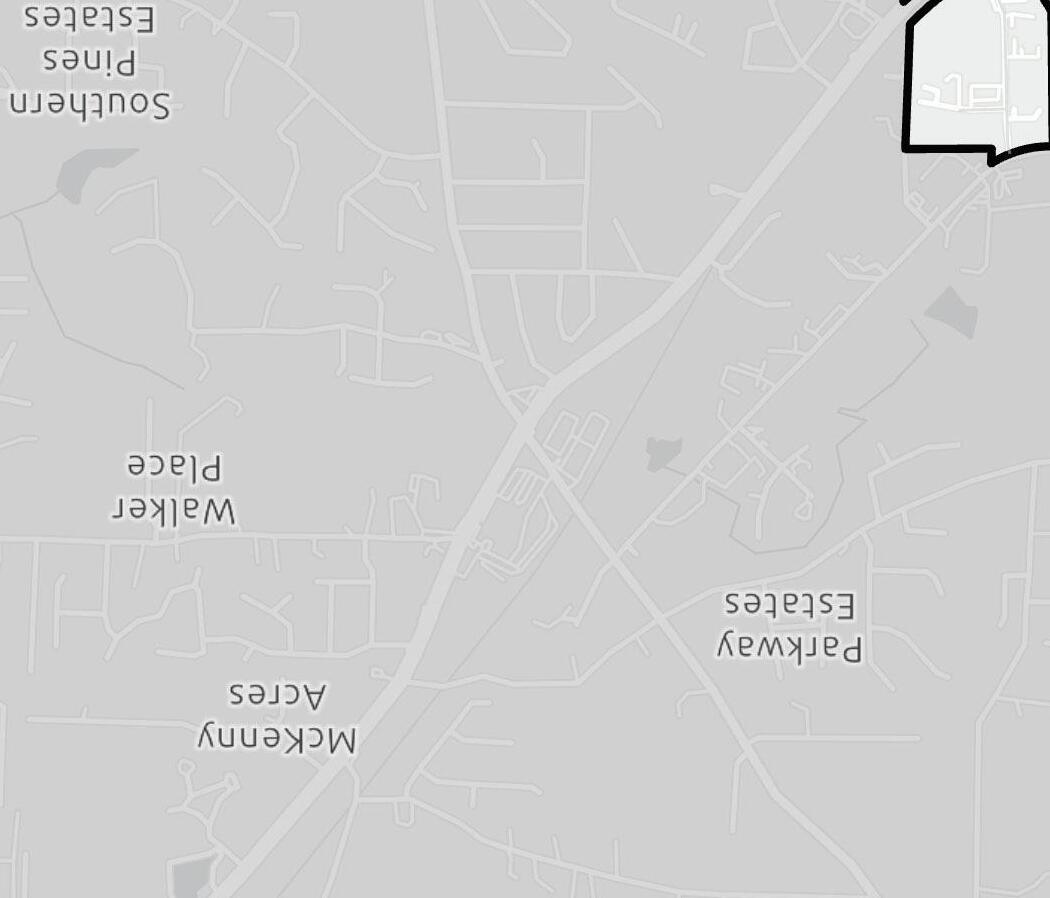
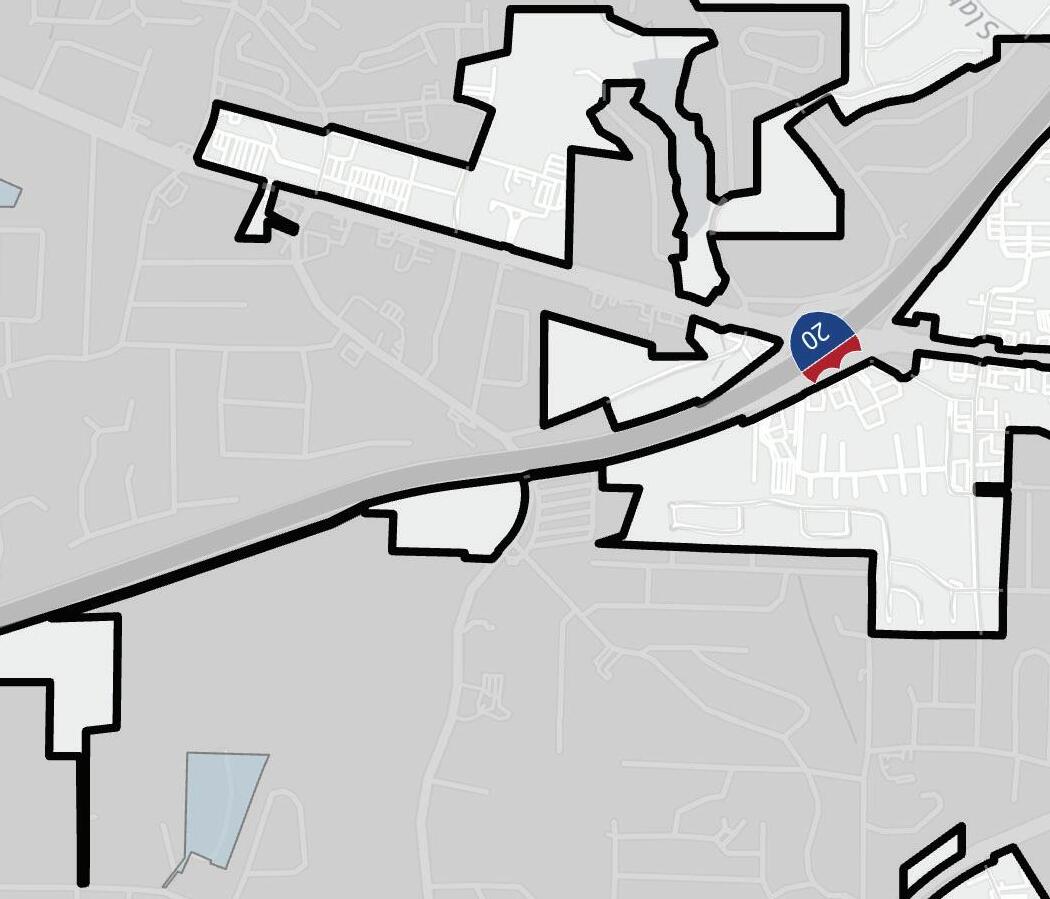


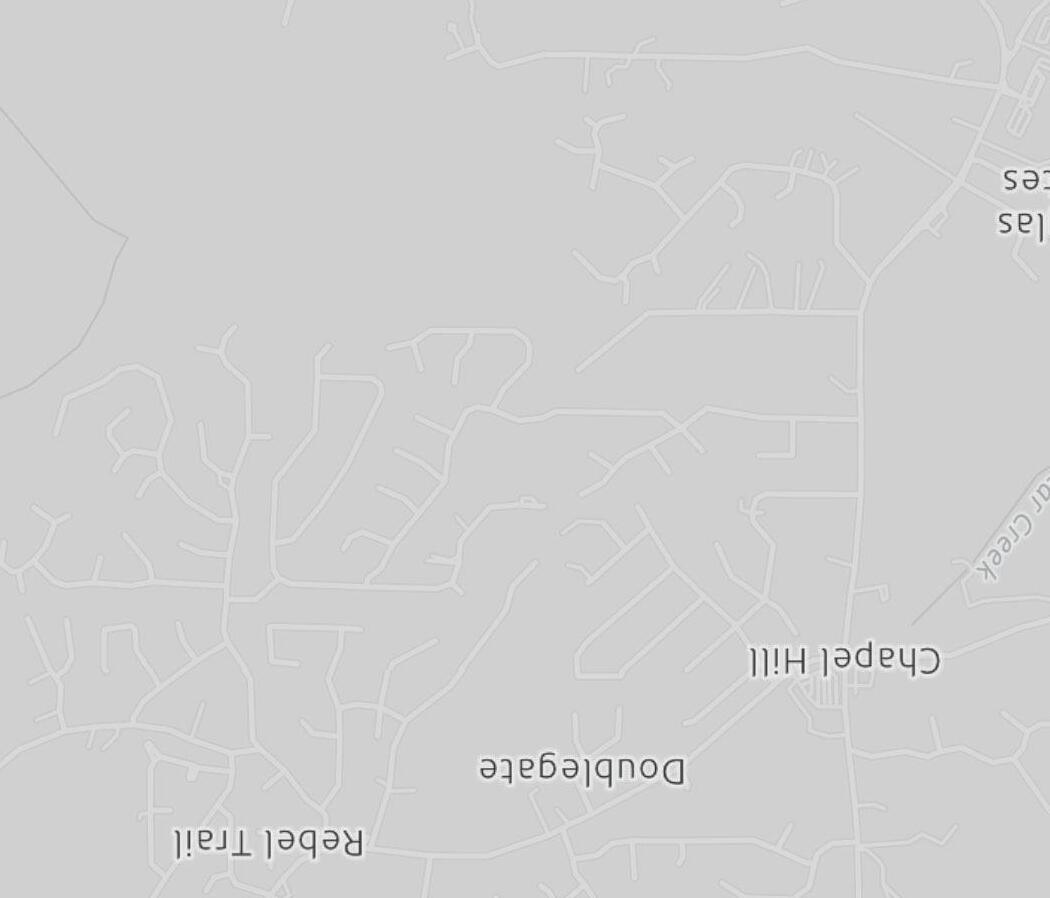



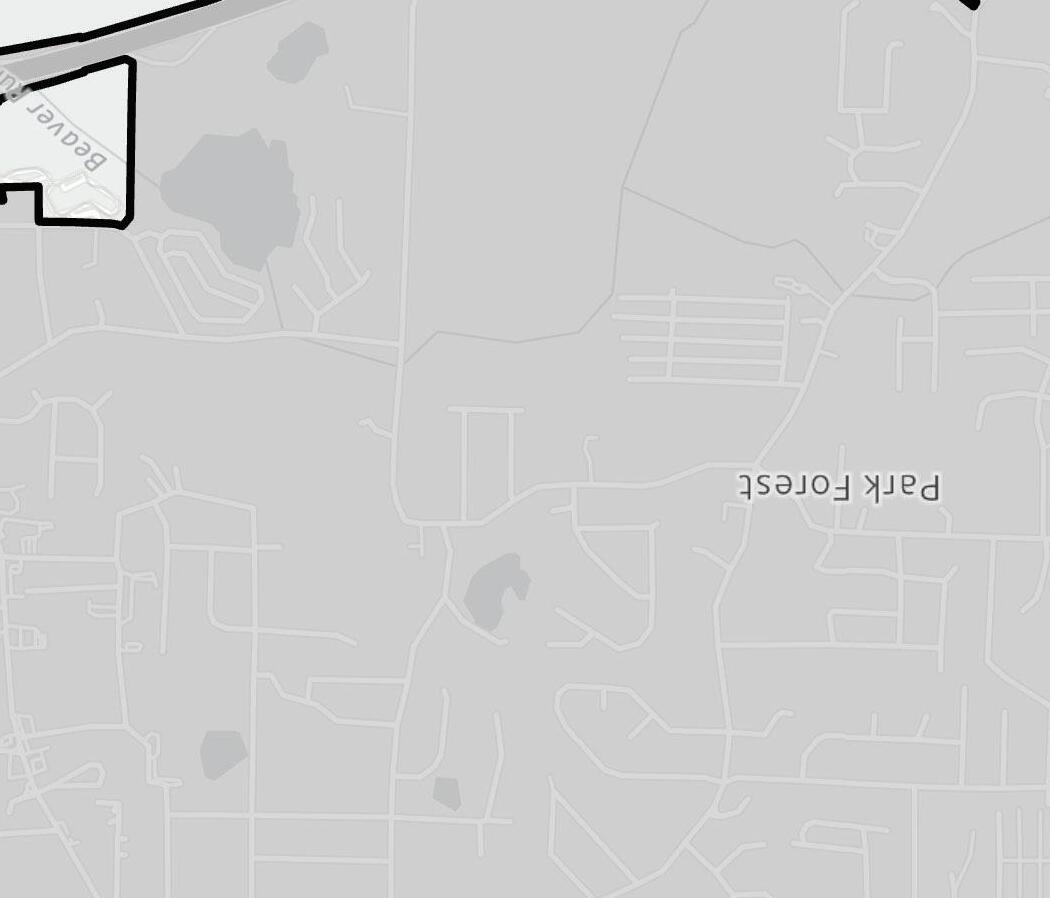
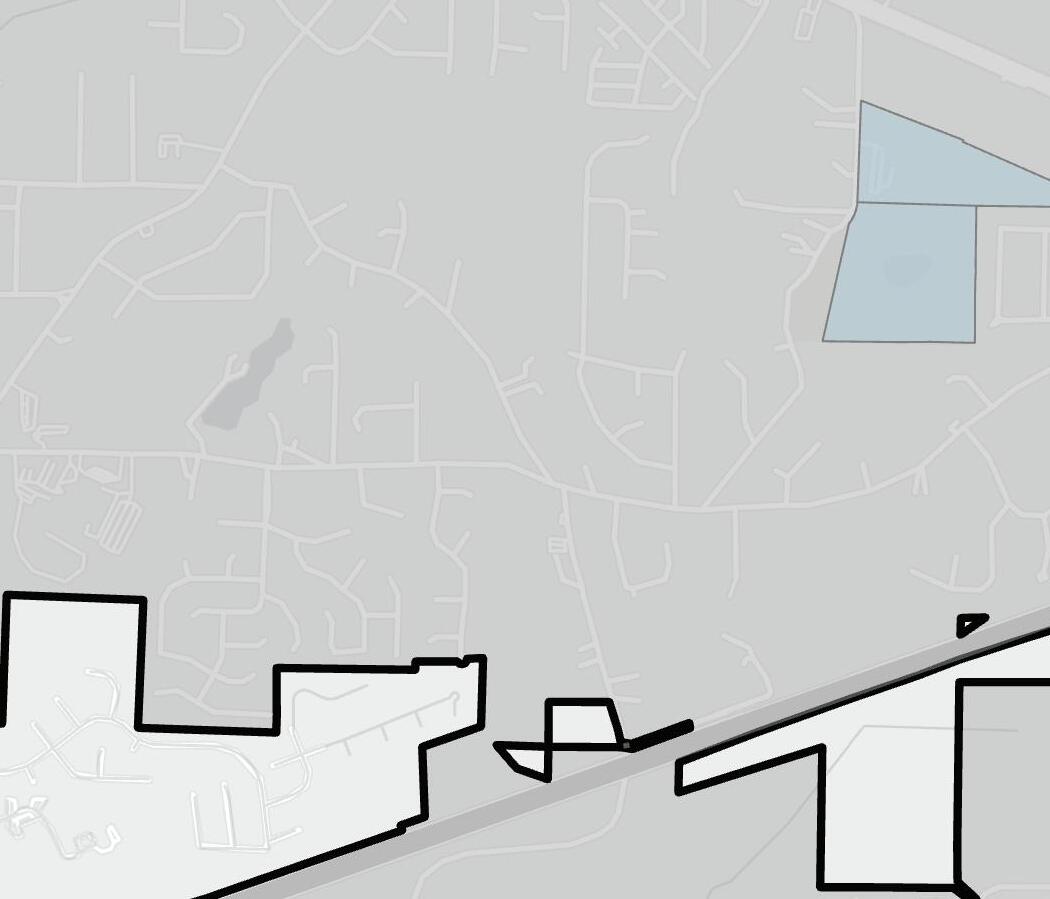



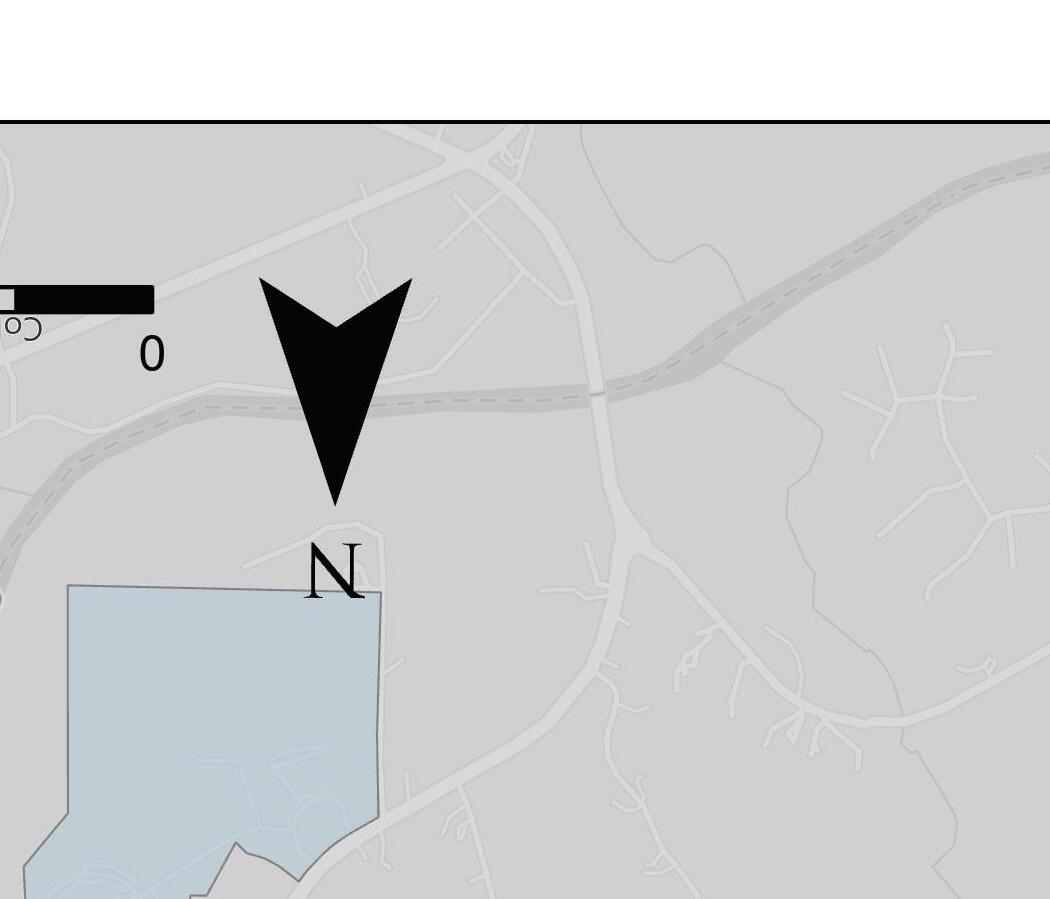



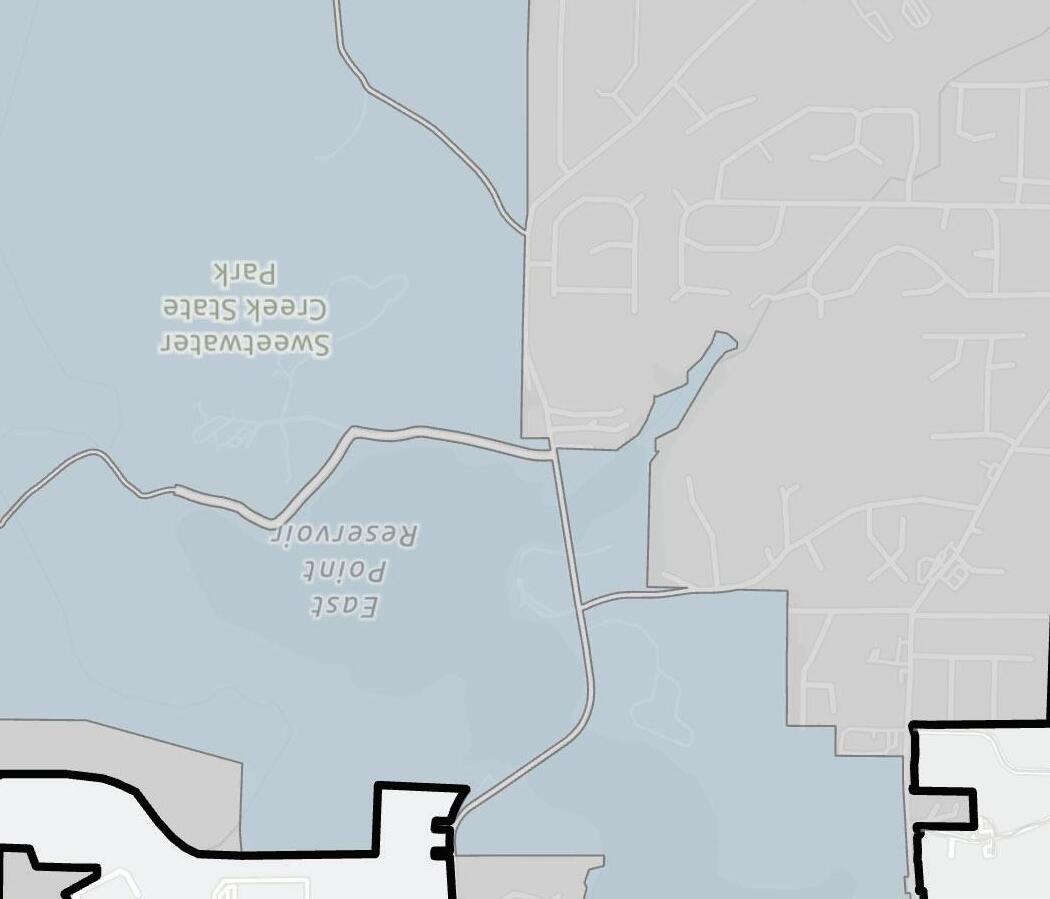
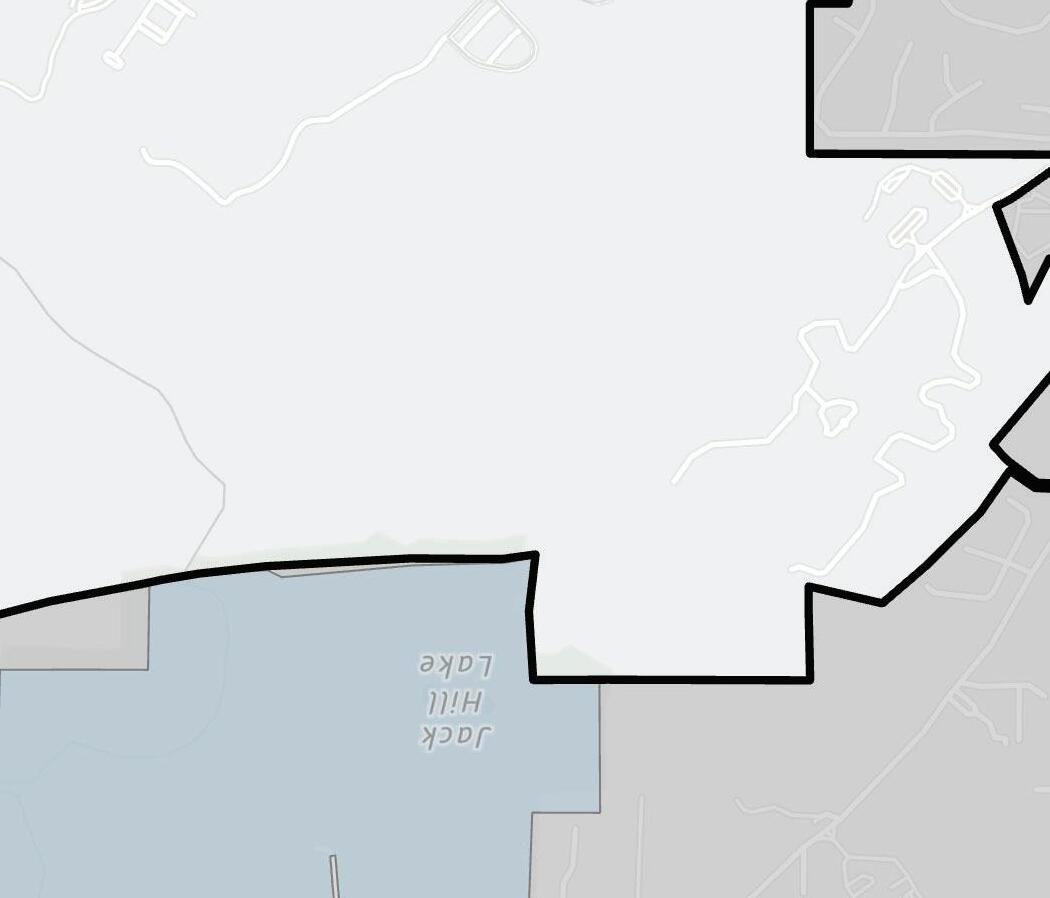
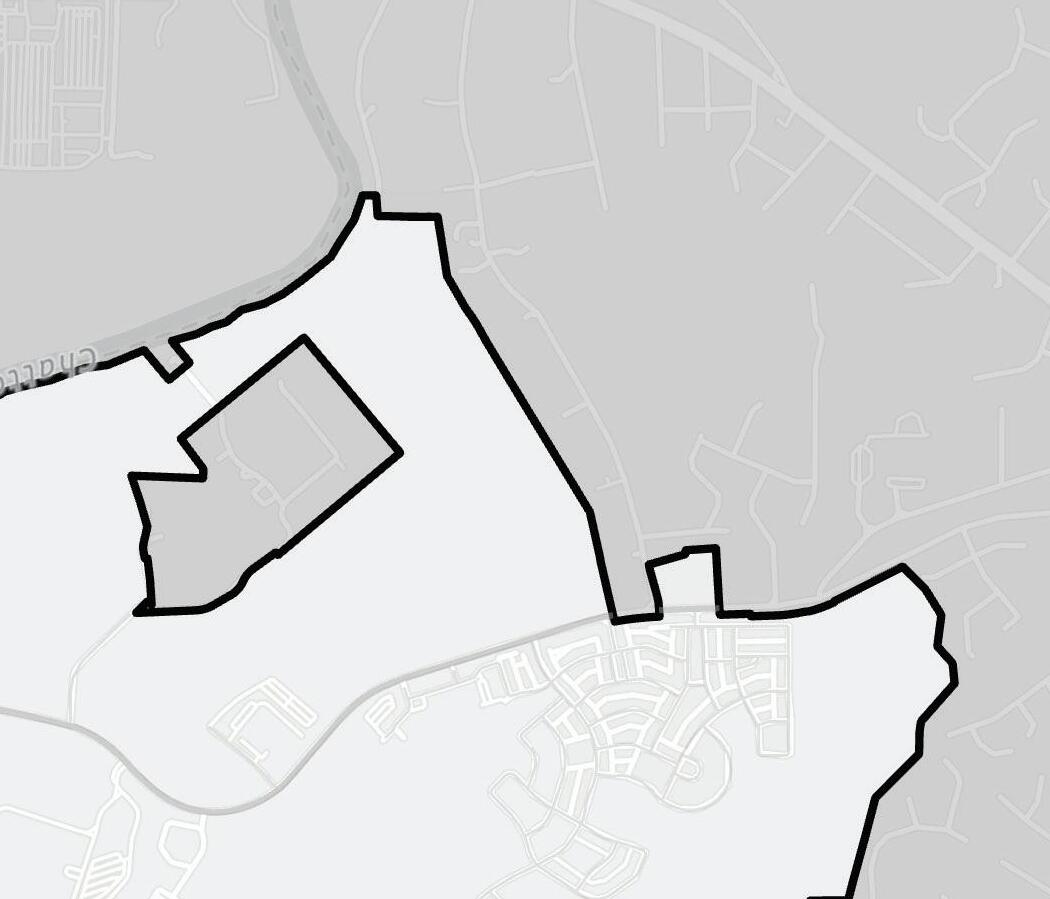

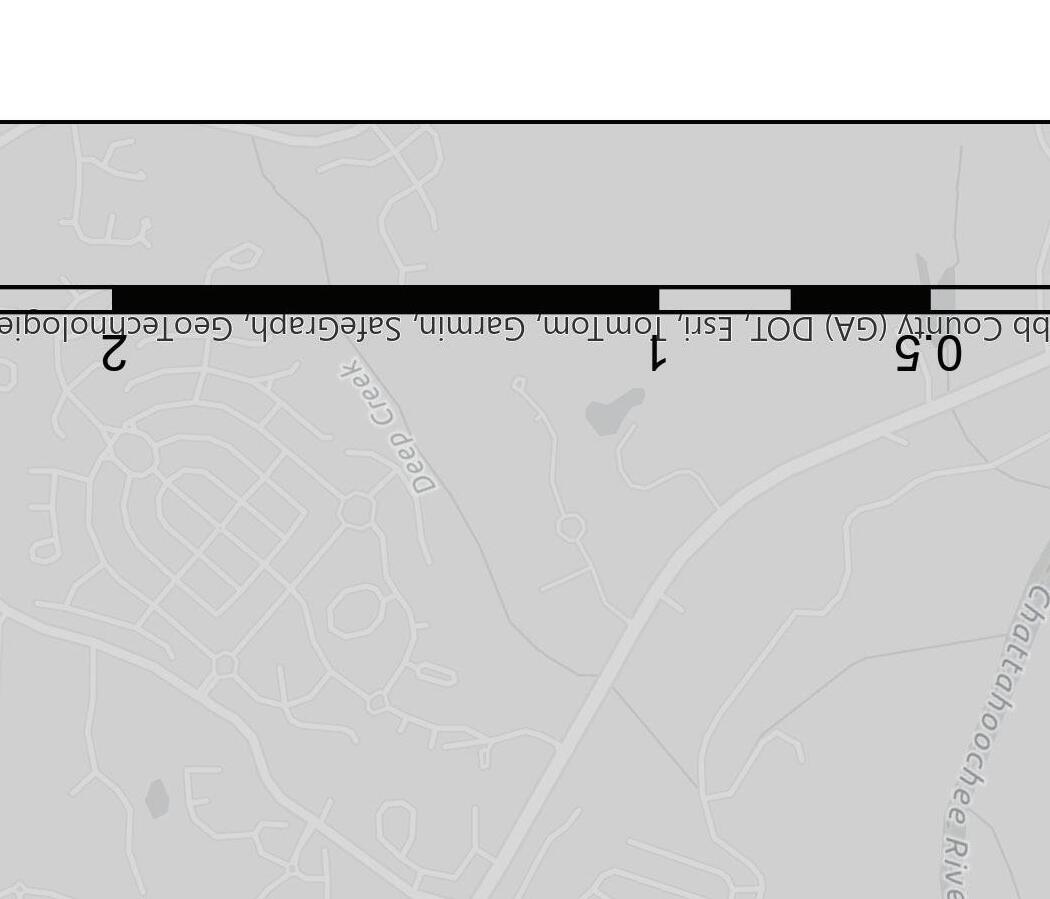


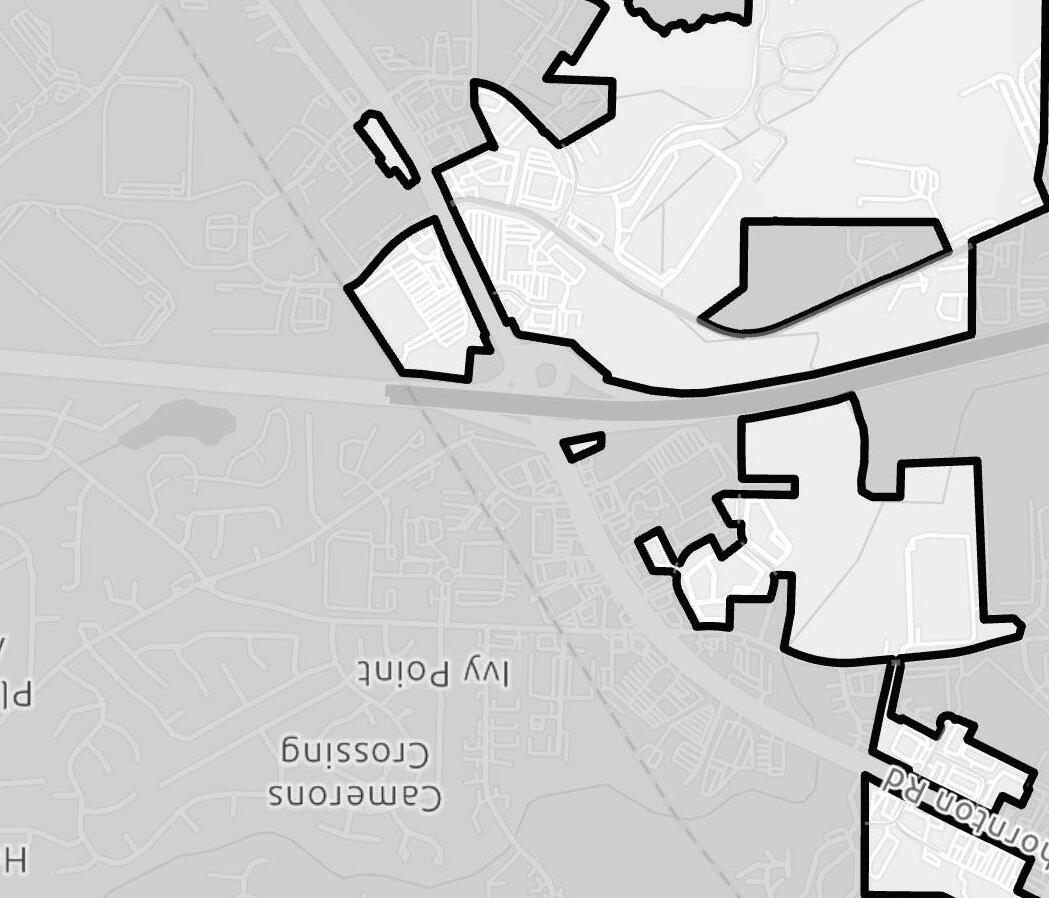

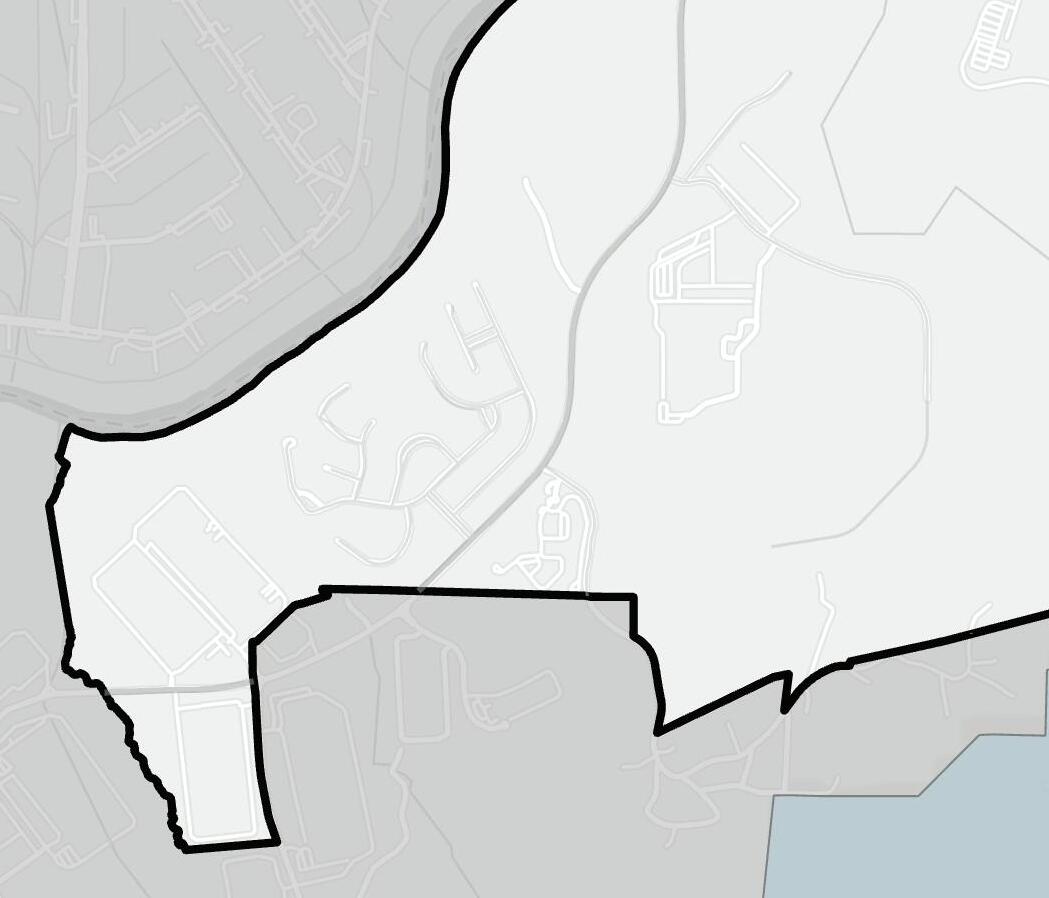








































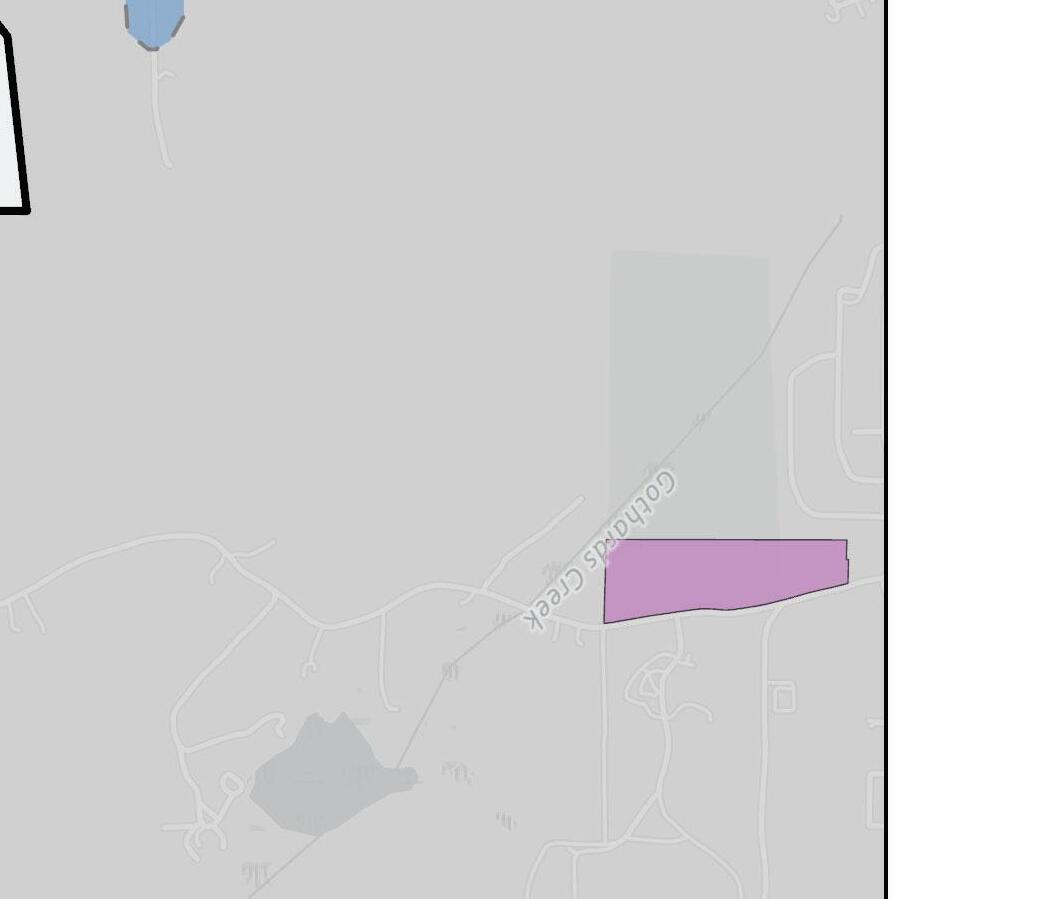



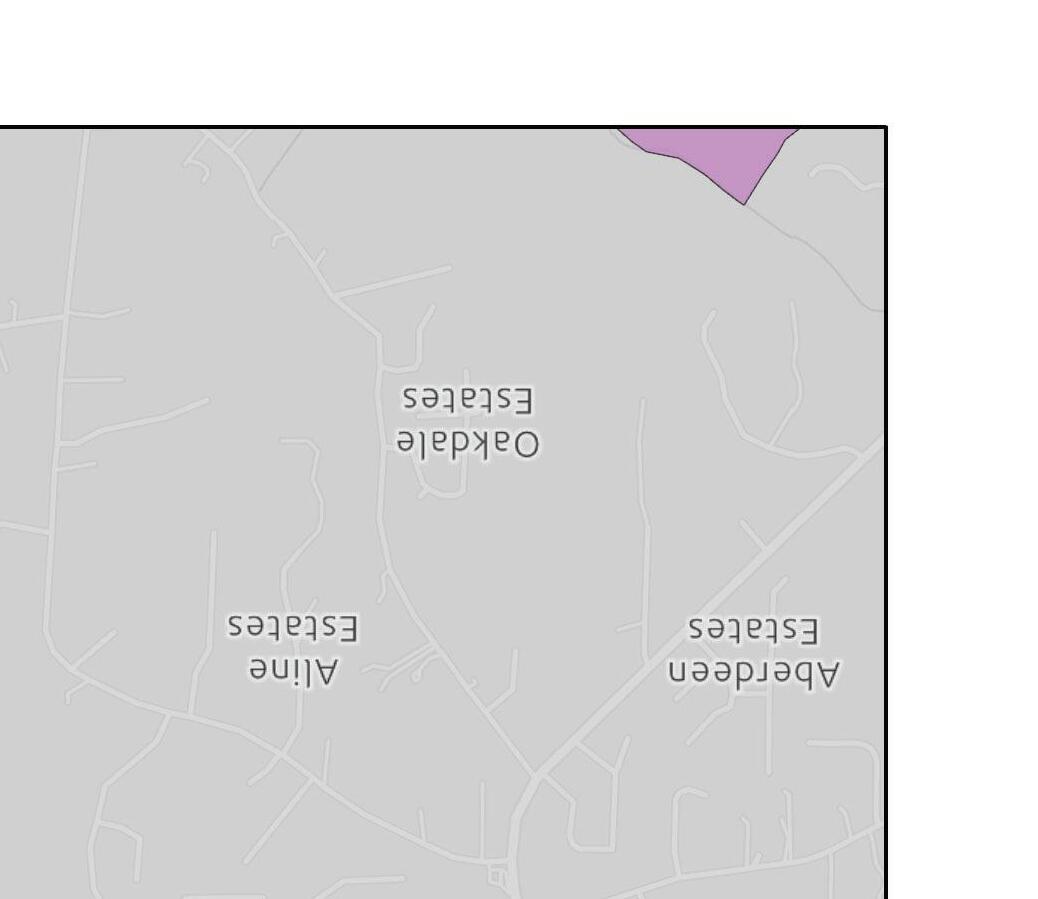










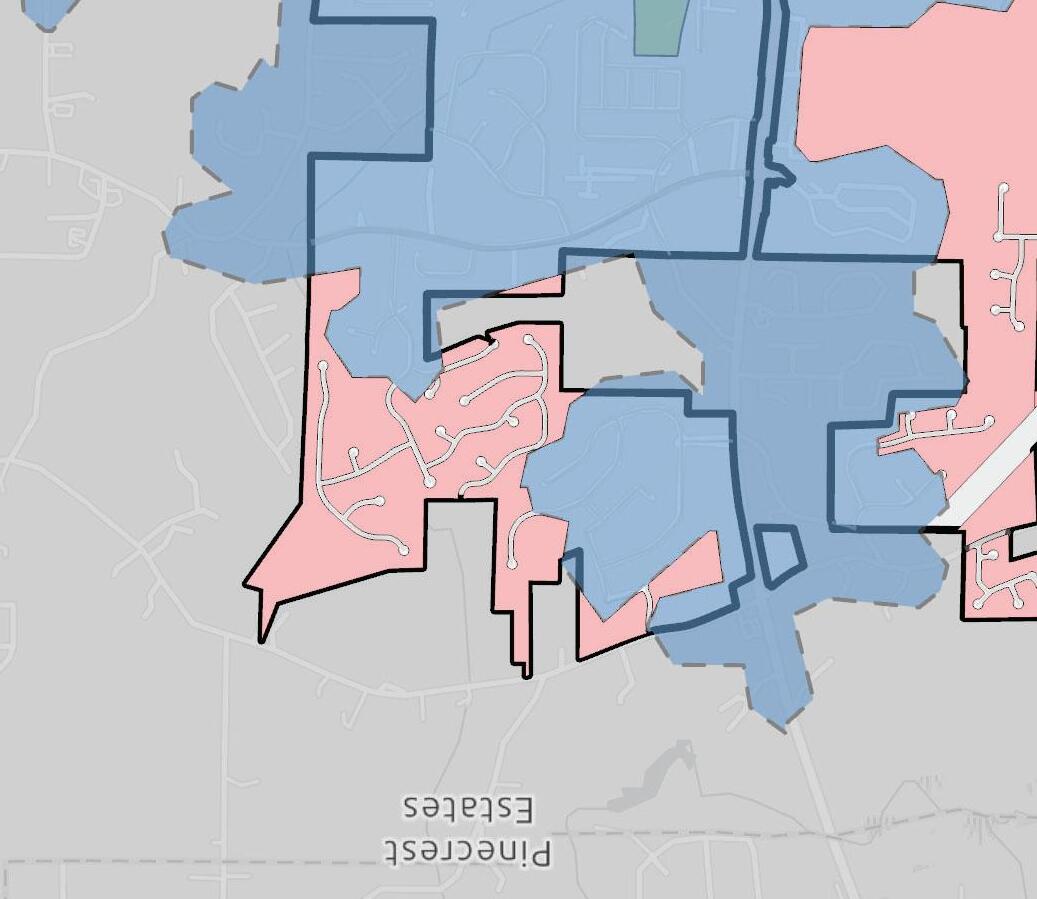

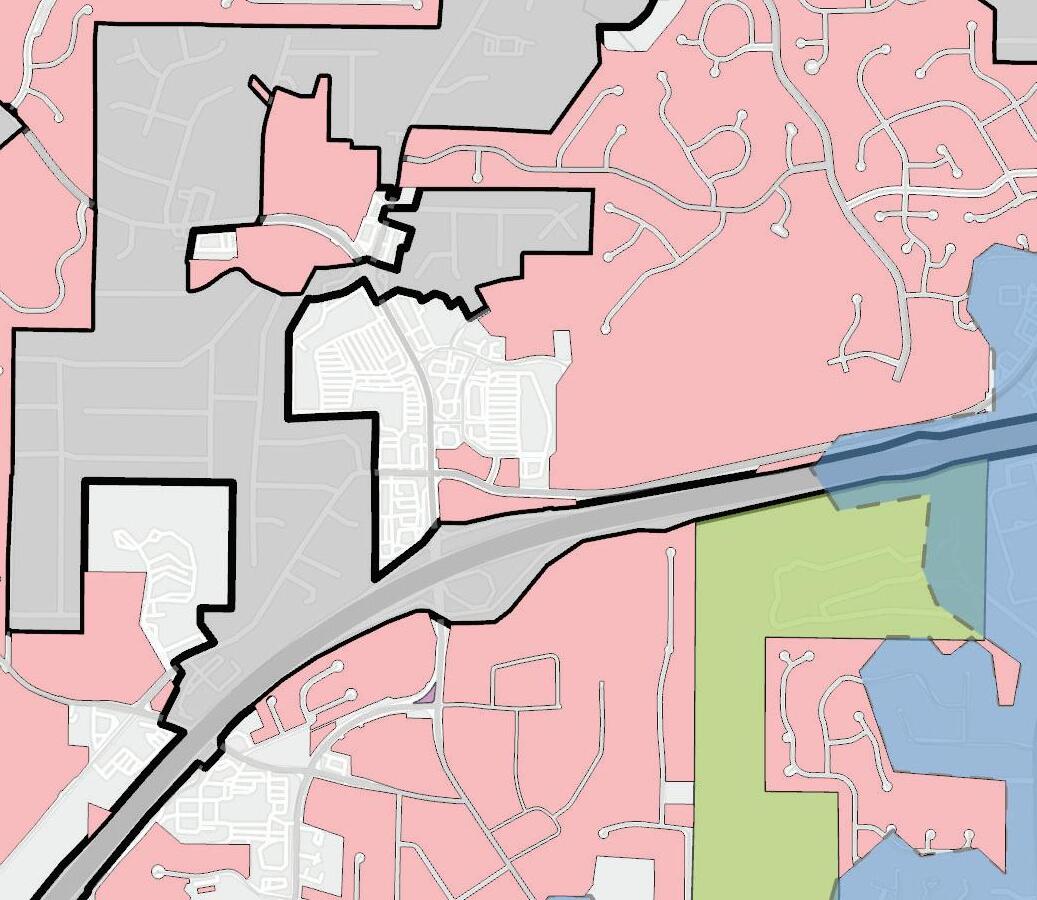







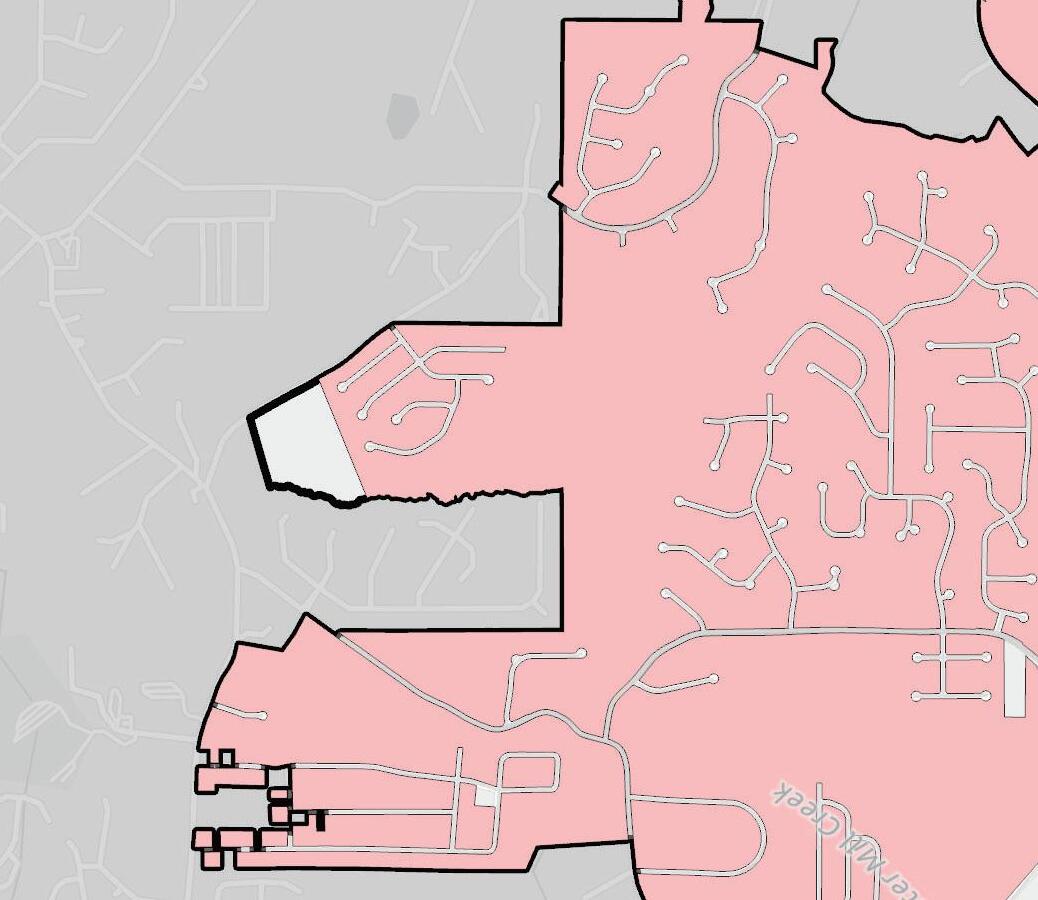






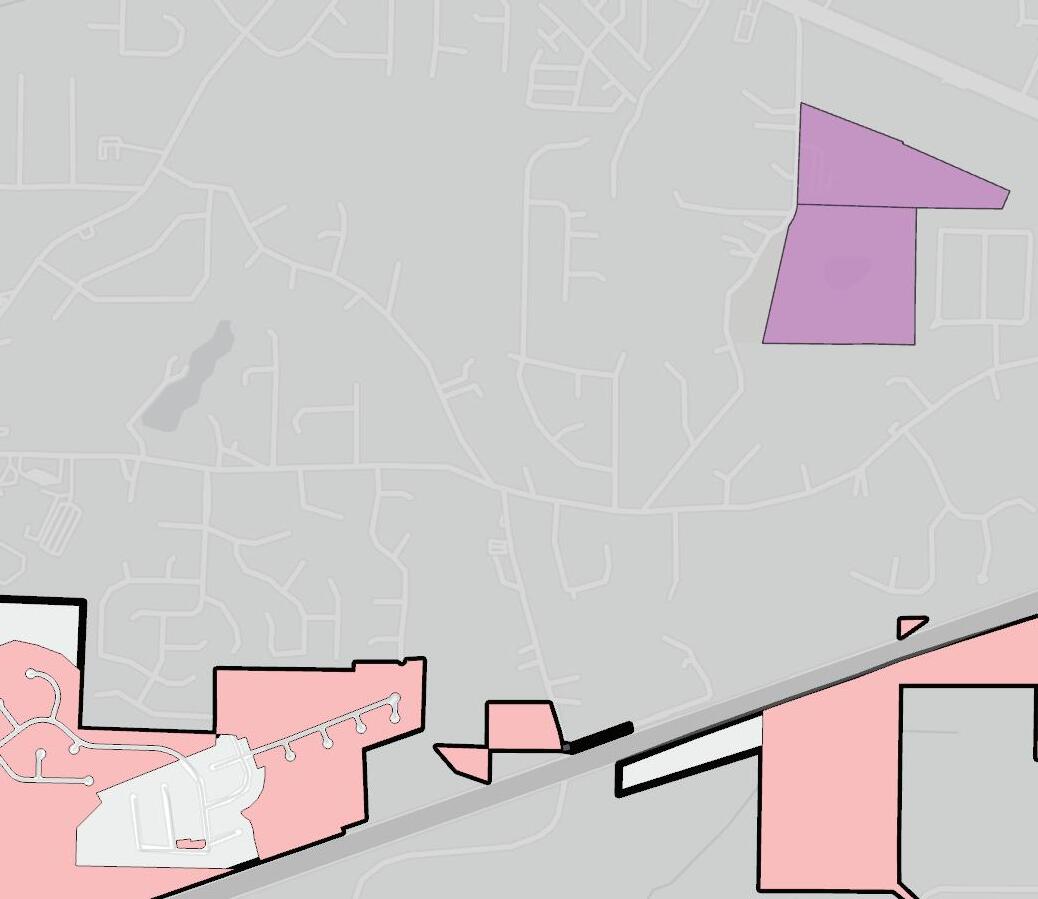


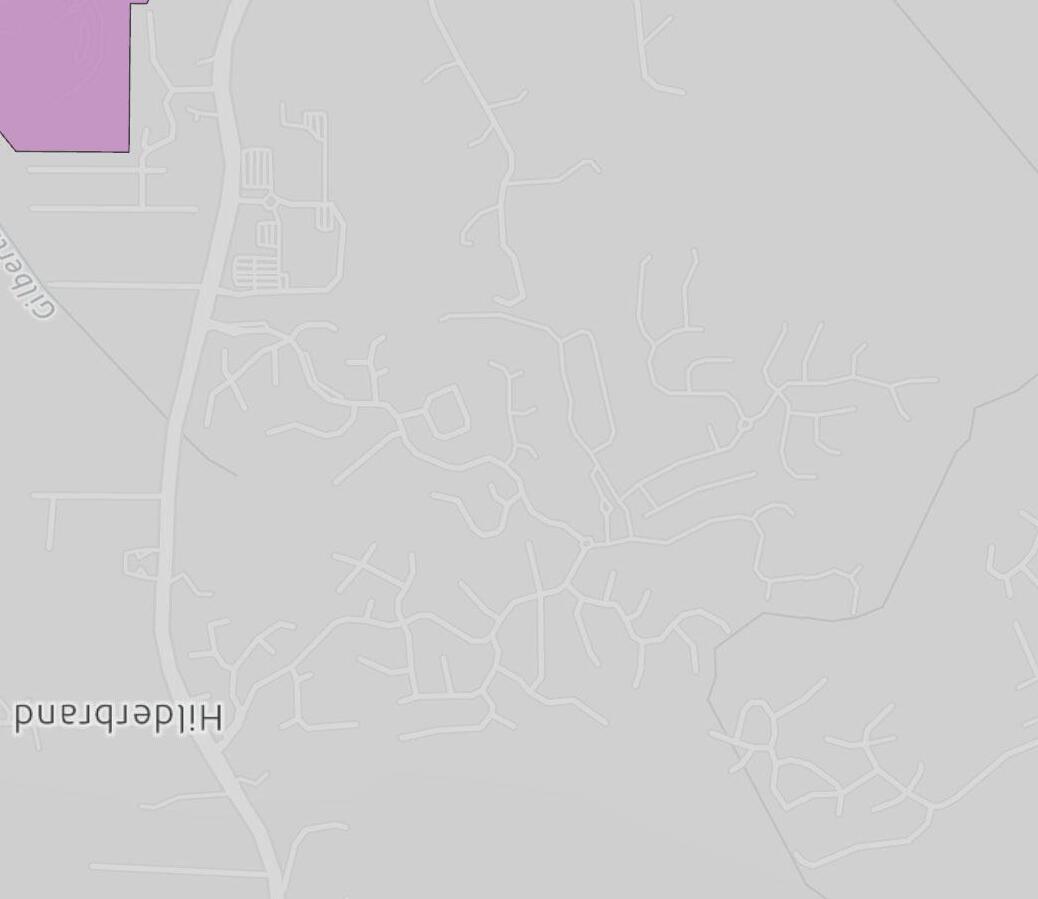








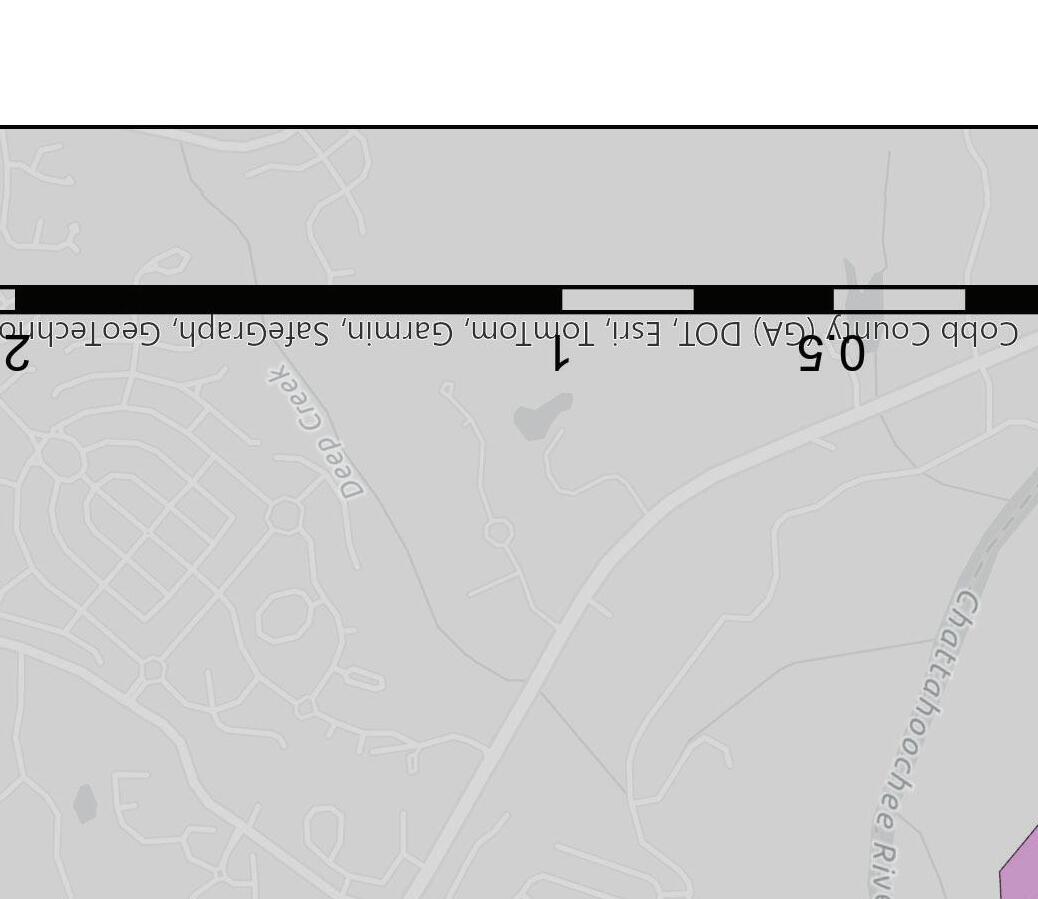
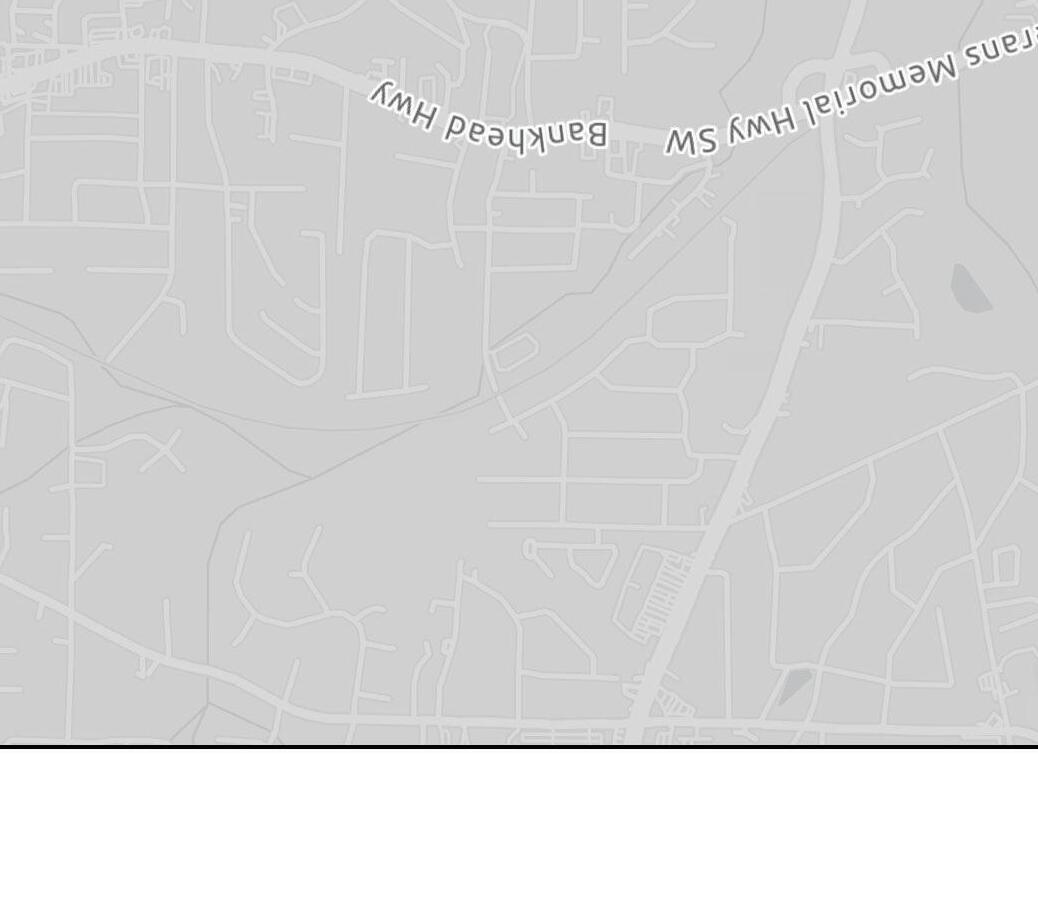
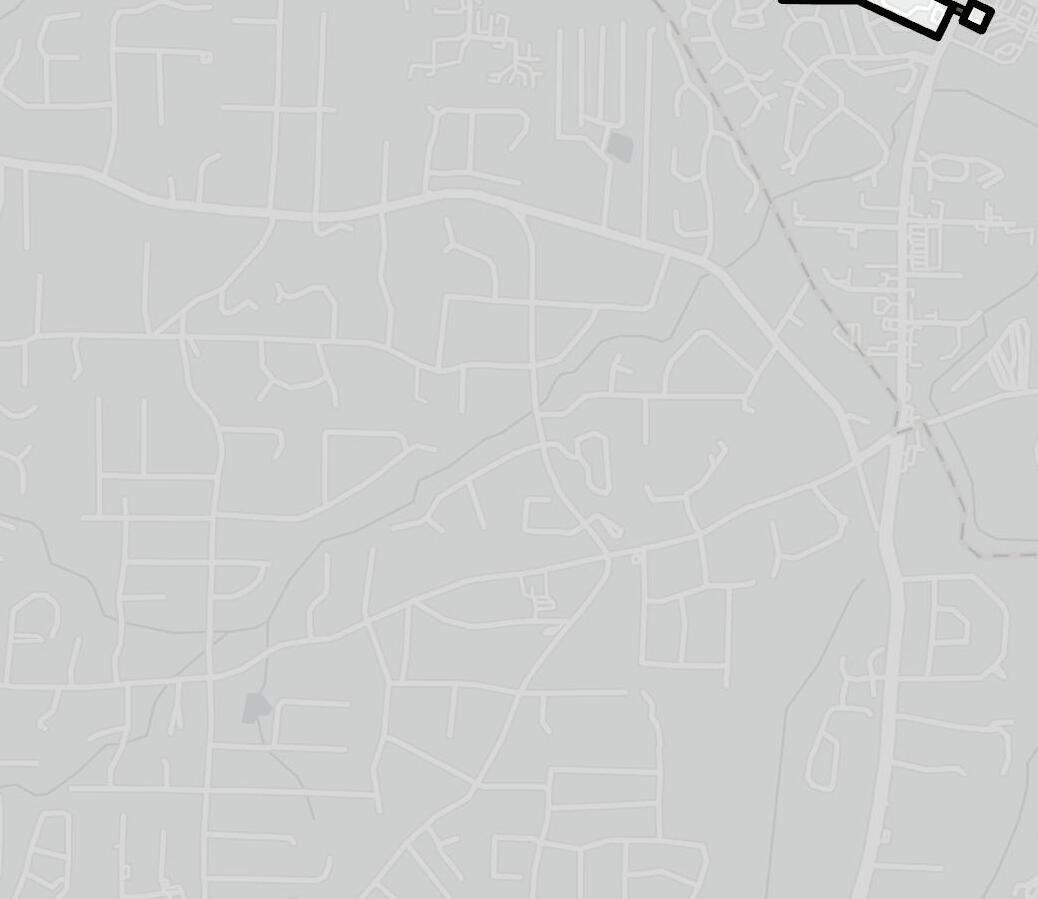



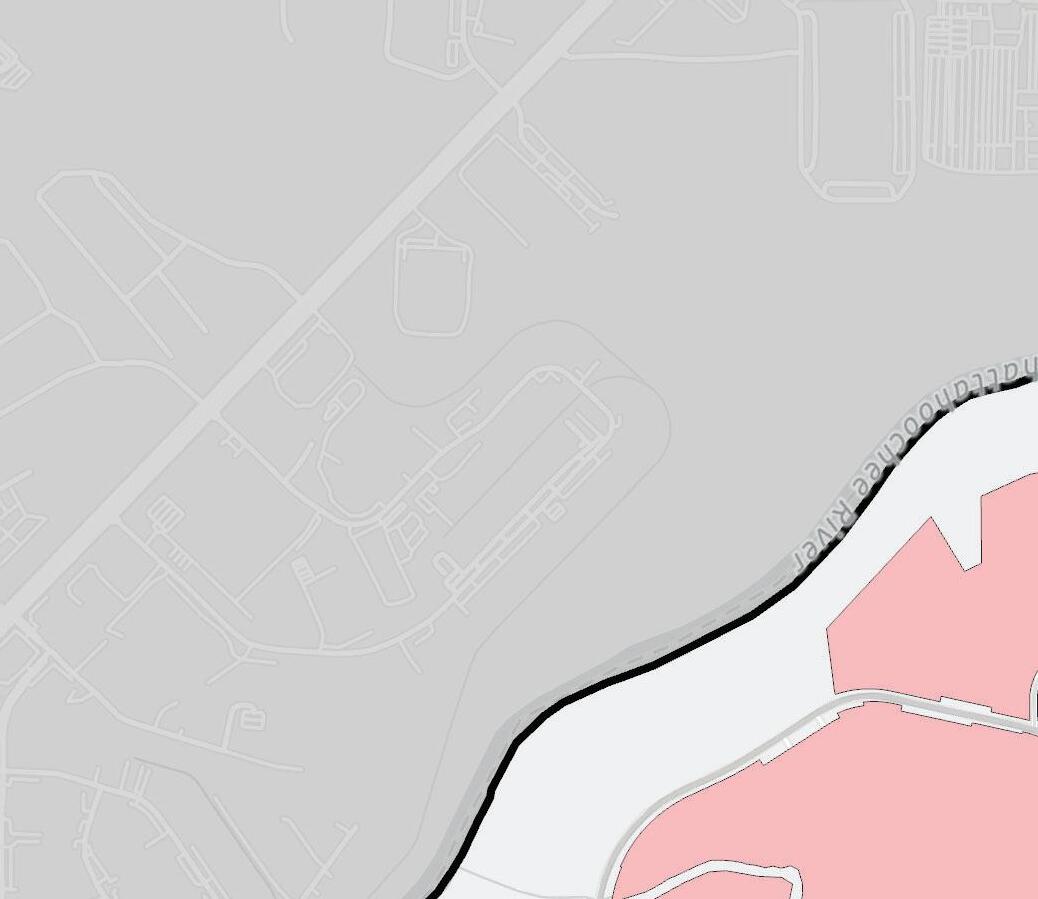




























































WORTHAN


The following facility investments are recommended for consideration based on findings of the gap analysis, NRPA and input received from the public through the community engagement efforts. The proposed facilities can be categorized as follows:
Potential Park Area 1
• Special Use Park – Arbor Parkway 4.71 acres with building and parking
Potential Park Area 2
• Neighborhood Park – Arbor Station HOA 11.24 acres with field and parking
Potential Park Area 3
• Neighborhood Park – Slater Mill Neighborhood Area 20.68 acres
Potential Park Area 4
• Neighborhood Park – Lithia Springs Neighborhood Area 9.6 acres
Potential Park Area 5
• Community Park – Tributary Data Center Area 95.05 acres
Future Park Recommendations
• Theaddition of thesefacilities would diversify recreation opportunities where theymay be limited or not available.
ARBOR PARKWAY SPECIAL USE PARK
This private property is located just south of I20andeast ofI5. Thepropertyincludesaclosedrestaurant building and parking.Theplanningteam recommendsthis private property with an existingbuildingtoberedeveloped into a specialusefacilityutilizedforanart center withclassesforallages,cookingclasses,meetingandeventrentalspace. This4.7acresitewouldalso includeanoutdoor walkingtrail, dogpark, and passiveandgardenparkareaswithseating.
ARBOR STATION HOA NEIGHBORHOOD PARK
With the input from the public and elected officials, a park facility near Arbor Station would fill a needed service gap area for the population in the southeast portion of the city. Arbor Station HOA owns an 11.24 acre park with an existing field at the front of the subdivision, currently not utilized by the HOA. Partnering with the HOA to renovate and repurpose this area for the subdivision and area residents would be a win-win for the community. The park facility is at the front of the subdivision alternate entrance to the park with parking spaces could be made available for residents utilizing this space, thus eliminating impact to the neighborhood itself. The planning team recommends the development of a new neighborhood park to provide enhanced service to this area. At minimum, this park would include a walking trail loop, a new youth multi-purpose field, playgrounds, small dog park and pavilion with restrooms.
SLATER HILL NEIGHBORHOOD PARK
The city sectors southeast of downtown reveal areas with service gaps for park facilities. This existing private parcel is located near the Slater Mill Neighborhood Area. There is a City park in somewhat close proximity but no city-owned options within walking distance. For those reasons, the planning team recommends a new neighborhood park. At minimum, this park would include playgrounds for tots and older children, tennis courts, pickleball courts, restroom buildings, multi-use turf fields, multi-use court, pavilions, off street parking, walking trail, and outdoor fitness stations. This area also presents an opportunity to provide additional connectivity to an adjacent residential area.
SUMMERLIN PARKWAY NEIGHBORHOOD PARK
Just southeast of I-20 off of Lee Road and I20 portion of the City that lies along the I-20 corridor is a very densely populated area with limited recreation facility access. At aminimum, this park would include four tennis courts, a dog park, a lighted multi-use soccer and softball field, ADA playground equipment, pavilions, restrooms, basketball court, outdoor fitness equipment and walking trails.
TRIBUTARY AREA COMMUNITY PARK
Results from public input and interviews with elected officials and staff determined a community need and desire for an active park with recreational amenities in this area of the city. For these reasons, the planning teamwouldrecommend anactiveparkinWard5neartheTributaryAreatobedevelopedasa newcommunity parkto provide recreation services to residents. This park could include the following amenities: lighted multi-use football/lacrosse/soccer field, little league size baseball/softball fields, lighted court complex: tennis & pickleball, ADA and specialized playgrounds including a tot playground and a 6-12 yr. old playground with featured play designs including at a minimum: a ninja course, zip lines, unique climbing structures and more. Picnic pavilions, restrooms, walking trails and loops, a nature/STEM trail, mountain-bike trails, disc golf course (woods), and a dog park. The park could also house a 30,000 square foot community center with the following amenities: 2 full size gymnasiums multi-striped for: basketball, pickleball & volleyball, Elevated Track, Arts & Craft/Multi-purpose Room, Fitness Center, Locker Room, Aerobics/Dance Rooms, Community Meeting Room(s) with commercial kitchen, and a gymnastics room.
FUTURE PARK RECOMMENDATIONS
The city has limited opportunities to acquire open green spaces in the city for park facilities. There are several city-owned properties spread throughout the community the city should explore as potential Mini (Pocket Parks) and Neighborhood Parks.
Mini parks can provide serene, fun and unique green spaces that beautify the city. A research team from the University of Pennsylvania’s Perelman School of Medicine found that distressed neighborhoods where vacant lots have been converted into small parks and community green spaces are associated with reduced crime when compared to neighborhoods with unimproved vacant lots. Mini parks also create a healthy, green landscape that reduces pollution, creates a more social neighborhood environment, and improves health and fitness. Residents should not have to walk more than 5-10 minutes to a park, especially if parking is not available. Parks should be accessible by foot or by bike. These parks can be built anywhere in the city, contain butterfly gardens, community gardens in the food desert areas of the city, take the place of a dilapidated house in the middle of a neighborhood, display art sculptures, include benches and Little Free Libraries, provide a walking trail and more.
The City of Douglasville owns many small to large acreage parcels of properties throughout the city. Some in particular are in Ward 5 on Riverside Road with acreage spanning from .05 acres to 72 acres that should be considered as possible sites for future parks no matter the size to serve populations where there are existing service gaps. The city should be preserving these resources for the community before they are all sold for other developments and Douglasville becomes landlocked. A proactive approach must be taken now as it will benefit community residents and have the city services in place needed for the future growth of the city over these next ten years and beyond.


Chapter nine STAFFING ASSESSMENT
THIS PAGE INTENTIONALLY LEFT BLANK
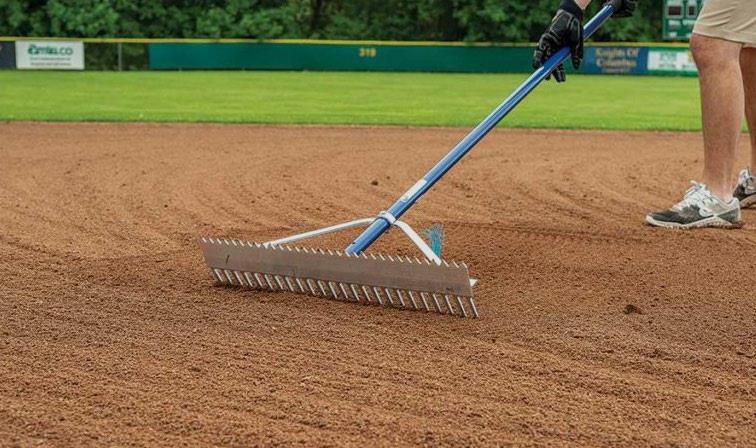
INTRODUCTION
The Parks and Recreation Master Plan process included an analysis of the existing organizational structure and staffing for the Douglasville Parks and Recreation Department. This assessment also provides recommendations on adjustments to the department's structure as well as staff roles and responsibilities to perform more effectively today and in the future.
The priority for this section of the plan is to document and assess staffing and operations, identify key issues, and provide a phased recommendation schedule. Staffing of any government agency traditionally is the largest cost center and in order to be useful, must be a dynamic process that requires continuous study, discussion, and adjustment in order to meet the needs of the public and staff. Recruitment, training, and retainment of top employees is paramount in order for Douglasville Parks and Recreation to meet the objectives outlined throughout this plan. With that in mind, this section will provide general recommendations for the Department and will focus primarily on the administration and maintenance of the parks and recreation facilities and programs.
The planning team utilized input received from staff, city officials and the public engagement phase of the planning process, as well as the knowledge and experience of planning team members, to assess current staffing capabilities, identify shortcomings, and develop recommendations. Other primary resources included:
• National Recreation and Park Association’s (NRPA) Park Metrics 2024 NRPA Agency Performance Review
• NRPA’s Commission for Accreditation of Parks and Recreation Agencies’ (CAPRA) Standards for National Accreditation - Best Practice Standards for Parks and Recreation
• Recreation and Parks Agencies in Georgia and South Carolina utilized as benchmark comparisons
Benchmarking parks and recreation services is complex due to the variety and diversity of parks and recreation facilities and services provided by different municipal and City agencies across the country. Whereas agency Amight be focused on athletics with no indoor facilities, agency B might have multiple indoor recreation centers with a large senior citizen programming component, while agency C might focus primarily on preservation of open space and trails. Every community is distinctive and offers multiple approaches, or models, for the provision of parks and recreation programs and services. This contrasts with benchmarking local public safety services, such as police or fire, where the programs and services across jurisdictions are more standardized. Therefore, comparing staffing models, park facilities, service delivery models, budgets, programming, and other components can prove difficult; nevertheless, these comparisons provide valuable insights for communities evaluating service levels.

EXISTING ORGANIZATIONAL STRUCTURE
The Douglasville Parks and Recreation Department has a traditional hierarchy where the Director reports to the City Manager. All Department staff report to either the Director or the Assistant Directors. One unique aspect is that the city does not have an established recreation commission. There is a recreation advisory committee made up of partner organizations and community leaders. The advisory committee is kept up to date with the department operations, budget and plans, but no policy or budget oversight. Recreation Commission members are normally appointed by the mayor with the approval of the city council. As a working body, they establish rules and regulations for park usage, review and/or approve rentals or park usage requests outside of established policy and submit the proposed department’s budget to the mayor and city council for approval each year.
As mentioned above, every Park and Recreation Department nationwide has a different make-up regarding number and size of facilities, and the needs and desires of the community regarding programming. An important consideration is the growth rate of the city and any planned facilities that are recommended to accommodate this growth such as the Jesse Davis Park renovation and expansion. Obviously, additional staff will be required for DPRD to staff, program and maintain any new facilities. These positions would be in addition to any personnel required to accommodate growth in programs and impact on existing parks and structures.
CITY OF DOUGLASVILLE FACILITIES OF IMPORTANCE
As citizens across the city participated in the many opportunities to let the city know what park and recreation programs and services were of importance to them through the public input meetings and the online survey, they also took time to provide information on the many facilities they had an opportunity to explore along other ideas they brought with them to the meetings. Participant input generated an outcome of various facilities of importance. Fiftyeight diverse indoor and outdoor parks, park features and facilities were broken down into 7 categories. Participants could pick from lists of facilities provided and add their individual facility interests. There were opportunities to provide additional comments as well.
Survey and In-Person respondents - Facilities of Importance
Survey respondents chose different parks, park features and facilities based on need and interest. The top Facilities and Parks they sought include:
• Outdoor Water Park
• Trails and Greenways
• Splash Pad
• Playgrounds
• Indoor Walking Track
• Performing Arts Center
• Open Greenspace
In-Person respondents chose different parks, park features and facilities based on need and interest. The top Facilities and Parks they sought include:
• Indoor Aquatic Center
• Walk/bike trails Connecting Parks
• Dog Park
• Fowler Park Walking Trail Update
• Arbor Station New Park
• Driving Range
• Outdoor Skating Rink/Skate Park
Other Top Facilities of Importance from both groups and Advisory/Community Input Meetings included: Baseball Fields to Turf, Soccer Complex, Lighting of all Trails, Hunter Park Update = Jesse Davis Park, Pickleball Courts, Tennis Courts at other locations, Splash Pad at Hunter, Gymnasium at Hunter, Therapeutic Pool, Sand Volleyball Courts, Tributary Area New Park.
TheTop25list in order of importance from the online survey is shown in the chart below:

PARKS MAINTENANCE
Parks maintenance is a too-often overlooked consideration in annual funding by cities and counties. Yet, under-maintained parksand facilities can easily become liabilities and riskmanagement hazards. Many (often the majority of) citizens form their first impression of an entire department simply by the level of maintenance a park receives, i.e. how it “looks” regardless of the quality of programs it may host.
DPRD maintains and operates 8 parks and facilities with a total acreage of 297.6 acres (of which 197.9 is maintained). The maintenance of current parks and facilities shows certain locations with maintenance needs. This will be important to prioritize before the new facilities come online.
As highlighted in the BUDGET ASSESSMENT section: “Some of the fields, parks, amenities, and facilities are worn, or unsafe, and should be prioritized by need of immediate repair.”
Douglasville does have a maintenance base facility at Club Drive for parks staff, operations, administration, storage, repair, or any other basic requirement to adequately maintain the city’s parks infrastructure. There is also a maintenance building at Hunter Park with limited use as there is no electricity. There is a new maintenance headquarters for West Pines Golf Course.
Due to the expansion of Jesse Davis Park, park maintenance personnel positions are being added to the team. It will be important to assess the number of parks and facility maintenance staff necessary to meet standards as new programs are developed and the number of visits to both parks continues rise so the Director is not forced to prioritize which facilities and buildings to minimally service and which facilities and buildings receive a higher level of service. Currently, there is no park headquarters at the newly renovated and expanded Jesse Davis Park.
The parks are beautifully maintained, thus a minimum standard and expectation already exists for the citizens of Douglasville and all park visitors. Balancing risk management with the offering of requested programs and activities by the citizens will be most important. With the addition of these new facilities, parks and programs, it is reasonable to anticipate the level of commitment to provide the necessary resources to ensure the parks operations/maintenance organization will not only meet but exceed current parks and facilities standards in order to meet the anticipated usage and program demands.
In the case of programming and facility management, the current program staff levels put into place in anticipation of program growth will bode well for the department to begin a new program plan immediately. The facilities schedules are currently staff heavy. Mainstreaming facility operations can result in savings for the department with money re-allocated to other priority areas.
NRPA/Benchmark Comparisons
NRPA provides various models to assist with determining agency staffing. What is consistent among all agencies and all staffing models is that on average, an agency’s full-time staff dedicate their time to the following general activities:
AN AGENCY’SFULL-TIME STAFFDEDICATE THEIR TIME TO THE ABOVE GENERAL ACTIVITIES
•Park and recreation agencies of similar size manage an average of 17parks comprised of a total of 386.4acres. Douglasville ParksandRecreation Department isresponsible for297.6acresand manages 8 parks including 7 parks with 2 indoor community centers and an 18-hole golf course. New operations that include 3 additional centers and an outdoor aquatic center will begin this year.
•Based on the 2024 fiscal year budget, materials and supplies, equipment, salaries and contract maintenance for common areas total approximately $1,645,879 of the overall $5,363,032 annual department budget. This equates to 30.6% compared to the 39% median figure spent by departments nationwideon parks maintenance.
•Using the three benchmark agencies as comparisons, the park acreage per 1000 residents ranges from 4.75 to 11.9 acres per 1000 residents. Based on the 2022 census estimate, the City of Douglasville has 35,252 residents. This translates to 8.44 acresper 1000 whichis in-linewiththe benchmark cities (one-third of the acres in Douglasville are unmaintained natural areas).
•Similar size park and recreation agencies manage 11.2 acres of parkland for every 1,000 residents in its jurisdiction. Basedonthismetric, Douglasville’spark system, in order tomeetthe national median, would encompass 394.8 acres or an additional 97.2 park acres.
•With the anticipated population growth to 57,000 in 2030 the national standard an agency manages changes to 10.2 acres per 1000 residents or 581.4 acres of parkland. As Douglasville prepares for the future, identifying and securing future park sites for acquisition should be a priority with a goal of eventually meeting the 10.2 acres per 1000 resident threshold.
•The term “parkland” denotes both maintained parks and accessible open space areas such as green spaces and courtyards.
Douglasville Parks Maintenance is undermanned considering the quantity ofparks and facilities managed.
Douglasville has 70 FTEs to manage 8 parks/programs and 297.6 acres.
The DPRD parks maintenance staffing level is approximately 15% less than the national average of comparable agencies.
There are multiple ways to view staffing allocations that NRPA agencies utilize as a means for measuring where they stand in comparison to national norms. NRPA national standards include park districts with dedicated funding sources, large city and county systems (and city-county metro systems), some with operating budgets of hundreds of millions of dollars, and special multi-jurisdictional districts, all of which increase the difficulty of using national standards for comparison. Therefore, utilizing the three benchmark cities is again a more realistic and meaningful comparison.
(The term “FTE” speaks to the number of Full Time Equivalent Employees in an organization. As example: 2 part-time positions are equal to 1 full-time position. Douglasville Parks and Recreation Department has 50 full-time positions = 50 positions and 40 part-time positions = 20 FTE positions. Together, they total 70 current FTE positions in the department.)
• Staffing positions in two of the city benchmark departments include some level of parks maintenance under their area of responsibility ranging from 12 FTE to 19 FTE positions. In both cases, approximately 15-17% of the manpower is dedicated to parks maintenance, including both full-time and part-time staff, which is very low compared to the national standard of 46%.
• DPRDhas70FTEdedicatedtoparks/programs(basedon50full-timeand40part-timepositions). Of these, 22 FTE are parks maintenance positions equaling 31 4% or just over one-third of staff. This is considerably less than the national standard of 46%.
• Nationwide, thetypical agency employs 57.6 full-time equivalent (FTE) employees. For an agency of similar size, Douglasville’s level of FTEs (70 FTE) is slightly higher than the upper quartile average of 66.9 FTEs.
Douglasville should plan and budget to increase parks and facility maintenance staff to the 46% of personnel needed fully support the department’s operations, programs and facilities to meet the highest standards for its citizens.
Comparable Agencies Benchmarking
As has been mentioned previously, the planning team pursued community data from cities of similar size and scope to Douglasville. These were: Gainesville, GA, Smyrna, GA and Garner, SC. Utilization of comparable community data provides decision makers the comparison metrics that combine community size, geographic location, and agency responsibilities that assist in assessing staff organization and size. Combined with the national standards provided by current NRPA Agency Performance Review, this gives comparable agency metrics and a valid set of comparison data.
* Gainesville contracts out a large program of their parks maintenance - primarily passive areas - with costs totaling $179,017.
* Smyrna contracts out a large program of their parks maintenance - primarily passive areas, fields, trails - with costs totaling approx.. $280,000.
* Garner, NC parks maintenance is under Public Works.
In review of the above Comparison Agencies, Gainesville contracts out a portion of their maintenance as does Smyrna. Garner’s parks maintenance is housed under the Public Works department. Therefore, budget and staff sizes are significantly less than they would be if parks maintenance was a core function. These examples further emphasize the earlier comment that every agency is different with a focus on meeting the needs outlined by the leadership of that particular governmental body.
KEY OBSERVATIONS AND SUMMARY RECOMMENDATIONS
The following recommendations are presented ina tiered, prioritized approach to address needs in the Douglasville Parks and Recreation Department.
Current Staffing Assessment
The planning team conducted a comprehensive review of the 2024 NRPA Park Metrics, Comparable Agencies staffing and operations, and current programs and managed facilities and sites within Douglasville. Considering the population served, current facilities, acres managed, acres owned but not managed, program participation, potential future park locations within the city, an indoor aquatic center and, most significantly, the new Jesse Davis Park facilities about to open with expansion of facilities, community centers andmanaged park areas, the planning team assessed that ultimate staffing operations personnel complement should increase from 70 FTE to 113.5 FTE total personnel during the next ten years.
Management Paradigm
Shift: Whennewfacilities are established, create dedicated maintenance and programming staff
Although not a staffing recommendation per se, a recommendation of equal importance is the creation of a parks maintenance shop facility with the ability to store equipment, tools, vehicles, etc. Chemicals, fertilizer, seed, chalk dust for field lining in fact every aspect of a parks maintenance operation that is necessary for optimal operations. As recommendations for Parks Maintenance Division growth are shown and Club Drive will in the near future, no longer be accessible as a parks maintenance headquarters for the city, it will become more imperative that a shop/warehouse/garage facility of some type be dedicated to the parks operations at both Hunter Park and Jesse Davis Park, similar to the one at West Pines Golf Course.
As the quantity of facilities increase — recreation centers, community parks, aquatic center — Douglasville Parks and Rec must have significant staffing increaseto manage theincreased quantity and volumeof facilities, acres, and programs.
Recommended Organizational Structure
The recommended approach for DPRP is to ensure the organizational structure is set for optimal management for existing administration, programming, and operations. This organization forms the base for growth as new programs and facilities are identified and developed in future years. This also provides the City Manager, Director, and keymanagement staff a road map for prioritization.
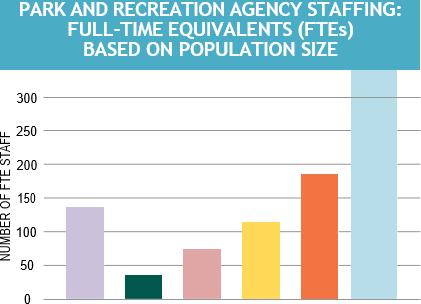
Douglasville Parks and Recreation level of staffing should increase incrementally over the ten-year period of this Plan
FTEs Upper Quartile Staffing
All Agencies [143.7 FTEs]
Less Than 20,000 [30.0 FTEs]
20,000to 49,999 [66.9 FTEs]
50,000 to 99,999 [121.0 FTEs]
100,000to 250,000 [181.2 FTEs]
More than 250,000 [471.5 FTEs]
Douglasville’sstaffingof 70current FTEsis slightly higher than comparable agencies upper quartile staff numbers.
The recommended DPRD organizational hierarchy is annotated below. The most significant change is creating two sections (facilities and parks) within the Parks and Facilities Division to align operations with the growth in the department. Additional changes include the shift in staff reports, reclassifications and the addition of 13 staff positions recommended for hiring within the next 0-5 years with the Aquatics Staff to be considered once the facility is open and operating, understanding the operations will be contracted for at least the first year. Staff repositioning will assist in streamlining operations allowing for more concentrated operations with standardized procedures and training across the system, thus optimizing performance. Dotted lines across divisions will help with communication between managers as well. With the wonderful leadership team in place managing the day-to-day operations of the organization, the Director and Assistant Directors will be able to focus their efforts on leading, resourcing, and future planning for the organization. The key new positions in the organization are broken out by Division:
Administration Division - 5 FT
Director of Parks and Recreation - 1 FT
• Assistant Director of Parks and Recreation - 2 FT
• Administrative Operations Coordinator - 1 FT (previously Operations Coordinator)
• Marketing Coordinator - 1 FT (previously Marketing & Events Coordinator)
Parks and Facilities Division (Facilities Section) - 6 FT, 2 PT [7 FTE] [Dedicated Staff for HP/JD]
Note: proposed additional section based on increased facilities
Facility Maintenance Supervisor - 1 FT (formerly maintenance supervisor)
• JD Facilities Maintenance Worker 1 - 3 FT facility bathrooms; setups; trash and all maintenance 4 centers and surrounding grounds maintenance/trails - pulled to outside as needed. (no new positions - formerly Park Maint Worker 1)
• HP Facilities Maintenance Worker 1 - 2 FT Ike Owings facility bathrooms; setups; trash and all maintenance Ike Owings and surrounding grounds/trails. (no new positions - formerly Park Maint Worker 1)
• JD Facilities Assistant - 1 PT evenings/weekends - Facility Support; Setups; Maintenance; Bathrooms; Trash; Close with Service Asst (formerly Rec Asst)
• HP Facilities Assistant - 1 PT evenings/weekends - Facility Support; Setups; Maintenance; Bathrooms; Trash; Close with Service Asst (formerly Rec Asst)
• Parks and Facilities Division (Parks Section) - 23 FT, 17 PT [31.5 FTE] Note: Parks Maintenance includes Athletics Facilities
Parks Maintenance Manager - 1 FT
• Parks Superintendent - 1 FT Parks Maintenance
• Crew Chief - 2 FT Parks Maintenance
• JD Parks Maintenance Worker 1 - 4 FT bathrooms; trash; fields; grounds; - facility support for event setup when needed for large events (no new positions, 4 current staff positions)
• JD Parks Maintenance Worker 1- 1 PT evenings/weekends (change of hours)
• HP Parks Maintenance Worker 1 - 4 FT Hunter Park bathrooms; trash; fields; grounds; - facility support for event setup when needed for large events (1 new staff position, 3 current positions)
• HP Parks Maintenance Worker 1 - 4 PT Hunter Fields, grounds maintenance; bathrooms (no new positions: 1 formerly Hunter Athletic Rec Asst, 3 current PMW-1)
• HP Parks Maintenance Worker 1- 1 PT evenings/weekends (change of hours)
• Turf Specialist - 1 FT All Parks (new)
• Parks Maintenance Worker 1 - 4 FT Fowler Field/Willing Workers (bathrooms; trash; fields; grounds) Worthan, Mill Village, Town Green (4 new positions)
• Equipment Operator/Maintenance/Construction - 2 FT All Parks (1 new additional position)
• Mechanic/Engine Repair Tech - 1 FT All Parks
• Parks Irrigation/Chemical Tech - 1 FT All Parks (new)
• Future Parks Maintenance Worker 1 - 2 FT Arbor Parkway, Arbor Station HOA, Mini Parks, Slater Hill, Summerlin, Tributary (new)
• Future Parks Maintenance Worker 1 - 11 PT Arbor Parkway, Arbor Station HOA, Mini Parks, Slater Hill, Summerlin, Tributary (new)
Operations Division 4FT, 5 PT [6.5 FTE]
Operations Manager-1 FT
• Operations Coordinator -1 FT Cash Receipts/Front Desk Operations Support
• Customer Service Specialists - 2 FT Jesse Davis and Hunter Park Facilities (moved from Recreation Program Division)
• Service Assistant - 5 PT (formerly Rec Asst)
• Ike Owings Community Center - 1 open hours
• Alice J. Hawthorne Community Center - 1 open hours
• JD Gym JD - 1 open hours
• JD Community Center - 1 open hours
• JD Senior Center - 1 open hours
Recreation Programs Division - 10 FT, 7 PT [13.5 FTE]
Recreation Program Manager - 1FT
• JD Program Supervisor -1 FT Special Events/Health-Wellness/General Programs
• JD Program Coordinator -1 FT Adult General Programs/Family Programs/Trips/Camps/Nature
• JD Senior Coordinator - 1 FT Senior Programming/Trips/Events
• JD Youth Coordinator -1 FT Alice J. Hawthorne Center - Youth/Teen Programs/Youth Camps
• JD Youth Specialist -1 FT Alice J. Hawthorne Center - Youth Program Lead; Camp & Program Support
• HP Program Supervisor - 1 FT Special Events/Health-Wellness/General Programs
• HP Program Coordinator - 1 FT Adult General Programs/Family Programs/Trips/Camps/Nature
• HP Youth Coordinator - 1 FT Preschool/Youth General Programs/Afterschool/ School off Camps
• HP Youth Specialist - 1 PT Ike Owings Center; REC-N-ROLL; Youth Program Lead; Camp Support (New)
• Therapeutic Recreation Supervisor - 1 FT TR Programming, Events, Camps/ TR sports - All Parks (New)
• Therapeutic Recreation Specialist - 1 PT Program Support, Program Lead - Camp (New)
• After School Program Counselors - 5 PT Current program position after school program leaders
Athletics Programs Division - 6 FT, 3 PT [7.5 FTE]
Athletics Program Manager-1FT
• JD Athletics Coordinator -1 FT Adult & Youth Athletic Programs; Events; Open Gym Schedule
• JD Athletics Assistant - 2 FT Athletic Program Support; Activities; Events (formerly Rec Asst Athletics)
• HD Athletics Coordinator - 1 FT Adult Athletic Programs; Teams; Events; Gym Schedule
• HD Athletics Coordinator - 1 FT Youth Athletic Programs; Teams; Events; Gym Schedule
• FF Athletics Assistant - 1 PT Fowler Field; Partner Organizations; Soccer; Events; Program Support (New)
• HD Athletics Coordinator - 2 PT Hunter Athletics Support, Programs; Team Supplies; Fields; Sports Camps; Events (New)
West Pines Golf Course - 8 FT, 17 PT [16.5 FTE]
Head Golf Pro-1FT
• Asst. Golf Pro 2 FT
• Asst Golf Pro 2 PT
• Golf Operations Manager 1 FT
• Golf Course Superintendent 1 FT
• Asst Golf Course Superintendent 1 FT
• Golf Course Maintenance Worker - 2FT (formerly Parks Maintenance Worker 2 & 3)
• Server 2 PT
• Golf Course Attendant - 6 PT
• Cart Ops Team Lead - 1 PT
• Golf Cart Attendant - 6 PT
Aquatics Division 2 FT, 25 PT [14.5 FTE] - new positions
Note: This Division currently does not exist within the Parks and Recreation Department and would be created with new internal staff operations of the Jesse Davis Aquatics Center rather than contracting out the services. Although Staff positions are shown in Tier II (Years 3-5) of the plan, staff could be in place and trained for the second summer of operations if budgeted earlier.
Aquatics Supervisor - 1 FT AFO/CPO, Aquatics Operations, Programs & Events, City-wide Special Events (5K, Biathlon Trails and Swim, Holidays, General)
• Aquatics Maintenance Tech - 1 FT AFO/CPO Pool Cleaning/Mechanics, rotate into Parks Maintenance off season, pool seasonal open/close
• Aquatics Pool Manager - 1 PT seasonal
• Aquatics Pool Asst Manager - 2 PT seasonal
• Aquatics PoolOperations Coordinator - 1 PT seasonal
• Lifeguards Rotating - 21 PT seasonal LG; Front Desk; Locker Rooms; Break; Swim Lessons
FUTURE FACILITY-INDOORAQUATICS CENTER
• Develop Indoor Aquatic Center - FACILITY LOCATED in the “FUTURE” Column as identified in the Strategic and Capital Plans. Future Anticipated Operational Positions: 2 FT, 19 PT [11.5 FTE].
▪ 1 FT Aquatic Coordinator
▪ 4 PT Aquatic Staff Ops/Programs/Lessons
▪ 5 PT Aquatic Desk Staff
▪ 10 PT Lifeguards
▪ 1 FT Aquatics/Facility Maintenance
This Staffing Recommendation will streamline Douglasville Park and Recreation operations thus enhancing the programs, services and facilities offered to meet the community’s needs. Douglasville can favorably measure its operations/maintenance/programming staff to any comparable Department in the country compared to national metrics as well.
PATHWAY TO ENHANCING CURRENT OPERATIONS
Personnel growth in any organization impacts the budget more than any other expense. The staffing enhancement from 70 FTE to 113.5 FTE (phased in three Tiers as detailed below) will begin to immediately address the changes necessary for more efficient and effective operations as the new facilities open to the public. With the Parks and Facilities divided into two sections under the same division, focus on tasks and responsibilities will support the growth of programs and influx of new visitors while maintaining both parks and facilities to the highest level of standards. Having the parks maintenance staff report to that section of the division will help to maintain uniformity in caring for all parks, fields and amenities. Park and Athletic management teams should work together to ensure their needs are met and remain a priority. The parks staff will then be able to direct their attention as a team to other areas of the parks that need attention The City Manager, Parks andRecreation Director, andCity Finance Director will need to monitor growth, revenue, and expenditures for the appropriate timing of adding new personnel It is undeniable that the growth rate of the City of Douglasville will only accelerate over the coming decade, placing even more demand upon the current park system. However, a more robust fees and charges policy coupled with an emphasis on securing grant funding and the increased participation and utilization in programs should generate significant revenue which will help offset the increased cost of the new positions
Existing DPRD Staff
•
Reclassify Marketing & Event Coordinator to Marketing Coordinator
Reclassify Rec Assistant (Front Desk) to Service Assistant
Reclassify Rec Assistant (Facility Support) to Facilities Assistant
Reclassify Rec Assistant (Athletic Support) to Athletic Assistant
Reclassify Rec Assistant (Front Desk Support) to Service Assistant
Decrease Rec Assistant Positions - PT by 3 staff
Transfer Customer Service Specialist to Operations Division
Reclassify Maintenance Supervisor to Facilities Supervisor
Reclassify Park Maintenance Worker 1 (West Pines) to Golf Course Maintenance Worker
Reclassify Parks Maintenance Worker 1 to Facilities Maintenance Worker 1
NewStaff Hires over 10 yr plan
• 6 FT Parks Maintenance Worker 1 - new
• 7 PT Parks Maintenance Worker 1 - new
• 1 FT Turf Specialist - new
• 1 FT Therapeutic Recreation Supervisor - new
• 2 PT Athletics Coordinator - new
• 1 PT Athletic Assistant - new
• 1 PT Youth Specialist - new
Operations - current positions reclassified
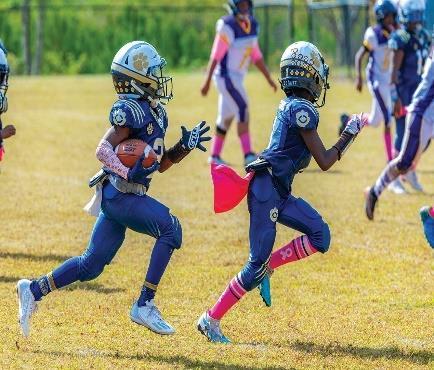
Reclassify existing Recreation Assistant (front desk staff) to Service Assistant Move Customer Service Specialists from Recreation to Operations
• Move the Service Assistant under the Operations division.
• Move FT Customer Service Specialists under Operations division.
• Decrease the number of “Recreation Assistants” in the facilities to one during open hours (several PT staff scheduled throughout the week). This position would be trained as a front desk service agent to assist participants with registration and information on all services.
• Inconsistencies and lack of knowledge amongst the current staff were mentioned in the public meetings. Moving this position under Operations will considerably help with training and consistency across all the facilities.
• These positions exist in the budget. They would be dispersed to the 5 facilities during open building hours. Current staff would be relocated to the new facilities.
• Cross-train staff to support the facility side as well to attain more hours throughout the week.
• Decrease Part-time Recreation Assistants by 3 positions
Parks and Facilities (Facilities Section)
Create a Facilities Section under the Parks Division for more focused, streamlined and efficient operations with reclassified existing staff positions
Reclassify PT Rec Assistant (Facility Support) to PT Facilities Assistant.
• This position already exists to support the community centers programs and maintenance. This position will be important during the evenings and weekends when the full-time staff is not in the system and the facilities are experiencing high volumes of users.
Reclassify Park Maintenance Worker 1 to Facilities Maintenance Worker 1 (various locations).
• This position will be responsible for the indoor facilities at both Hunter and Jesse Davis Parks focusing on facility maintenance, program support ensuring rooms are set up and all areas are well cleaned.
• Position under Parks and Facilities (Facilities Section) to maintain consistency in the level of maintenance and facility standards. Staff would maintain the surrounding park areas around the buildings as well as assist the parks section in-between caring for the facilities.
Parks and Facilities (Parks Section)
FT Parks Maintenance Worker 1
• Increase staff positions to support increased volumes of visitors once Jesse Davis Park facilities open. Organizing Park staff clusters dedicated to the larger community parks assists with all aspects of training and professional growth, understanding of expectations and allows staff the ability to jump in and take ownership of their park just as facility managers and programmers do. Levels of quality output will increase dramatically.
FT Turf Specialist fields, natural areas, and turf throughout the system.
Fund and Hire Additional Park/Facility Maintenance team to support New Park Maintenance
• 1 FT Park Maintenance Worker 1
• 7PTPark MaintenanceWorker1
• 3 Neighborhood Parks including Arbor Station
• Community Park - Tributary
• Special Use Park - Visual Arts/Culinary Center
• Mini Parks
Recreation
1 PT Youth Specialist HD
• Program Lead, expand the Rec-N-Roll schedule and partnerships to fill much needed gaps, support the programs and events at Hunter Park
1 FT Therapeutic Recreation Supervisor
• Program growth and support for existing TR partner programs, partner development and in-house program growth, camps, expanded programs for all ages, special events, trips, marketing, sponsorships/grants and partnerships with schools. Advocate for program inclusion and placement where able.
Athletics
Reclassify Rec Assistant (Athletic Support) to Athletic Assistant
• This position currently supports the athletics division. Title change will help to denote the position within the department and help to clarify responsibilities.
• Increase division with 3 part-time staff:
• 1 PT JD Athletics Assistant athletic programs for all ages, open activities and events.
• 1 PT HD Athletics Coordinator athletic tournaments, TR athletic support, programs all ages, events.
• 1 PT Fowler Field Athletics Coordinator expand soccer programs, partner programs, new in-house programs, clinics, events.
West Pines Golf Course
Reclassify Park Maintenance Workers 2 & 3 (West Pines) to Golf Course Maintenance Workers 2 & 3
• Move the 2 existing positions under Parks and Facilities should be moved into the golf division for more streamlined operations.
• The positions should be dedicated to the facility in order to maintain the highest standard level the members demand and expect. With the deferred maintenance at the course, staff can dedicate their time solely to assisting with its continued renovations and repairs where needed in a timely manner.
Tier II (Year 3 through year 5)
Tier II New Staff
• 1 FT Parks Irrigation/Chemical Tech
• 1 FT Equipment Operator/Maintenance/Construction (Jesse Davis)
• 1 FT Parks Maintenance Worker 1
• 5 PT Parks Maintenance Worker 1
• 1 PT Therapeutic Recreation Specialist
• 1 FT Aquatics Supervisor
• 1 FT Aquatics Maintenance Technician
• 1 PT Aquatics Pool Manager
• 2 PT Aquatics Assistant Pool Manager
• 1 PT Aquatics Pool Operations Coordinator
• 21 PT Lifeguards
Parks and Facilities (Parks Sections)
1 FT Parks Irrigation/Chemical Technician department and city compliance, vendor regulations certification.
1 FT Equipment Operator/Maintenance/Construction Additional position for Jesse Davis Park going into 3-5 yrs of operations with more maintenance expected as the new park facilities will be highly utilized. Fund and Hire Additional Park/Facility Maintenance team to support New Park Maintenance
• 1 FT Park Maintenance Worker 1
• 5PTPark MaintenanceWorker1
• 3 Neighborhood Parks including Arbor Station
• Community Park - Tributary
• Special Use Park - Visual Arts/Culinary Center
• Mini Parks
Recreation
1 PT Therapeutic Recreation Specialist Program growth and support of TR children and adult programs, events, trips, marketing, sponsorships/grants and partnerships.
Aquatic Division - New Fund and hire the team responsible for the department operations of the JD Outdoor Pool
• Division could be funded with trained staff to operate 2nd summer.
• Operating the pool with department staff will increase department revenue through daily and seasonal pass sales, swim lessons, special events, birthday parties and rentals.
• Aquatic Supervisor Position will focus on events/programs off season and oversee the Future Indoor Aquatic Center operations and staff. Position must be AFO or CPO certified with aquatics experience to assist with operations and budget development and staffing plan. Coordinate staff in-service training, certification programs, hiring.
• A full-time Aquatics Maintenance Technician position will be important when training guards rotating in to support the maintenance
• of specific pool areas. This position would also cross-train with the parks maintenance. team working off-season to support maintenance operations throughout the parks
• A part-time seasonal team for daily operations will ensure success and the highest levels of customer service. The team will include
• a seasonal Pool Manager, Assistant Managers, an Operations Coordinator focusing on registrations and daily receipts/front desk training of lifeguards rotating in.
• A team of Lifeguards will be necessary to cover the open hours of the pool.
Tier III (Year 6 through year 10)
Tier III NewStaff
• 1 FT Indoor Aquatic Center Coordinator
• 4 PT Indoor Aquatic Center Operations/Programs/Lessons
• 5 PT Aquatic Service Desk
• 10 PT Lifeguards
• 1 FT Aquatics/Facility Maintenance

Future Facilities
III Proposed Positions:
Indoor Aquatics Center - Future Facility (Future Facility positions not included in Tiered Positions) Fund and hire the team responsible for the Future Indoor Aquatic Center operations
• 1 FT Aquatic Coordinator position reports to the Aquatic Supervisor hired in Tier II and is responsible for the day- today operations, safety, staffing, programs and lessons in the facility. AFO/CPO Certified
• 4 PTAquatic Assistant Managers assisting with operations, develop programming/events, and schedule lessons/guards
• 5 PT Aquatic Service Attendants for open pool hours customer service desk, program/event registration, marketing
• 10 Lifeguards for open pool hours
Staffing Summary
Through the recommended implementation plan and achieving 113.5 FTEs by year ten (preferably sooner), DPRD will build to the level of staffing expected for the typical agency of its size, service population and program and operational oversight. It will bring the Operations/Maintenance team to the 45% nationwide median standard as communicated by NRPA Agency Performance Review. As the Future Indoor Aquatic Center Funding, Development and Operations are realized, the natatorium and staffing would be aligned with the specific Tier and timeline.
THIS PAGE INTENTIONALLY LEFT BLANK
(Tier IV - 11+ years)
Tier IV staffing should be addressed in the next edition of the Douglasville Parks and Recreation Master Plan. Many changes will occur in the ten-year period this Plan encompasses, some of which cannot be predicted. However, it is reasonable to assume that new parks and/or facilities will be constructed in the intervening decade. If so, it is imperative that adequate maintenance and programming staff be added as new facilities are completed in order to maintain and preserve the City’s investment.
PROGRAM MANAGEMENT
With renovated and improved (not to mention new) facilities, opportunities arise for new programs and program expansion Several areas were identified as potential to offer a wider array of activities to the citizens of the community. With the new field and indoor facilities at Jesse Davis Park, all program areas from Preschool through Senior programs are areas that could see tremendous growth. Currently, DPRD is just about to open 2 full-court gymnasiums. These new centers and the program offerings will instill health and wellness and provide opportunities that otherwise may not exist for teens and youth of school age to get out and get active. New outdoor/nature programs were also identified as needs during citizen input on the surveys and during the in-person meetings. In all cases, additional staff are required.
This first recommendation is the simplest to implement: streamline the existing hierarchy to provide a more logical organization. Recreation Assistants will now be split into two divisions to allow for the greatest level of service. This will allow more dedicated and focused emphasis on the visitors, the information shared, the level of customer service and the cleanliness of the facilities and bathrooms.
Recreation
• Fund and hire 1 PT Youth Specialist for Hunter Park to help Lead programs, expand the Rec-N-Roll schedule and partnerships to fill much needed gaps, support the programs and events at Hunter
• Hire 1 FT Therapeutic Recreation Supervisor to support growing need for Adaptive Programs
• Hire 1 PT Therapeutic Recreation Specialist
• Reclassify Rec Assistant(Front Desk)toService Assistant
• Reclassify Rec Assistant (Facility Support) to Facilities Assistant
Aquatics
• Develop and fund the new Aquatics section at the appropriate time.
Athletics
• Hire 1 PT JD Athletics Assistant
• Hire 1 PT FF Athletics Coordinator
• Hire 1 PT HD Athletics Coordinator
No other recommendations areassociated with the Athleticsat thistime. The parks staff reporting directly to the Athletics division does not allow the staff their full work potential once fields are lined and work is done. For a higher productivity level, the fields can still be the staff priorities with the ability to shift work tasks once completed to the park and even facilities for larger events. Likewise, parks and facility staff can shift out to the fields and parks for tournaments or large programs. Cross-training of all parks and facility staff will be an ideal situation and will also contribute to higher output levels
FACILITIES MANAGEMENT
As outlined earlier, it is imperative that the Department begin to address and reduce the backlog of deferred maintenance issues throughout the system. Providing rehabilitation and renovation resources to existing facilities with the objective of bringing them back to basic standards should be a top priority of management and the recommended additional maintenance personnel.
This Staffing Assessment emphasizes new maintenance personnel as new facilities are opened. The planning team recommends dedicating maintenance personnel to these new facilities as they are opened and the plan emphasizes a phased-in approach to adding new maintenance support and a shift of existing staff. The new aquatics facility will require a significant ongoing maintenance commitment in order for the pumps, filtration system, all associated pool equipment, chemical storage, etc. to function as designed. In short, management and operations of aquatic facilities is significant, and a dedicated maintenance plan is imperative to protect the significant investment of such a large and multi-faceted recreation facility. As the pool opens under a management company for the first year or two, this will give staff the ability to create a plan for success.
Summary
Both Aquatic and Maintenance staff should be cross-trained and become certified Aquatic Facility Operator AFOs to maintain the aquatics facility at the highest quality level and in the most costeffective manner.
Tier IV Operations Staffing Summary
Douglasville in the decade of 2030 will be significantly different than the demographic and geographic makeup that currently exists. Based on current trends, it will be more populated, older, and more ethnically diverse. It is logical to assume that new facilities will be on the drawing board if not in fact already constructed. With the addition of new facilities, sports fields and additional smaller facilities in existing parks, the staffing makeup will need to be expanded in both scope and number.
Any new recreation centers or indoor facilities would require a staffing complement similar to what is recommended herein for the proposed new facilities at Hunter Park and across the city While it is impossible to know what, when, and how many major facilities might be constructed a decade from now, it is imperative that elected officials and leadership acknowledge that no facility will be successful without the necessary staff to properly support and operate it.
STAFFING ASSESSMENT CONCLUSION
The City of Douglasville Parks and Recreation Department and the city executive team, from the mayor and city council, the city manager and leadership teams, to key management staff, will need to continue to gauge the personnel needs of the organization and shift priorities of adding positions based on the needs of the community, available funding, projected opening of new facilities and pulse of the organization. The leadership team must work closely with the Human Resources Department as new employees are identified to begin filling the recommended new positions.
As we write this Plan, personnel shortages are prevalent in businesses and government agencies across the country. It may be that multiple part-time personnel will be necessary at least in the near term tobegin rectifying the imbalance and shortfall that currently exists. The city’s recent pay scale that includes higher wages for part-time employees across the board will be a significant factor in part-time hiring and retention for program instructors, camp directors and counselors, lifeguards and aquatic personnel, and support staff in every division.
The intent has been to bring on personnel as quickly as feasible, understanding that every new position is an impact to the City’s general fund. Personnel growth from 70 FTE to 113.5 FTE positions is significant, but spread over a period of a decade, is intended to minimize the impact on the budget while still bringing the quantity and quality of employees closer to national and state standards.
THIS PAGE INTENTIONALLY LEFT BLANK
Chapter ten


BUDGET AND FUNDING ANALYSIS
THIS PAGE INTENTIONALLY LEFT BLANK

INTRODUCTION
The development of a budget and funding analysis allows Douglasville to utilize data from similar service providers to assess the financial health of the recreation department. Analysis points on operations and maintenance costs, revenue generation and available funding sources were compared to benchmark communities, both locally and nationally. The focus of this analysis is to determine if the expenditures, revenue and funding sources of the Douglasville Recreation Department algins with typical departments and to provide recommendations for adjustments in financial management of the department where warranted. This will allow the City to make informed budgetary decisions going forward into the implementation plan.
Benchmarking serves asa guide to assess an agency’s investment in parksand recreation. However, thereis not a single set of standards for parks and recreation because different agencies serve different communities that have unique needs, desires, and challenges. Thus, benchmarking services is more complex as amenities, demographics, diverse funding mechanisms, programs, and facilities vary. Benchmarking should be used to give communities a general idea of how their services compare to similar communities. The project team utilized three similar communities for this analysis.
BENCHMARK ANALYSIS
The benchmark analysis compares Douglasville Parks and Recreation Department (DPRD) performance and operations to corresponding data of other cities of similar size and demographic makeup. By looking at data from other communities and national industry averages, baseline data can be utilized for future planning. Benchmarking also assists park and recreation professionals in the effective management and planning of their operating resources. The National Recreation and Park Association (NRPA) provides local park and recreation professionals with the most up-to-date data that inform current and future decisions for agencies focusing on effective management and planning of their operating resources and capital facilities. National Parks Metrics are important and offer key findings that feature the most comprehensive collection of park and recreation-related benchmarks and insights that inform professionals, key stakeholders and the public about the state of the park and recreation field. Douglasville Parks and Recreation Department’s (DPRD) Fiscal Year 2024 General Fund operating budget is $5,363,032 (this includes Personnel, Contract Services, Supplies, Administration, Park Maintenance, Programs, Special Events, and Recreation Center Operations). According to 2024 NRPA metrics, the comparable park and recreation agency has annual operating expenditures of $6,453,357 with the median budget of $3,462,654 for agencies with populations of 20,000-49,999.
BUDGET
BUDGET
ANALYSIS
BENCHMARKING
BREAKDOWNS
Breaking this data down by the population served we can accurately compare spending in comparison to similar agencies. While comparable agencies report a median to high quartile operating expenditures between $9,013$20,346 per acre of park and non-park sites. Douglasville serving a jurisdiction of 1556.76 residents per square mile spends $18,021 per acre of park and non-park sites.
Douglasville encompasses 22.5 square miles with a population density of 1556.76 residents per square mile. While the typical park and recreation agency in this population and density category has annual operating expenses of $114.81 on a per capita basis, DPRD expends a higher amount per capita or $152.13 per person on parks and recreation services, programs and facilities.
Park and recreation agencies’ protection of land, water, trees, open spaces and wildlife improves air and water quality in communities.
• Nine in 10 U.S. adults support their local governments making additional investments in parks and recreation.
• 84% of U.S. adults seek nearby high-quality parks, playgrounds, open spaces or other recreation facilities is important when choosing a neighborhood or area in which to live.
• and recreation when choosing a place to live.
• 7 in 10 U.S. residents have at least one local park, playground, open space or recreation center within walking distance of their homes.
Over 80% of Corporate Executives rated quality-of-life features as an important facility in a 2019 Area Development Survey.
94% of adults responding to the March 2020 NRPA Park Pulse poll support their local government investing in infrastructure improvements that promote economic activity in their community.
AGENCY FUNDING ANALYSIS
The 2024 NRPA Performance Review provides national data and guidelines on funding sources for park and recreation agency operations. On average, park and recreation agencies attain 62% of their operating expenditures from general fund support, although the percentage of funding from general fund tax support tends to be lower at agencies with larger operating budgets. The second-largest source of revenue for most agencies comes through generated revenues such as fees and charges, accounting for an average of 21% of operating expenditures Many agencies have access to special, dedicated taxes that cover a part of their budgets, while others obtain much of their funding from tax levies dedicated to park and recreation purposes approved by citizen referenda.
DPRD’S budget is currently funded with 65.8% of the operating budget supported by the general fund. DPRD generatesthe remaining 34.2% of the budget through fees and charges, open gym, andrental revenues which is above the national average of 21% Cost recovery can differ greatly across agencies based on a particular agency’s portfolio of facilities, programming, demographics, agency mission and revenue mandates from governing jurisdictions.
An operational expenditure review of three comparable agencies: Gainesville, GA, Smyrna, GA and Garner, NC is also included. This table shows the typical agency annual operating expenditures, annual operating expenses per capita for agencies in all population categories averaged to $117.76 and median operating expenditures per park acreage for all population categories averaged to $9094.







1 -DPRD AnnualOperating Expendituresare20%<theavg of comparison cities and17%lowerthanTypical Agencies. Consider the average is lower because of decreased maintenance budgets for two of the agencies and zero maintenance budget for the third one. Douglasville is still lower than the averages combined.
2 -DPRD PerCapitaOperatingExpensesare9%< theavgof comparison cities and30%higherthanAgencies with similar jurisdiction populations.
3 - DPRDOperating Expenditure per acre ofparks is 5%higherthan the
and 48%higher than
*Garner, NC has a separate department responsible for all maintenance of the city property including mowing, maintenance and care of parks. Parks and Recreation Department operating expenditures does not include maintenance costs.
Continue to monitor all park and facility operations, maintenance and program support as services expand and new facilities are opened. It will be important to include all staff from front-line facility and parks staff, from instructors to front desk staff, to programmers to participants to gain a complete and transparent perspective on actual needs, staffing and supplies for programs, services and operations. Budgeting is atypical expectationfor recreation operations, programming, and facility staff nationwide. Staff will have a better understanding of the process and expectations, creating buy-in at all levels. The project team recommends training all staff in the city’s budget process.
OPERATING EXPENDITURES ANALYSIS
The typical park and recreation agency nationwide dedicates 39 percent of its annual operating budget to the management and maintenance of parks and open spaces. Agencies spend a median of 35 percent of their annual operating expenditures to support recreation programs including activities outside of school, sports leagues, arts, health and wellness programs, and more, along with the facilities for such activities.
Personnel services at 54 percent of the operating budget, account for the largest expense of the operations budget at the typical park and recreation agency. Personnel services include salaries, wages, and benefits for both full-time and non-full-time personnel, along with contracted individuals. Comparable park and recreation agencies spend $112,366 annually in operating expenditures for each full-time employee (measured by FTEs). Utilizing this measurement Douglasville Parks and Recreation’s yearly operating budget would increase to $7,640,888.
A typical agency’s operating expenditures account for 38 percent of the operating budget. Expenditures fund the agency operations and include administration/administrative services, planning and design, park services, community relations and recreation services, and can include operational support for forceaccount employees.
CAPITAL FUNDING
Capital funds repay the operating budget, all enterprise funds, interdepartmental transfers, and, in some cases, the capital debt service. This represents around 6 percent of the operating budget. A portion of the operations spending does include capital expenses outside the agency’s capital improvement plan (CIP). These expenditures include computers, vehicles, large-area mowers, and tractors. Operations capital expenses also include some periodic cyclical maintenance including carpets, conference chairs, andpush mowers as example. It will also include debt services paid from the agency’s operating funds.
A high-quality, well-maintained park system is important to supporting a vibrant and thriving community. To sustain the high-quality park system that residents expect, the department must continuously renovate and upgrade parks, trails, and recreational facilities. These improvements are essential in order to provide an excellent and relevant park system as the city continues to expand
Park and recreation agencies of similar size to Douglasville Parks and Recreation have a median of $6.5 million in capital expenditures budgeted for the next five years. Park and recreation agencies target their capital expenditures to a variety of areas. On average, agencies designate 67 percent of their capital budget for renovation, while they allocate 33 percent toward new development.
Due to budget limitations, agencies delay repairs to infrastructure and assets. Agencies facing financial challenges reduce or eliminate budgets for maintenance, repairs, and major capital investments for rehabilitation. The result is aging infrastructure that goes into disrepair and, frequently, becomes unusable. Even worse, delaying maintenance spending leads to greater decay, which further increases the costs of remedying the problems. The average deferred maintenance for city-based agencies is approximately $19 million dollars. Agencies of comparable size on average report deferred maintenance projects from as little as $500,000 to upwards of $5,000,000.
Generalfund/ Appropriations
Earned revenue
Special taxes/Levies (voter approved)
Special taxes/Levies (non-voter approved)
Other
Operatinggrants from public agency
Sponsorships, in-kind donations or private operating grants/donations

» DPRDGeneral FundTaxSupportis higher thantheaverageagency with support at 65.8% vs. 62%
» DPRDEarned/Generated Revenue is 34.2% which is higher than the typical agency with the same population jurisdiction with21% cost recovery.
» Alternate Revenue Sources - Grants and Sponsorships
Currently, DPRD’s infrastructure is facing typical deferred maintenance issues. Details of items listed in the individual parks show facilities, parks and amenities listed as unsafe and worn, particularly at West Pines Golf course and throughout the system. These items should be prioritized by need of immediate repair.
• Criteria for prioritizing capital funding should include:
• Correction of public hazards
• Elimination of existing deficiencies in minimum levels of service
• Increase of existing level of service to desired levels of service
• Maintenance of levels of service as growth occurs
Figure 9.4 Operating Expenditures Sources for Agencies Nationwide
RESULTS
Douglasville spends 17% less on operating expenses than typical park and recreation agencies and 48% more than communities with the same population base. When examining our comparison of the three benchmark communities [Gainesville, GA, Smyrna, GA, Garner, NC] to Douglasville, it was clear that DPRD expends an average of 20% less operationally. DPRD’s Annual Operating Expenditures are 20% less than the average of theComparison Cities and 17% lower thanTypical Agencies.
DPRD’s budget is 12.4% of the city’s budget The Parks Maintenance budget is 30.6% of the Recreation Budget or 3.8% of the city’s budget. Conversely, DPRD generates 34.2% of the operating budget through fees and charges. This is 13.2% higher than the typical agency as shown in the national Parks Metrics data.
Earned revenue isthe second most common source of funding inparksandrecreationagencies.Nationally, typical agencies that fall within the City of Douglasville’s jurisdiction population collect an average of $25.84 of revenue per jurisdiction resident or $910,911.68 Analyzing park and recreation revenue per capita by 2034 with an expected population growth to 57,000 residents, the revenue per jurisdiction resident average increases to $33.17. DPRD would have the potential to generate $1,890,690 in future revenues as its programs continue to grow.
RECOMMENDATIONS
BUDGET COST RECOVERY
Establishing a cost recovery policy provides an agency with a tool for evaluating services and establishing appropriate fees for services. Standardizing cost recovery objectives enhances an agency’s ability to accomplish broad goals and objectives. The city should determine the cost recovery levels necessary to operate the new facilities at Jesse Davis. Operating the department with a business mindset and philosophy toward 100% cost recovery of programs with exclusive individual benefits should be discussed. Operating the pool accordingly with daily fees, seasonal passes, punch cards, resident and non-resident fees, swim lessons and aquatic exercise program and special events will bring in the revenue needed to recover operating costs, with the goal of a break-even budget.
The city’s operating philosophy is important when setting program fees. Most agencies look at a breakeven, philosophy for programs individuals register for while earmarking others to make a profit. The balance is with the free events, parks, amenities and services provided for the entire community throughout the year. A business- oriented vision is not something that is looked upon negatively.
The Bureau of Economic Analysis released data in the 4th quarter of 2023 affirming the rise of outdoor recreation to a trillion-dollar industry. Outdoor recreation alone is one of the strongest economic forces on Georgia’s economy generating $15.7 billion for the state’s economy with 238,000 directly related jobs, $27.3 billion in consumer spending, and $12.4 billion in value added greenspacesaccording tothe 2019 reports of the Bureau of Economic Analysis and the Outdoor Industry Association.
The DPRD budget is supported by 12.4% of the general fund.Gainesville, GA’s general fund is supported by 31.30%,while Garner, NC is supported by 9.20%andSmyrna, GA is supported by 7.6% respectively. Increase the general fund support to DPRD to meet immediate service levels through increased staffing and services. With a projected 62% increase in jurisdiction population over the next 10 years, city revenues and spending will continue to rise, and demand for more services will be prevalent.
• Review staffing recommendations
• Update the cost-recoverypolicy that could be usedas a guideline for setting fees and systematic resource allocation. This philosophy will establish guidelines for:
▪ setting fees and charges
▪ prioritizing core program areas
▪ allocating resources more efficiently
▪ identifying tax subsidy allocation levels
Incorporating cost recovery into a financial plan can be a time-consuming process for organizations, but it produces vast overall benefits to an agency. Developing a cost-recovery philosophy for the generation of revenues by charging fees for programs and services relative to the total operational costs allows for more efficient operations and helps to strengthen an agency as it looks toward the enhancement of services it provides to the community.
• Develop cost recovery goals
▪ mustbe aligned with theagency’s mission and vision
▪ determine percentage of cost recovery for programs, services, and resources


DPRD generates revenue through fees and charges, pavilion and facility rentals, summer camps, youth and adult athletic programs, special events, Miracle League, open gym/fitness fees, and grants. With costs such as wages and supplies going up every year, the city’s subsidy of these programs continues to increase incrementally . It is important to review fees every few years and compare them to other communities, programs, and services.
Currently, the department has a higher recovery rate (34.2%) than most comparable agencies across the nation. Most agencies throughout the United States have adopted a philosophy that the user of a park and recreation service should assume the cost of providing the service, reducing theneedfor tax support . The city of Gainesville, GA. has a cost recovery rate of 9% while the city of Roswell, GA (a city with a population of 93,282) has a cost recovery rate of 33%. Increasing DRPD’s cost recovery with diverse revenue streams is a viable option that should be considered.
Agencies must be careful not to exclude participation because of financial need by offering scholarship programs and identifying varying levels of cost recovery for programs. For example, an agency may have a low cost recovery goal for senior programs and a higher cost-recovery goal for adult athletic and fitness programs. The challenge for any organization is finding the right balance for the community they serve.

• Develop a Revenue Policy per the CAPRA Standard, Comprehensive Revenue Policy: there shall be an established revenue policy that is periodically updated regarding fees and charges for services and the strategies and methodologies for determining fees and charges and levels of cost recovery
• Review the history of fees charged for all programs.
• Take a more business-minded, revenue-generating approach to program fee development. Establish a model for setting realistic cost of service-based fees for those who have the ability to pay. Consider:
▪ Direct (and Indirect) costs of providing the service
▪ Number of participants per class/activity
▪ Perceived value of program
▪ Willingness to pay
▪ Cost-effective for target market
▪ Ability to entice potential participants
• Allow for expanded subsidy (discounting) for those who have demonstrated financial need.
▪ Develop a scholarship programfor all youth programs. One or two programs per season based on the poverty level, SNAP cards and free lunches.
▪ Consider differential pricing policies (multiple family, seniors).
• Develop a non-resident program fee strategy for the county. Non-resident fee surcharges are for any persons participating in Douglasville Recreation programs who live outside the taxing jurisdiction.
• Consider a 50% non-resident surcharge for programs (standard across agencies nationwide).
▪ It is reasonable to establish non-resident differential fee rates. In general, fees and charges for non-residents shall recover 100% of aservice's direct cost and anadditional 50% for that service's indirect costs. Some agencies have gone to a “discount” for residents listing a fee, then showing a discounted price for that city resident (ex. 30% discount).
• Consider a 50% non-resident surcharge for programs (standard across agencies nationwide).
▪ It is reasonable to establish non-resident differential fee rates. In general, fees and charges for non-residents shall recover 100% of aservice's direct cost and anadditional 50% for that service's indirect costs.
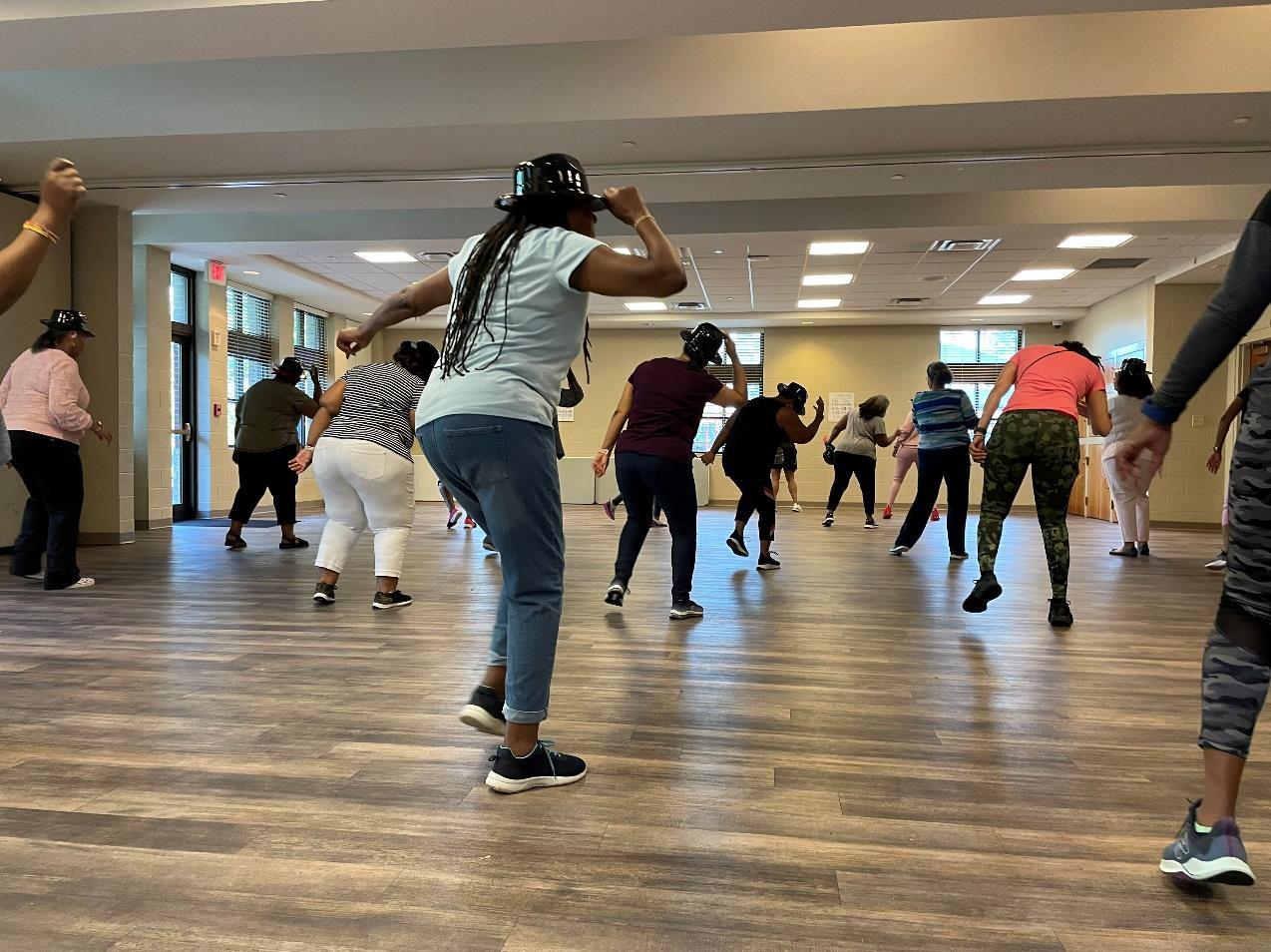
• Rental Revenues
Agencies can look all around, inside facilities and outside at their parks to find just about any “facility” to rent. People want to get married under a certain tree or have a party in a space you never considered before. Outside-the-box rentals of spaces, facilities, spaces within facilities or parks, etc., can produce a large percentage of revenue to support other programs, infrastructure repairs, staffing, special events and more.
◊ Develop NEW RENTAL opportunities
▪ Create a comprehensive list of all potential areas and facilities to rent
▪ Develop rental policies and fees for various events and tiered levels for groups of all sizes
▪ Include staffing fees for all rentals including off duty officers where applicable. Closing the community centers and running on an efficient schedule is important. Open the facilities for renters who would pay for the Facility Attendant to be there. There should also be a fee for outdoor pavilion and field rentals as well, especially for larger groups
▪ Determine if an alcohol policy with a special assessed fee would be considered
▪ Develop a la carte lists for rental upcharges where applicable
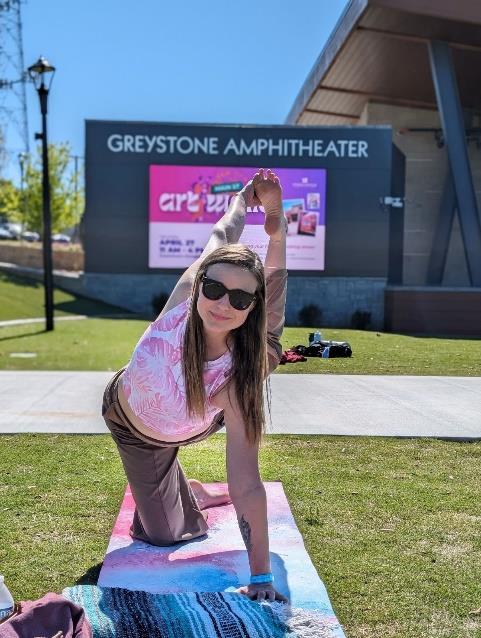
◊ Review existing rental pricing for pavilions, fields, banquet room.
▪ Research other local agencies, both public and private for comparable pricing and rental options.
▪ Comparison of pricing tocity and county recreation departments in Georgia
◊ Add seasonal boating concessions at Hunter Park Lake:
▪ Canoe,Kayak, Paddle board Rentals
▪ Seniors and Adaptive Paddle board
▪ Concession Stand - Temporary in the summer
◊ Marketing Rental Program
▪ Develop marketing tools focused onspecialty facilities for large tournaments, and events such as weddings and showers, graduations, birthday celebrations and more.
▪ Dedicate a “Rental ONLY” webpage with detailed information and pictures, pricing, suggestions for use, who to contact, and options to place a deposit to hold the space online.
ALTERNATE FUNDING SOURCES
West Pines Golf Course
West Pines is a one of the city’s crown jewels. It is a beautiful course, one that rates on a national level for public courses. Although, people also compare it to private courses as well. There are many deferred items that must be taken care of in order for the facility to continue to grow and be successful. Respondents were interested in youth golf programs as well as programs for all ages. The driving range has been completed before this master plan was and its beautiful. There are opportunities to program the course in different ways with special events, evening and weekend events for families and people who are not paid members.
• Consider expanding the pro shop.
• Expand the food that is served
• Research food pricing for golf courses. The food prices comparatively are deemed quite low to other food providers
• A golf course is a wonderful facility to have events on. Think glow-in-the-dark adult egg hunt as example. There are many ways capture revenues.
• Weddings and rentals of specific areas that don’t interfere with play.
• Grants and Sponsorships
• Enterprise Fund-once the debt is paid down for the golf course, an enterprise fund could be created.
Grants, Donations, Corporate Sponsorships
Currently DPRD uses grants donations and sponsorships, however, they must become a priority. Alternate revenue sources must become a priority for operational support by diversifying the department’s revenues. Revenues from various contributions, sponsorships and capital grants should be realized torecreation services and programs and capital projects:
• Development of a Grants, Sponsorship and Donations program.
• Develop a list of programs, services, and facilities where support is needed
• Develop a sponsorship policy with a multi-tiered, multi fee program
• Dedicate resources to actively seek out businesses, organizations and individuals for grants, donations, and sponsorships locally, regionally, and nationally.
• Grantsthroughlocal and national parks and recreation association and businesses (Ex. GRPA, NRPA, Playground Suppliers).
• Land Water Conservation Fund – Georgia DNR Announced Outdoor Recreation Grants
▪ The Statewide Comprehensive Outdoor Recreation Plan (SCORP) statewide blueprint for maintaining and sustaining public outdoorrecreation resourcestomeet the demands of Georgia’s diverse and growing population. The plan, which is updated every five years, keeps Georgia eligible for federal support through the Land and Water Conservation Fund (LWCF). The "Great American Outdoors Act" signed into law in August 2020, permanently guaranteeing full LWCF funding at $900 million a year and provided $8.2milion in grants to Georgia agencies.
Stormwater Agency Partners
Partnerships between park agencies and stormwater agencies (and utilities) aimed at promoting the use of green infrastructure on park lands is a win-win partnership for both the county and the public. Green infrastructure can help to maximize the environmental, economic, and social benefits of parks. By building strong partnerships, agencies can improve park lands and access to parks, better manage stormwater, increase community resiliency to shifting weather patterns, and provide funding to implement, restore, rebuild, or create and maintain parks and park enhancements that benefit the community (EPA ). The entire Riverwalk in Columbus along the Civic Center and South Commons was a stormwater renovation project that the county enhanced with the wider brick surfacing but most of the infrastructure cost was borne by Water and Sewer. Sustainability is and should remain at the forefront in Douglasville:
• Partnership opportunities for fundingto support eroded park areas, and the parks mentioned in this plan prone to flooding (e.g., Fowler Field Park, areas in Hunter Park).
• Park development with water features and a sustainability plan that promotes the revitalization of the community through the enhancement of the park
• Promotes clean water, sustainability, and green jobs to maintain green infrastructure.
• Revitalization of underperforming parks
• Development of new in underserved neighborhoods.
Parks Foundation
A parks foundation is a 501(c)3 non-profit organization that supports the parks and recreation agency with time, expertise, and privately-raised funds. The foundation works closely with the department to raise funds through various means. Business and community leaders and volunteers work together to support the department’s priority projects. 501(c)3’s support of the department, its programs and infrastructure would be of great benefit. The organization and its members are your best advocates. Many playground have been replaced, capital campaigns have had huge successes and parks have been built thanks to our Parks Foundations and their 501(c)3 status. Money for grants and sponsorships can also be captured through this entity which expands the options to attain more support.
Friends of a Park Organization
This nonprofit, also a 501©3, supports a specific park or facility. The board is made up of community and business members who usually have an emotional attachment to a particular site. The Friends group, similar to the Parks Foundation raises funds to support the maintenance, expansion, and programs and events. Friends groups will support the department through volunteerism, fundraising and advocacy with both elected officials and the community.
Public and Private Partnerships
Douglasville has wonderful community partnerships, organizations that have been the foundation of the programs offered to date outside of camps. There are some wonderful private businesses, the YMCA, and the school district where partnerships could benefit every entity involved.
• Seek out partnerships with public and private entities:
▪ Partner with othercities in the county to offer new programs and services and share resources.
▪ Partner with Chamber of Commerce andthe local businesses for program instructors, trips, sponsorships, speakers, mentors.
▪ Douglas County and the City of Douglasville and its residents would benefit from partner programs.
▪ The YMCA offers a variety of programs. Discusspartnership with combinedprograms, shared fees and rates, cross marketing.
▪ Partner with existing 501(c)3’s in the parks systemto develop programming and event opportunities.
▪ Develop booster clubs with volunteers to support the youth athletic programs.
▪ Partner with local associations to offer travel level youth athletic opportunities.
▪ Partnership opportunities with the faith communities for facilities, programs, and sponsorships.
▪ Partner withthe Latino Association to expandknowledge of and servicesto the ESOL community for increased usage by this population.
▪ Partner with the local service organizations and clubs to provide a Free Family Health/Wellness Fair for the community.
▪ Partner with the early childhood organizations within the community to research recreational needs of said age group.
▪ Develop relationships with the local hotels/motels to establish discounted rates for your tournaments or for any outside organizations renting the facilities for a tournament. Market an entire package in the rental policies for discounts at local venues, restaurants and hotels.
▪ Partner with landscaping companies and organizations to “adopt” a certain area of a park for maintenance and beautification (volunteers and donated supplies). Establish discounts on supplies purchased by DPRD. Advertise their organization.
▪ Developa large special event sponsored by the realtors. Can be a fundraiser or community event.
▪ Utilized tiered level sponsorship package to engage community businessesin programs and services.
▪ Establish a formal School/Park Agreement for mutual and reciprocal joint use to meet the needs of the youth and families in the community including but not limited to afterschool and weekend use of fields and indoor facilities.
▪ A Positive Partnership with Douglas County Senior Services could be beneficial to Douglasville’s Active Adult.
Chapter eleven


CAPITAL IMPROVEMENT PLAN
Photo courtesy of Homes for Hope
THIS PAGE INTENTIONALLY LEFT BLANK
INTRODUCTION
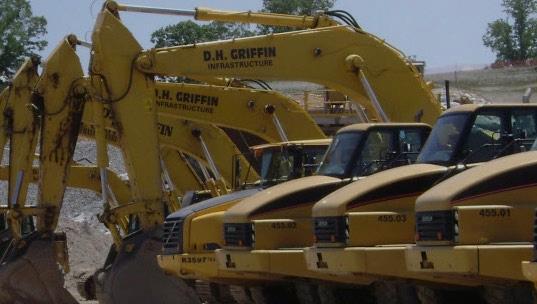

As with any parks and recreation department, the planning and implementation of capital improvements for Douglasville are critical to the execution of its service delivery to the community. The Park Classifications and Service Criteria section findings suggests multiple proposed investments in facilities to address current and future community needs. The development of a TenYear Capital Improvement Plan (CIP) provides a guide for the City to strategically implement these recommendations over the next decade.
In response to these recommendations, a ten-year capital spending plan is provided, which defines costs for recommended improvements to existing and proposed parks and park facilities. The Department will have to provide additional facilities to meet citizen needs and improve service delivery where not adequately provided. Additionally, the community has identified a need to renovate and enhance existing facilities to establish a level of quality that is consistent with community expectations. The need for capital investment corresponds with an identified need to invest in existing park and recreation facilities to improve the quality of service, foster a sense of community, and enhance the overall health of residents.
The recommended funding distribution for these projects is presented in three prioritization levels or tiers. Tier 1 is generally intended to address immediate needs, such as ADA access improvements, general safety renovations, urgent renovation projects, addressing deferred maintenance, and planning efforts for upcoming projects. It also includes short-term facility expansion to existing park properties. Funding shown in Tier 2 is for the development of new facilities that are currently in the planning stages as well as large expansion projects for existing parks and initial phase development of new park facilities. Tier 3 projects have been identified as long-range expansion projects that will require significant funding to address community needs for the second half of the planning period. The capital improvement budgets shown are recommendations from the planning team based on experience with similar scale projects in the region.
TEN-YEAR SPENDING PLAN
This capital improvement plan identifies approximately $31,650,000 million in existing facility renovations and deferred maintenance All items listed below are broken down in the Strategic Implementation Plan located in Chapter 12.
A proposed parks and facilities section captures the proposed future park opportunities as well as the indoor aquatic center. This section identifies an additional $32.4 million for new parks and future amenities. All items have been placed into Tier 1, Tier 2, and Tier 3 categories that addresses and balances immediate need items and long range planning, while capturing future facilities in a “future’ column. However, this document is fluid; thus, the demands and needs of the community, its demographics and increasing population or funding opportunities may necessitate items be moved to earlier Tiers with capital projects starting earlier than anticipated. It is recommended the city review this plan at least every 5 years.
CAPITAL IMPROVEMENT FUNDING
The City should consider a combination of funding resources, which includes increasing revenues, considering utilization of special taxes, and securing grants and private funding to meet the capital improvement goals identified in this report. The combination of these funding sources would increase the ability to make identified improvements.
Many funding sources are available that the City should consider for funding capital improvements of parks and recreation facilities. While this document lists the following as options to consider, local leaders must decide which options best suit local needs. Historically, the main sources of capital funding for parks and recreation agencies in the state of Georgia are:
• General Fund Tax Dollars
• Dedicated Millage
• General Obligation Bonds
• SpecialLocalOptionSalesTax(SPLOST)
• Impact/Development Fees
facilities while spreading the facility cost over an extended period.
The use of a bond program would be a viable option to initiate a major capital program for parks and recreation facilities. The City could initiate a bond to fund a portion of the capital projects outlined in this master plan. The bond would be paid back by the City over a 20- or 25-year period and would allow the City to begin to meet the facility needs of the community.
SPECIAL LOCAL OPTION SALES TAX (SPLOST)
Sales taxes are applied to almost everything that is purchased as a good or service. The implementation of a Special LocalOption Sales Tax program couldsupport theDPRD capital funding needs over a period offour years. Funding through this program would
• Tax Dollars from Special Excise taxes (such as hotel, liquor, food, and rental taxes)
• Tax Increment Funding (TIF)
• Stateand Federal Grants
GENERAL FUND TAX DOLLARS and DEDICATED MILLAGE
These options offer stable funding for parks and recreation departments to cover operational costs, and some capital improvements associated with routine maintenance projects or minor renovation projects. In general, these funding sources may not support larger projects unless leveraged with larger funding programs.
GENERAL OBLIGATION BONDS
Communities across the country fund capital projects using general obligation bonds to build public
be shared between residents and visitors alike, with the opportunity for increased revenue generation as economic development initiatives continue to be implemented.
IMPACT/DEVELOPMENT FEES
Impact fees are payments required by local governments of new development for the purpose of providing new or expanded public capital facilities required to serve that development. The fees typically require cash payments in advance of the completion of development, are based on a methodology and calculation derived from the cost of the facility and the nature and size of the development, and are used to finance
improvements offsite of, but to the benefit of the development.
The State of Georgia allows communities to impose and collect impact fees to defray the capital costs of public facilities related to residential development. Such fees can only be used by the City for public facilities that are impacted by residential development.
TAX DOLLARS FROM SPECIAL EXCISE TAXES
Many communities across the country are incorporating lodging taxes to pay for tourismrelated programs, including parks and recreation improvements. This method is typically popular because it typically places the cost on visitors and not residents. Other communities have implemented, or are considering instituting, a lodging tax to fund future capital improvements that may lead to increased tourism. Silverthorne, Colorado, for example, passed a 2% lodging tax in 1999. Total collections have been divided: 85% going towards capital projects relating to parks, trails, open space, and recreation and 15% to help market the Town of Silverthorne and its amenities. Other communities from Washington to Texas have adopted similar funding measures that have helped develop large-scale recreation facilities that have attracted more visitors.
TAX INCREMENT FUNDING (TIF)
Also known as a Tax Allocation District (TAD), a TIF is a tool for redevelopment. It is a local government financing technique that can be utilized to finance projects designed to stimulate private sector investments which otherwise may not have been feasible. The city or City will then designate an area or areas for redevelopment. It uses increases in property taxes (called “positive tax increment” in Georgia) in a specific area to pay the costs of redeveloping the area. TIF allows a local government to reinvest all new incremental property tax dollars in the neighborhood from which they came for a prescribed period of time. TADs have been utilized or planned in DeKalb City and the cities of Atlanta, Macon, College Park, East Point, Marietta, Acworth, and Smyrna. Athens-Clarke City successfully adopted 6 TADS in 2020. The City focused a portion of the
funds toward bike and pedestrian facilities, parks, and greenspace, collaborating with youth support providers, including the Clarke County School District to create optimal spaces for youth development and support of School District needs. This allows DPRD to work with the City on projects where pocket parks, greenways, neighborhood and community parks and amenities could be realized.
STATE AND FEDERAL GRANTS
Grant programs for parks and recreation improvements are available through various stateandfederal agencies. Many state agency grants allocate federal dollars for projects such as transportation enhancement grants, trails and greenways, and parks improvements. Grants are also available through non-profit and not-for-profit agencies. Because grants are typically highly competitive, any pursuit to acquire grant funding should begin with an understanding of the grant requirements, including matching fund requirements, understanding what the grant will and will not cover, the time frame for completion, and what obligations may be required in the future, such as deed restrictions, maintenance and reporting.
A few examples of grant funding sources include the following:
• Transportation Grants /SAFETEA-LU
• Transportation Enhancements (TE)
• Recreational Trails Program
• Community Development Block Grants (CDBG)
• Environmental Education Grants
• Land and Water Conservation Fund
TRANSPORTATION GRANTS/SAFETEA-LU
The Safe, Accountable, Flexible, Efficient Transportation Equity Act: A Legacy for Users (SAFETEA-LU) provides funds for various transportation projects, including greenways and trails. Built upon the foundations of the Transportation Equity Act for the 21st Century (TEA-21), SAFETEA-LU was signed into law in August 2005.
TRANSPORTATION ENHANCEMENTS (TE)
The Transportation Enhancements (TE) program funds a wide variety of transportation related community projects.
for trails and related facilities. Transportation Enhancement projects must relate to surface transportation and competeagainst numerous other projects. Greenways and other recreational trails are eligible for TE funding,if the project has a transportation element being funded.
There are 12 eligible Transportation Enhancement categories. The three that most relate to greenways and recreational trails are: pedestrian and bicycle facilities; pedestrian and bicycle safety and educational activities; and conversion of abandoned railway corridors to trails. These grants are 80% federal and 20% local funding. Therefore, the City receives $4.00 for every $1.00 invested.
RECREATIONAL TRAILS PROGRAM
This program was initiated through the TEA-21 legislation. Funds are awarded for the construction of trails and support facilities. Emphasis is on the construction of multi-use trails such as biking, hiking, equestrian, motorized, etc.
COMMUNITY DEVELOPMENT BLOCK GRANTS (CDBG)
Although this program specifically funds housing, public facilities, economic development and community projects, recreation couldbe a minor component of the project seeking grant funding. The Citymay explore how to use these funds for recreation related improvements that are applicable in these areas.
ENVIRONMENTAL EDUCATION GRANTS
This program is sponsored by the Environmental Protection Agency's (EPA) Environmental Education Division (EED), Office of Children's Health Protection and Environmental Education. The program supports environmental education projects that enhance the public's awareness, knowledge, and skills to help people make informed decisions that positively affect environmental quality. The EPA awards grants each year based on funding appropriated by Congress. Annual funding for the program ranges between $2 and $3 million. Most grants awarded will be in the $15,000 to $25,000 range.
LAND AND WATER CONSERVATION FUND
Since the mid-1960s, the Land and Water Conservation Fund (LWCF) program has provided funds for outdoor recreation acquisition and development. Congress is responsible for setting the funding level each year. Should the Commonwealth receive funds from the federal government, this would be another useful source of funding for the City.
ALTERNATIVE FUNDING SOURCES
In addition to the traditional sources listed above, there are multiple alternative funding sources that are available to communities for supporting recreation programs and facilities. Some examples of these sources are as follows.
STORMWATER AGENCY PARTNERS
Partnerships between park agencies and stormwater agencies (and utilities) aimed at promoting theuse of green infrastructure on park lands is a win-win partnership for both the City and the public. Green infrastructure can help to maximize the environmental, economic, and social benefits of parks. By building strong partnerships, agencies can improve park lands and access to parks, better manage stormwater, increase community resiliency to shifting weather patterns, and provide funding to implement, restore, rebuild, or create and maintain parks and
park enhancements that benefit the community (EPA). The entire Riverwalk in Columbus along the Civic Center and South Commons was a stormwater renovation project that the City enhanced with wider brick surfacing but most of the infrastructure cost was borne by Water and Sewer. This aligns with the sustainability portion of Douglasville’s strategic plan.
PARKS FOUNDATION
A parks foundation is a 501(c)3 non-profit organization that supports the parks and recreation agency with time, expertise, and privately-raised funds. The foundation works closely with the department to raise funds through various means. Business and community leaders and volunteers work together to support the department’s priority projects.
FRIENDS OF A PARK ORGANIZATION
This nonprofit supports a specific pard. The board is made up of community and business members who usually have an emotional attachment to a particular site. The Friends group, similar to the Parks Foundation raises funds to support the maintenance, facility expansion, programs and events. Friends groups will support the department’s events and also develop their own events as fundraisers.
PUBLIC AND PRIVATE PARTNERSHIPS
Douglasville Parks and Recreation Department should look toward possible partnerships with adjacent cities and Douglas County to leverage opportunities that will provide recreational benefits to both city and county residents, eliminating duplication of services when applicable or viable or expanding services in a fiscally responsible way. Additionally, the City should seek out opportunities to collaborate with private organizations, such as the YMCA, and local churches and businesses in Douglasville and its surrounding communities.
SUMMARY
The identified capital improvements needed to address the current needs of the parks system for Douglasville is $31,650,000. Accomplishing this goal will require a balanced approach to acquiring additional funding sources for land acquisition, planning and design, and development. Alternative funding sources will likely be required to execute this program. The City should look for opportunities to use fees, grants, and lodging taxes for additional recreation funds to support future development. Additionally, there appears to be public support for dedicated funding of parks improvements. With dedicated leadership and a unified vision, Douglasville Parks and Recreation Department can accomplish the physical improvements discussed in this master plan.


Chapter twelve STRATEGIC IMPLEMENTATION PLAN

This Comprehensive Parks Master Plan is a long-range, 10-year plan for the City of Douglasville Parks and Recreation Department. It assesses and provides recommendations regarding parks, facilities, operations, programming and budgeting. The plan also benchmarks the city’s parks and recreation delivery to other communities. The strategic implementation of the plan’s recommendations will guide the city in achieving the community’s desires for the parks and recreation system, and address deficiencies and goals for the delivery of parks and recreation services to the residents of Douglasville.
The recommendations are intended to guide the city over the next 10 years. A priority level is assigned each recommendation as high, medium and low priority, along with a time frame for implementation. The Strategic Implementation Plan should be reviewed annually, so that the Parks and Recreation Department can identify achievements but also consider any changes that may occur in the community which need to be addressed. This Comprehensive Parks and Recreation Master Plan should be re-visited every five years, and any applicable updates should occur at that time.
The plan’s format can be used as a checklist for the department over time. Several items are in progress currently or have been completed and are indicated as such.


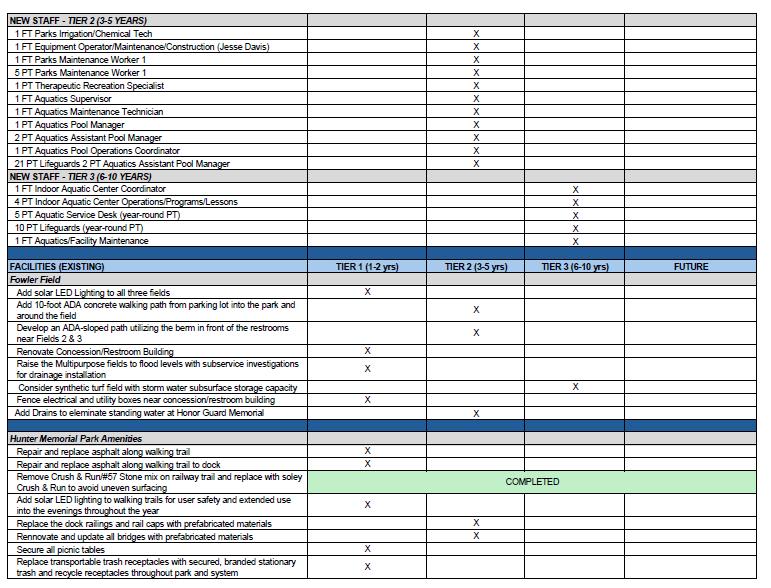

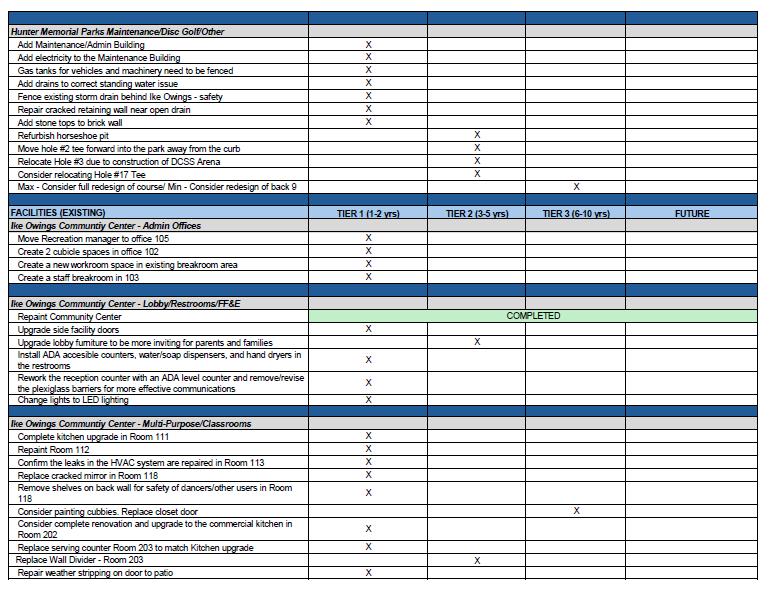


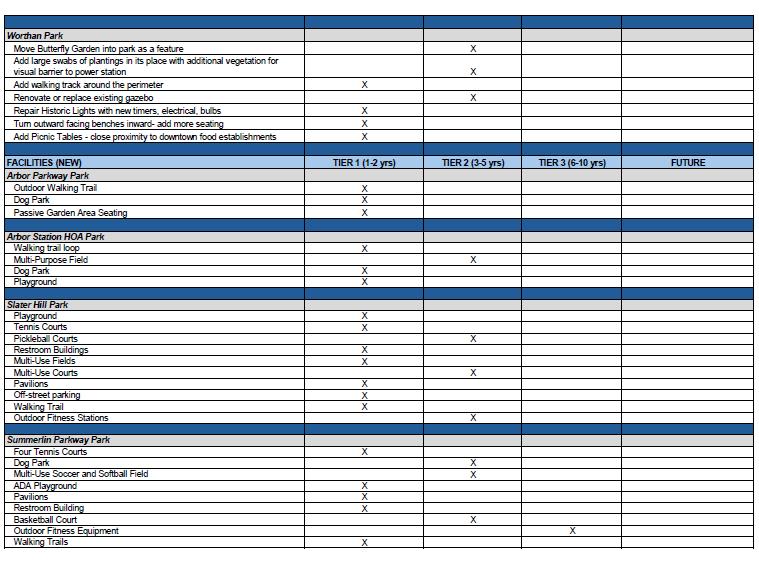
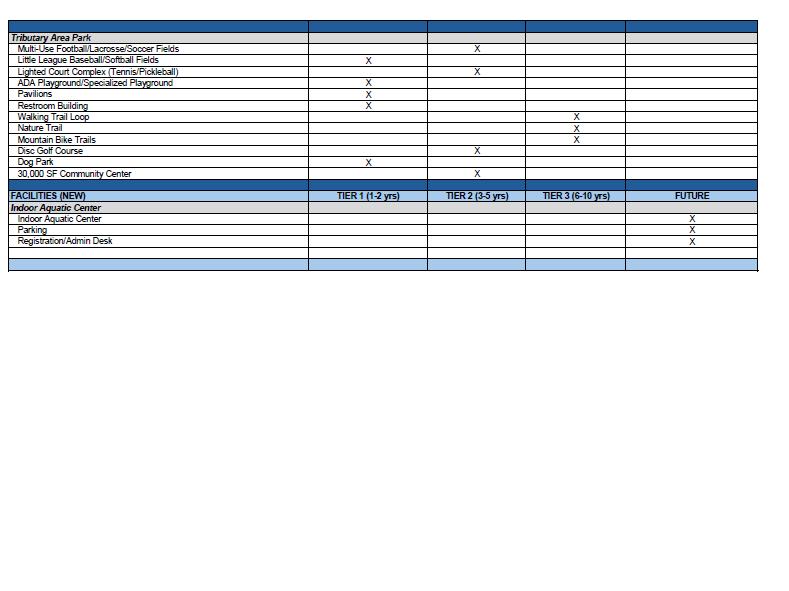
THIS PAGE INTENTIONALLY LEFT BLANK

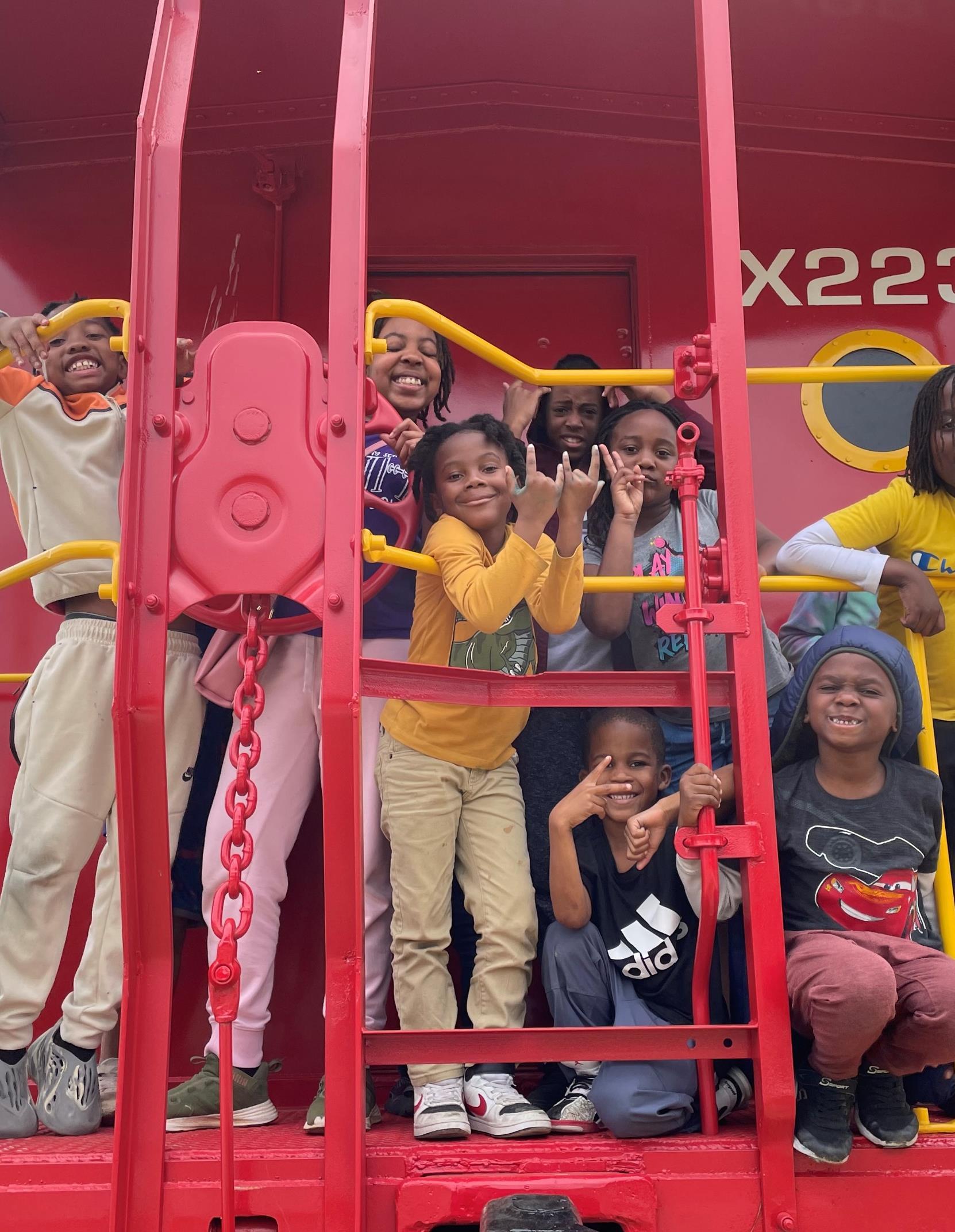
Chapter thirteen Appendix
Appendix

A.1: Works Cited
1. American Community Survey: www.census.gov
2. www.citydata.com
3. City of Gainesville, GA Budget/Staffing Documents
4. City of Smyrna, GA Budget/Staffing Documents
5. City of of Garner, NC Budget/Staffing Documents
6. City of Douglasville Comprehensive Master Plan 2018
7. County Health Rankings and Roadmaps www.countyhealthrankings.org
8. National Recreation and Park Association 2023 Agency Performance Review
9. National Recreation and Park Association 2024 Agency Performance Review
10. US Census Bureau. www.census.gov
11. City of Douglasville. History.
12. Lisa Land Cooper, Every Now & Then. Douglasville History.
13. Josh Green, Urbanize. Douglasville History.
14. The Patch, Douglasville. Douglasville History.
15. NRPA CAPRA Standards.
16. Governor’s Office of Planning and Budget. Population.
17. Americans with Disabilities Act.
18. CDC and City Health Rankings.
19. BerryDunn Proforma. Program Trends.
20. National Federation of State High School Associations. Program Trends.
21. Sport and Fitness Industry Association. Program Trends 2023.
A.2: Public Input Results




PublicInput
•1PublicInputMeeting
•HunterPark(December7,2023)
•Approx.23participants
•1DouglasvilleEvent
•FallHarvestFestival(October28,2023)
•Approx.187participants
•1PartnerCommitteeMeeting(February5,2024)
•9participants
•1AdvisoryCommitteeMeeting(February8,2024)
•7participants

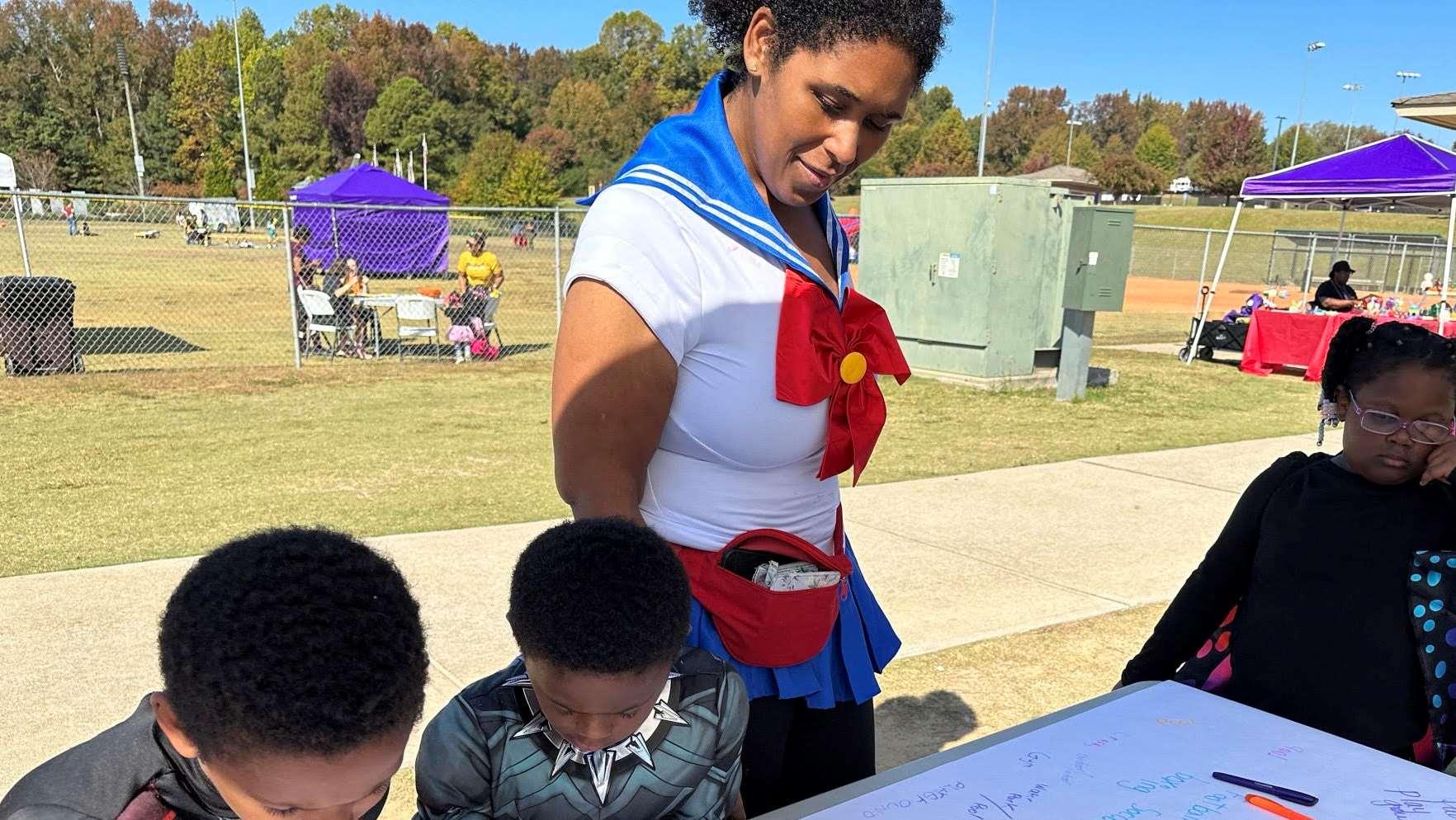


Advisory&PartnerCommitteeInput-Programs
•lacrosse
•soccer
•Jr.golf
•flagfootball
•adultkickball
•adultsoftball
•adultvolleyball
•adultdodgeball
•tennis&pickleball leagues
•beachvolleyball
•teenprogramsacrosscity
•seniorprogramexpanded
•competitionswimming
•lapswimming
•wateraerobics
•adult/senioryoga
•artprograms
•performingarts-kidstoseniors
•musicalproductions
•workingadultprogramsofferedeveningand weekend
•tennis
•pickleball
•Kidsgolf
•E-sports
•STEAM/STEM
•enrichmentprograms
•SocialClubforAutisticAdults
•PartnershipwithDCSeniorServicesfor programs/activities/trips
•PartnerwithVolleyball/BasketballwithCounty
•youngprofessionals/youngadults-socialnetworking club
•AffinityGroups
•Coordinationofprogramsforallagesattending concurrently
•Outsideprogramstakingoverservicesfrompark
Advisory&PartnerCommitteeInput-Marketing,Misc.
•SocialMedia-Marketing
•60andabovenoSocialMedia
•RegistrationStaff:
•lackofprogramknowledgeacrossdivisions andlocations
•Newmarketingstrategies
•IncreaseGolfCoursepromotion
•Marketing-notknowingwhatis goingonateachpark:
•whatprogramsareavailable
•wheretogoforaprogram
•wheretoregisterfora program
•noneforadaptive community
•E-bikesandScooters
•Parksecuritynegativeperception
•cannothandlesituations
•sleepingonjob
•notnicetoteens
•Multi-childfamilyfees
•Non-residentfeesatGolfCourse
•alcoholintheparks
Advisory&PartnerCommitteeInput-Facilities
•CommunityWalkingTrails
•Multi-useTrails-walking,biking
•Lightingatallparks
•Lightingoftrails
•HunterParkUpdate=JesseDavisPark
•PickleballCourts
•TennisCourtsatotherparks
•IndoorGymatHunter
•SplashPadatHunter
•Enclosedplaygroundareaforadaptivekids
•DogParks
•SkateboardPark
•BMXPark
•SkatingRink-allethnicities
•TherapeuticPool
•Auditorium
•Natatorium
•OutdoorWaterparkwithSlides
•LightsatFowler
•ParkingatFowler
•SandVolleyballCourts
•OutdoorVolleyballcourts
•GymnasticsFacility
•2ndrestroomonbackendofGolfCourse
•SkateboardPark
•BMXPark
•SkatingRink-allethnicities
•TherapeuticPool
•Auditorium
•Natatorium
•OutdoorWaterparkwithSlides
FACILITIES0-2YEARS
•BaseballFieldstoTurf
•FowlerFieldupdate
•LightsaroundHunter Trail/Lake •Trails
FACILITIES3-10YEARS
•AquaticCenter •GymnasiumHunter-Indoor •LegacyStadium-Partnership
•NewPark-TributaryWard5
•NewPark-ArborStation •NewPark-ChapelHill
NEWPARKS
Location/NameVotes
ArborStationArea75
TributaryArea29
Total104
ParkFeatures FeatureVotes
DogPark105
AfterSchoolYouthPrograms122
Walk/biketrailsConnectingParks121
BeginnerGolf50 SoccerComplex53
SkatePark83 Total534
ParkUpdates UpdateVotes FowlerParkWalkingTrail94
Pickleball/TennisCourts10 Total104 WhereAreYouFrom? RegionVotes Douglasville139 Otherareas48 Total187
PublicInput
•SocialPinpoint (web)
•OnlineSurvey
•MappingExercise
•249SurveyResponses (closed2/18/2024)

Q1:InwhichCityorCountydoyoureside?






















Q2:Inthepastyear,haveyouutilizedanyoftheparksorrecreationalfacilitiesowned
Q3:Inthepastyear,whichofthefollowingparksorrecreationalfacilitiesownedand
Q10:Ingeneral,overthepastyear,howfrequentlyhaveyouvisitedaDouglasville parkorrecreationalfacility?








45%ofrespondersare activeintheparksatleast onceaweek. 25%frequenttheparks andfacilitieslessthan2-3 timespermonth.
Q4:HowwouldyouratetheconditionofDouglasvilleparksorrecreationfacilities?
68%ofrespondersrate
Douglasville’sparksor facilitiesaseither“veryhigh quality”or“highquality”
26%ofrespondersrate
Douglasville'sparksor facilitiesaseither“low quality”or“verylowquality”

Q5:Onascaleof1-5(1beingthelowestand5beingthehighest)howwelldoyouthinktheDouglasville ParksandRecreationDepartmentmeetstheneedsofthecommunityforParks&Parkland.
Q5:Onascaleof1-5(1beingthelowestand5beingthehighest)howwelldoyouthinktheDouglasvilleParks andRecreationDepartmentmeetstheneedsofthecommunityforYouthRecreationPrograms&Activities.
Q5:Onascaleof1-5(1beingthelowestand5beingthehighest)howwelldoyouthinktheDouglasvilleParks andRecreationDepartmentmeetstheneedsofthecommunityforWalking/BikingTrails.
Q7:DoyoutraveloutsideDouglasvilletousefacilitiesprovided
Q8:Doyouuseanyofthefollowingalternativeparkand recreationproviderstomeetyourrecreationalneeds?
Q11:Howfarwouldyoubewillingtowalktoaparkifsafemulti-usetrails,sidewalks


Programand
FacilitySummary
60%ofthetop25preferredrecreationopportunitiesincludedIndoorgeneral recreation,visualandperformingarts&fitnessprogramsandfacilityneeds:
•IndoorWalkingTrack(5thHighestFacility)
•PerformingArtsCenter,DanceStudio,Dance/TheatreClasses(2ndHighestProgram), MusicClasses
•CookingKitchen,CookingClasses(3rdHighestProgram)
•ComputerLab,ComputerClasses
•IndoorFitnessRoom,Weightroom,FitnessClasses,SilverSneakers
•Gymnasium,IndoorCourts,VolleyballLeague,BasketballLeague
•VisualArtsStudio,ArtsClasses,Pottery,Photography
•GeneralPrograms:Before/Afterschool,SummerCamps(5thHighestProgram),Robotics, Gymnastics
•SeniorCenter,SeniorLeisurePrograms
22%ofthestatedneedsincludedOutdoorRecreationFacilitiesandPrograms:
Trails&Greenways(2ndHighestFacilities)
OpenGreenspace
Playgrounds(4thHighestFacilities),PicnicPavilions,DogParks
NatureCenterandNatureprograms
IndoorRecreationPrograms,Education
IndoorFitnessCenter,Gymnasium,Track
VisualandPerformingArtsProgramsandFacilities
AquaticProgramsandFacilities
Nature;Outdoor;AdventureProgramsandFacilities
PassiveParks
ActiveParksandPlaygrounds SpecialEvents
CommunityGardens
Run/WalkGroups,SkateLessons/Tournaments,Canoe/KayakLessons
12%encompassedWaterRecreationincludingthehighestRatedFacilityand Programneeds:
OutdoorWaterParkandFamilyLeisureSwim/Play(HighestRatedFacility&Program)
SplashPad(3rdHighestFacility)
SwimLessons/Education(4thHighestProgram)
TherapyPool
WaterFitness
6%mentionedSpecialEvents
SpecialEvents/Festivals,5K/10KRaces,CulturalPrograms
Q15:Pleaseindicateifyoustronglyagree,agree,disagree,orstronglydisagreewiththe followingstatement…"Iwouldbewillingtopaymoretoimprovethequalityoffacilities andprogramsprovidedbytheDouglasvilleParksandRecreationDepartment."
•52%ofrespondents wouldsupportspending moretoimproveparks andrecreation
•33%ofrespondentsare opposedtospending moretoimproveparks andrecreation

Q16:TosupportimprovementstoDouglasville’sparkandrecreationalfacilitiesand services,howmuchonaveragewouldyourhouseholdbewillingtopayonamonthlybasis forsuchfacilitiesandservices?
$25to$50permonth
•49%ofrespondentswouldsupportpayingupto$15/monthfor improvements
•2024estimatesshowthatFairburnhas13,792households.This represents$2,482,560ofadditionalsupportperyear.
Q17:DoyoucurrentlyliveinsideoroutsideofthecitylimitsofDouglasville,GA?
Q18:Whichofthefollowingcategoriesdescribesyourage?

NumberofPersonsperHousehold(ByAge)








Q22:Howmanychildrenlivingathomedoyouhaveineachofthefollowingage groups?
0to4yearsofage
•26%ofrespondentshavechildrenpreschoolageoryoungerchildrenintheirhomes
•39%ofrespondentshaveelementaryschoolagechildrenintheirhomes*
•35%ofrespondentshavemiddleorhighschoolagechildrenintheirhomes*
*Therewere477responsescombinedinthesecategories
Q23:AreyouofHispanic,Latino,orofSpanishorigin?
Q24:Whichofthefollowingbestdescribesyourethnicbackground
Q25:Whichofthefollowingbestdescribesyourhousehold’stotalincomein2023?
$75,000-$100,000
$50,000-$75,000
$35,000-$50,000
$20,000-$35,000
Under$20,000
Question26askedrespondentstoprovideanyadditionalcommentsaboutDouglasville'sparks,facilities, programsorfunding.Commonthemesinclude:
•NeedforbetterWalkingTrails
•NeedforBikingonlytrails
•NeedforShadeStructuresforPlayAreas
•NeedforseparatePlayAreasforyoungerchildren
•Moreactivitiesforteensandyoungadults
•NeedforParkImprovementsatthesameleveltoallparks/facilities
•NeedforDogParks
•NeedforAdultPrograms/Activities
•NeedforPrograms(nature)forchildrenages2-4yrs.
•Moregrowth/supportforDiscGolf
PublicInputSummary
•ResidentsaregoingoutsideoftheCity’sparksandfacilitiesforrecreationneeds.
39%duetofacility/parkconditions,safety,limitedhoursofoperations
32%lackawareness
•Needforwalkingandbikingtrailsandgreenways.
•Thereisaneedforadditionalprogrammingforallagegroups.
•WaterrecreationisveryimportantbutthenewfacilityatJesseDavismaynotaccommodate theservicegapareasofthecityorthedesiredprograms.
•Additionalplaygroundsforvariousagesandabilitiesthroughoutthecity.
•Opportunitytoimproveexistingfacilitiestobettermeetcommunityneeds.
•Thereisstrongsupportinthecommunityforimproving/expandingtheCity’sparksand recreationfacilities.
•Additionalparksandfacilitiesneededinthecitytomeetcommunityneedsinserviceareagaps.
•Accesstoparksandrecreationbywalkingandcyclingisdesired.
OtherConsiderationsforPlanning
•NewParkLocations
ArborStationArea
TributaryArea
•FencedDogPark
WorthanPark,HunterPark
•TrailsandGreenways
ConnectingNeighborhoodstoParks
•PickleballCourtComplex
HunterPark,FutureParks
•GymnasiumAdditiontoIkeOwing
IndoorTrack
•SplashPadElement
HunterPark
•AdditionalPlaygrounds
Citywideadaptive,0-23mos.,2-5yrs.,5-12yrs.,13+
•DiscGolfCourseRedesignatHunterPark
Back9arespreadout,someteesareclosetoroad andpeople
•UpgradeBaseballComplex
HunterPark
•AdministrativeOffices
ToremovestafffromClubDriveandopenstaffoffice spaceatHunter
•ConnectionbetweenHunterParktoHunterParkAthletic Fields
Drivable/Walkable
